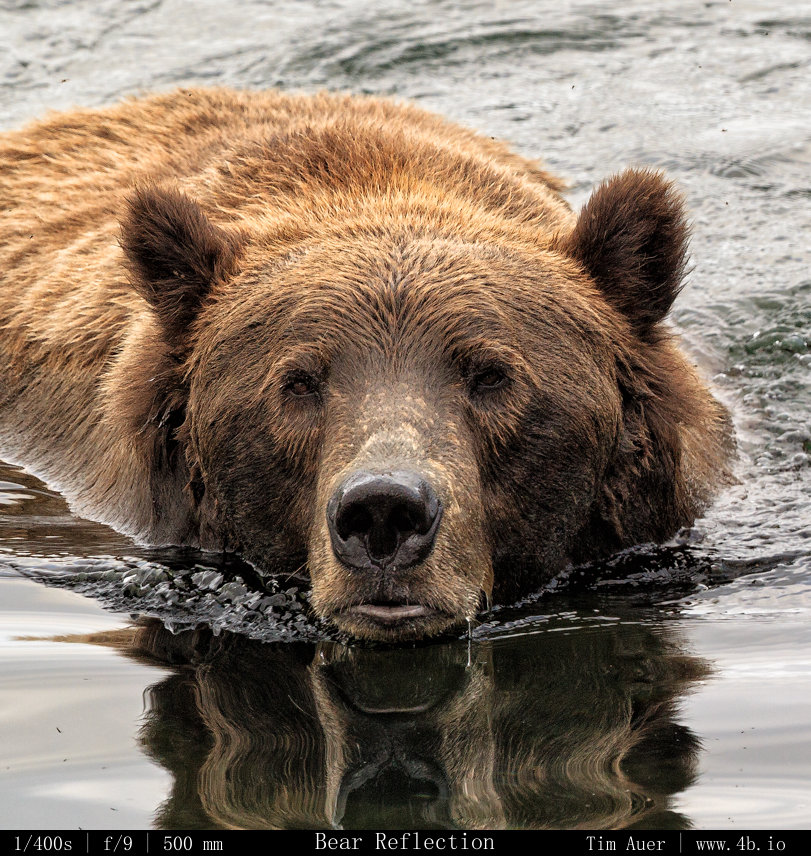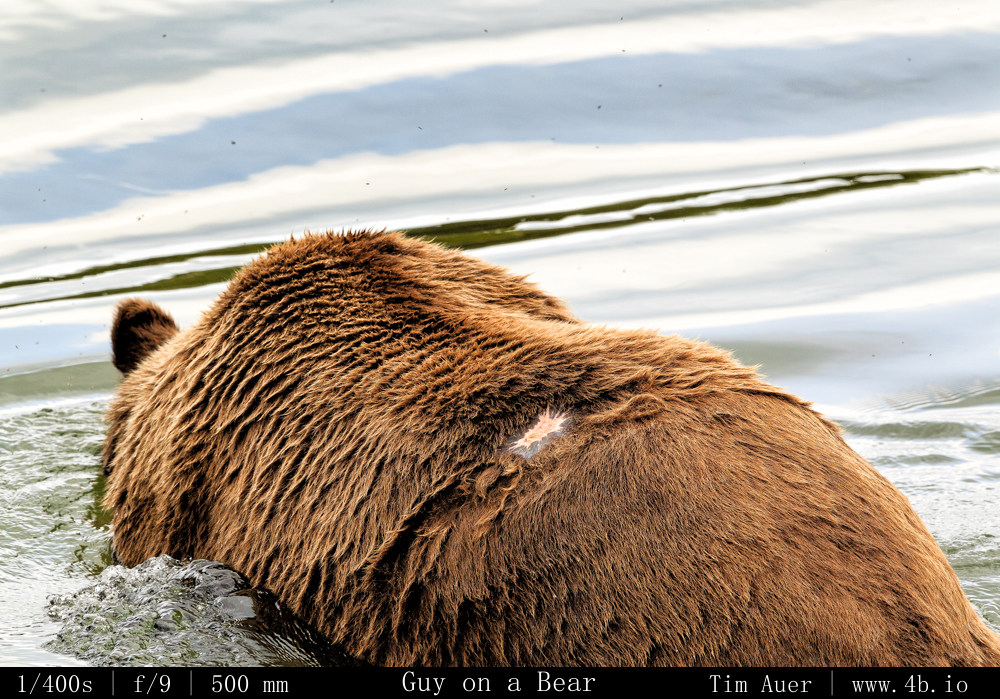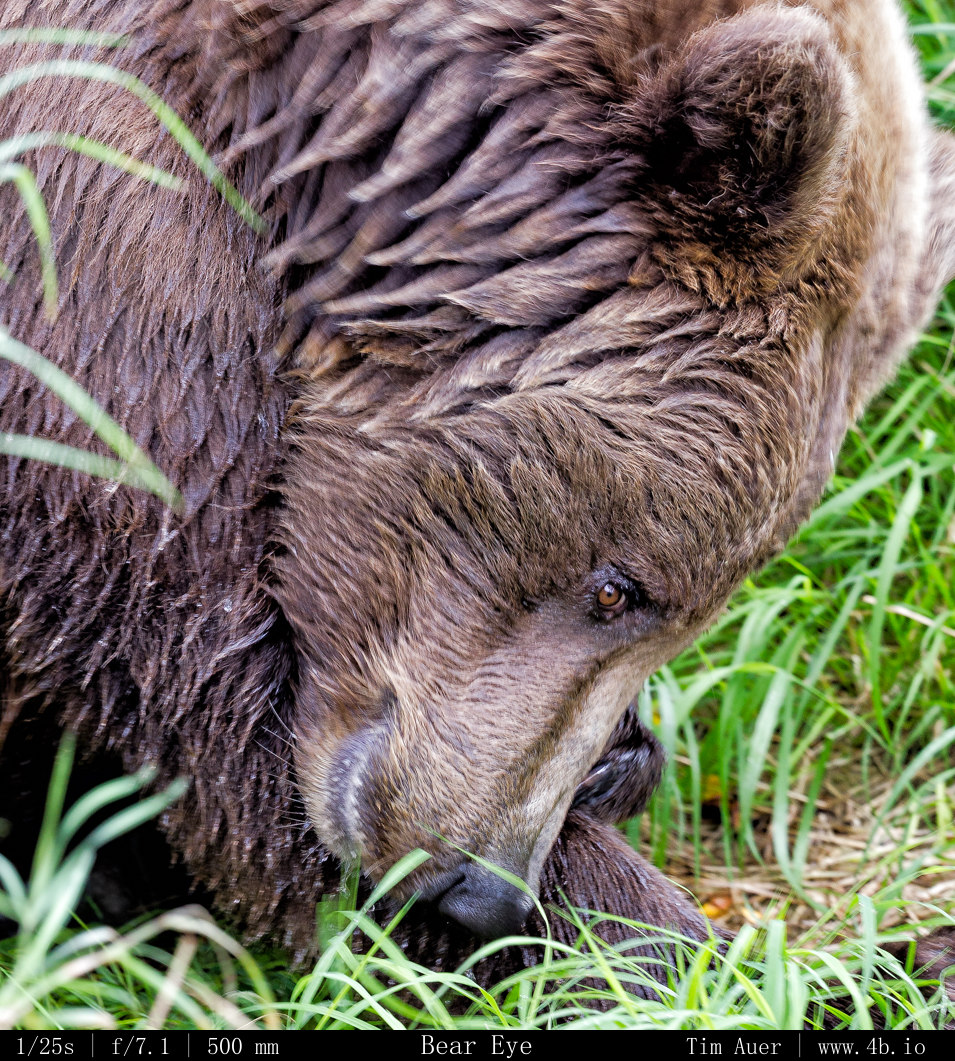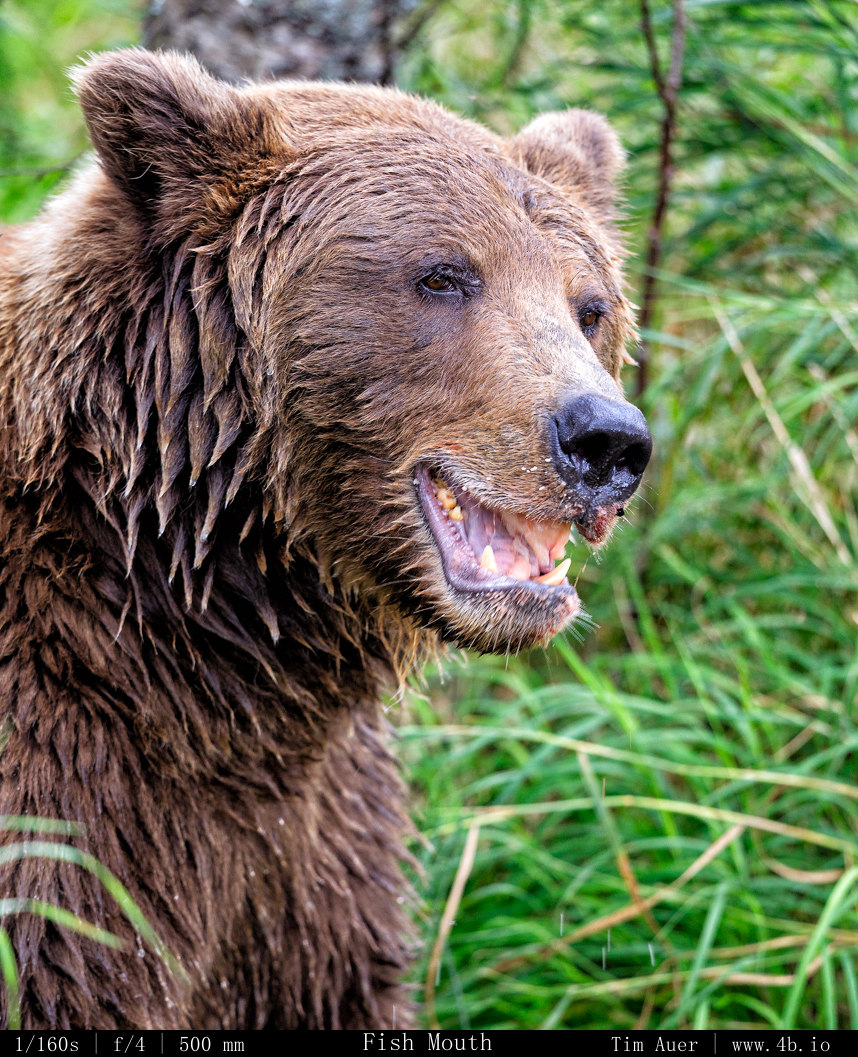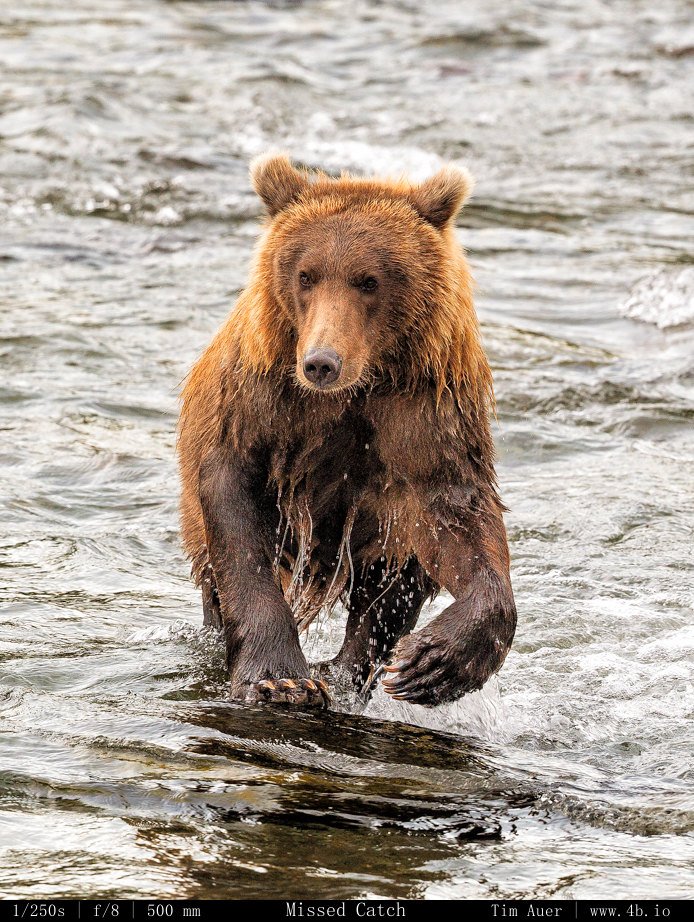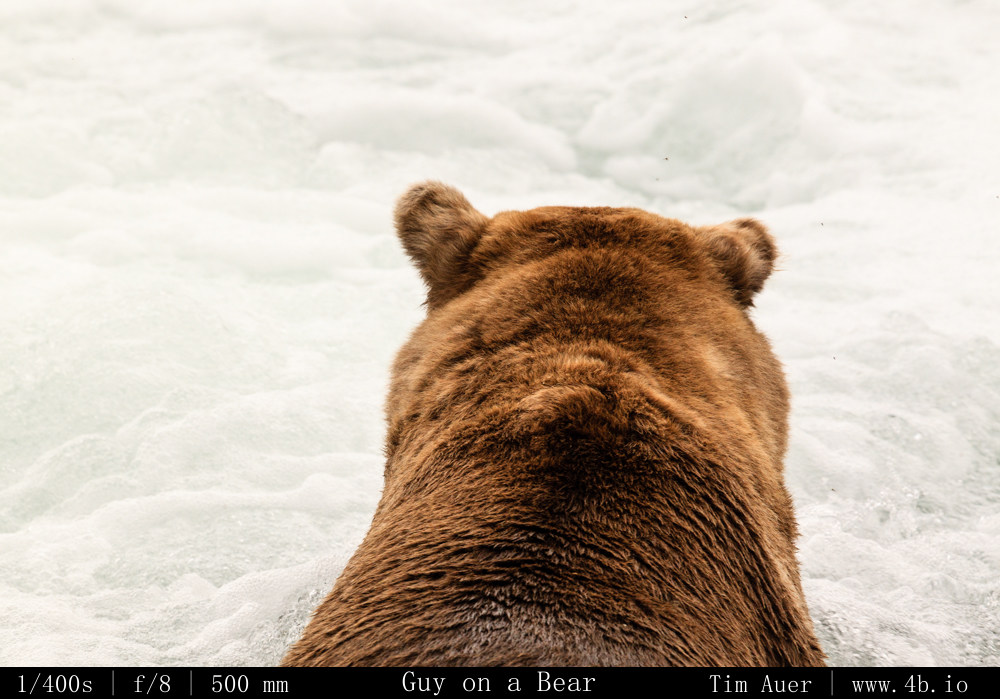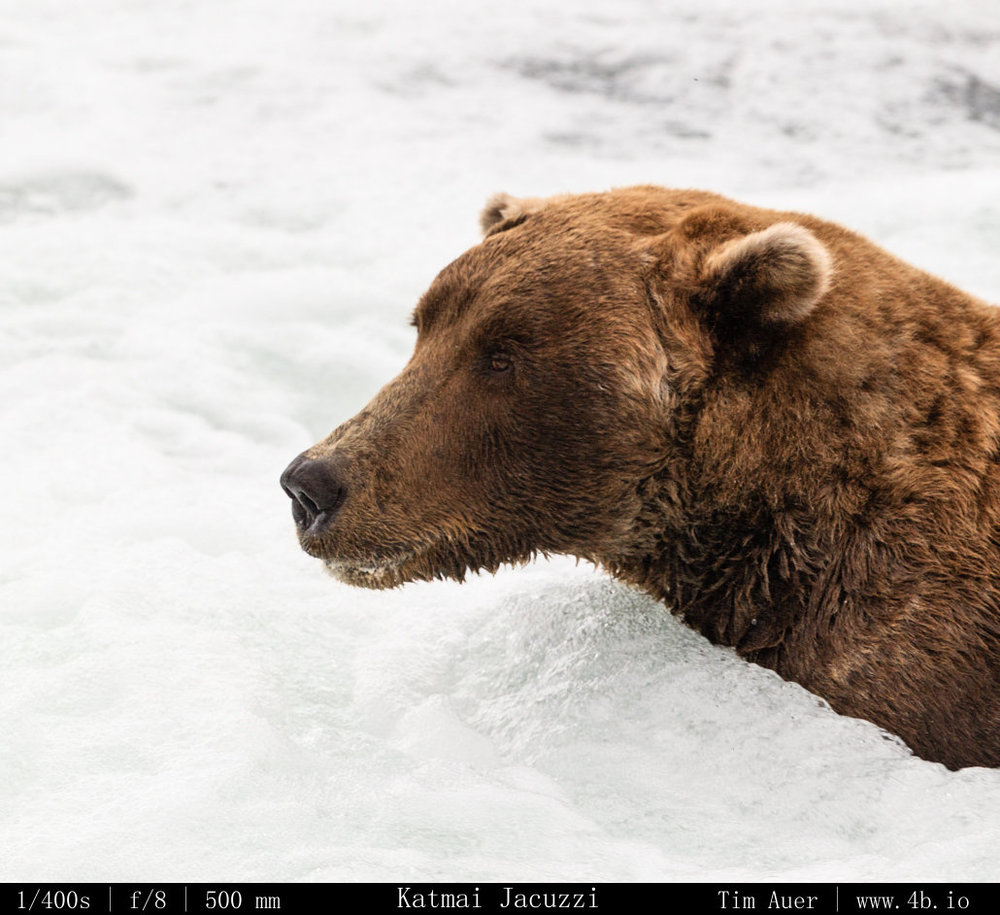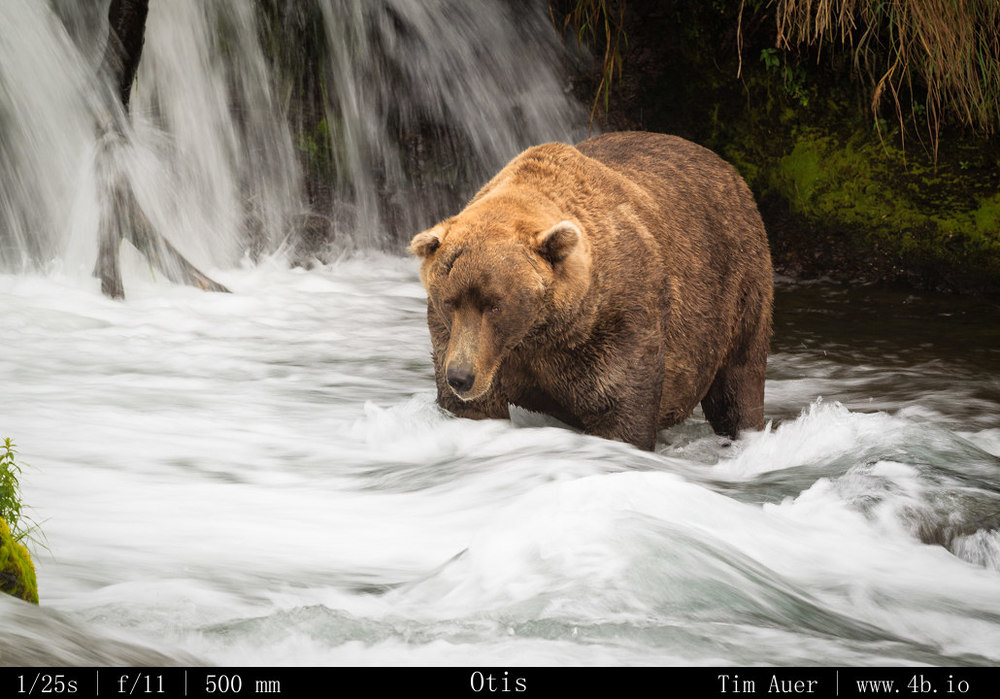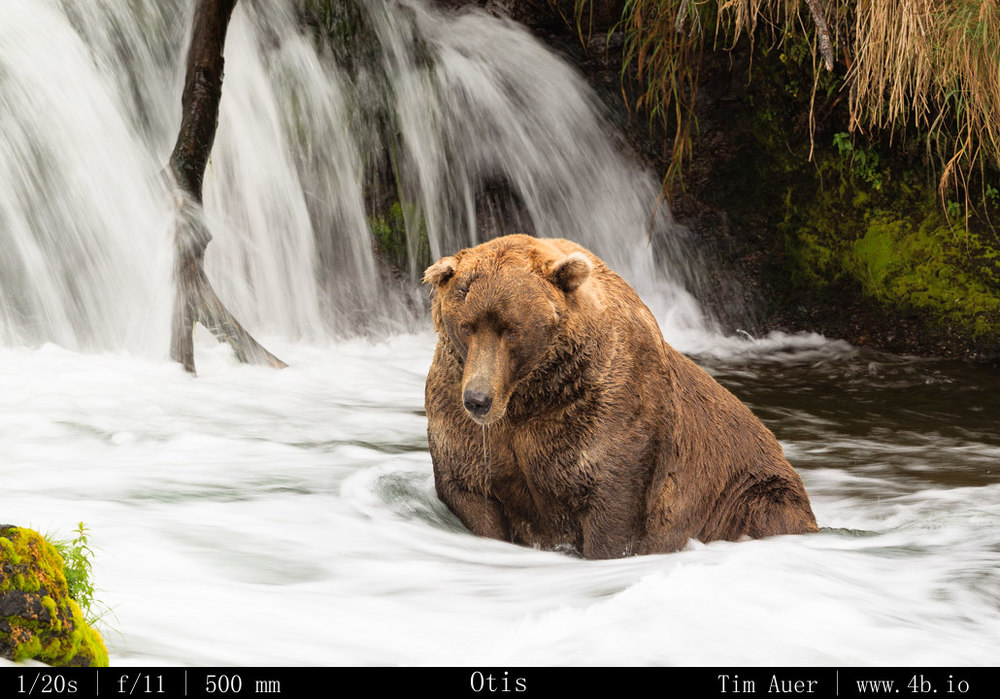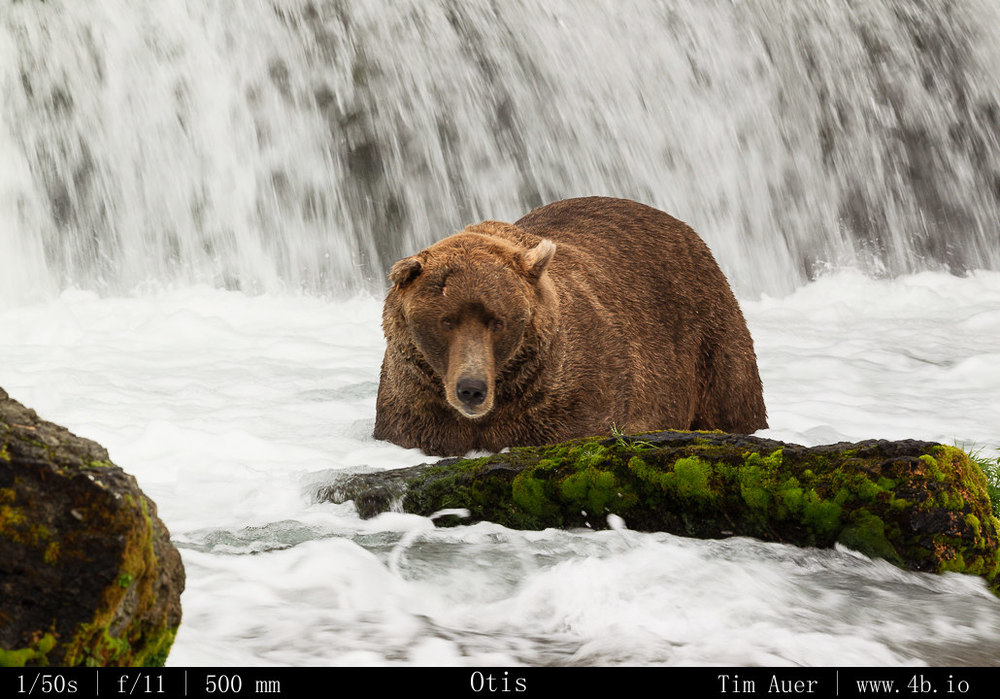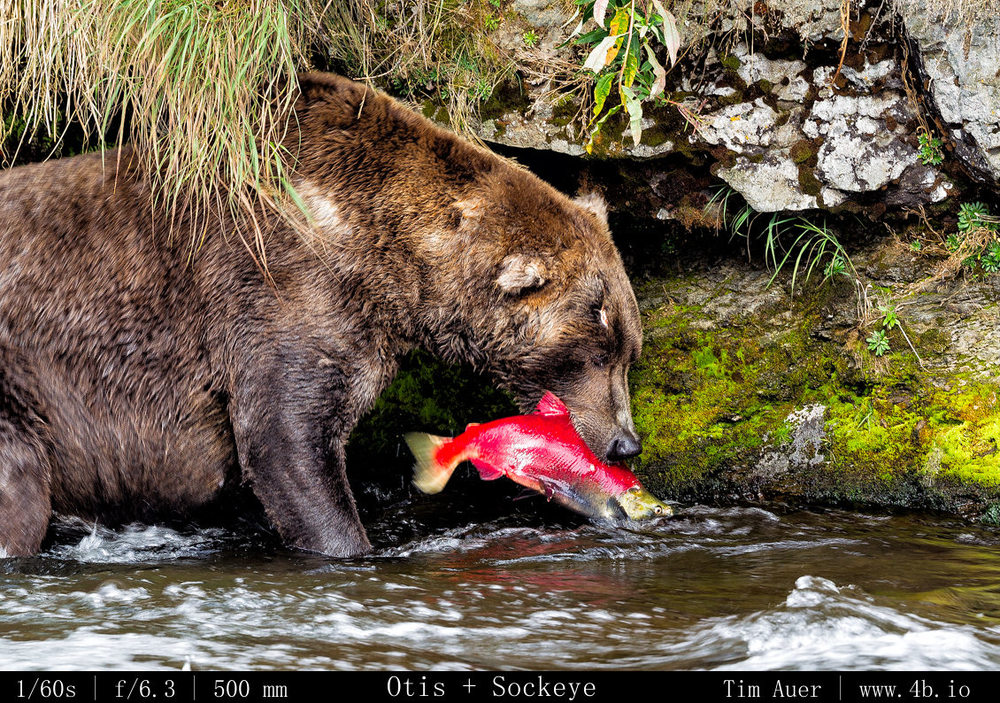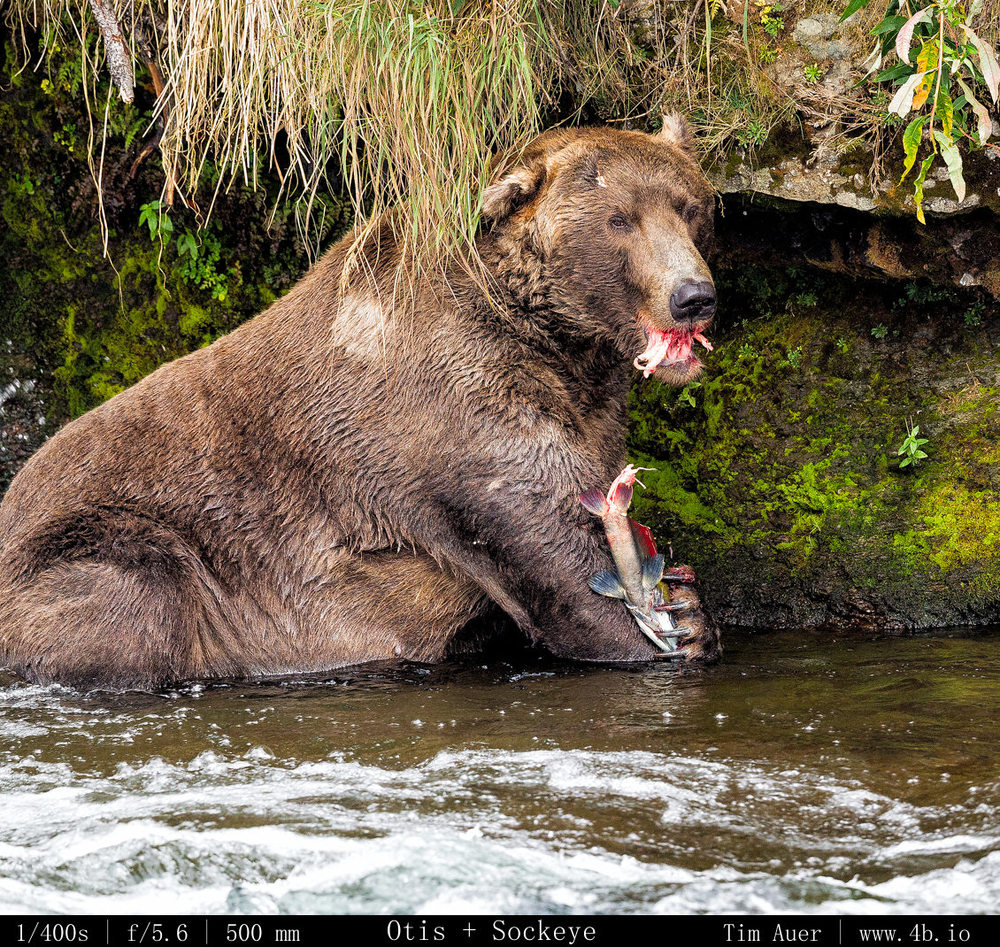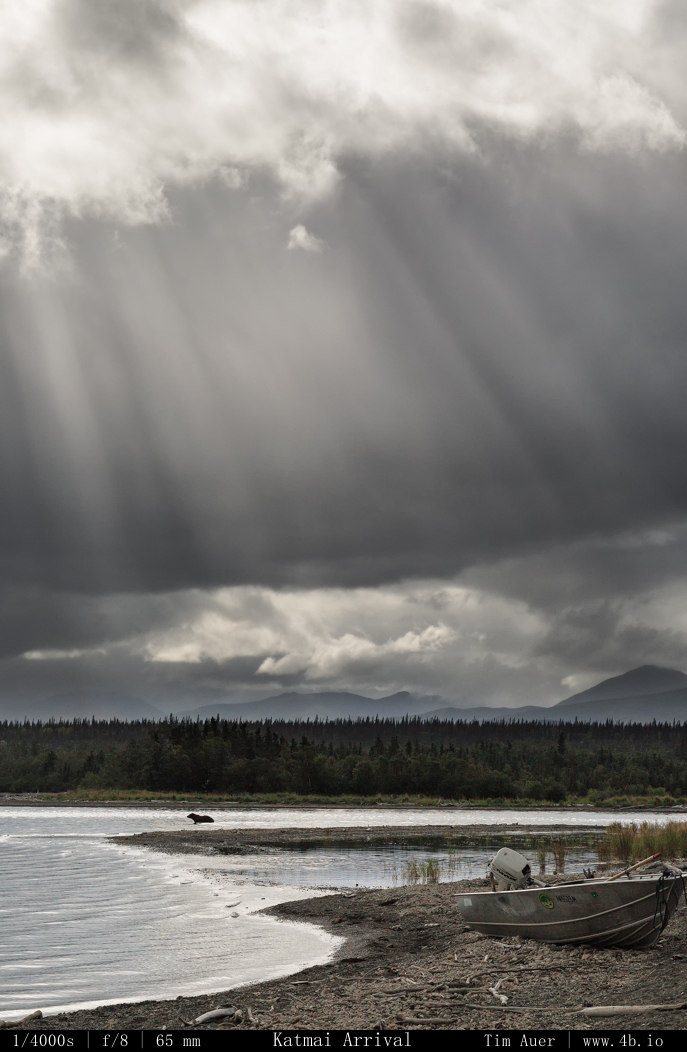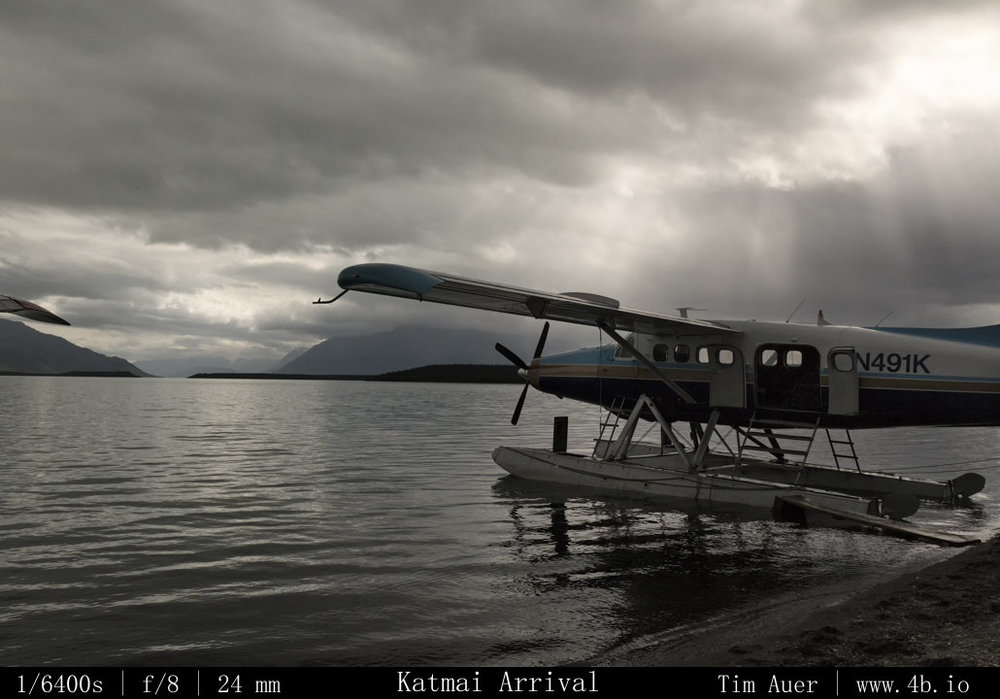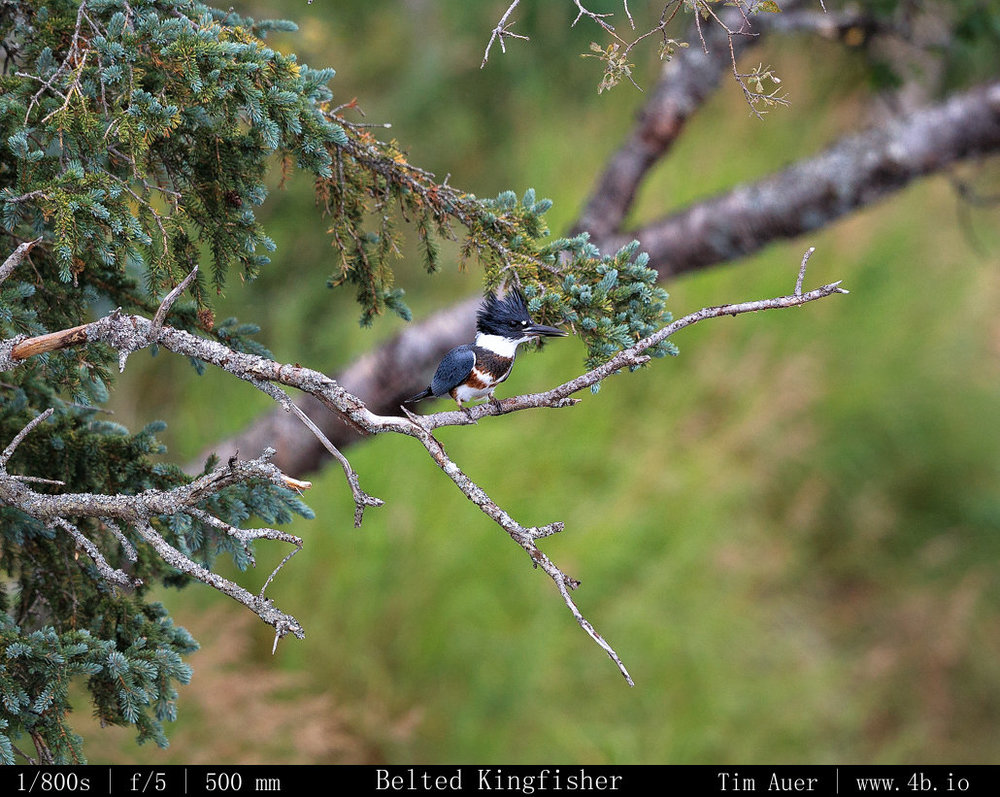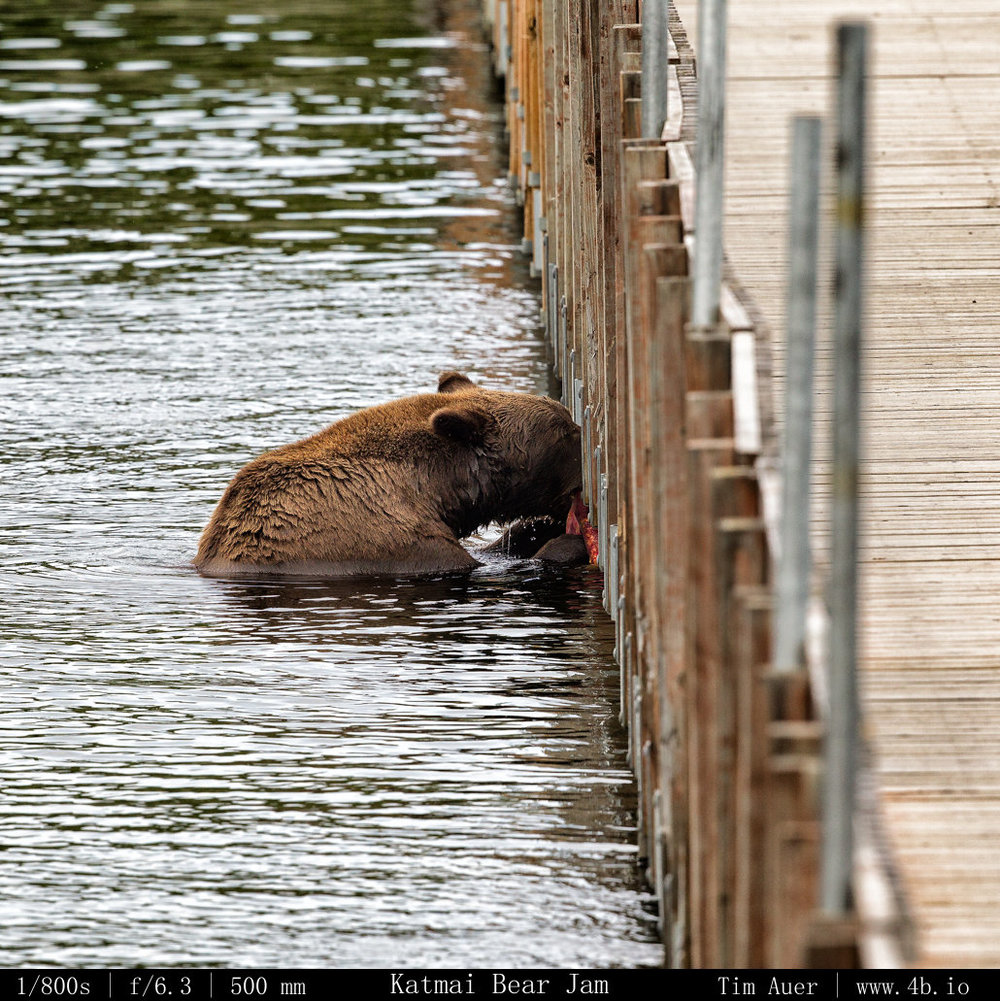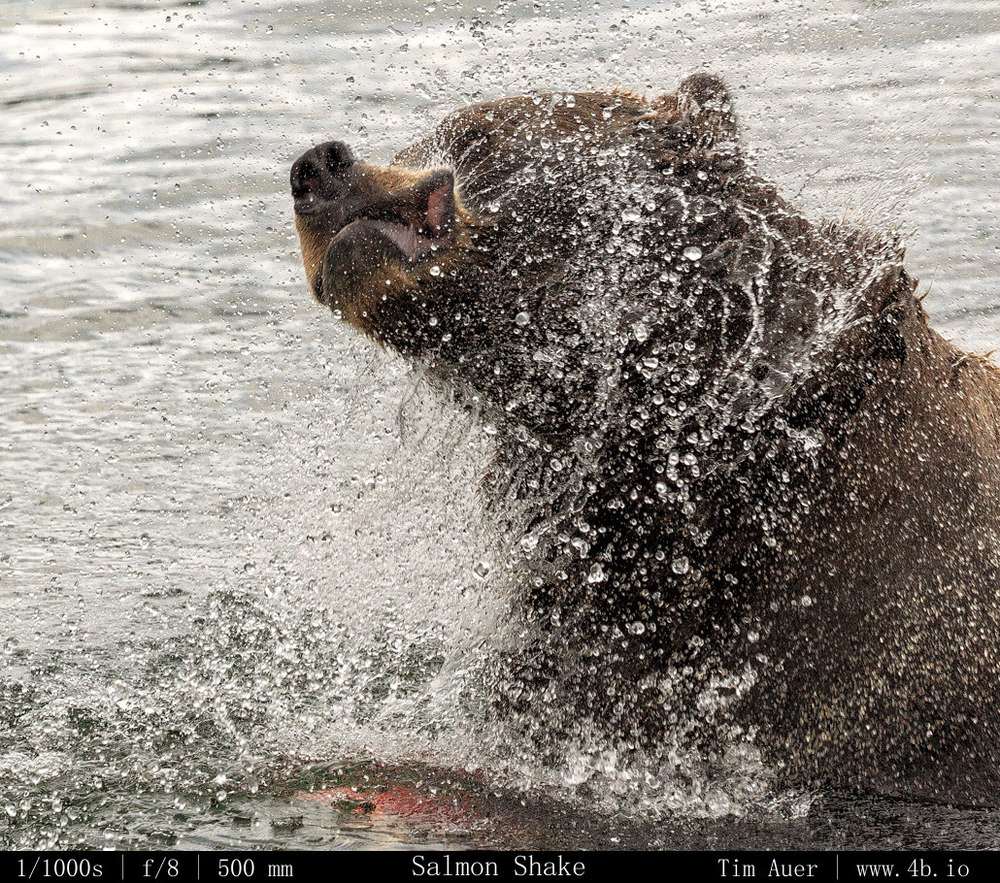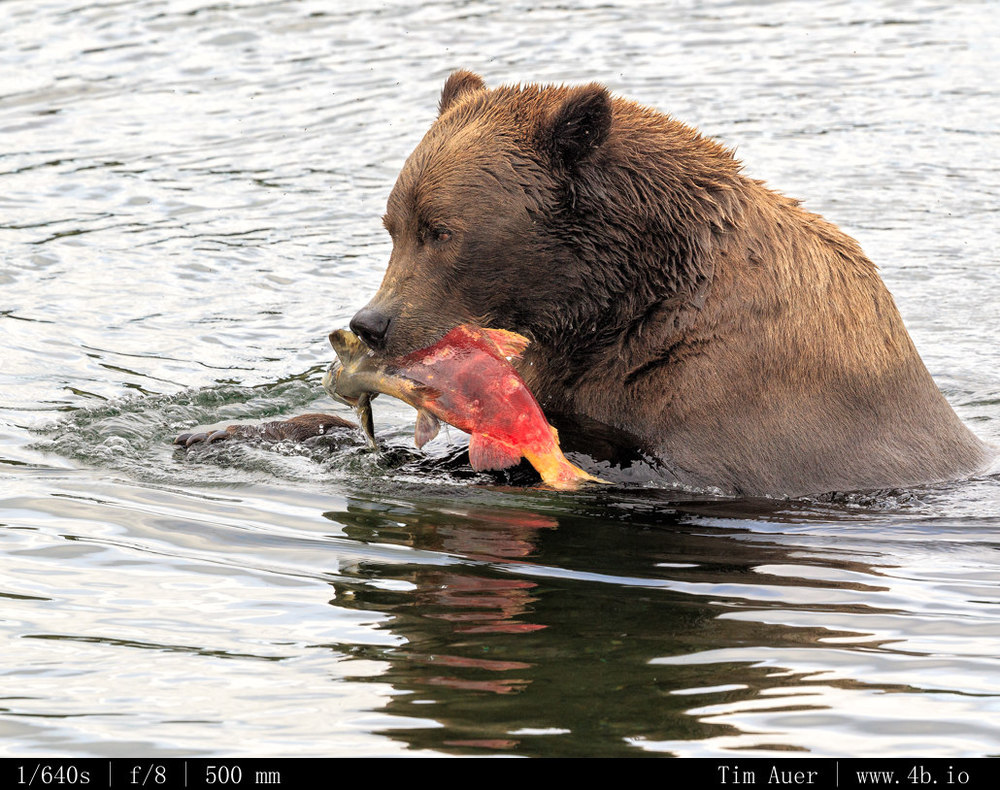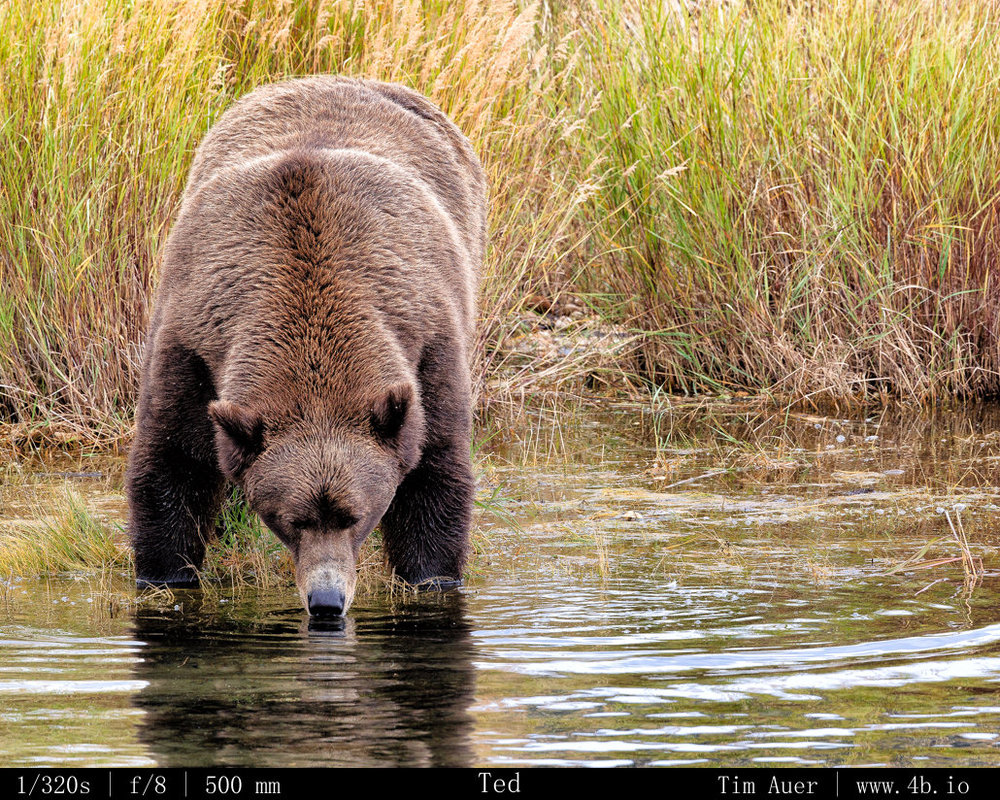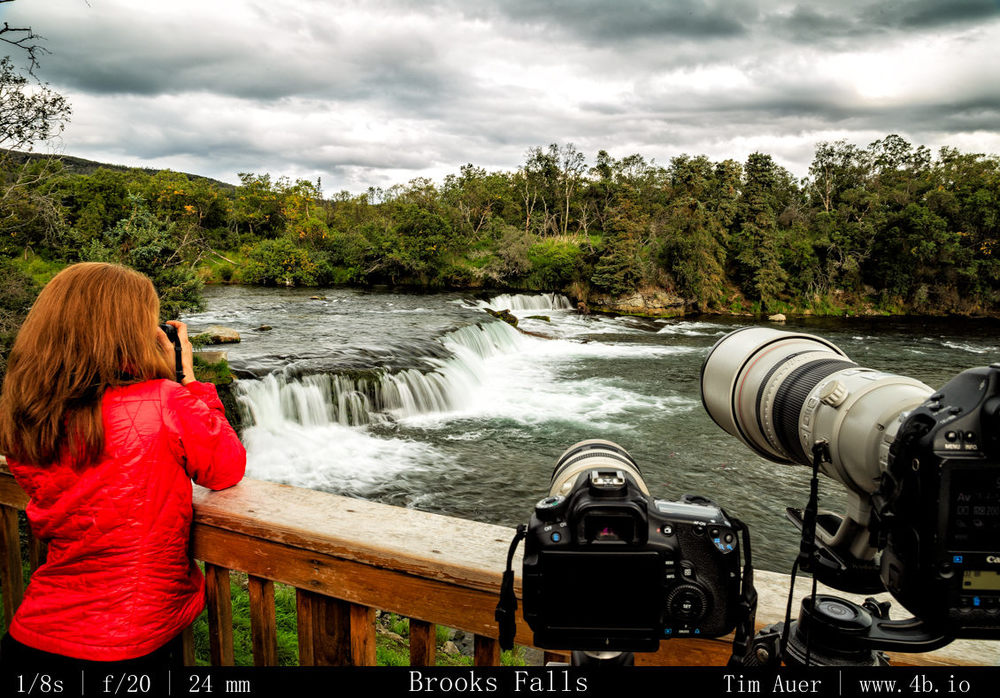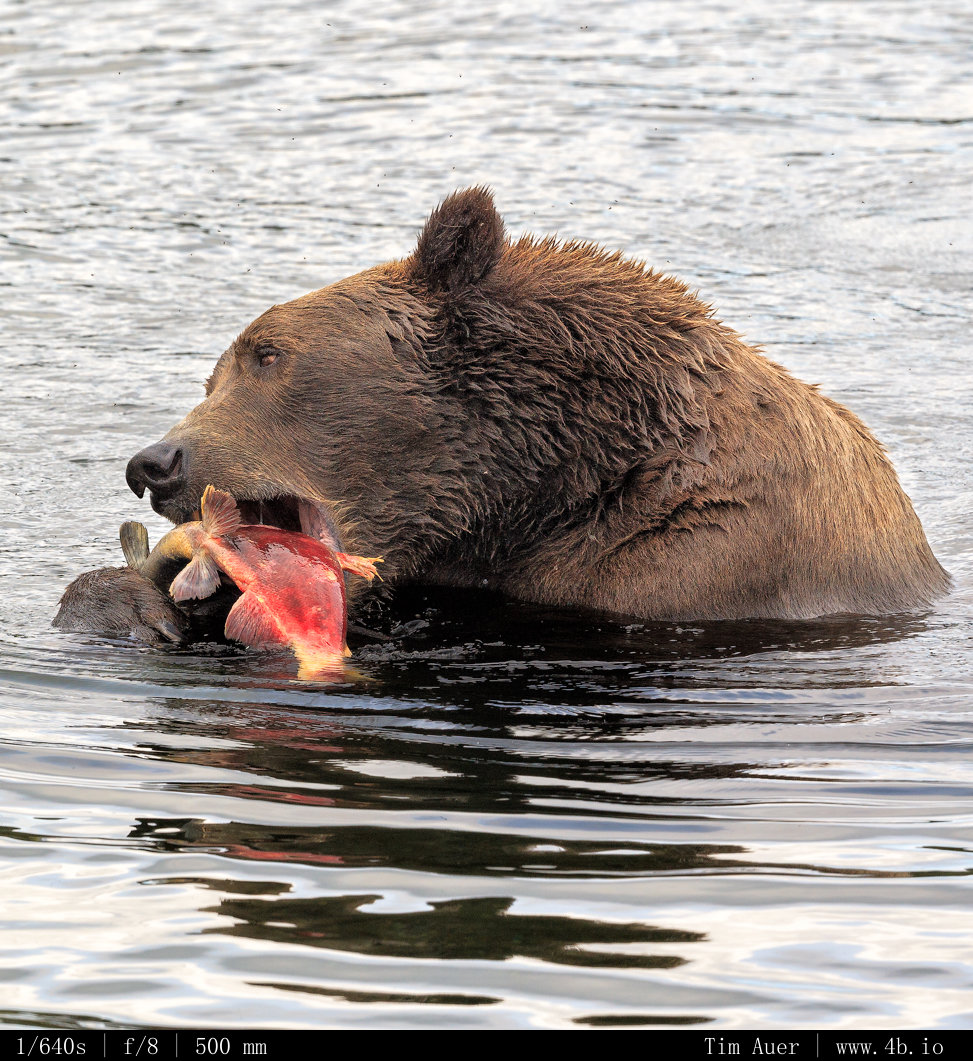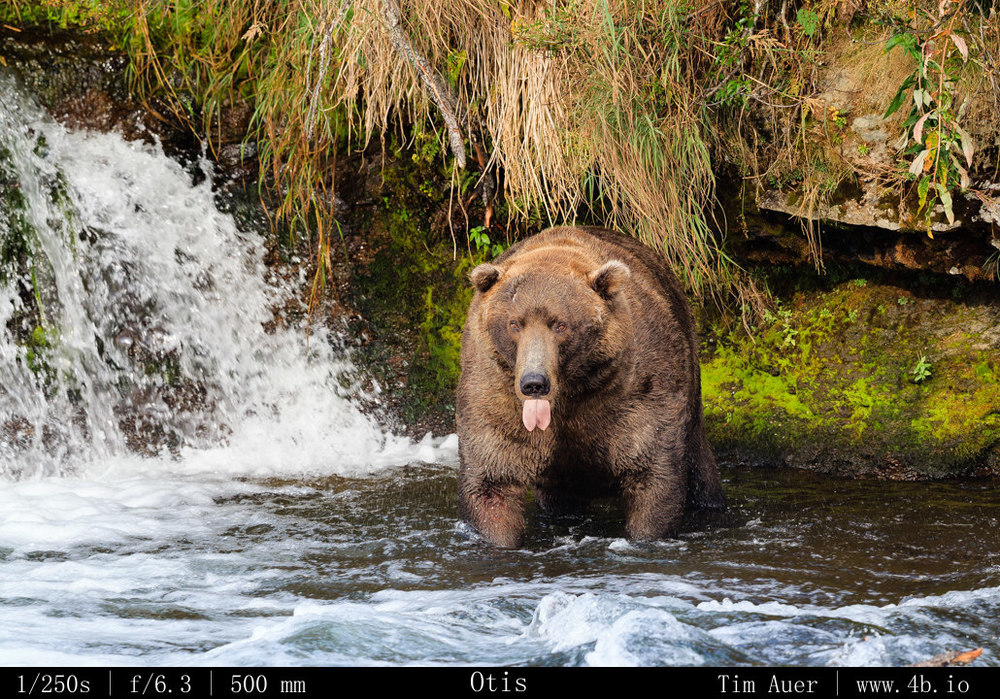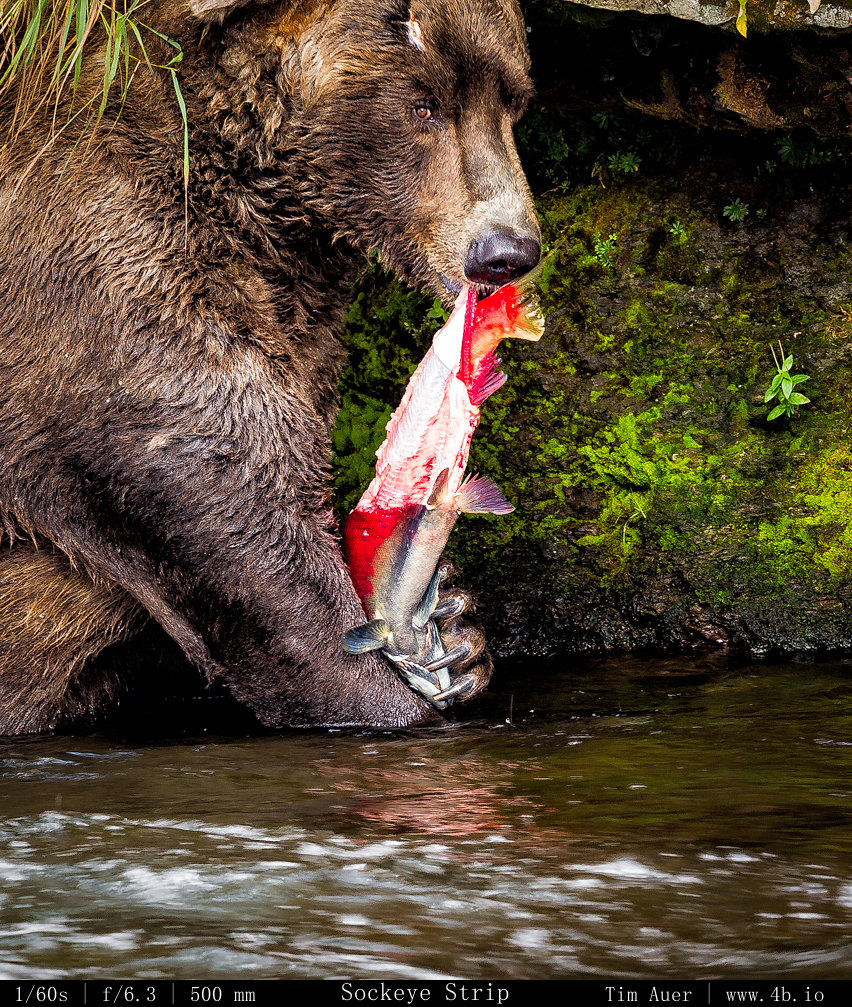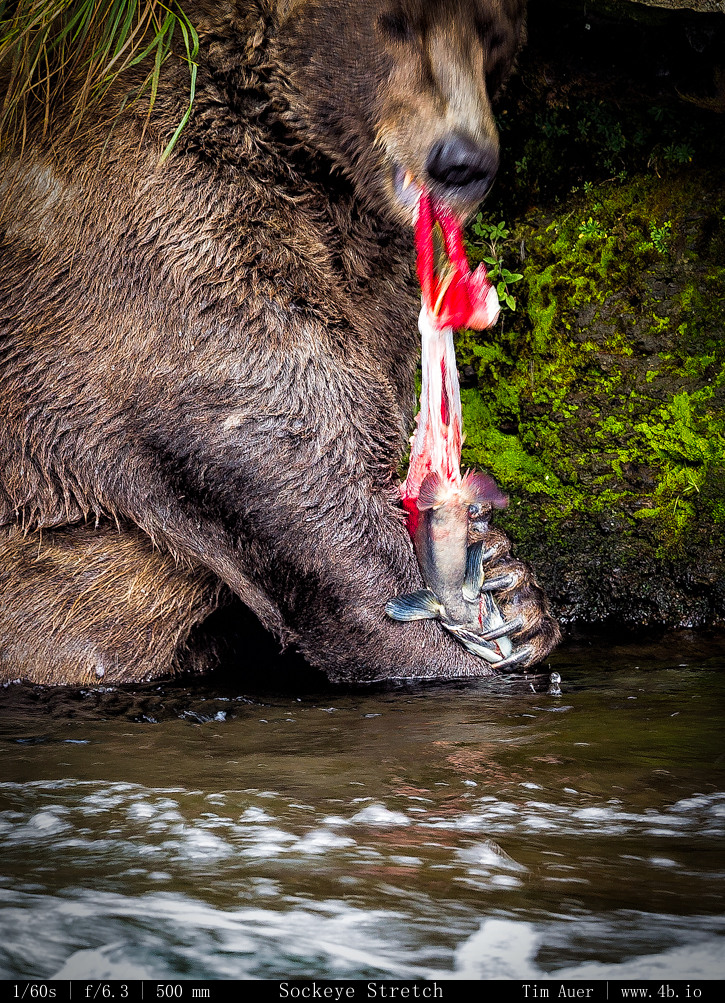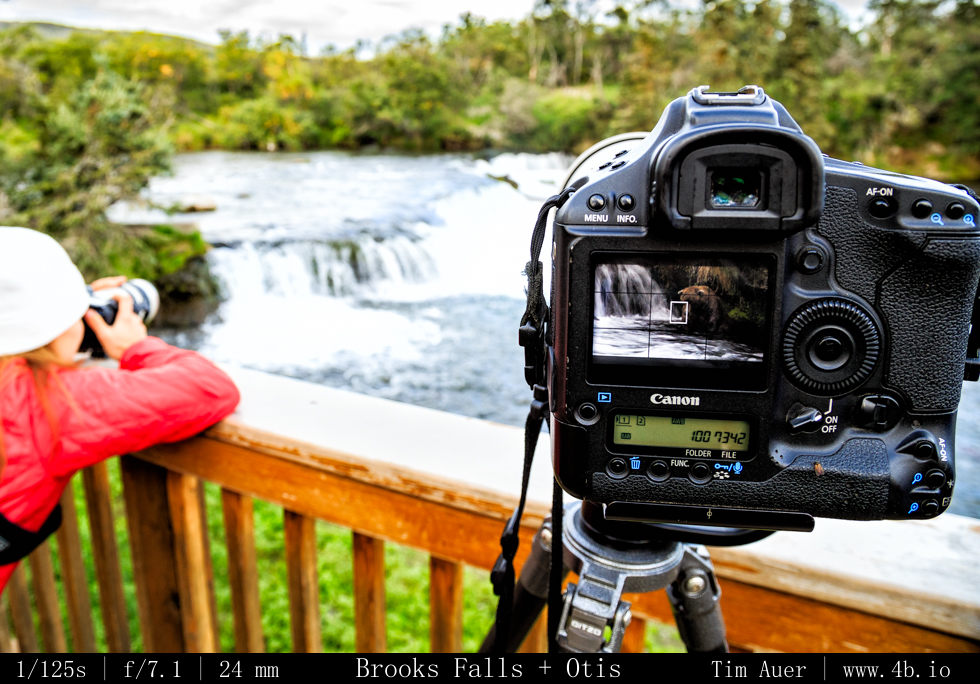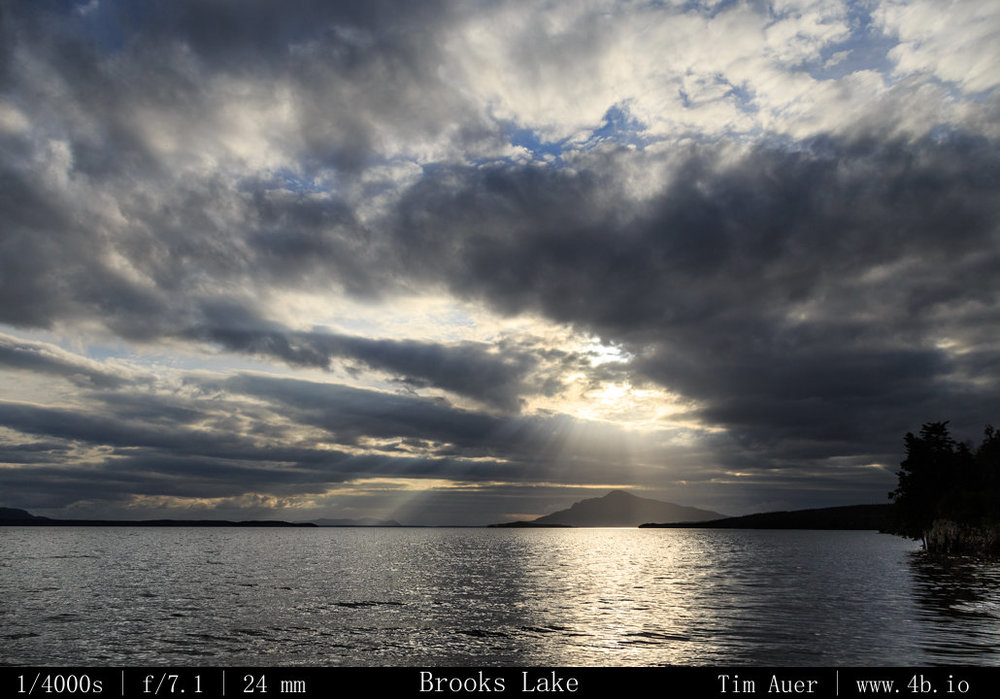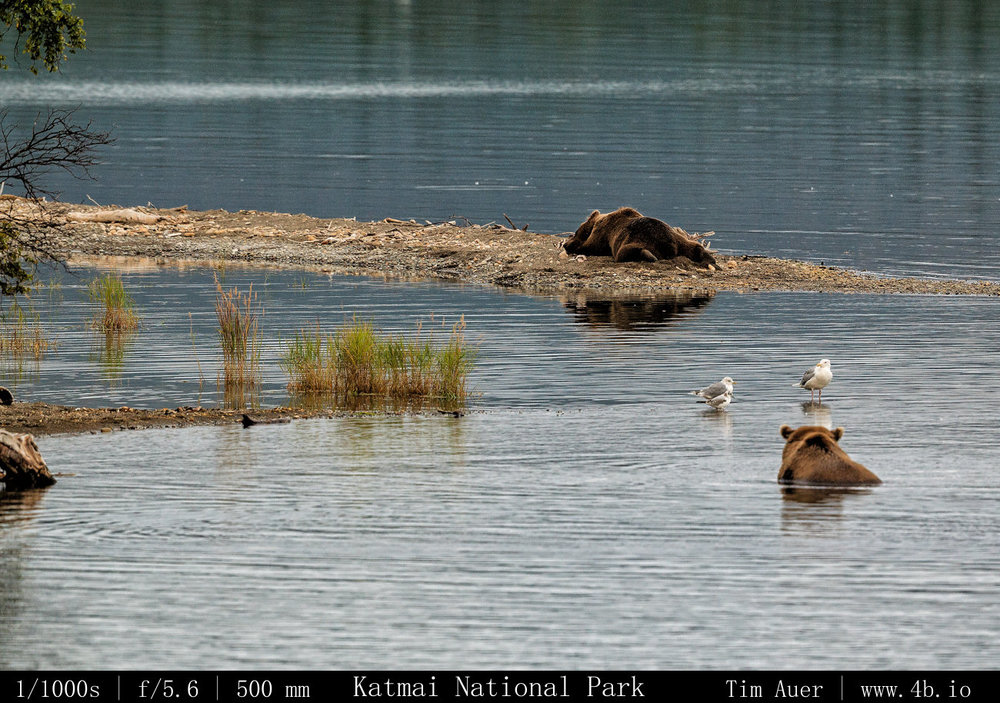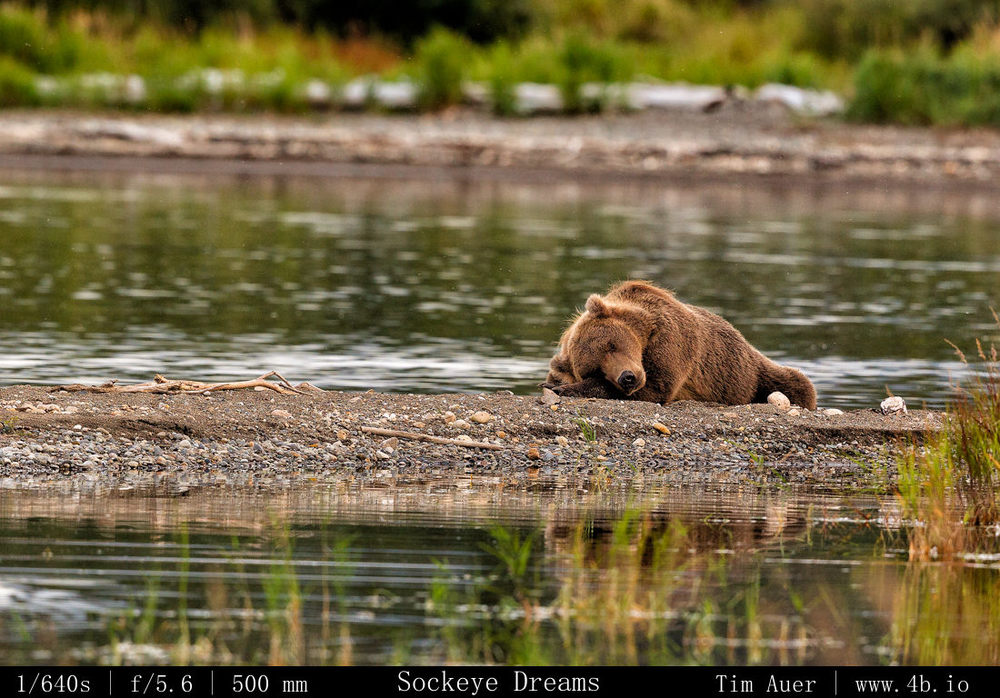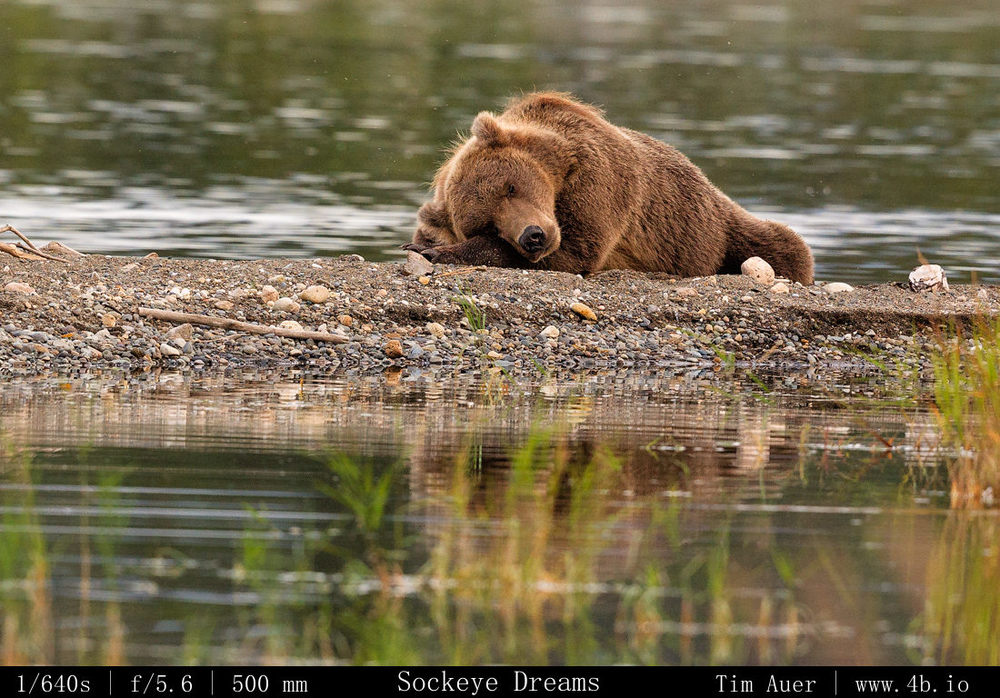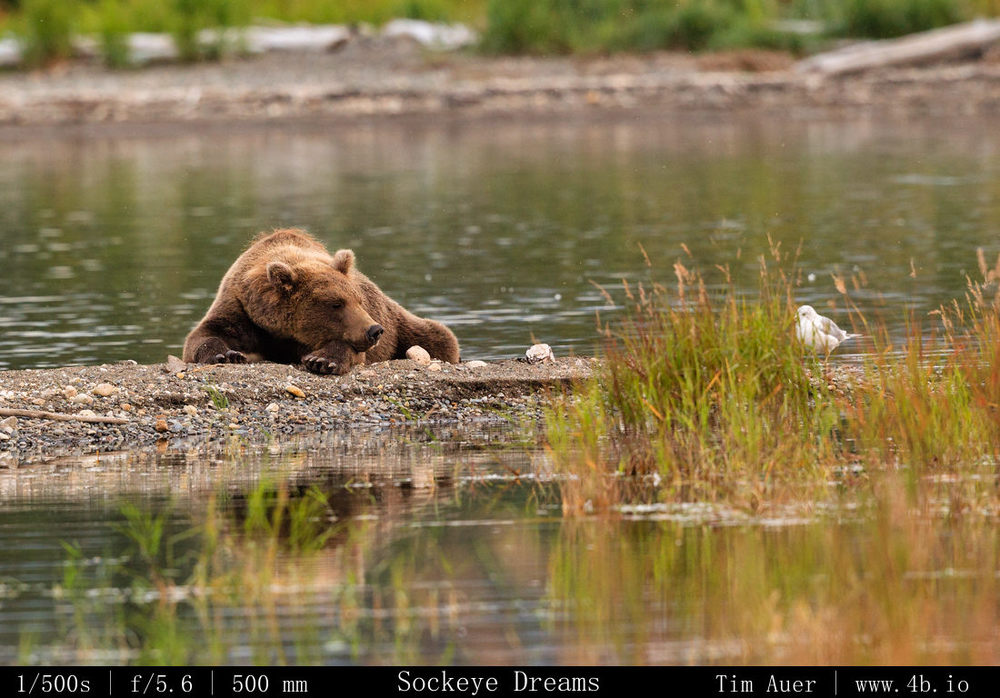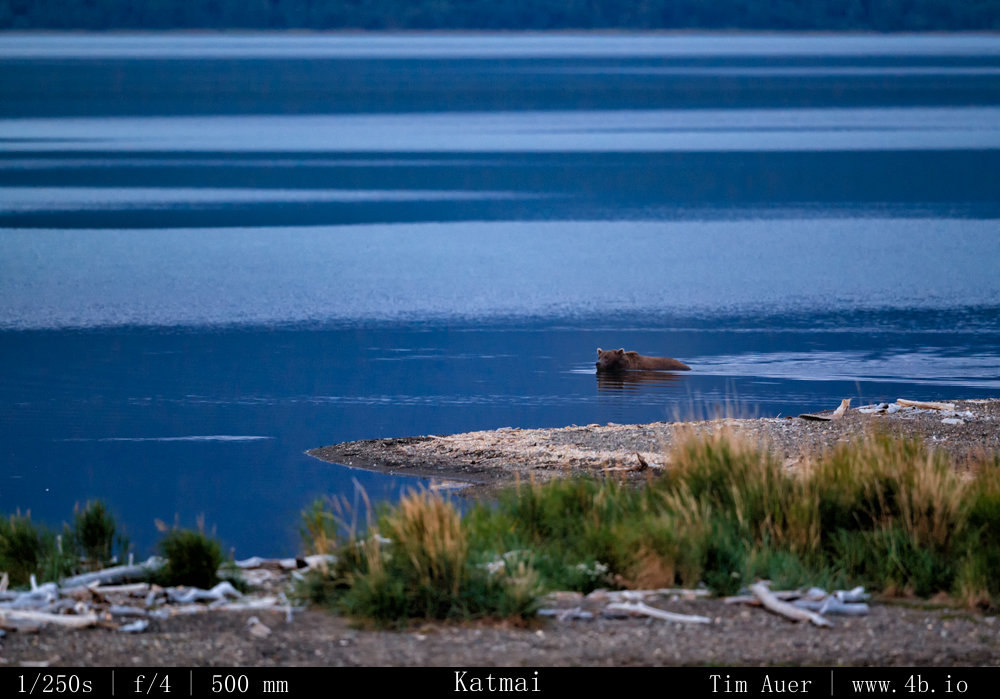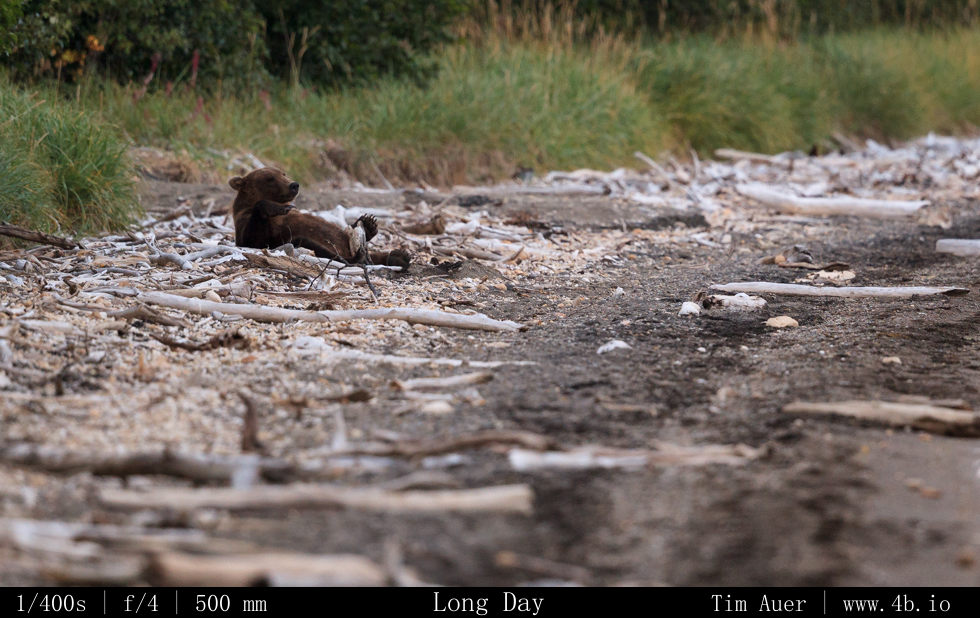The results are in….
The 2014 Travel photo contest announces its winners and finalists
I feel pretty excited about the results from my first photo contest!
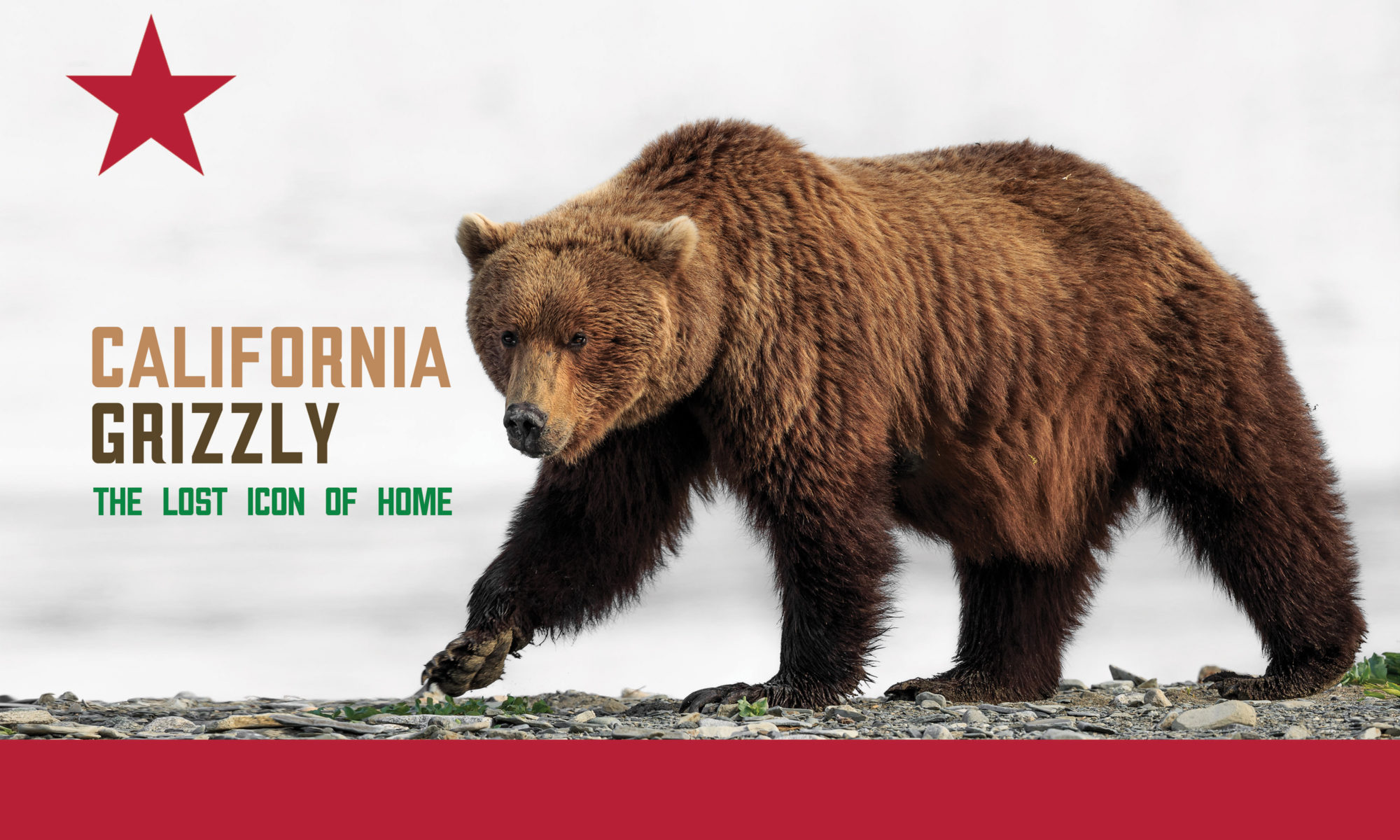
Tim Auer
The results are in….
I feel pretty excited about the results from my first photo contest!
I was in Katmai National Park July 17 – 21, and during that time I had the opportunity to observe the courting behaviors of the now famous couple: bear 856 and bear 402.
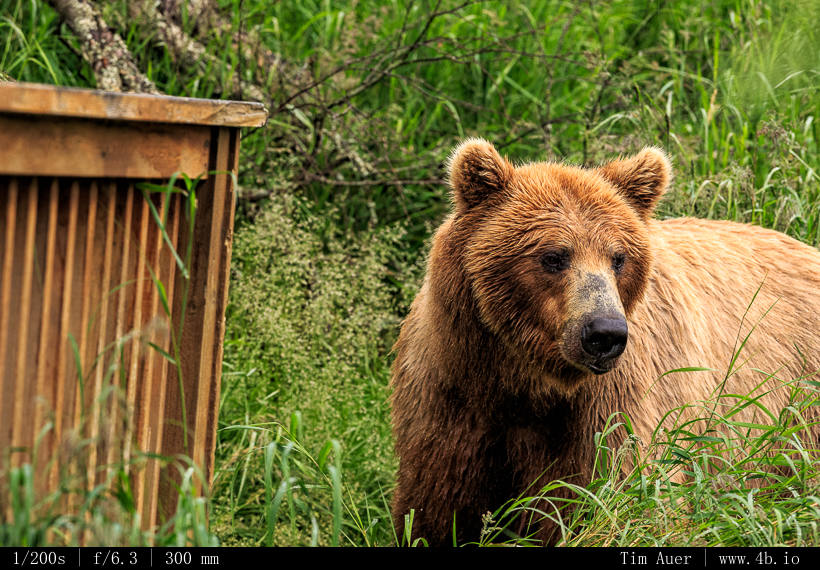
Before I left for Alaska last week, I had been aware that 402 had abandoned her yearling cub and may have gone into estrus while big and burly 856 was hot in pursuit (thanks to explore.org). Having this knowledge in the back of my head, I understood the motivations behind the playful teasing and flirting when I first witnessed it between these two bears at the falls. Given how low salmon counts were and, at times, driving rain, this courtship became a source of comic relief for those of us on the platform, and we projected our human emotions onto the couple. Several times 402 came inches from the platform, and when 402 was near, you knew 856 wasn’t far. At times their behavior was cute, but most of the time it was as you would expect from a bear: aggressive. 856 behaved like a jealous boyfriend. He would let his frustration be known to his fellow bears at the falls by frequently chasing them off. But who wouldn’t be frustrated after a fruitless week or two of female stalking?
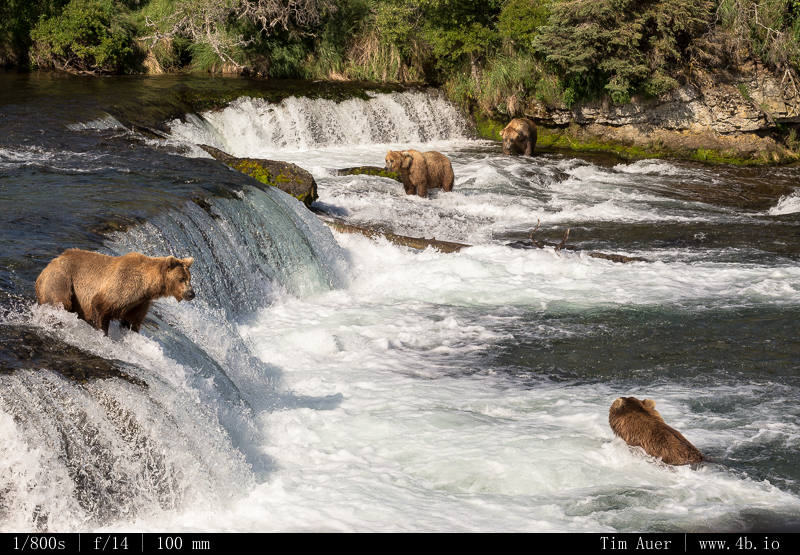
July 20 was a beautiful day in Katmai, sunny, warm, and a cloudless blue sky, and a far cry from the washout on the previous day. Despite the nice weather, the salmon counts were low (at most 2 or 3 jumping the falls in a minute) and the bear activity at the falls reflected this. The sub-adults and cub-adults were doing their belly flops in the riffles and Otis was in the jacuzzi. Despite this lull, Meril and I maintained our position at the falls from 08:00-23:00. By mid afternoon, 402 (for the non-bear community’s sake lets call her what the bearcam watchers call her “Brooke“) came up the river with 856 shadowing close behind (lets just call him “Hank“) . They continued to play this mostly one-sided game of follow-the-leader. Hank’s aggression was clear to everyone- human, bear and seagull- he even drove Otis away from the whirlpool. As the shadows began to make their way across the river, and the quality of light increased, Brooke decided, while Hank observed, to tease another large and dominant bear…
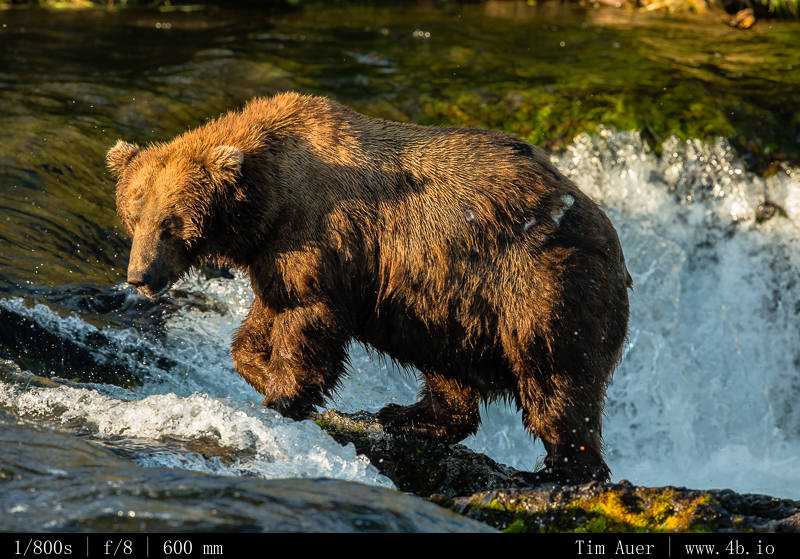
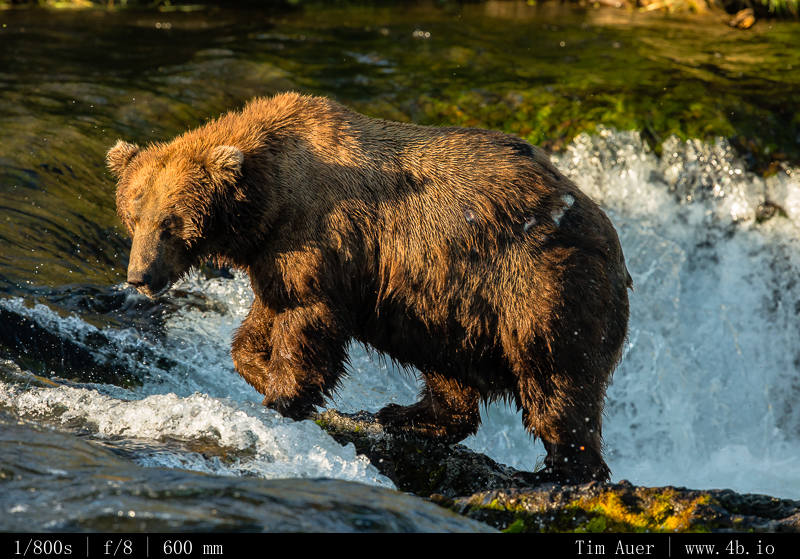
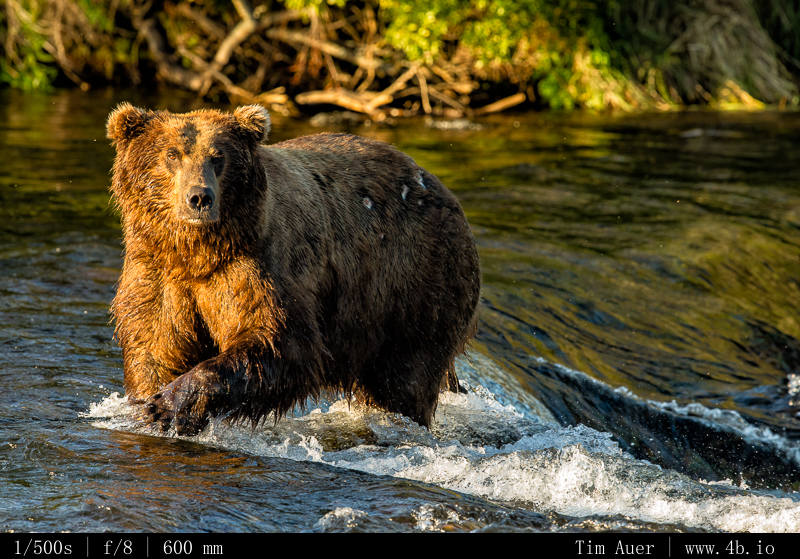
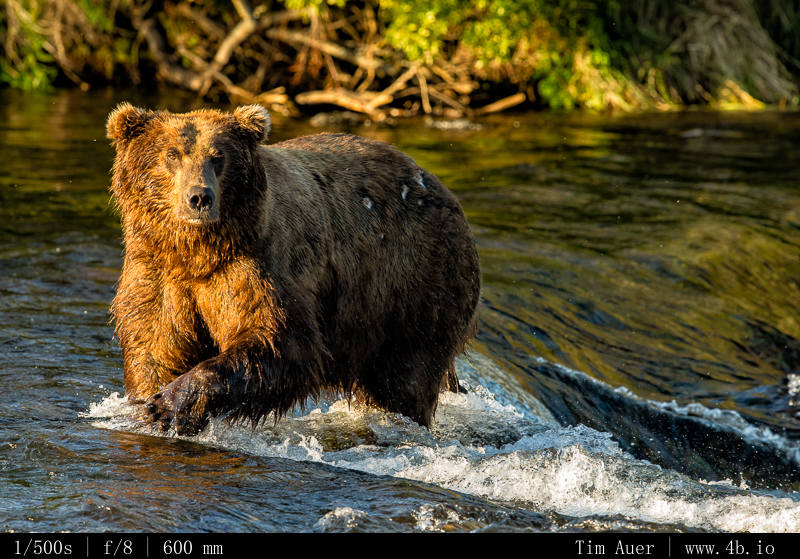
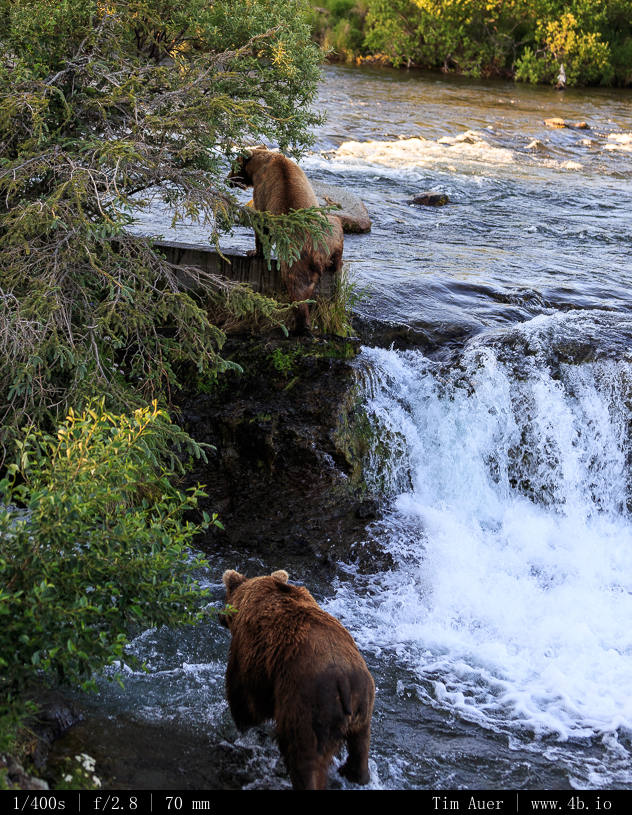
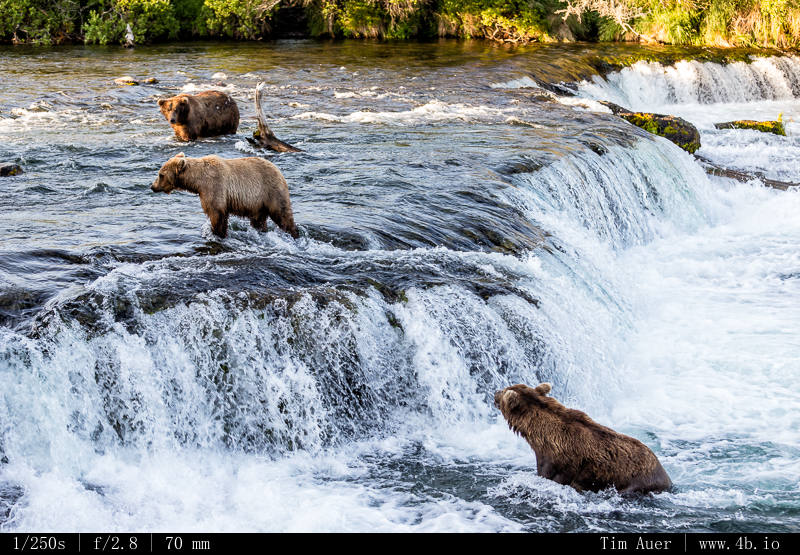
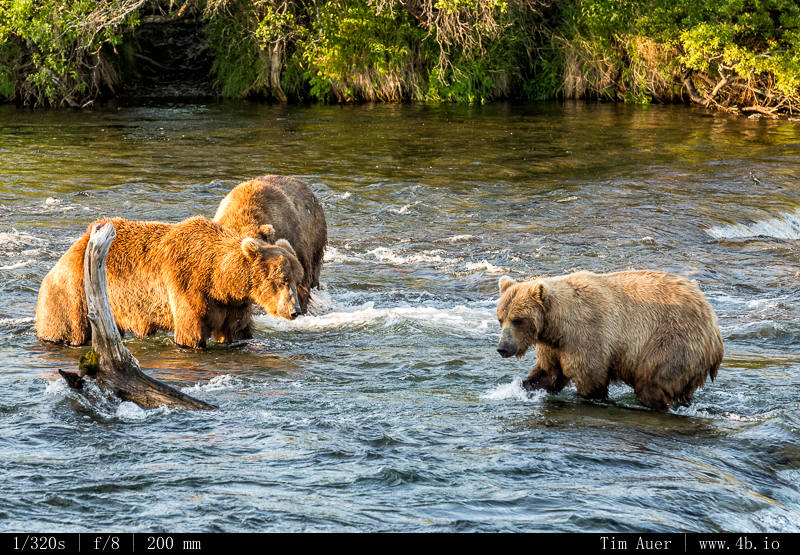
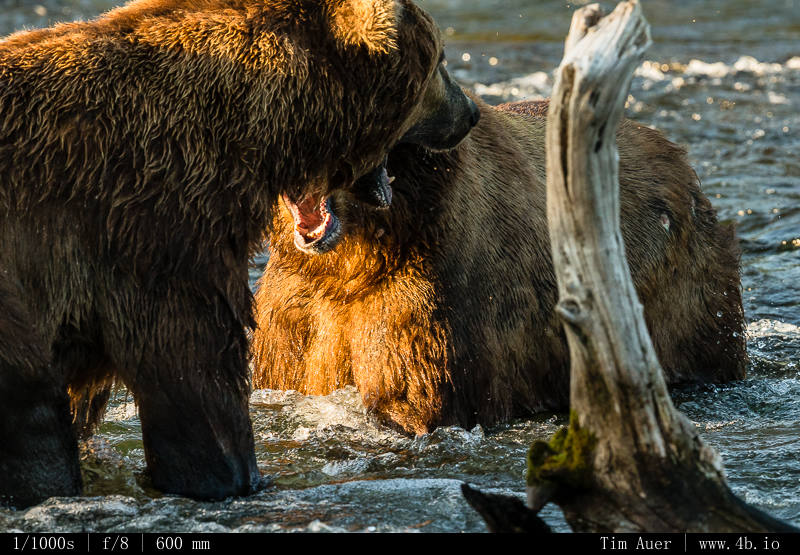
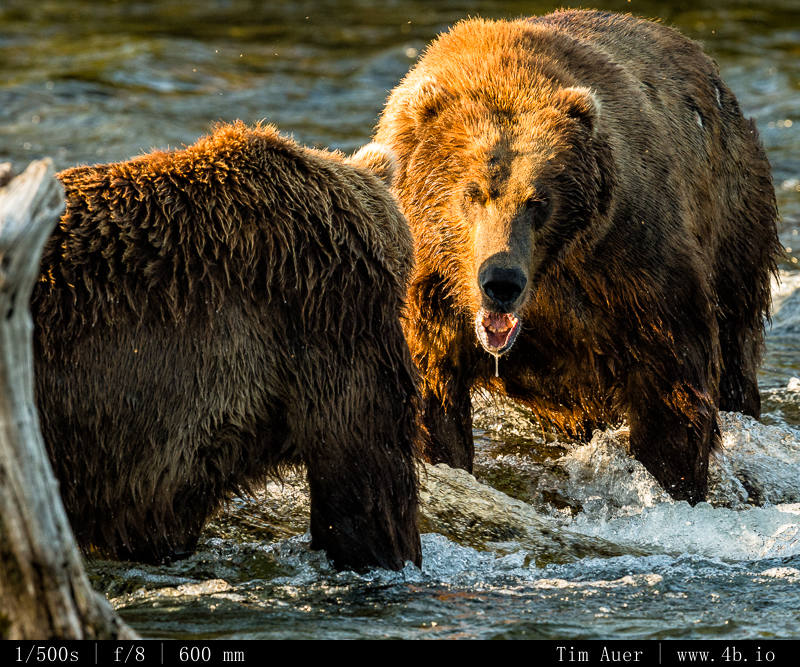
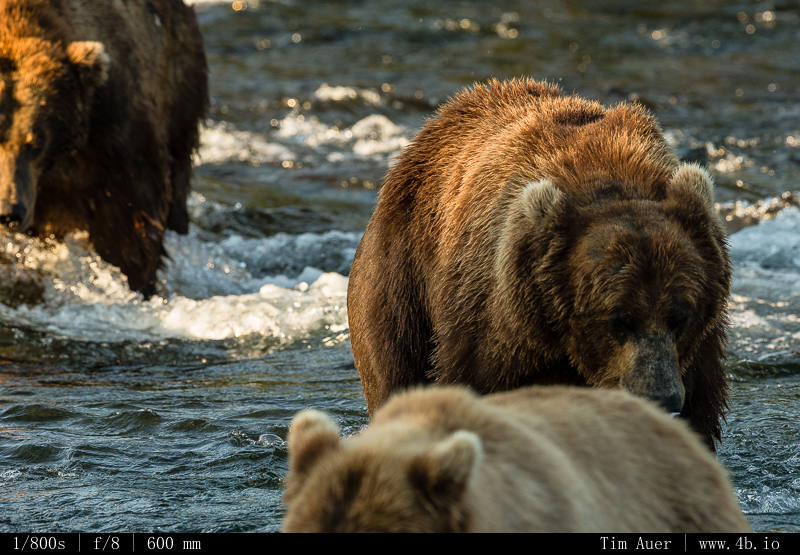
Bear 747 had been fishing in the jaccuzi when he decided to climb the waterfall and stand in the sun. Brooke got up from the bank she was sitting on and went up to where 747 was standing. The angst was instantaneous for Hank. The agitated big bear jumped the falls to be by Brooke’s side, and a small standoff ensued. Hank and 747 settled their dispute like true bear gentlemen, requiring only jawing and light pawing. Once it was settled Hank took his prize and headed away from the falls into the woods…I thought it would be the last I saw of the pair that evening…

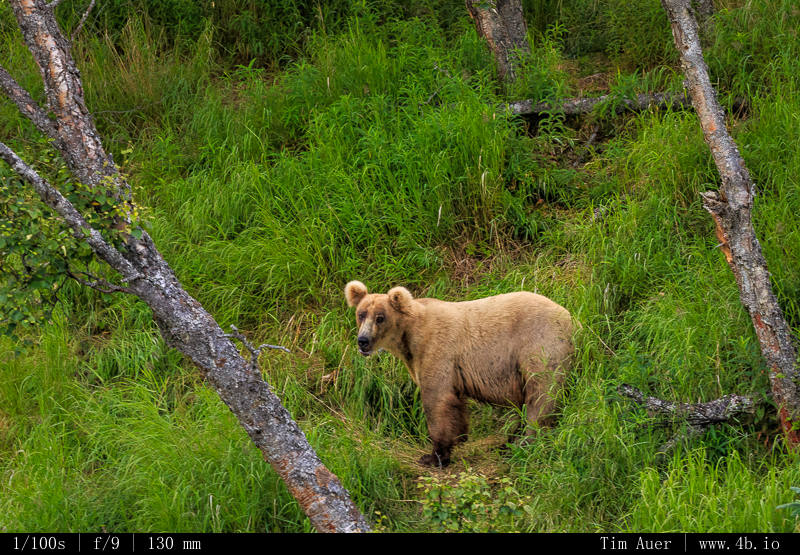

At 21:40 we decided to leave the falls and make our way back to camp along the walkway. We had an early morning boat ride to Margot and could use the rest. We passed through the heavy metal gate closest to the falls, and were stunned to observe what was in front of us. Brooke and Hank, right before us, getting it on, bear style. The coupling was hot and steamy. Literally. There was steam escaping between their wet bodies in the forest light. There was a lot of snarling, nuzzling, ear nibbling, and vicious growling and biting. As the steam picked up, they heard a noise and quickly scattered. It looked like the farmer’s daughter and the traveling salesman were busted. I could see Grazer (blondie with big ears) up on the hill, but Grazer could not see the couple, and the couple could not see her. Both sets of bears tried to sniff out who or what was there. When Grazer realized that Brooke had suddenly spotted her. Grazer didn’t need any further instructions, she took to her heels and sprinted up the hill away from them, but Brooke chased after her, and Hank chased Brooke. Brooke and Hank made a short, but speedy, loop on the hill and returned to the same spot they were before. Without skipping a beat, Brooke and Hank were at it again – the Grazer disruption lasted 54 seconds in total (according to the time stamps in my photos).
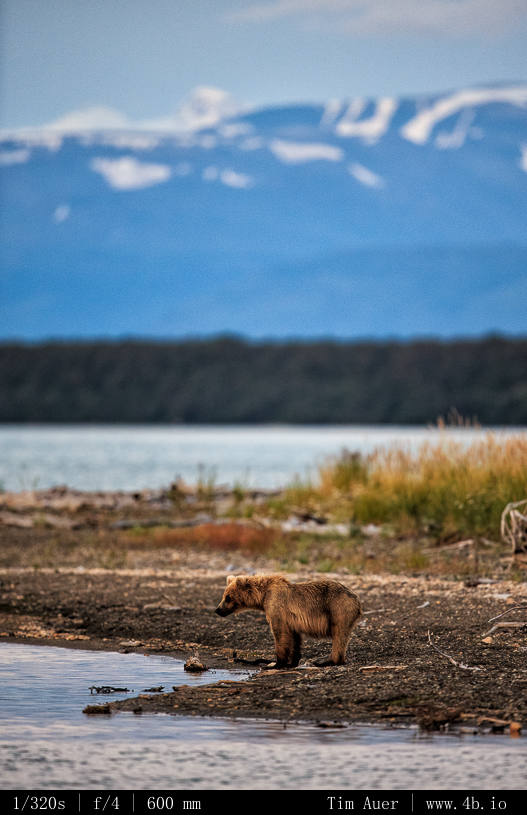
In its entirety, the mating session lasted about an hour, and during that hour Brooke and Hank moved and changed positions. It seemed that several times Brooke tried to tell Hank that she wasn’t having much fun anymore, but Hank didn’t seem to care, and would growl or cuff her when she objected. At one point while pointing my 600mm lens at the bears, I whispered down to my friend Meril who also had his 600mm out: “This isn’t weird, right?”
At the end, when both bears separated, and they began to vigorously pull tufts of grass and eat it. Then Brooke skipped off towards the river. Hank still followed, but with the deed done, he moved with less urgency and even found the time to stand up and get a good backscratch on a tree…
We were left with a 1.6 mile walk back to camp, and a lot to discuss along the way. And there were plenty of other bears still out as we reached the lower river in the gentle Alaskan summer twilight…
More Blog Posts to follow on the results of this trip.
2014 Katmai: Pre-Spawn Preparation
2013 Katmai: Gear People Bears
2013 Katmai: Bear Behavior
2013 Katmai: Float Plane Lift
2013 Katmai: Cubs
2013 Katmai Packing List
2013 Otis Eats a Salmon
The gallery below is in chronological order, the events on July 20 unfolded in the order shown (the first photo is from the day before):
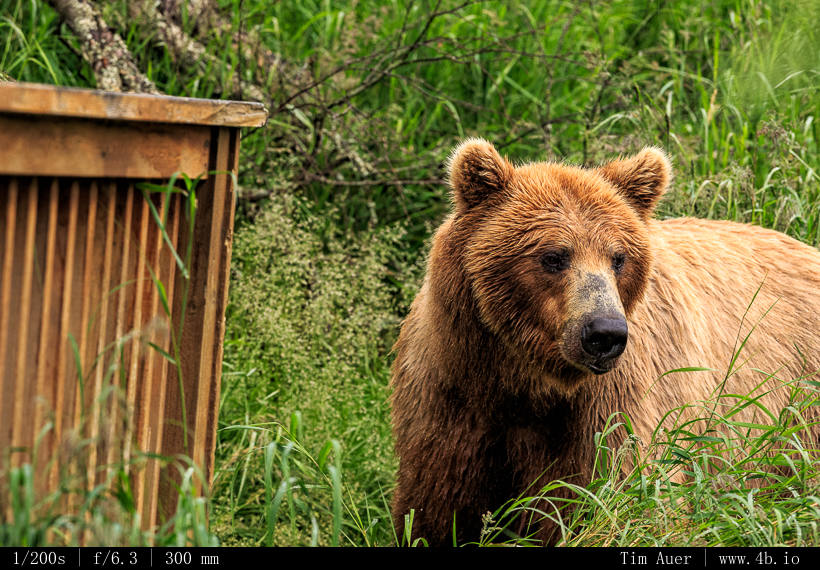
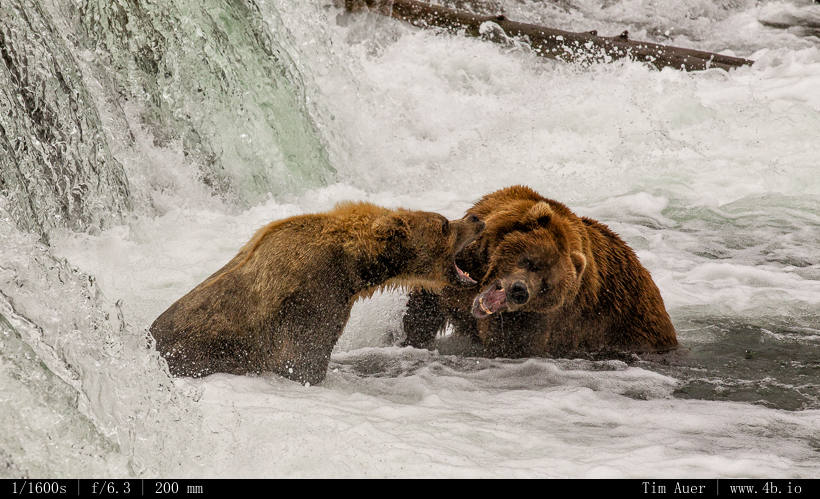
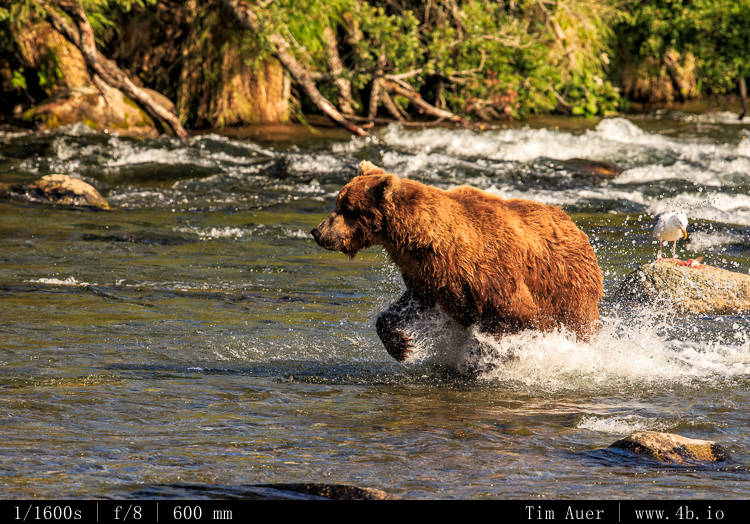
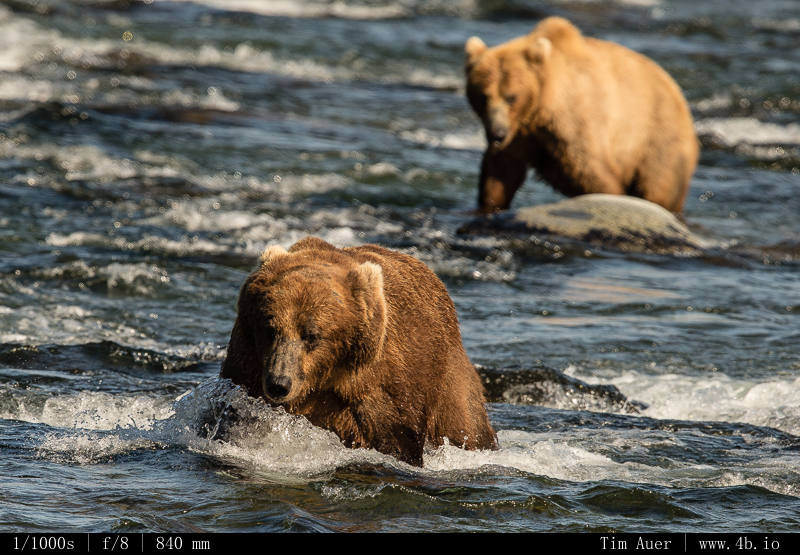
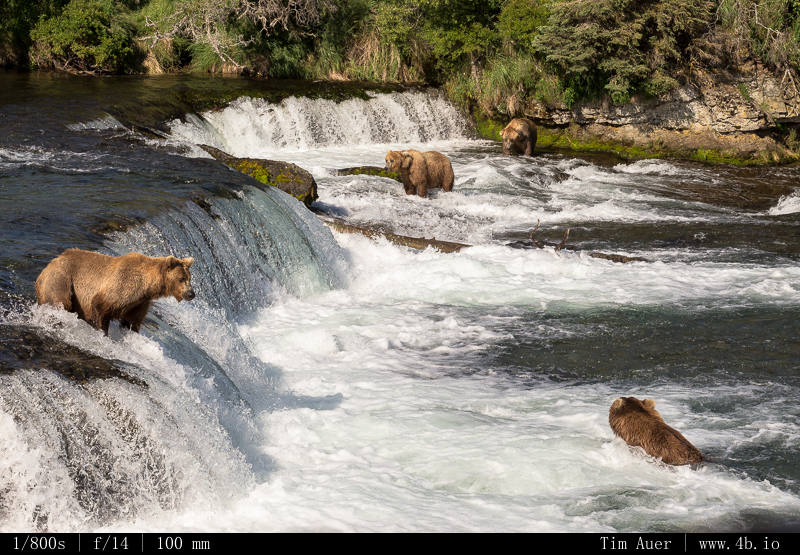
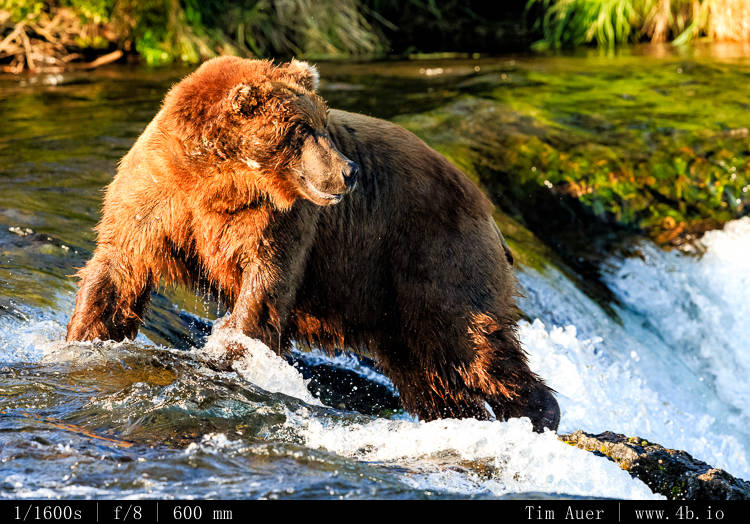
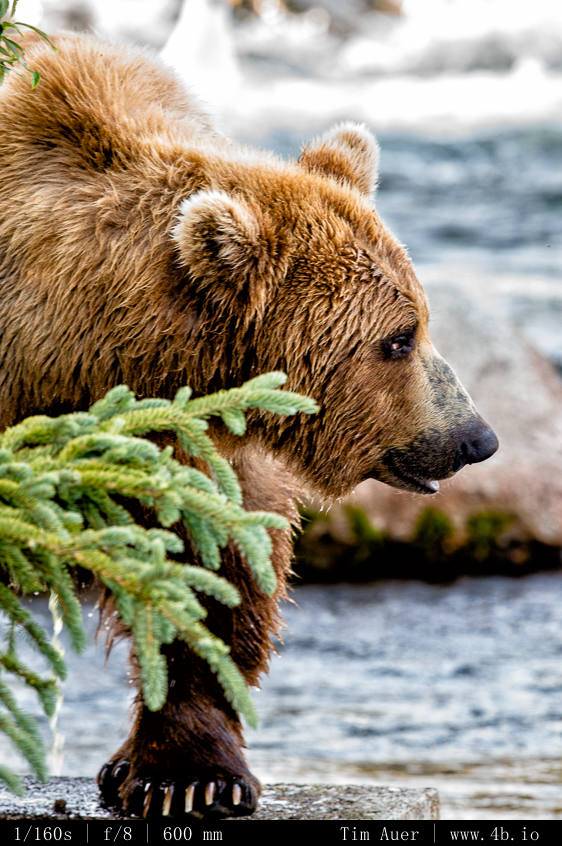
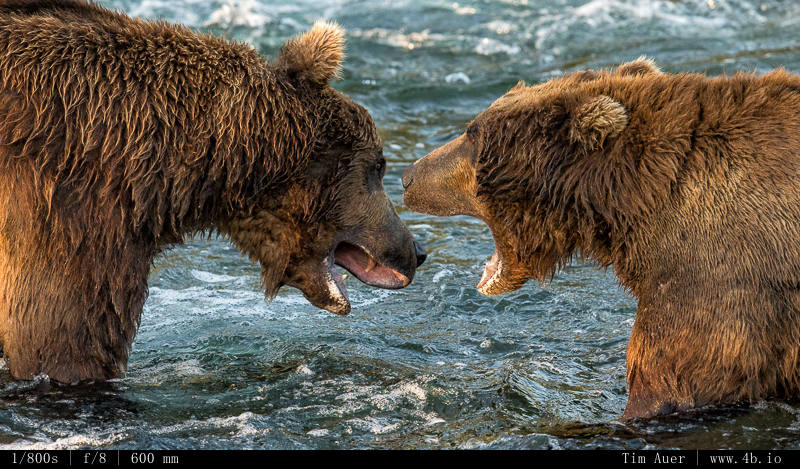

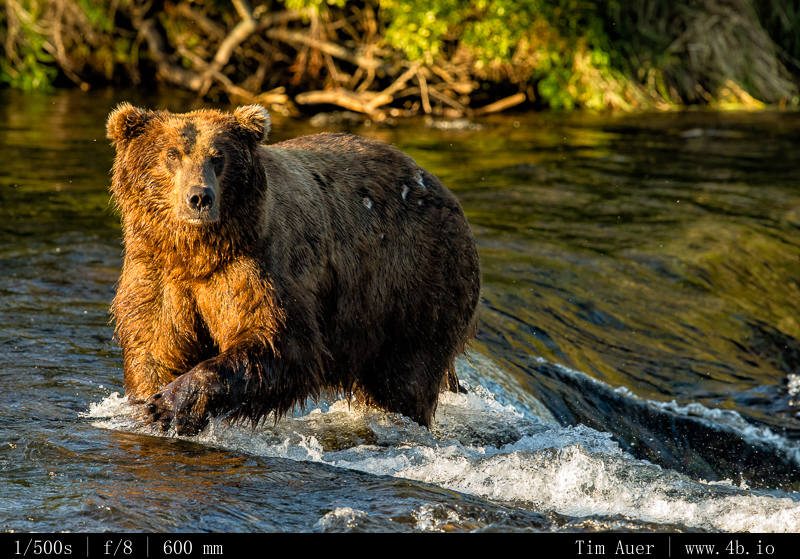
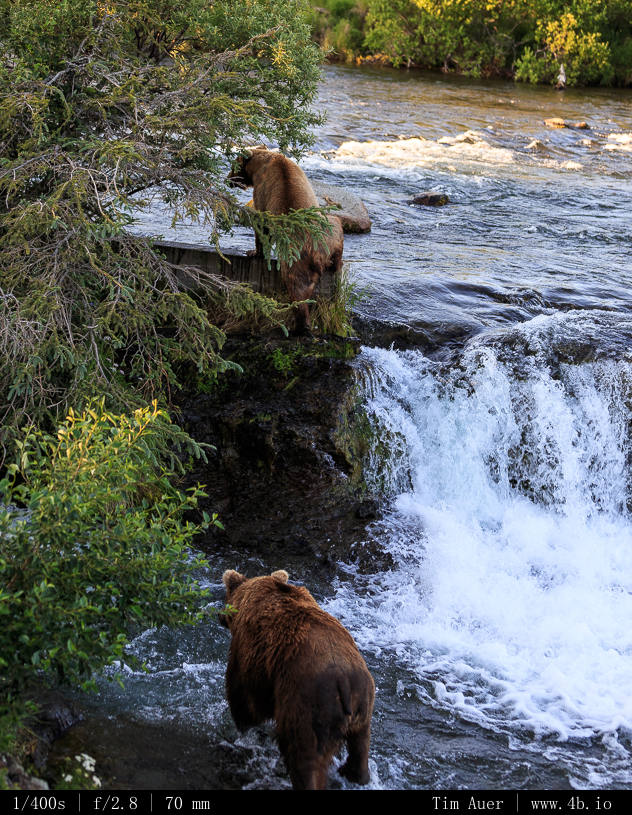
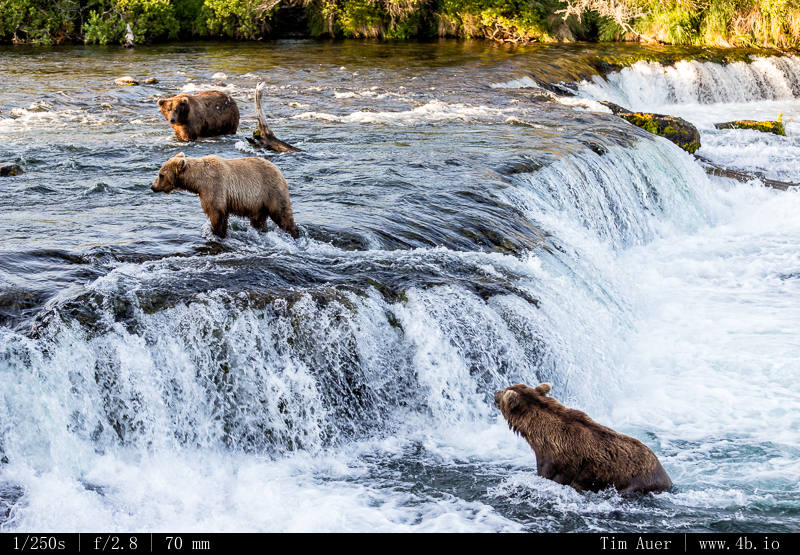
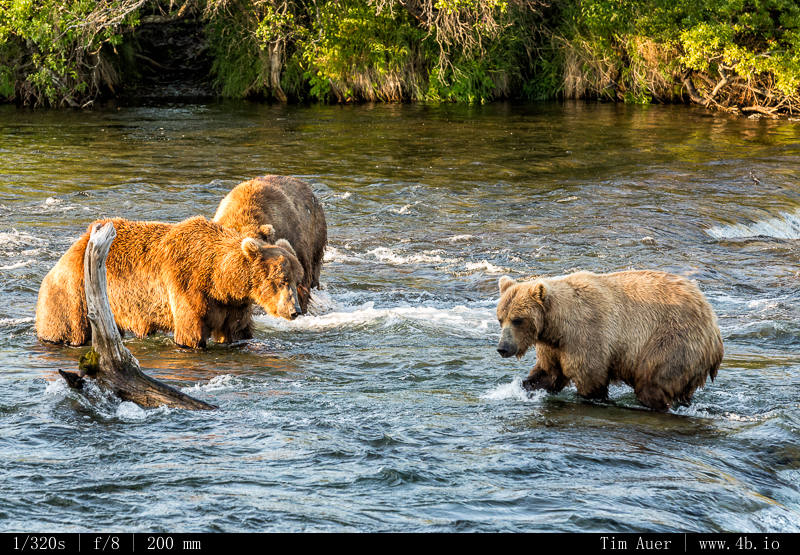
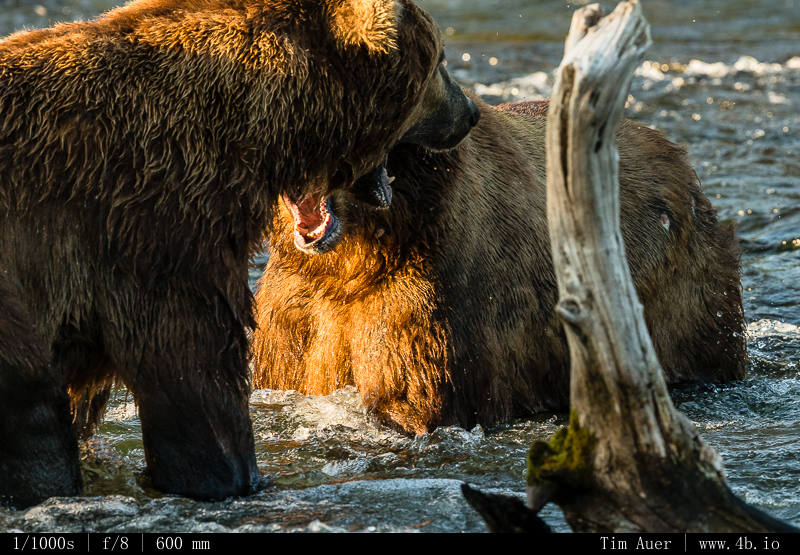
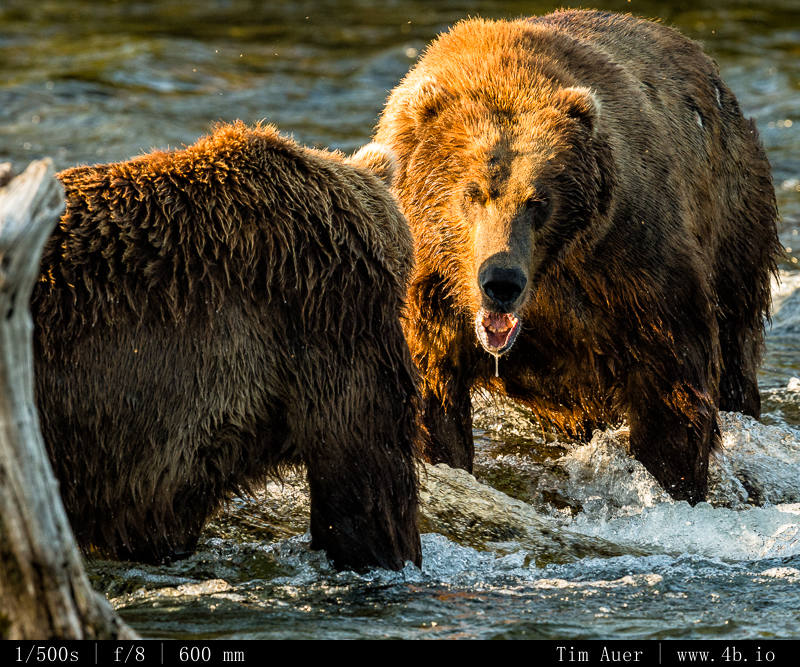
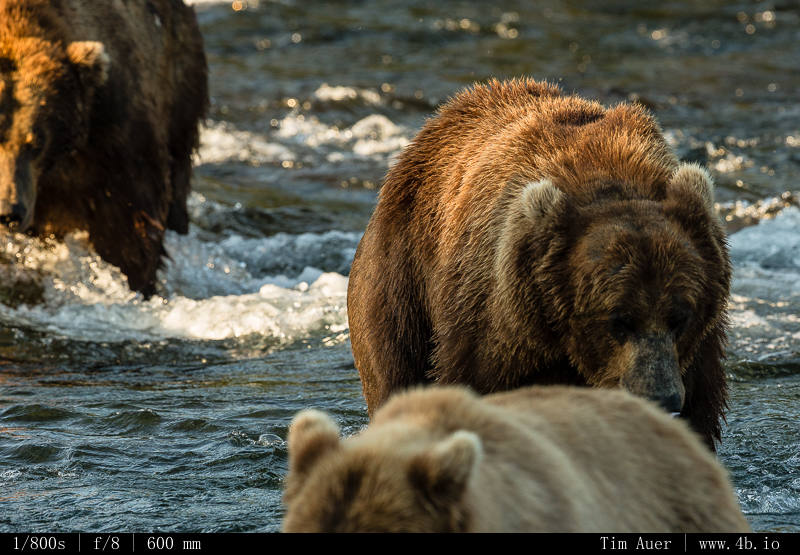
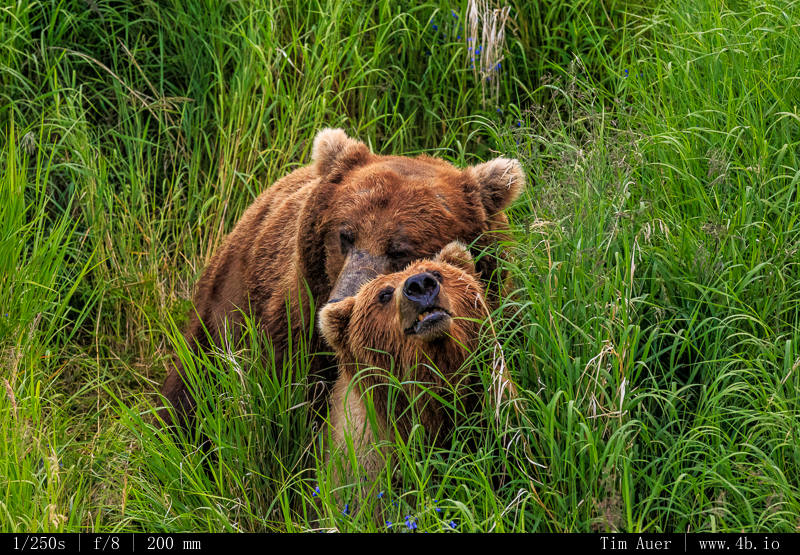
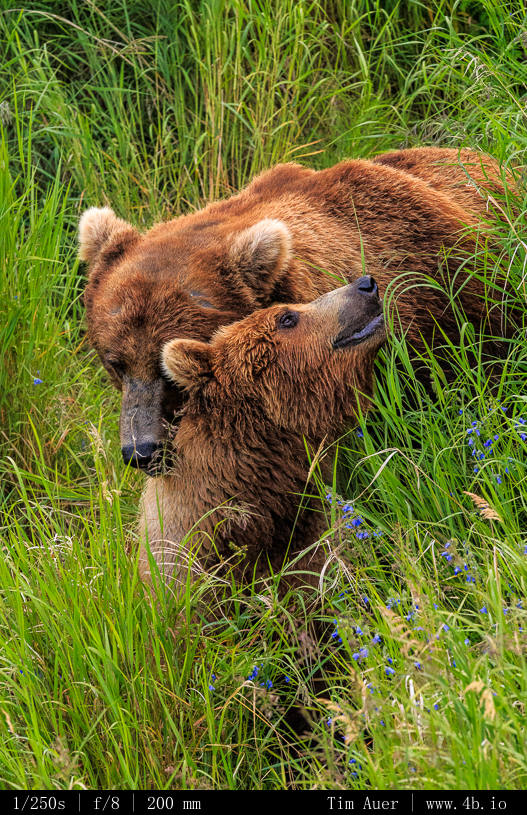
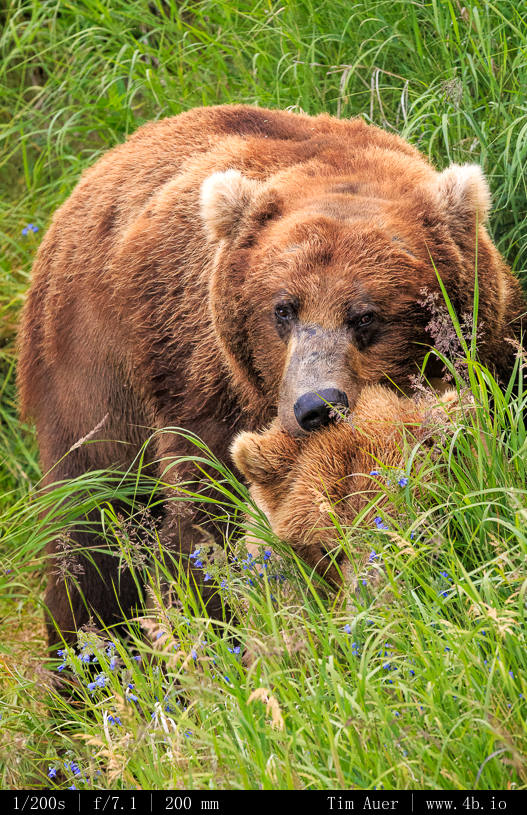
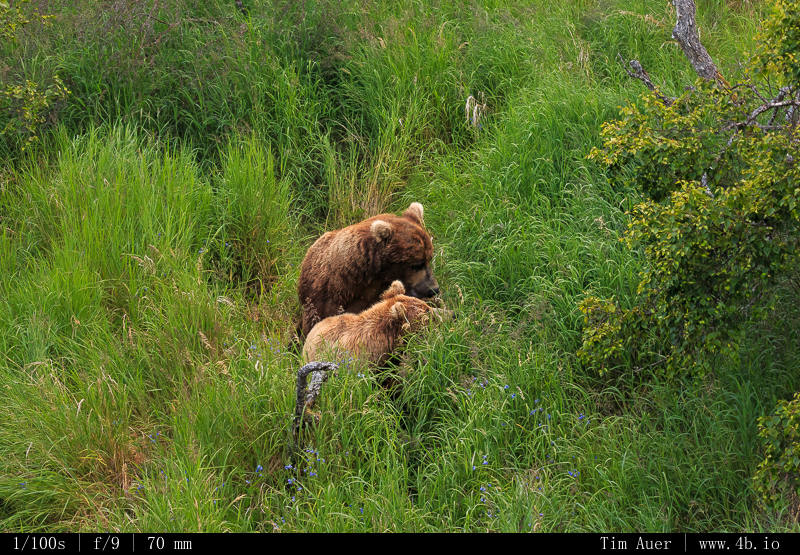
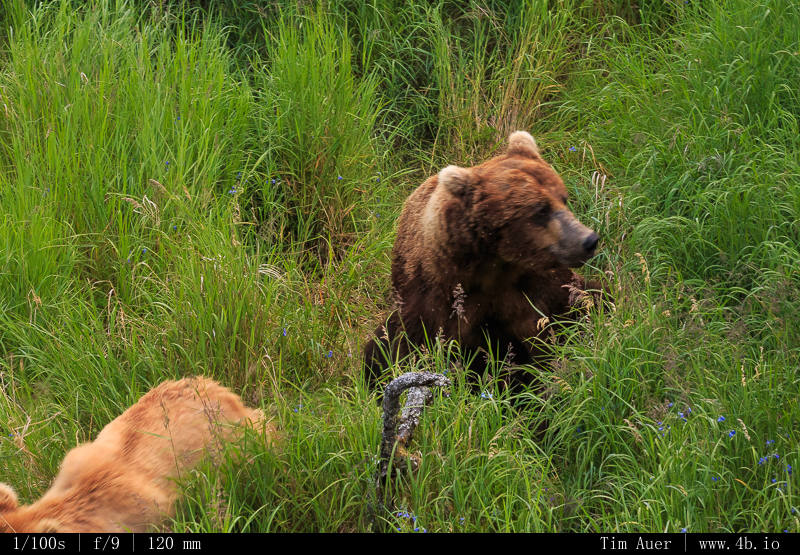
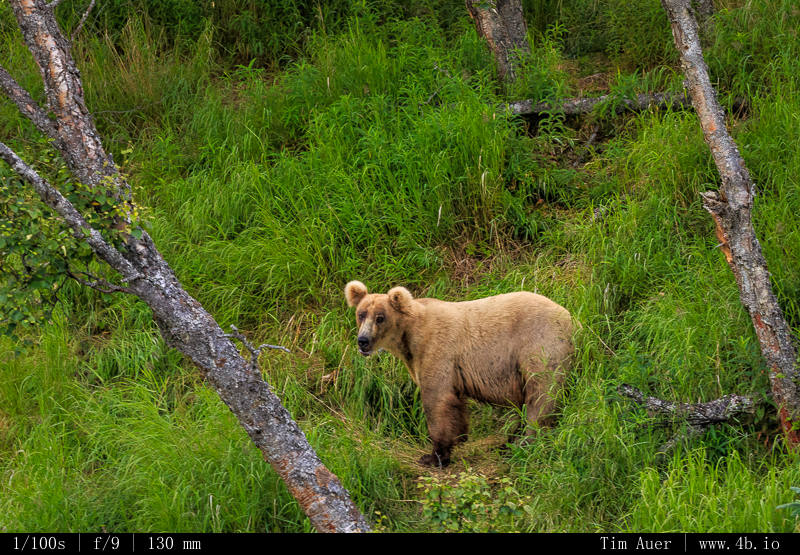
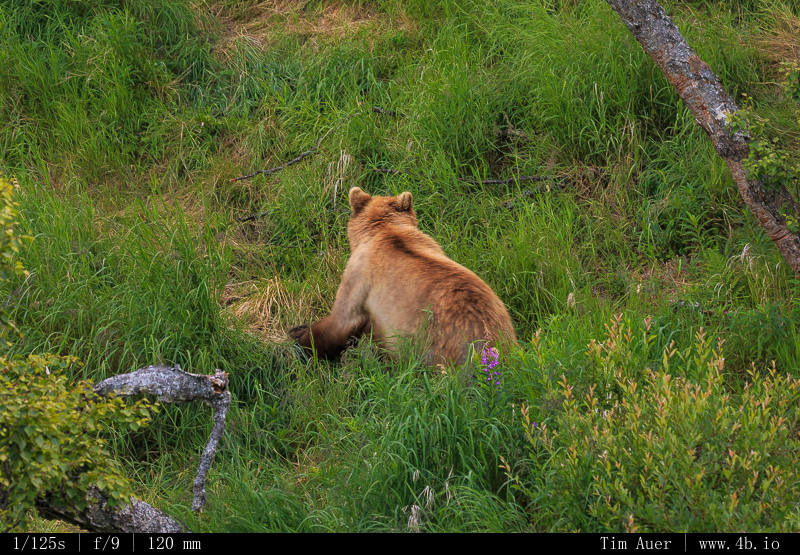
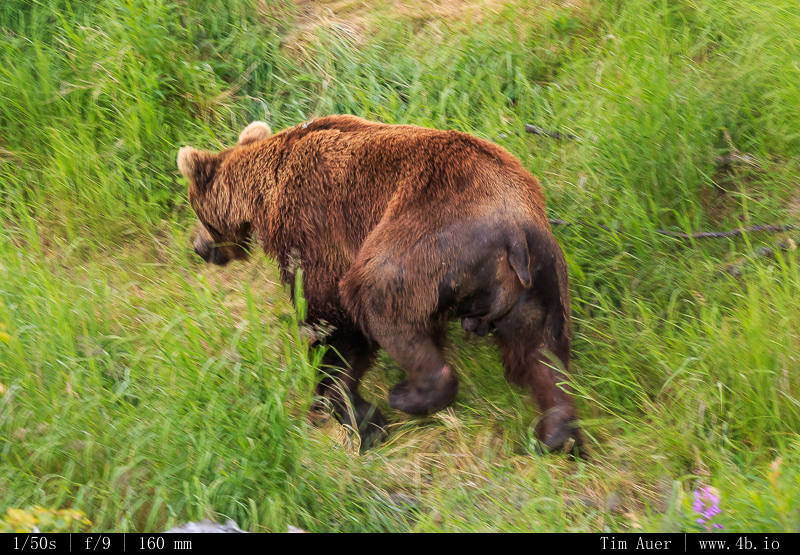
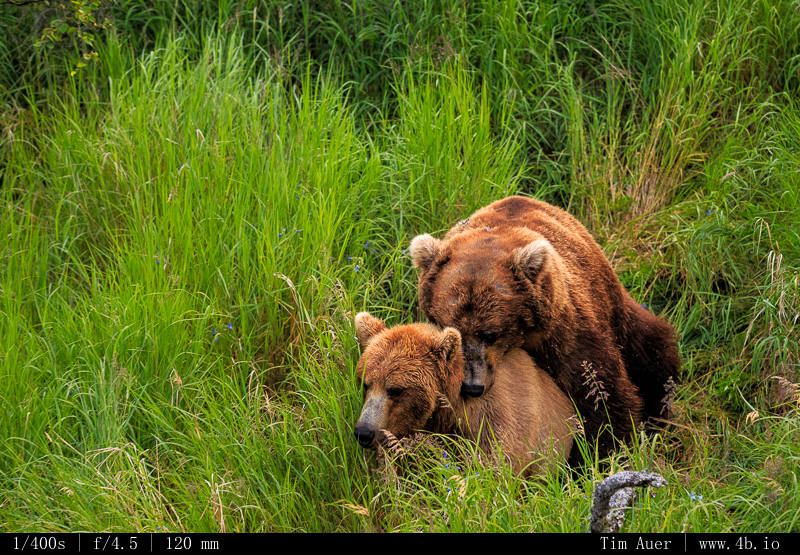
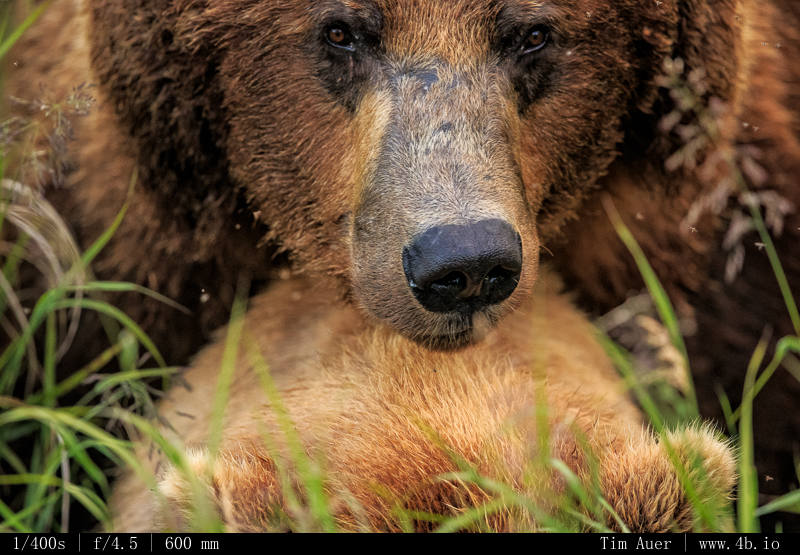
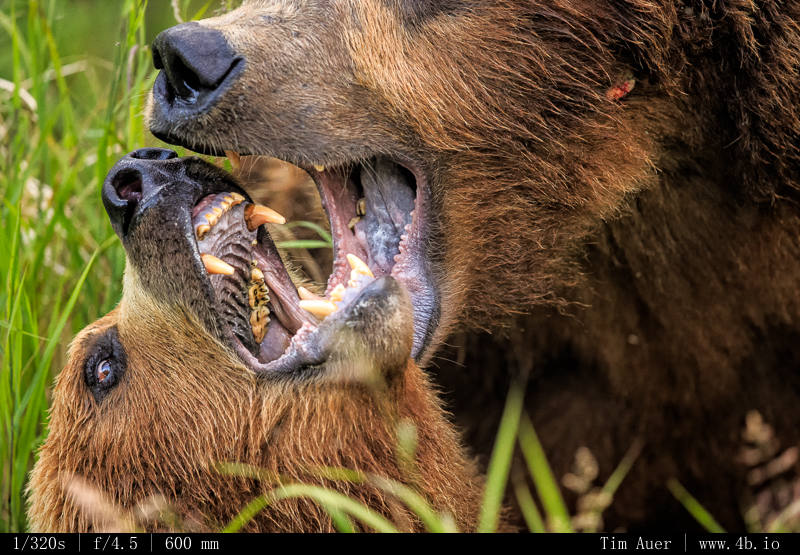
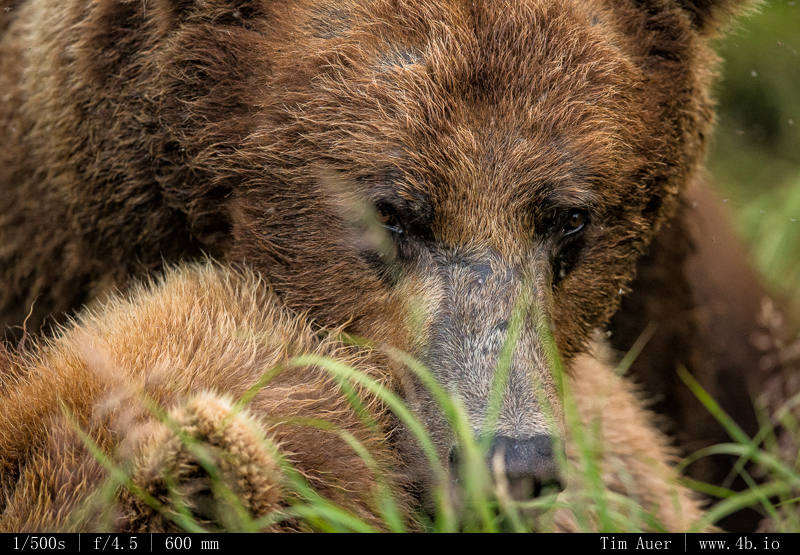
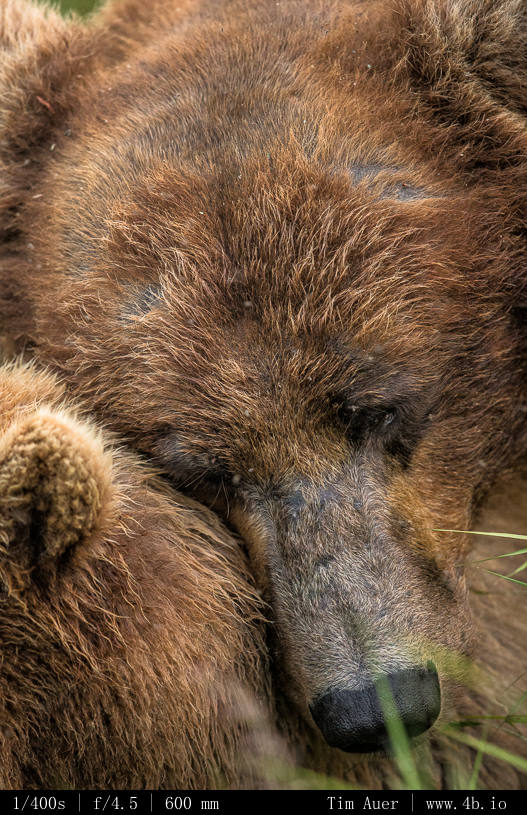
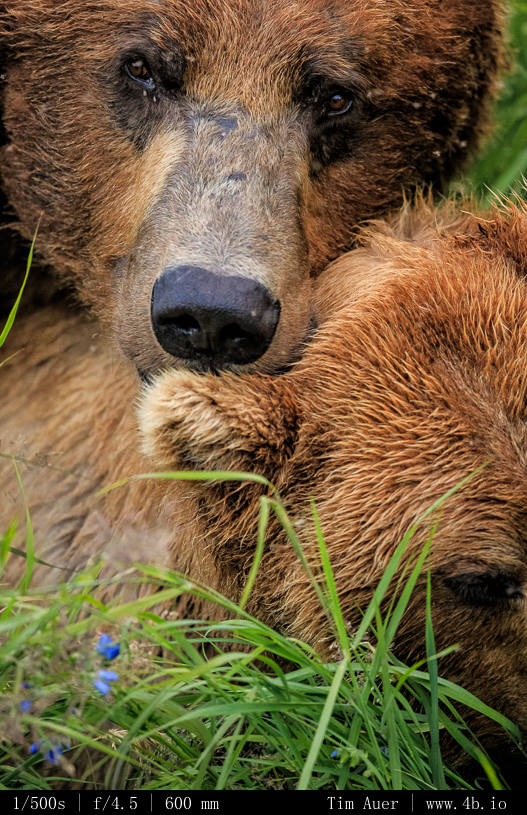
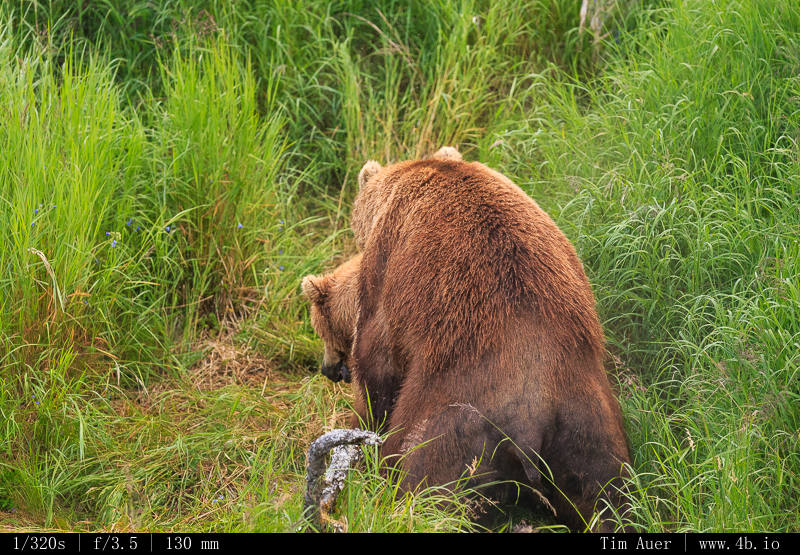
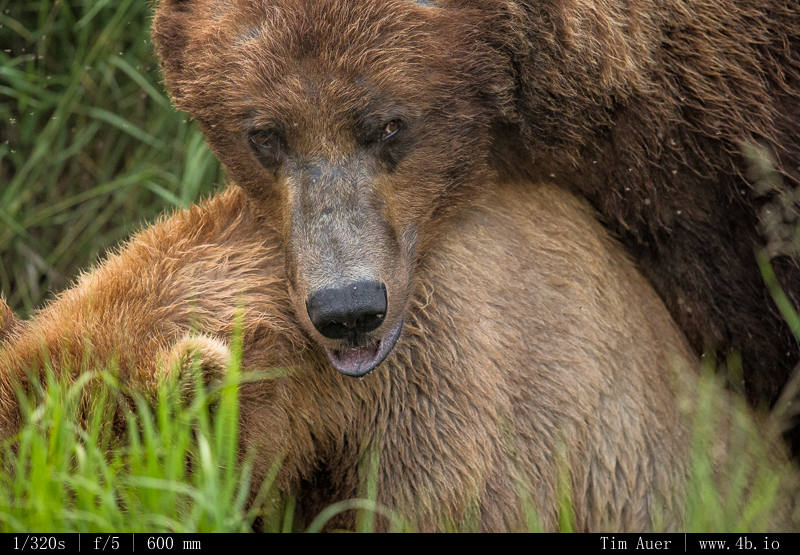
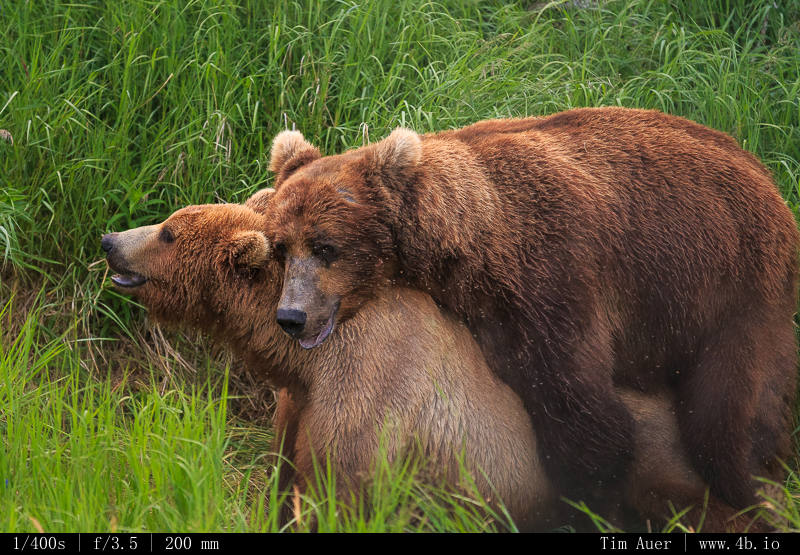
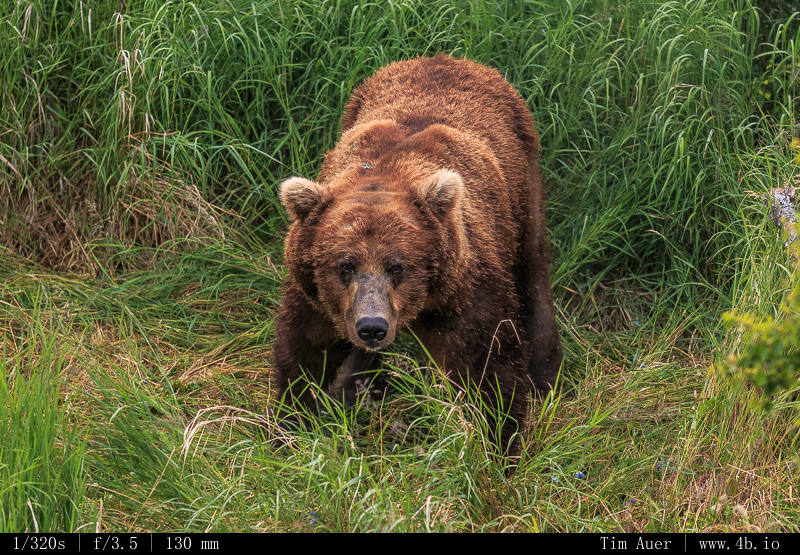
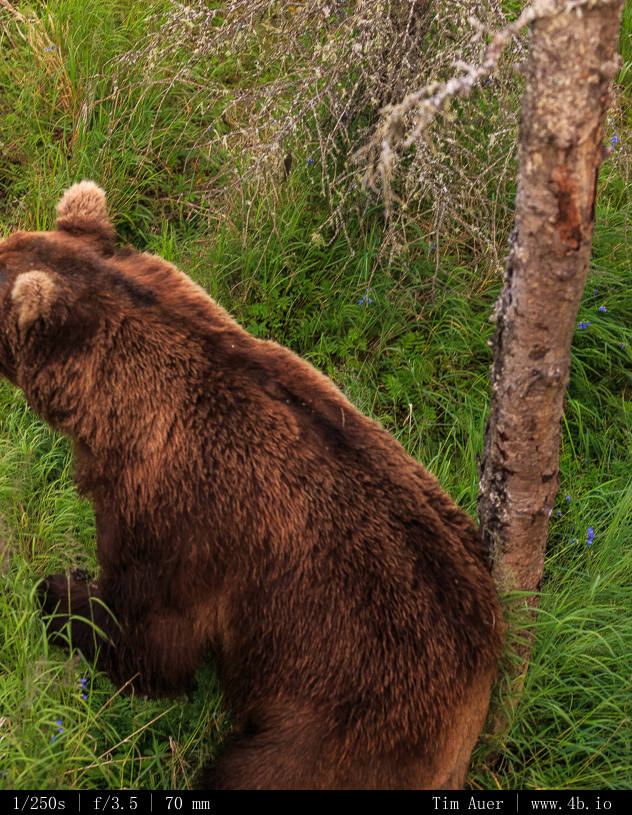
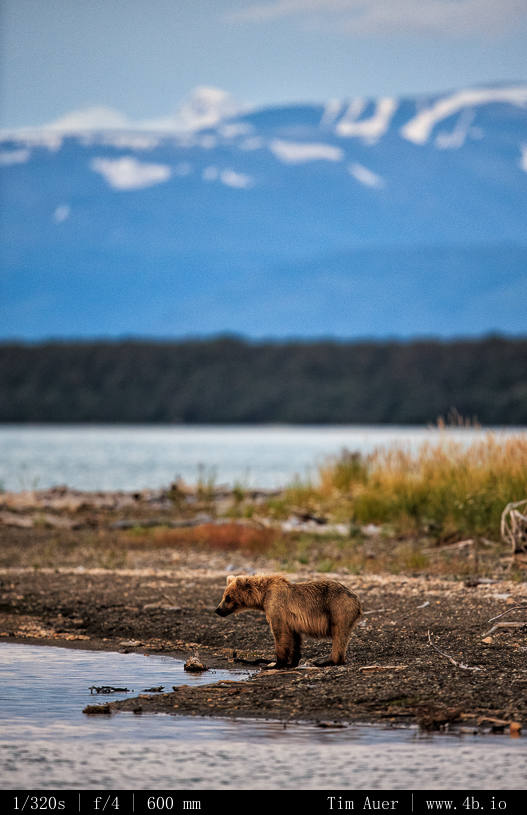
While sitting in my Mountain View office counting down the days/hours, it is difficult to contain the excitement I feel before my return to the Alaska Peninsula and the coastal brown bears that live there.
July is all about the falls. Brooks Falls. In the pre-salmon spawn days, this fall line acts like a speed bump, and delays the salmon’s arrival at its spawning ground. This bottleneck also happens to be the spot where the bears are at their highest concentration. In some years 70 bears have been recorded in the river at one time, jockeying for prime fishing spots. The falls typically feature the largest and most dominant males, but at times there are some bold (or starving) females+cubs. It is at the falls that I will spend the bulk of my time on this trip.
In preparation, I have been viewing the webcam, scouting the behavior trends of the bears. Based on the behavior of the last week, as the salmon run started to ramp up, most of the activity was early to late afternoon, and continued long into the evening and after midnight (sunset is after 23:30). Another good sign is the salmon have really started jumping today, with much higher frequency than in previous days. This is an important consideration because, like the bears on the falls, we humans may have to share time on the platform. So it will be good to know when the best times to be on the falls platform is.
As such, the photography may take a slightly different focus than other wildlife trips. First, the bears are going to be close. So close that my 600mm may not be the most practical focal length. Of course, I am still planning to bring that behemoth and will use that predominantly with the 1D-X, but lets see what my secondary lens on the 6D will be. Most likely will keep the 70-200mm at the ready, but am planning to bring my 300mm F/2.8 and give that a bit of a workout. At the moment, my plan is to be a “normal” person and only have two cameras strapped on, but this concept will be cancelled upon arrival and you will be able to see me with three massive body+lens combos (if I decide to re-activate the 1D-IV and use it with the 300.)
Only time will tell….
In the mean time, I finalize my trip preparations and read “The Beast that walks like Man: The Story of the Grizzly Bear” by Harold McCracken (1955)….see you in Alaska..
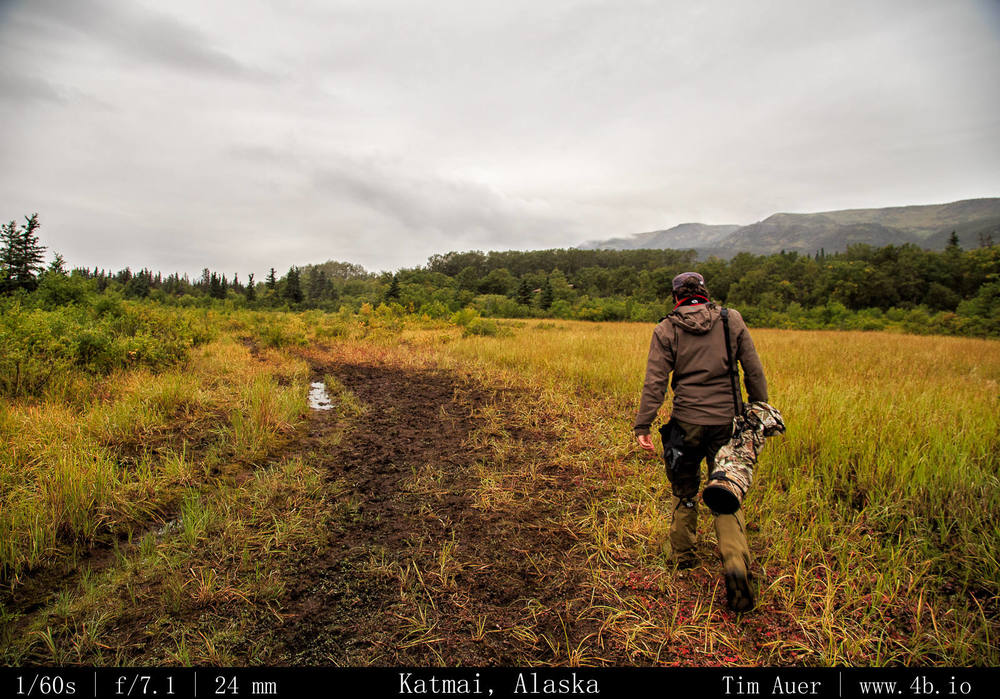
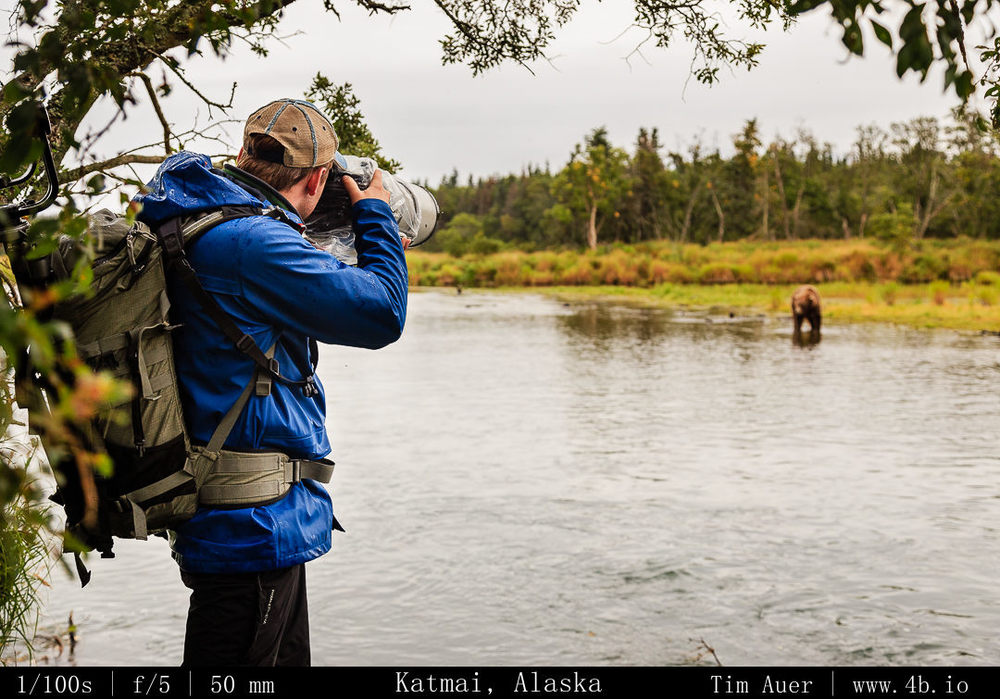
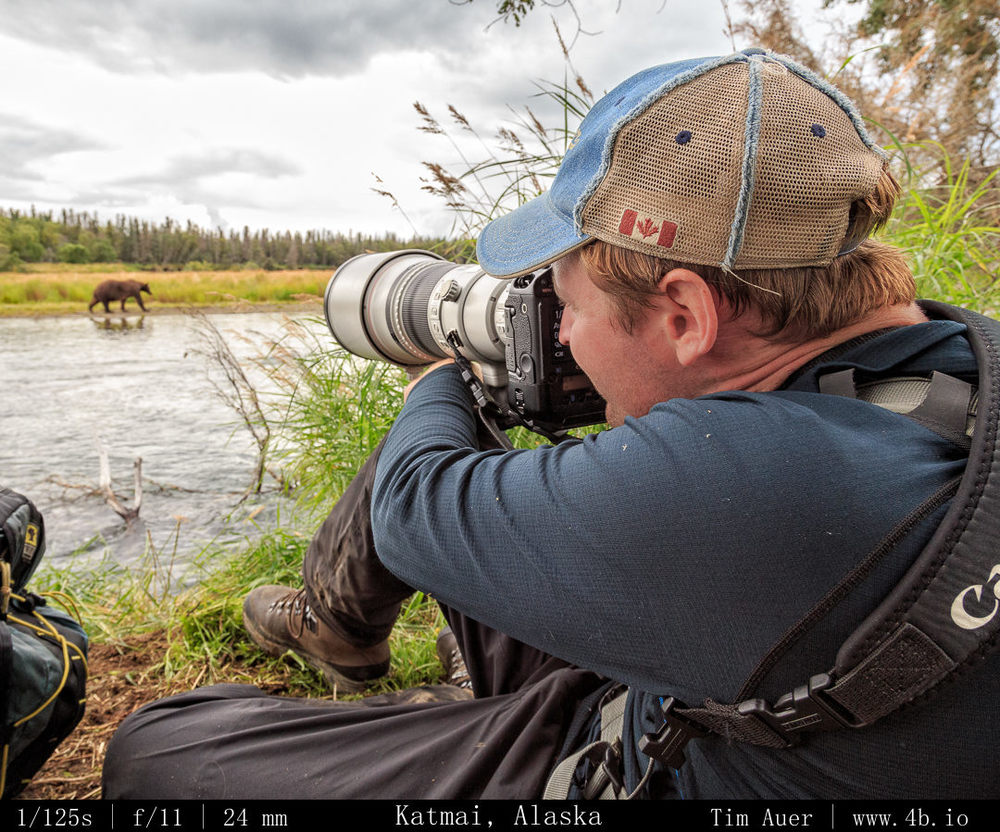
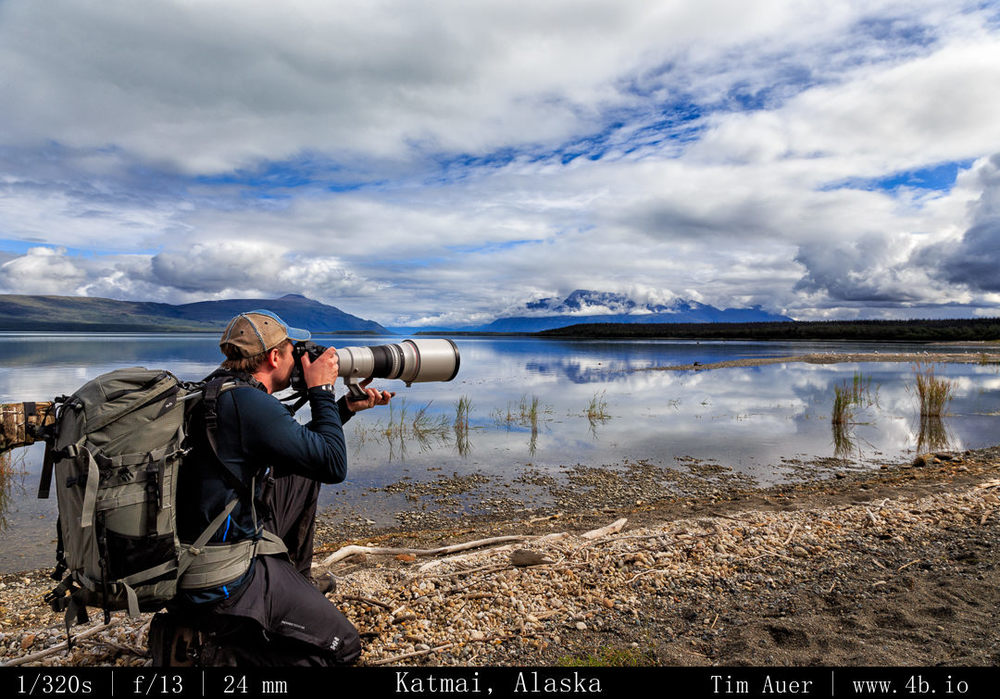
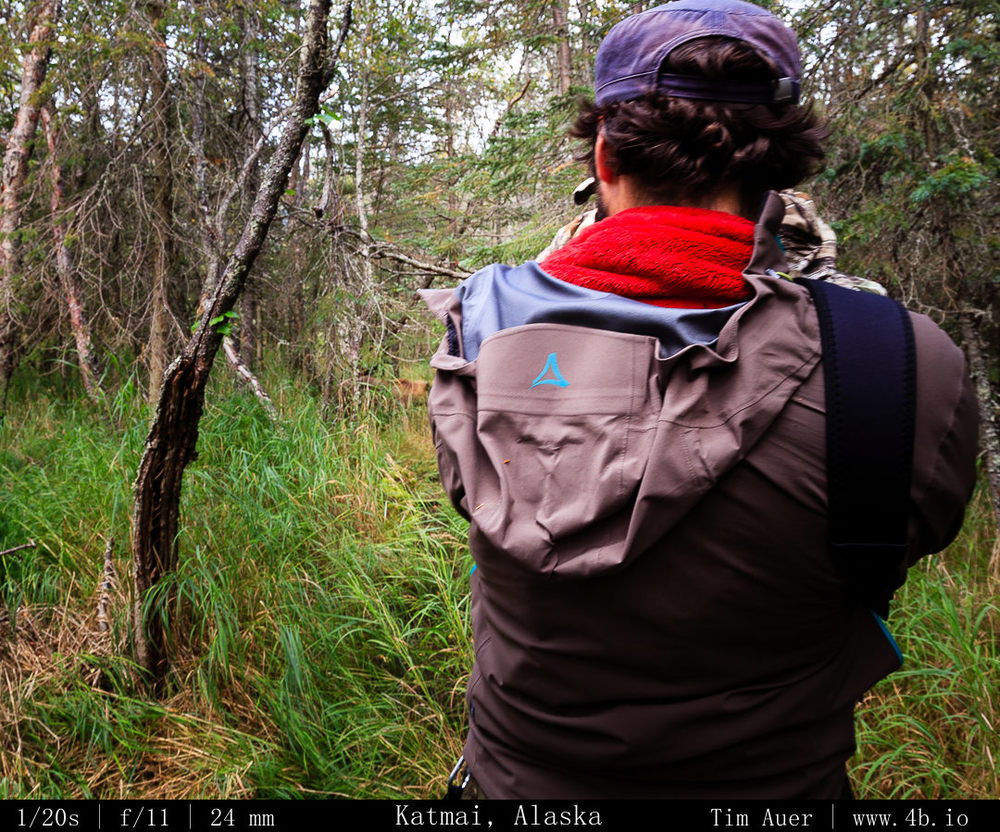
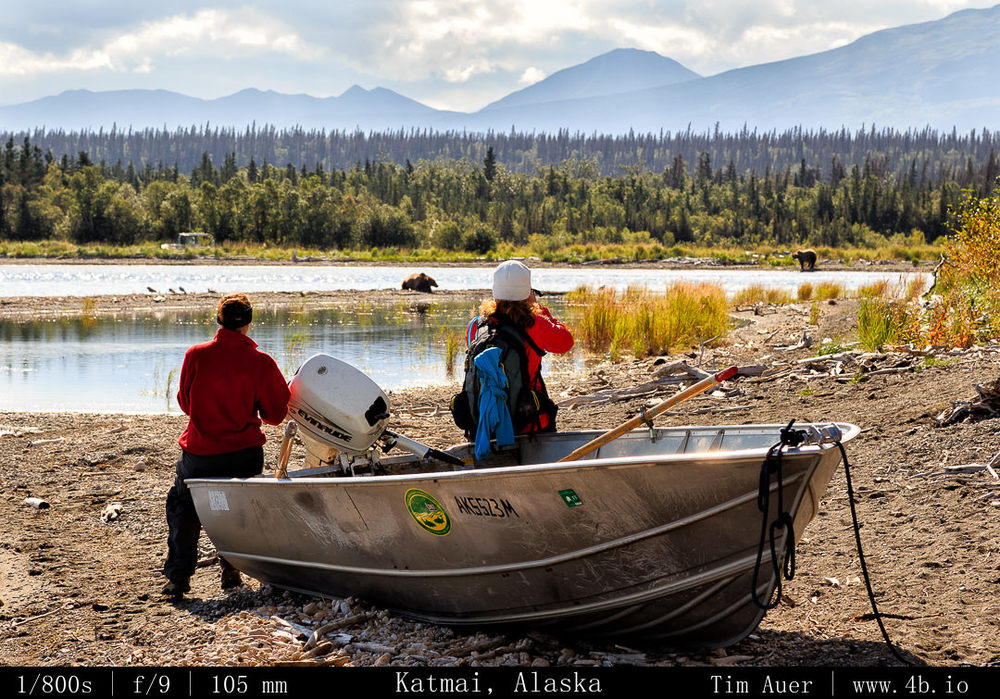
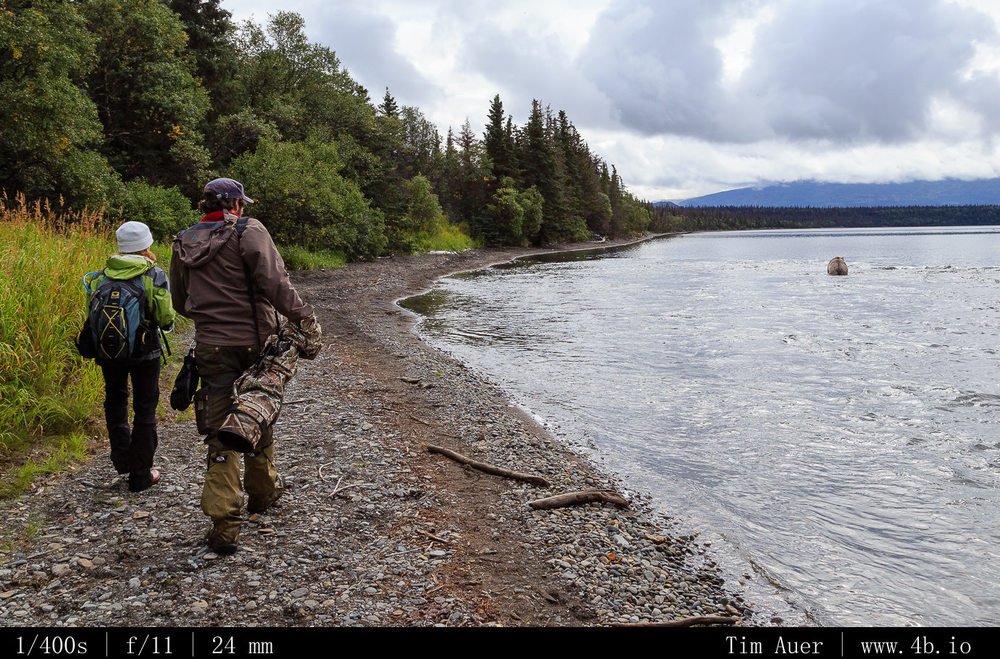
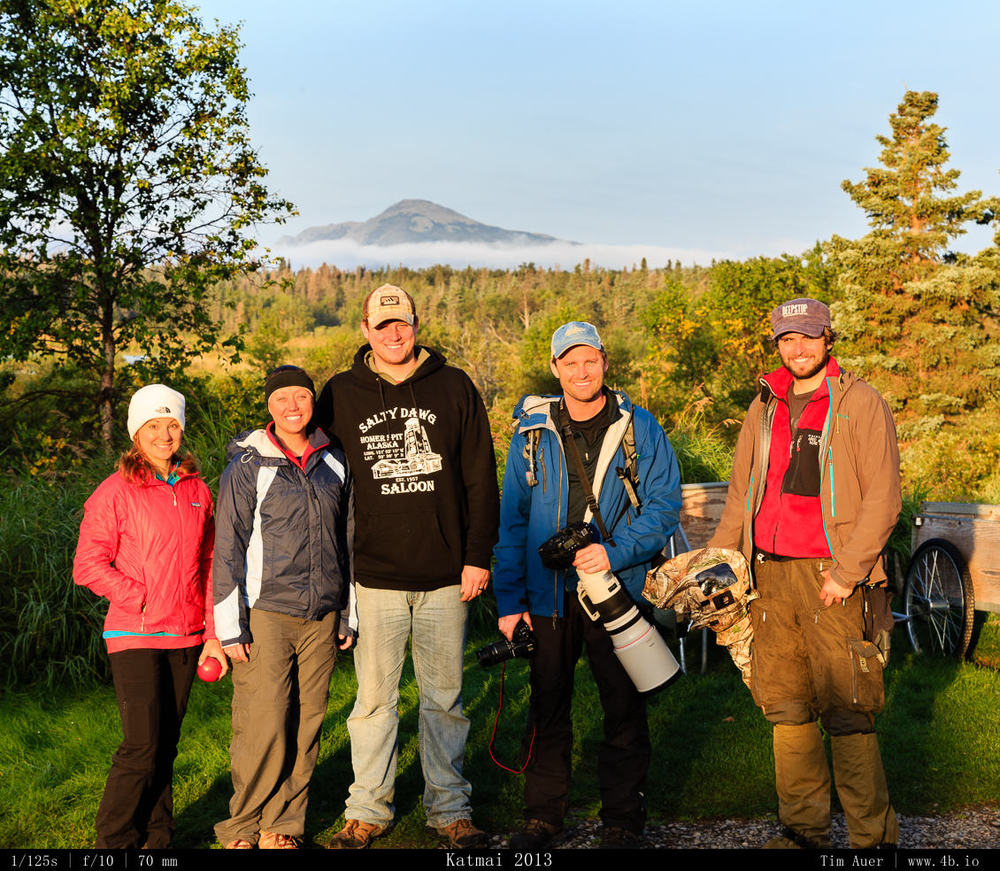
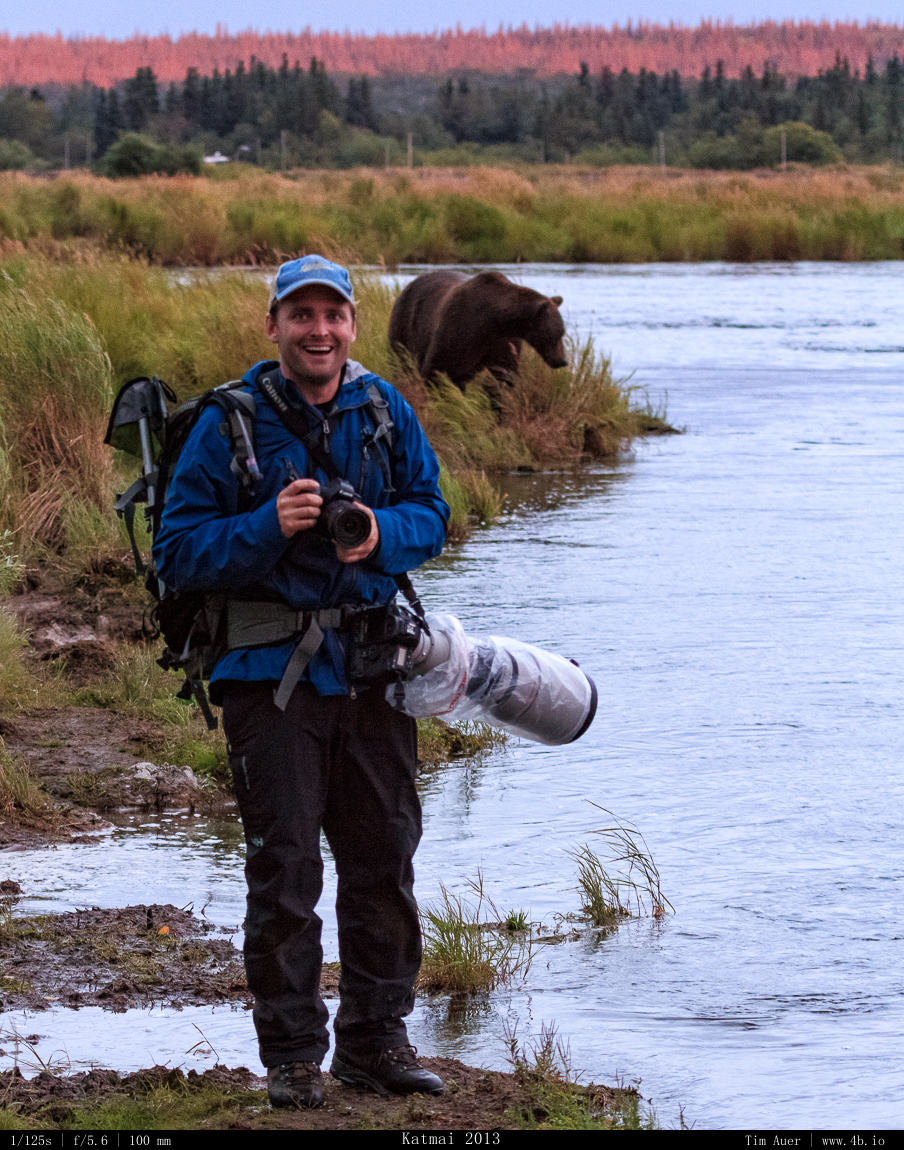
A first for me on this trip was seeing the aurora borealis. November is cloudy in Churchill and the up-to-minute solar forecasts for the Churchill area indicated minimal activity, so we knew the chances to see the aurora was quite low. Nevertheless, we prepared our gear each night that it was clear and went out looking for the lights. We fortunate to have ignored the solar wind forecasts, because at the hour (23:30) the activity was supposed lull, we noticed some faint flickering high above. Meril was driving, so I rolled my window down, leaned out, and trained my eyes straight-up and slightly to the north.
The first time seeing something that you’ve wanted to see for as long as you can remember is truly an incredible feeling.
There before my eyes was the solar wind, flickering and undulating in magnificent green waves. As my excitement increased, so did the intensity of the aurora. We were at the edge of town along the Hudson Bay near the Inuksuk, and thought this was as good spot as any to do photography. The show continued to intensify over the next 30 minutes, I was able to set up three cameras, two on tripods and one floater supported by a beanbag. During the most intense activity, Meril and I were the only two people in the area, and our experience (and photography) was not interfered with. As the display began to diminish, the crowds of people began to arrive. We weren’t in a remote location, just a short walk from the town center, but the previous night’s polar bear mauling served as a stark reminder of how very dangerous it is to walk the Churchill streets in Oct/Nov at night. But the people did come, and in numbers that would likely frightening away the most inquisitive polar bear. I could have found this irritating, and yes the guy who set up his tripod in front of everyone else was a bit clueless, but I found it to be enjoyable, witnessing the excitement It was the same excitement that I had felt 45 minutes prior. Plus I was in a good mood because I had already gotten my shot.
The next night was also clear on land (a massive cloud bank could be seen hanging over Hudson Bay and growing in size but not coming any closer. The weather system on land was doing a good job at keeping the clouds at “bay”. We expected the arctic air mass would eventually prevail and spread its clouds over Manitoba and the rest of north central Canada at any point. But it didn’t appear to be happening this night, so we went looking for the aurora again. Throughout the day, we were scouting possible locations to shoot from. We decided on the cemetery, which backs up right along the shore of Hudson Bay a mile or so out of town. This location has its pros and cons. It was a visually interesting spot for long exposure photography, far enough from the town center to avoid the crowds. But the narrow rocky beach separating the cemetery from the bay happens to be one of the more heavily traveled routes bears follow as they skirt past the town. And the only separation between the cemetery and that polar bear highway was a 4-ft chain link fence…we resolved to stay near the vehicle and not stray far.
As for auroral activity, the second night’s display was even more intense than the previous and lasted about two hours. I had a three camera set-up going again, and kept the exposures between 10-20s. At times, the sky was so bright with aurora, that if I used any longer of an exposure, the delicate waving curtains would be overexposed.
Here are some things to consider when attempting to capture the northern lights. First, find a darkest spot/sky with interesting foreground early in the day, normally with northern exposure. If the moon is out, look away from it and use it to illuminate your foreground. Again, given your location, a full moon will typically follow a southerly path.
Start with the following Camera settings:
– Use your widest Lens. (READ not your fastest, this isn’t astrophotography, if you are doing Astrophotography you should use a combination of fast and wide!)
– Shoot in Manual mode, Shutter=15s, ISO 800, Aperture = Wide Open (F/2.8 or F/4…whatever is the widest open). Be ready to adjust these setting as needed.
Focus: At night and in the dark, your camera’s auto focus won’t work. You will need to use manual focus or focus the lens to infinity/hyperfocal before sunset. If you have trouble manually setting the focus, use the moon or any other bright object in the distance, such as far away city lights, a ship, radio antenna, or ever a bright star. TO focus on these faint objects, set your focus to the center point, wait for the focus confirmation, flip lens to MF and don’t touch the focus barrel. The focus is set to infinity/hyperfocal and should bring your entire frame into acceptable focus, especially the aurora.
Use a cable release! If you don’t have a cable release, use the 2-second self timer to minimize camera shake. This step is very important.
Set camera on a tripod (or beanbag or bag of clothes), compose your shot, and make sure it is as stable as you can make it.
…then click away!
Depending on how intense the activity is, you may have to make adjustments. If there is a lot of movement and big, bright aurora curtains, a 15s exposure may be too long and overexpose the image. Decrease shutter to 10s. If the lights are faint and resulting image is too dark, first bump the ISO to 1600, then 3200 (depending on the body there will be increased noise, but nothing that unmanageable). If the image is still too dark after doing that, increase the shutter speed to 20s. Again. the area of concern here is that you want to preserve the movement of the aurora in your exposure.
As the aurora likes to reveal itself near the Earth’s poles, when it is dark, frigid temperatures seem to go hand in hand. So here are few more tips to keep in mind:

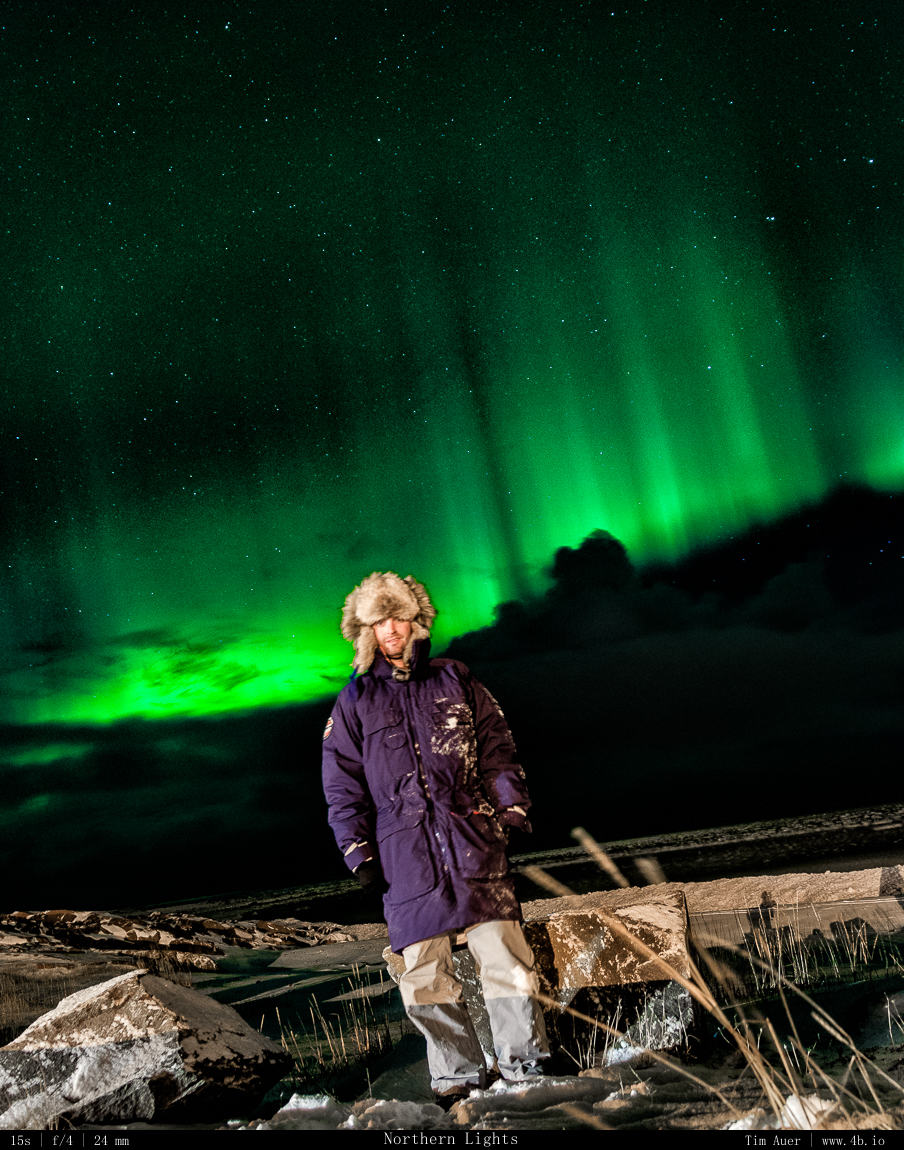
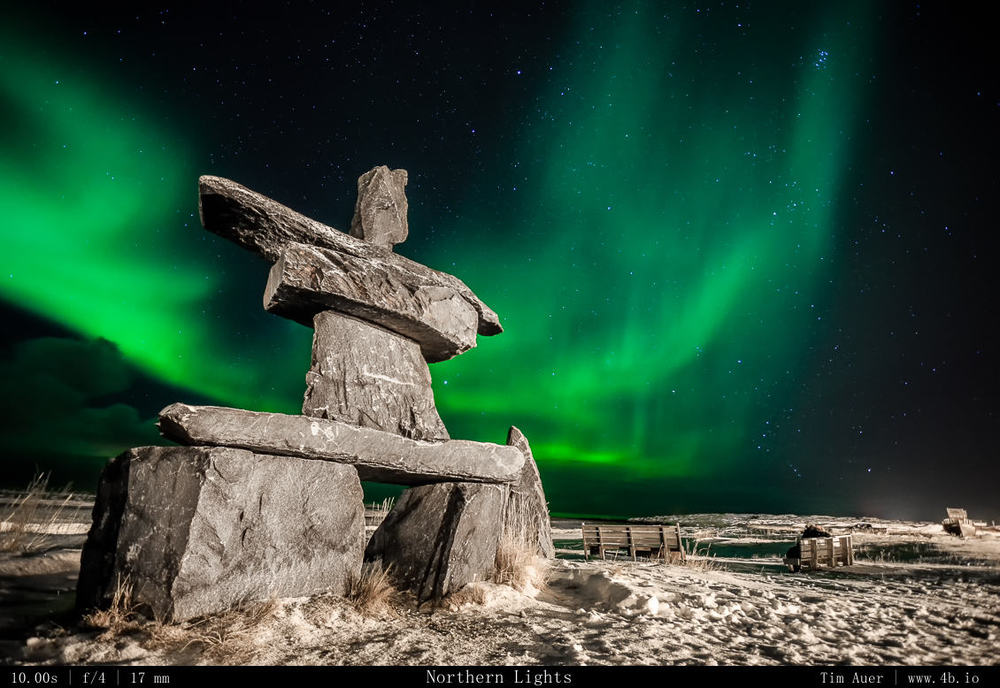


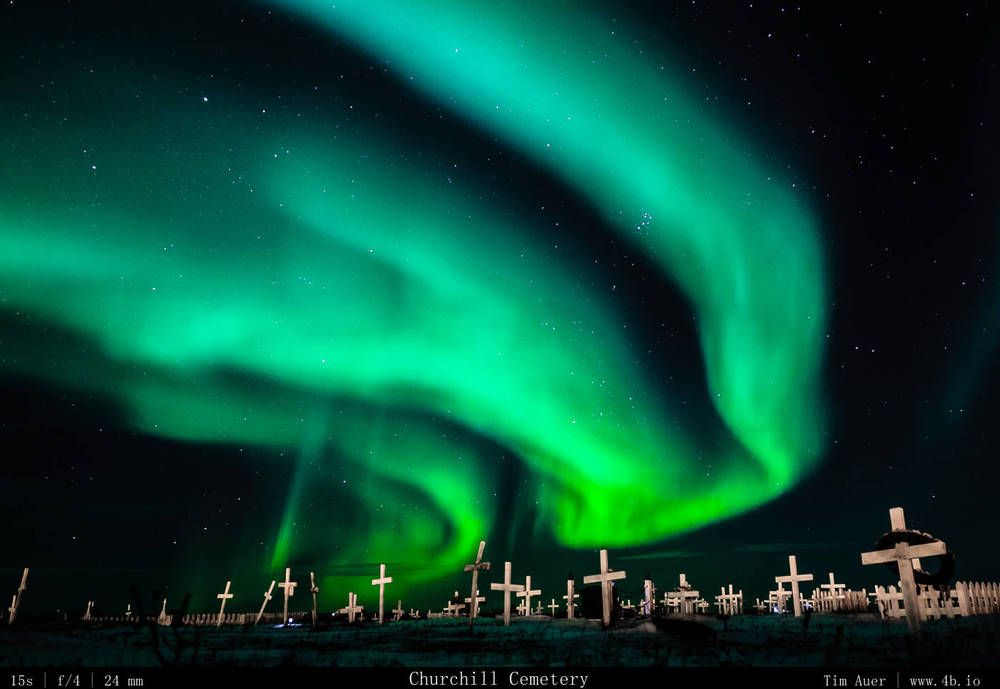

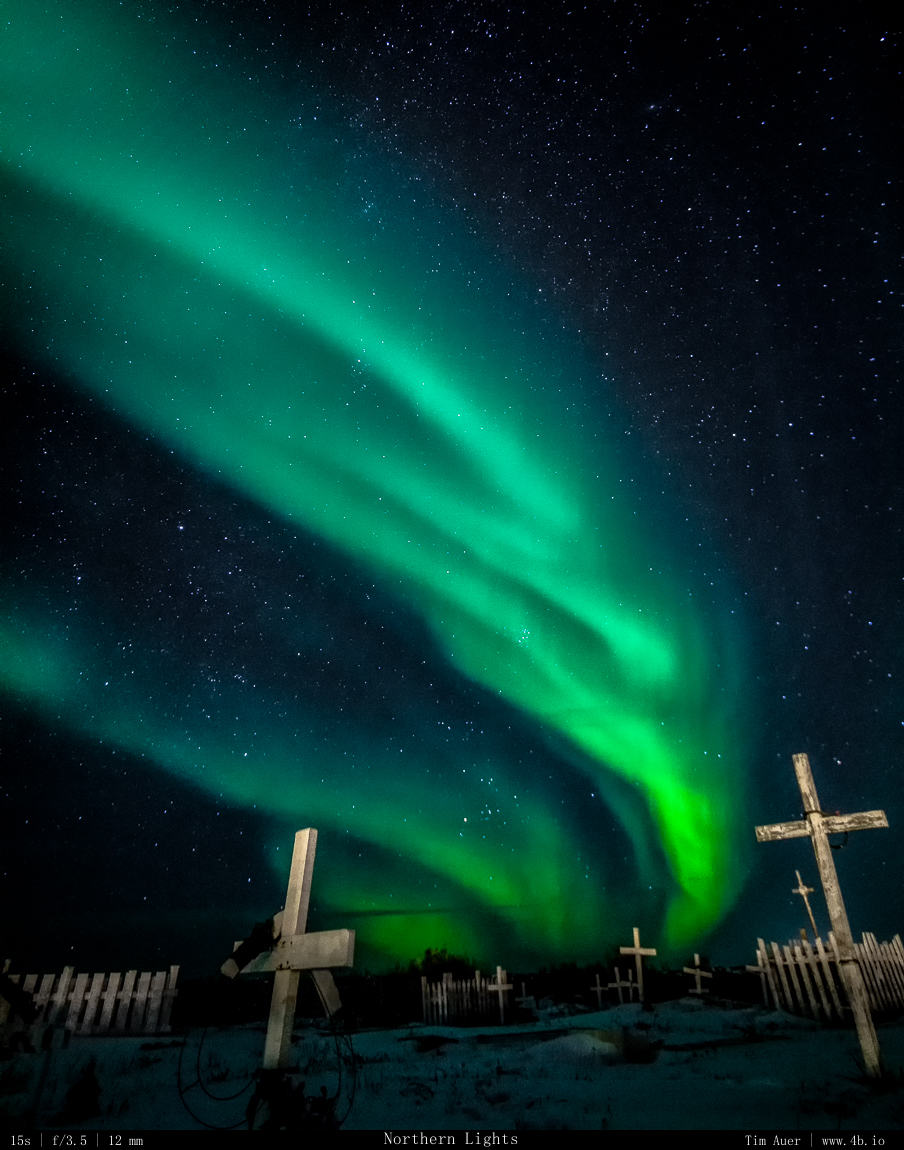
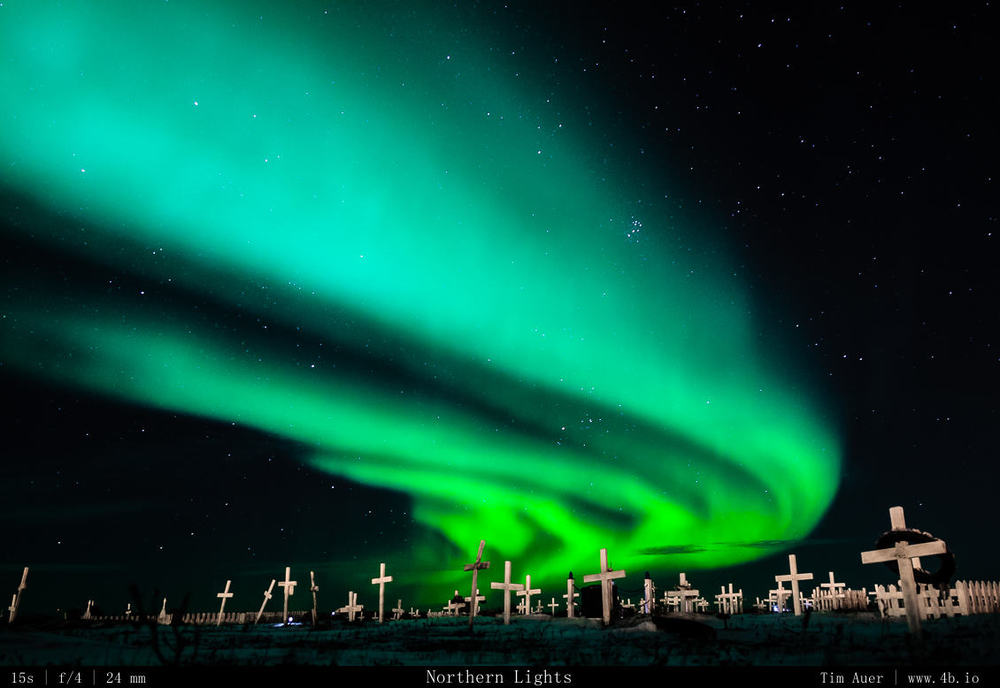
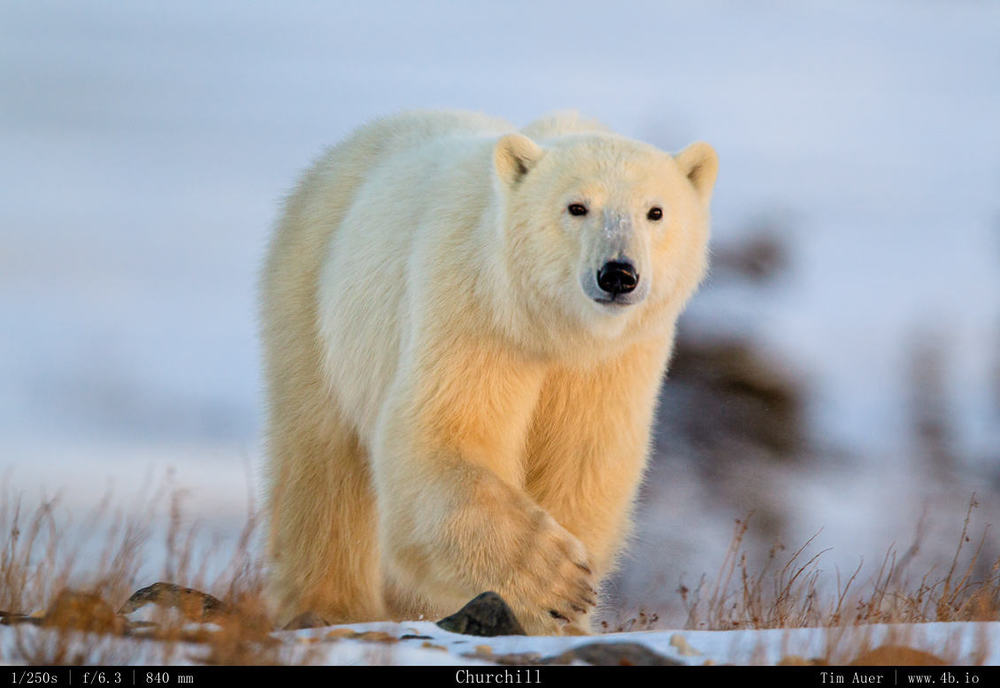
Getting there
All things considered, Churchill is moderately easy to reach, given its remote location and being the gateway to the Canadian arctic. It is not as easy to reach as a place like Yellowknife, but the connections from Winnipeg to Churchill on Calm Airlines are frequent, start early and end late. These convenient timetables allow you to maximize your time there, if you are so inclined. For me, when I go on vacation I tend to squeeze as much as possible out of each PTO day. The trip to Churchill was probably my most efficient trip to-date in terms of maximizing my efficiency. I arrived at Winnipeg at midnight, got some sleep, was flying to Churchill first thing in the morning (06:30), and searching for polar bears by 09:00. The return mirrored my arrival in the sense that I left Churchill at 20:00, and had a 06:00 flight out of Winnipeg.
Driving Report on Trip
Rented a Jeep Patriot from Tamarack Rentals. It gave a solid performance for the most part, but still left room for improvement in important several areas. The first complaint is we couldn’t lock the four-wheel drive differential, even when we disabled the ESP. Which seemly defeats the purpose of having 4-wheel drive. The windows are small and there isn’t much vertical, which made it difficult to handle large lenses.
In terms of changing tires in polar bear country, we learned that the important thing to keep in mind when doing this type of activity, is to remain aware of your surroundings. It is easy to become fixated on the task at hand. Specifically you focus your eyes downwards on the tires and underside of the vehicle. You want to solve the problem and be on your way, as quickly as possible. The problem with this approach is that you are often ignoring your surroundings. In Churchill, this introduces an entirely new level of danger, the land of white bears on white land and white sky. Constant awareness and guard must be taken to avoid a bear surprise. And they seemingly pop up out of nowhere….
This is why I repeated the following Inuit Proverb over and over in my head:
Arrived to Winnipeg late on Tuesday night. The weather was cold and relatively clear, temperature was 26 degrees. Will continue the journey at 06:30 tomorrow morning on a flight traveling an additional 1100 miles due northwest to the extreme edge of Manitoba, at the gateway to the Canadian Arctic.
The tiny town of Churchill, deemed “polar bear capital of the world”, for having the highest concentration of white bears in the world. As a result of this notoriety, Churchill might also be the most famous 800 person town in the world.
The bears here, after spending a summer wandering in a suspended animation, haven’t eaten anything since June or July and are hungrily waiting for Hudson Bay to crust over and freeze. The shores are beginning to slush, ice is blowing in from the north, and the bears are getting excited for the winter and prospect of a seal hunt. For the next 7 days, it is at this stage that we join them….
For those in the mood for some Canadian folk music…the great Stan Rogers:
Now for a gallery of the people who made this trip a success! (And to give some perspective on what it is like to experience Katmai up close.) But first a quick review of the gear….
Previous Katmai Posts
Katmai: Bear Behavior
Katmai: Float Plane Lift
Katmai: Cubs
Katmai Packing List
Katmai: Otis Eats a Salmon
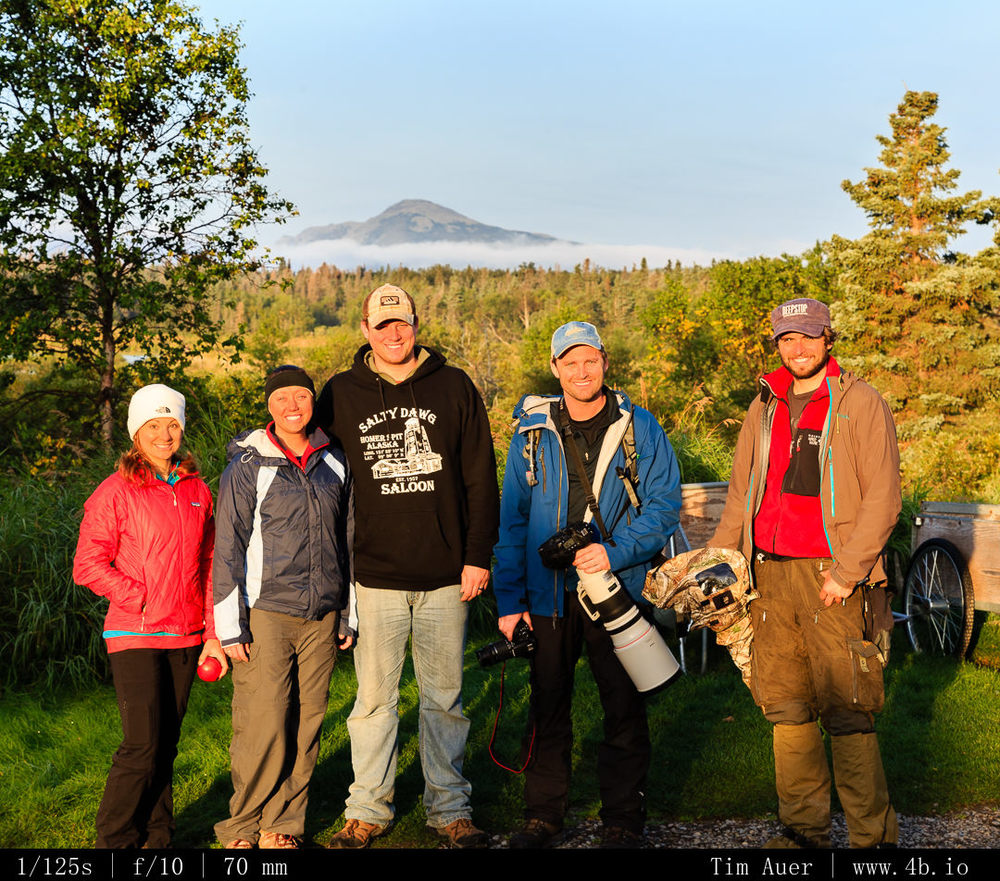
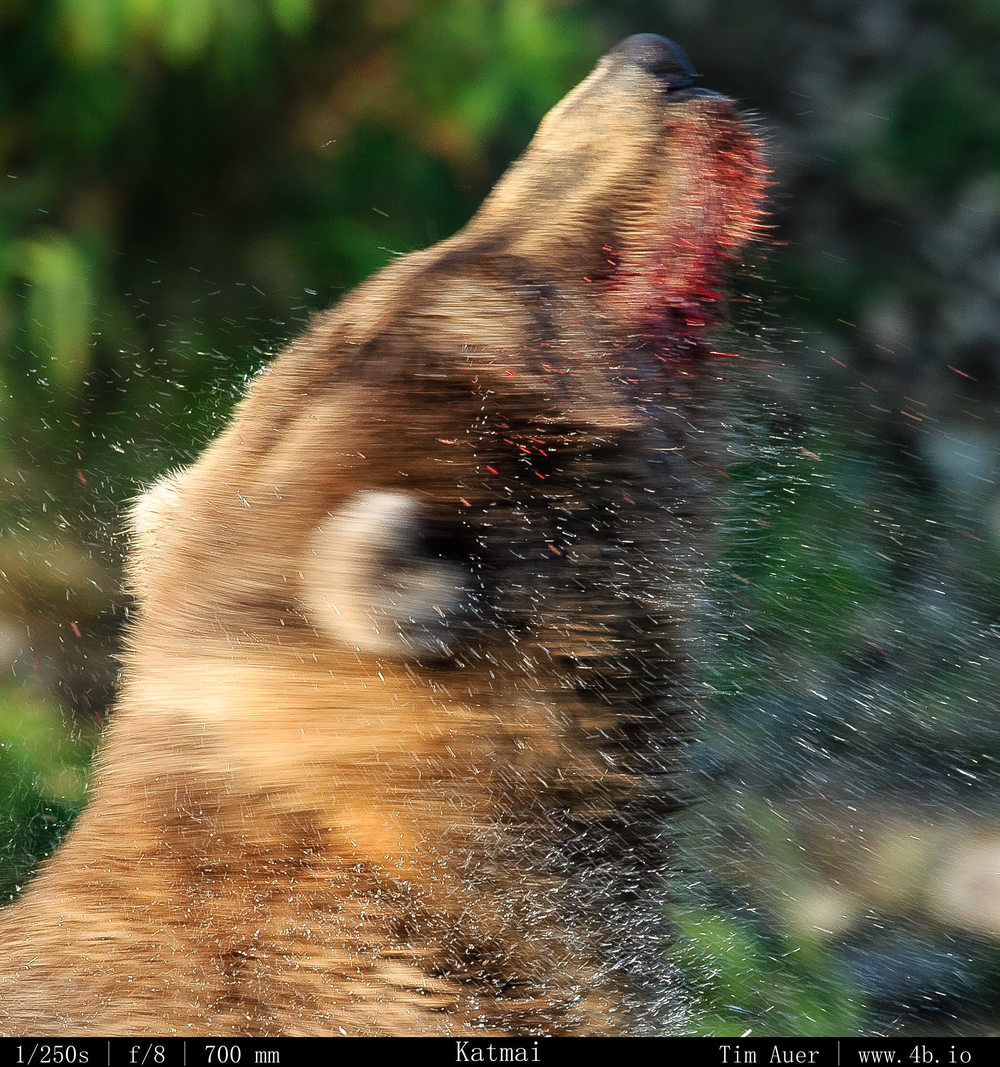
Canon 600mm F/4L IS II
Canon 500mm F/4L IS II
Canon 300mm F/2.8L IS I
Canon 100-400mm
Canon 24-105mm
Canon 17-40mm
Canon 1.4X III
Canon 2X II
Canon 1D-XCanon 1D Mark IV
Canon 6D
Canon 60D
To begin, I’ll start with the glass that was used. First a disclaimer, the 600mm and the 1DX did not belong to me, it was Meril’s, who let me use it when he wanted to give his back a rest 🙂 I swapped the lightweight 500mm with his heavier 600mm as a service….
This trip was my first time using either of Canon’s new fluorite super telephoto lenses (the 500mm II and 600mm II). I rented the 500mm from lensrentals.com, and had it shipped to my hotel in Anchorage the day before my arrival. The image quality and usability of these two lenses offer an unparalleled experience, comparing to any other piece of equipment I ever used.
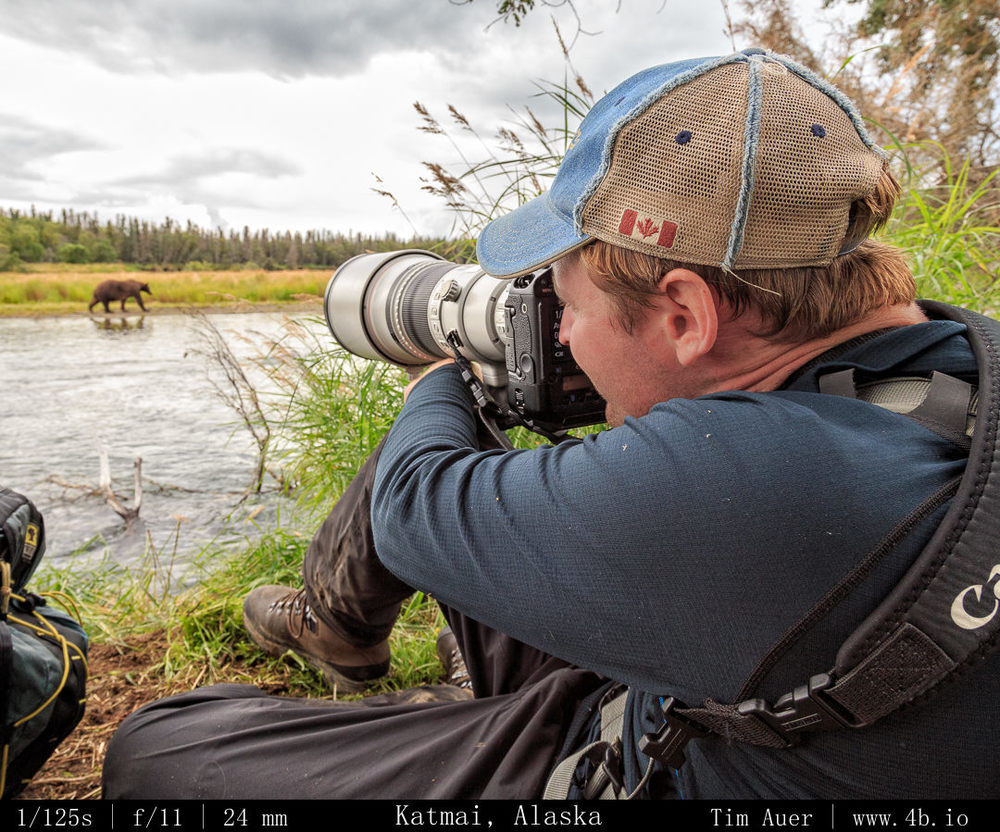
Before the days of image stabilization, a photographer was forced to work within the limits of a super telephoto lens, like a 500mm or 600mm. Sharp images depended on various conditions to be satisfied. To list a few:
– Impossible to handhold, minimum shutter speed must exceed 1/F s for sharp images (e.g. 1/500s; 1/600s)
– Require gimbal head and large, stable tripod (like a Gitzo 5-series)
– Use extenders sparingly, due to degradation of image quality and loss of stop(s) of light
– Panning or Tracking? Don’t forget the switch between IS1 and IS2.
– Arms falls off due to muscle fatigue if handholding longer than 90 min (weight)
– Must go home as sun begins to set (not enough light, and arm is too tired from holding)
Most of these rules or conditions do not apply to the 500mm II and 600mm II. And if a rules still applies (losing stops with extenders), there are other features that help to counteract them (the advanced IS helps manage the loss of available light when using the extenders- assuming the subject remains still enough that is). Both of these lens defy conventional logic and seem to break all the rules.
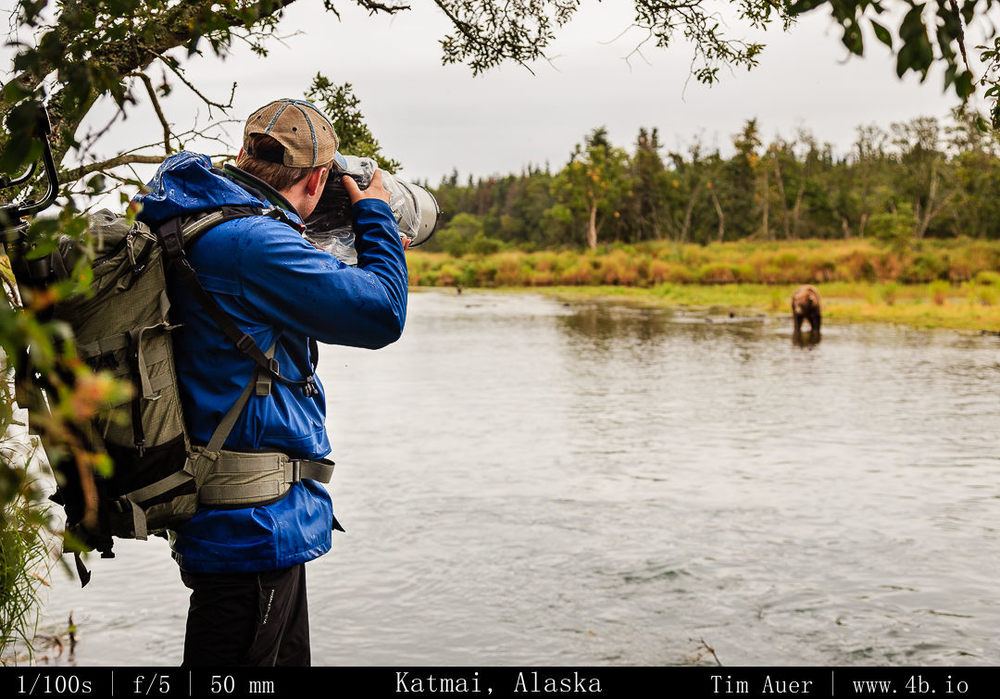
So what lenses should you bring on your visit? Based on the accounts of other photographers, its seems the majority recommend a mid-range telephoto as being the most suitable lens for Brooks Falls. Which seemingly contradicts the praise in the previous paragraphs. I would argue that, depending on the time of year you visit, both opinions are correct. In July, when the bears gather en masse at the falls, a wider tele would be beneficial. But in September, when the bears are more spread out and isolated, a narrower tele has the advantage. (in my opinion)
So what would I bring next September:
Lets take it in increasing layers of gear….If I only had…
1 lens/1 body:
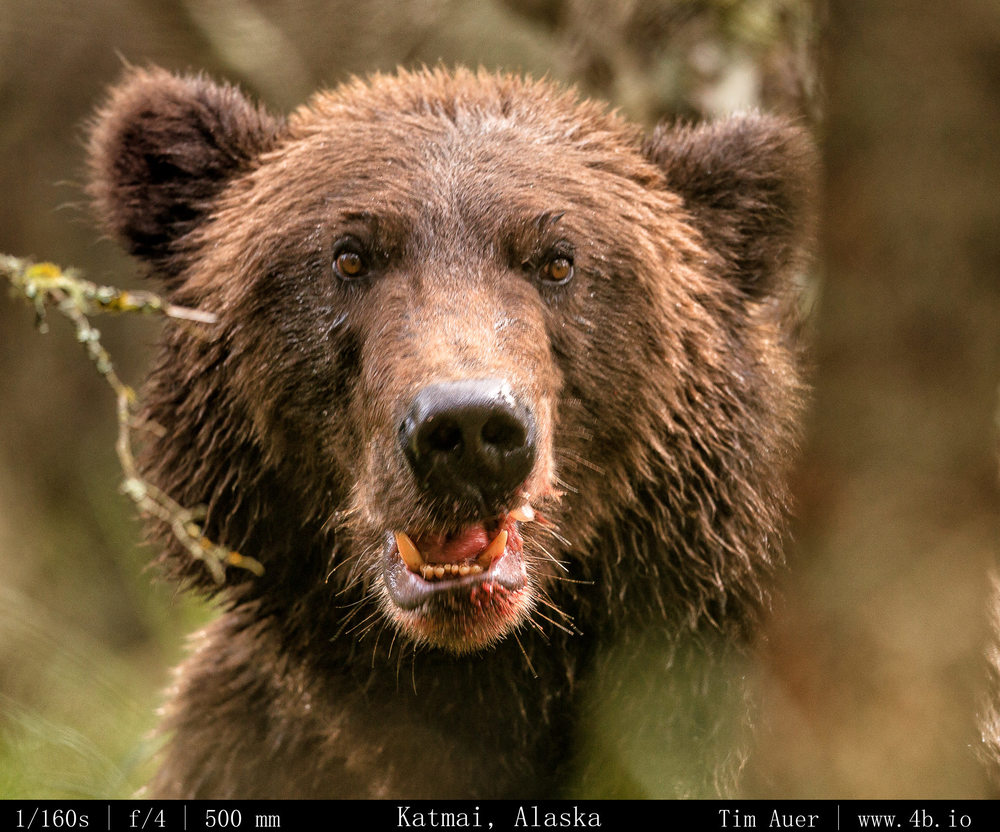
600mm / Canon 1DX or 1D Mk. IV
If I could only bring a single lens and body set up, I would bring the longest possible lens, coupled with my highest performance body (whatever that may be). The key features of the body are auto-focus ability and frame rates. If the 1D failed on me, I wouldn’t switch to the 6D, I’d use the 60D because it has better AF and FPS. Important to note: Even if you don’t have a super tele, great images can still be captured with shorter lenses. As the above photo indicates, there were times when the 500 or 600 was far too much. And if you want to see stunning images from the trip that didn’t require a 600mm lens, check out Julien’s results. His longest lens was the 300mm you see below, nudging Meril backwards.
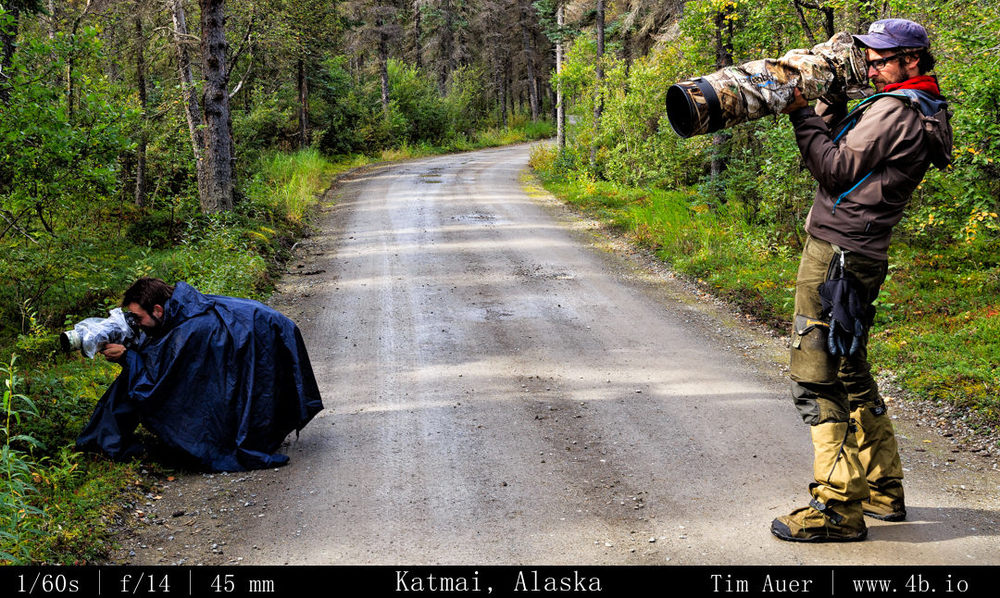
2 lens/1 body:
600mm + 24-105mm / best performing wildlife body
The 600mm would be used for the majority of the time, but on the occasional landscape the 24-105 would be swapped in.
2 lens/2 body
600mm + 24-105mm / 1D + 6D
Longest lens on 1D. 24-105mm on 6D. This was my set-up for ~98% of the trip (percentage based on shutter actuations). This allowed me to have maximum optical reach, while still being able to take landscapes and personal photos of the group (this gallery is almost entirely taken with the 6D+24-105 combo).
I rarely used a tripod for this trip, despite carrying two on my back for most of the time. From the positions that we were shooting, handholding was the preferred style. Over the next few days, I gradually began to leave the legs behind in tent. The tripod and gimbal head did come in handy anytime spent on the platform.
However, the most important development to come from my experience on this trip out on the Alaska Peninsula is the 600mm. In the time since I’ve been back, I went out and bought the Canon 600mm F/4 II lens. It will accompany me tomorrow for my journey north to the Canadian tundra for polar bear photography….
Now for the gallery…notice how tall the grass is we were walking through. It was tall enough to completely conceal a bear from sight, only to be discovered as we stepped perilously close…
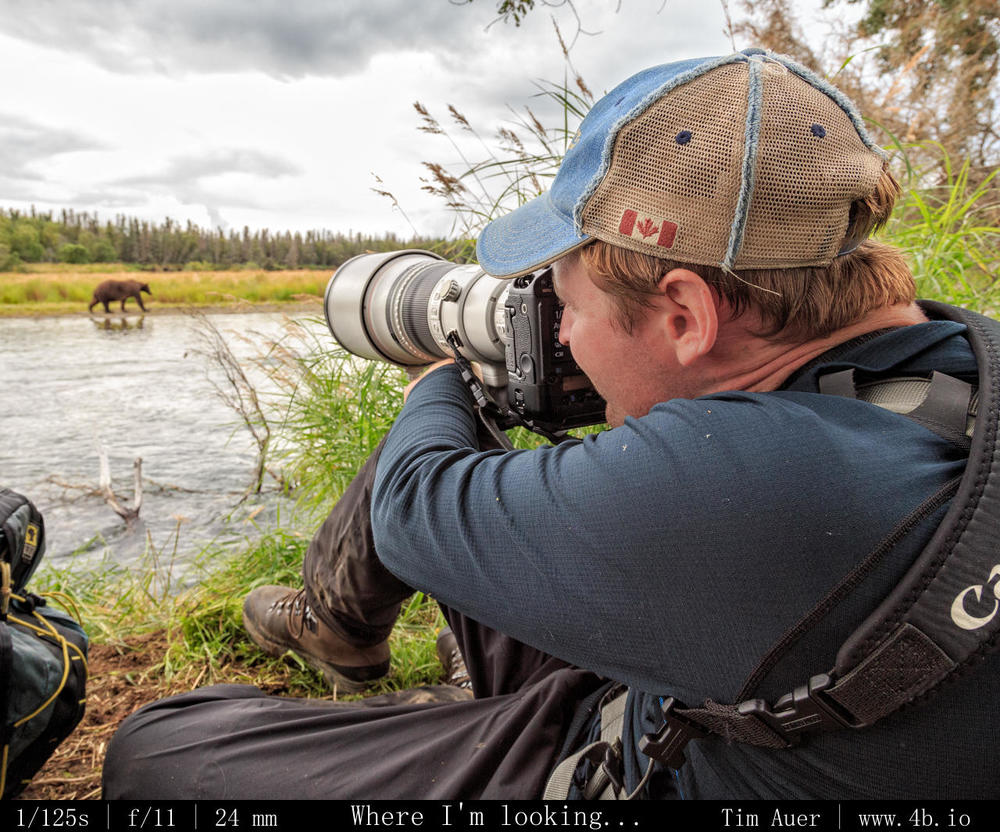
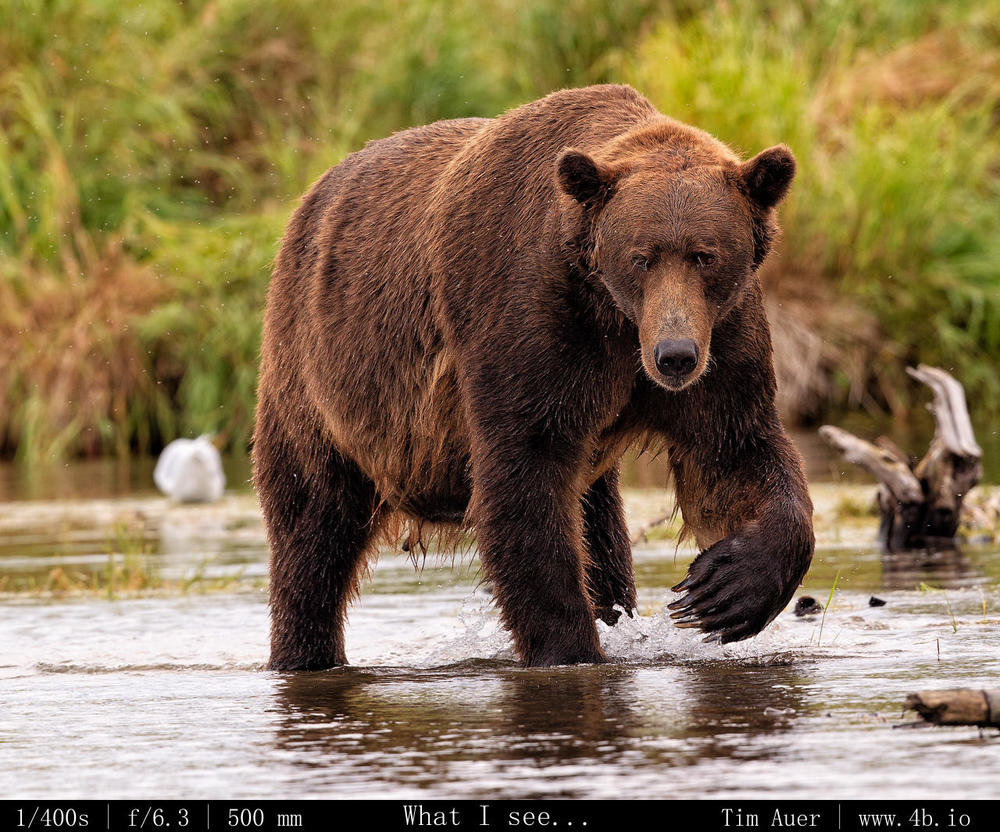
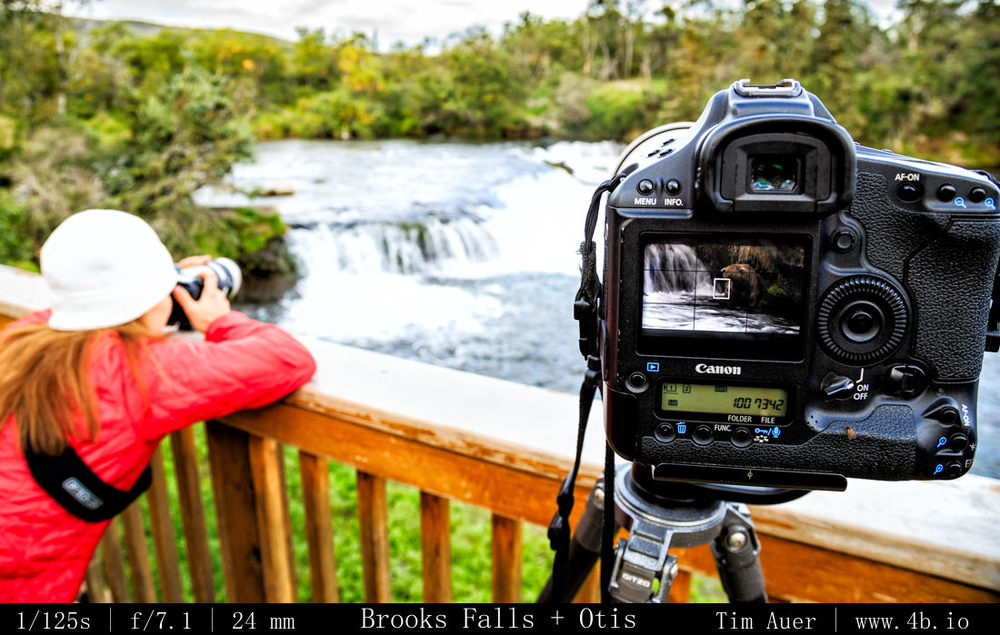
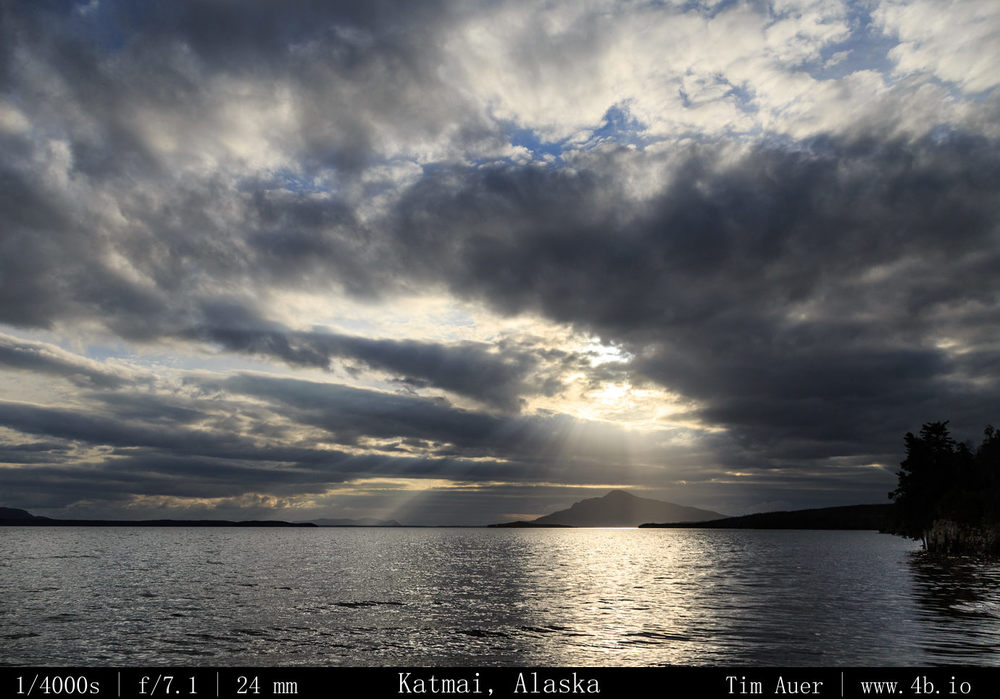
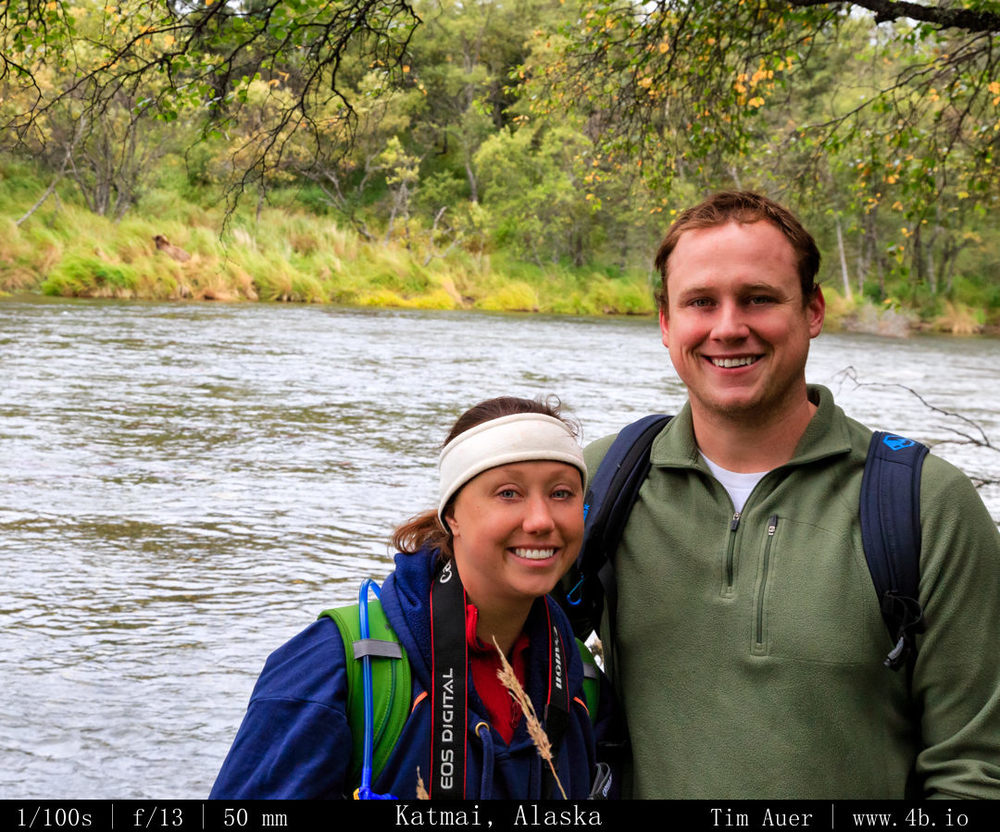
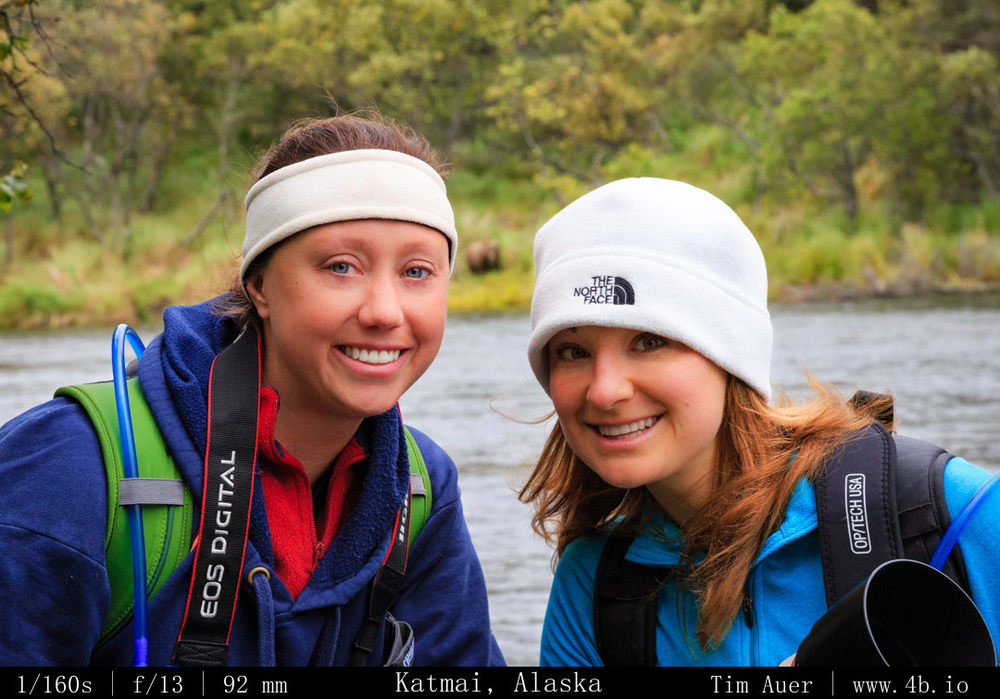
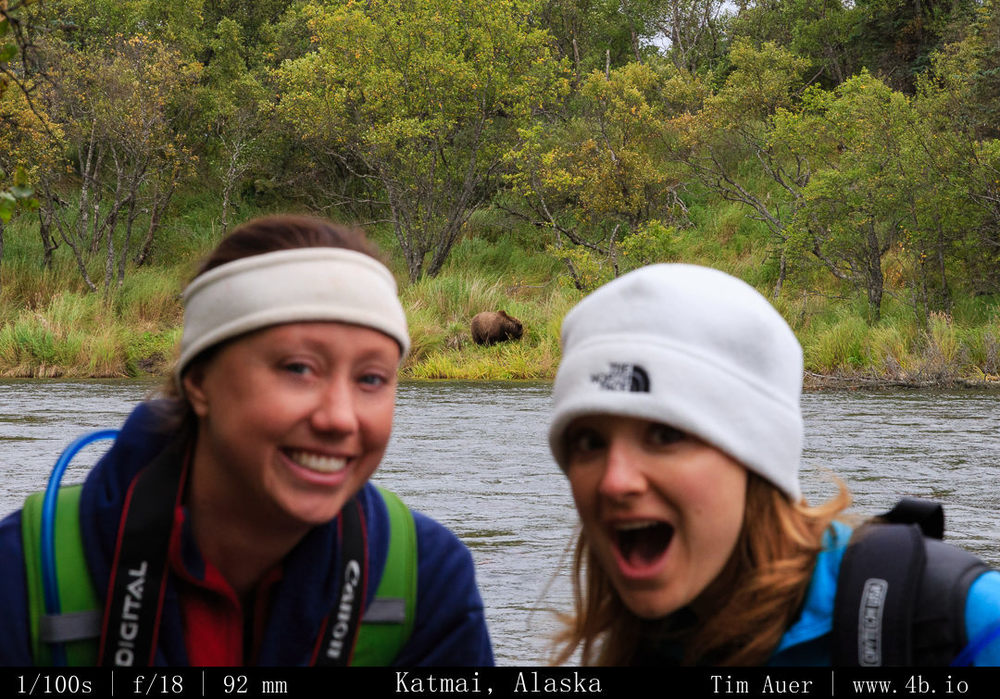
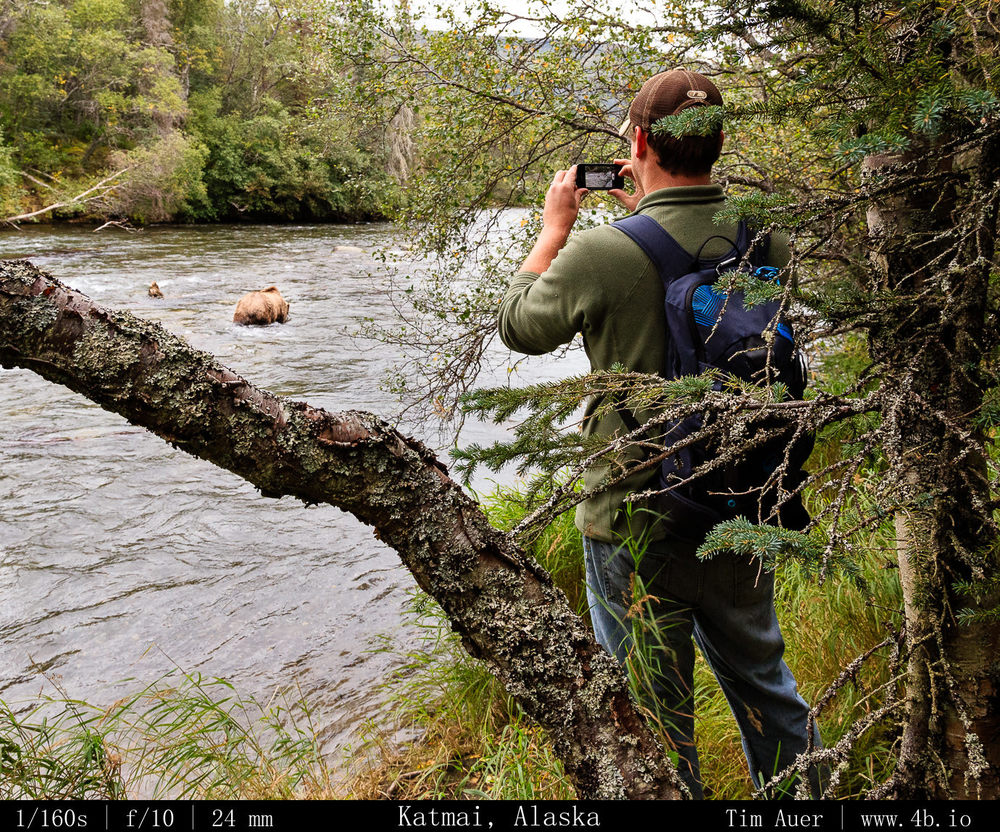
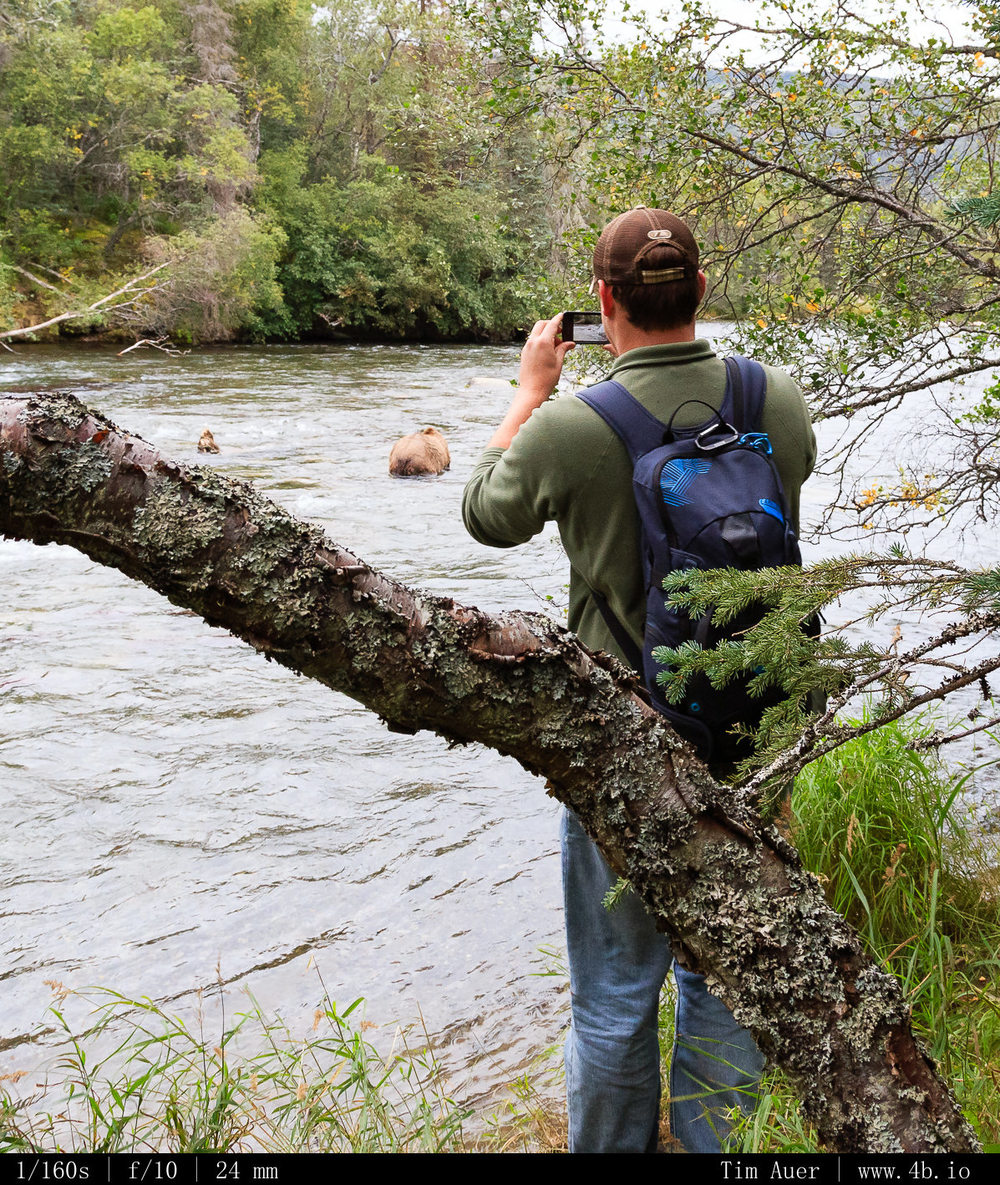
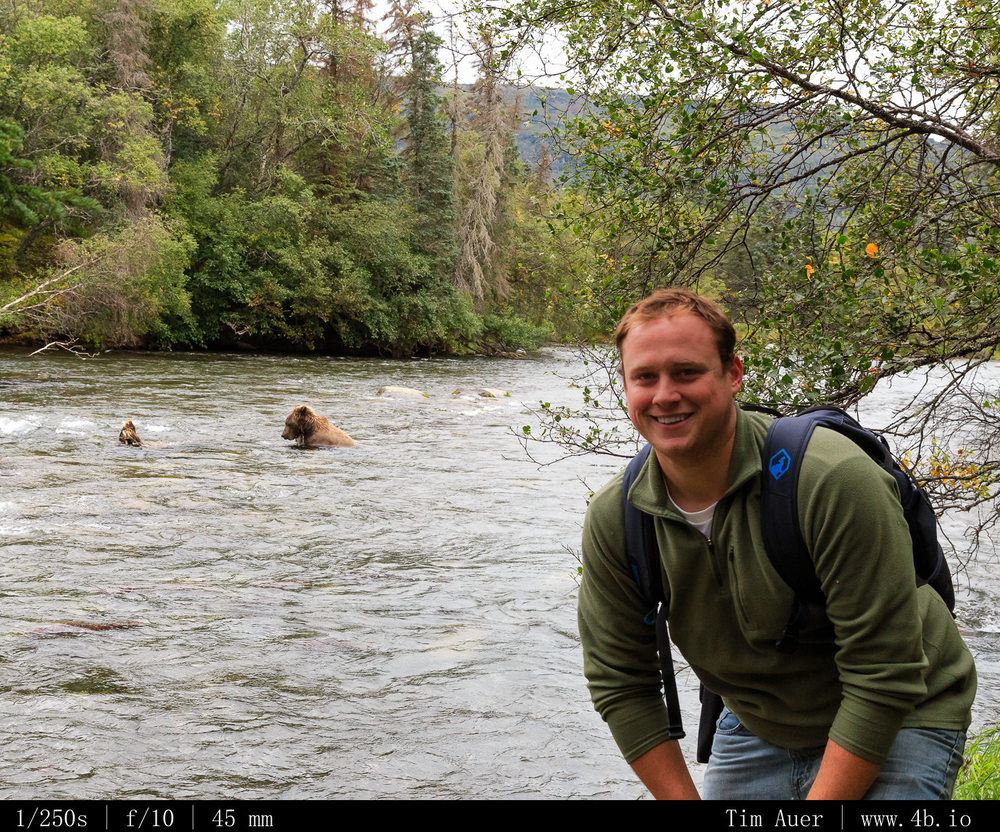
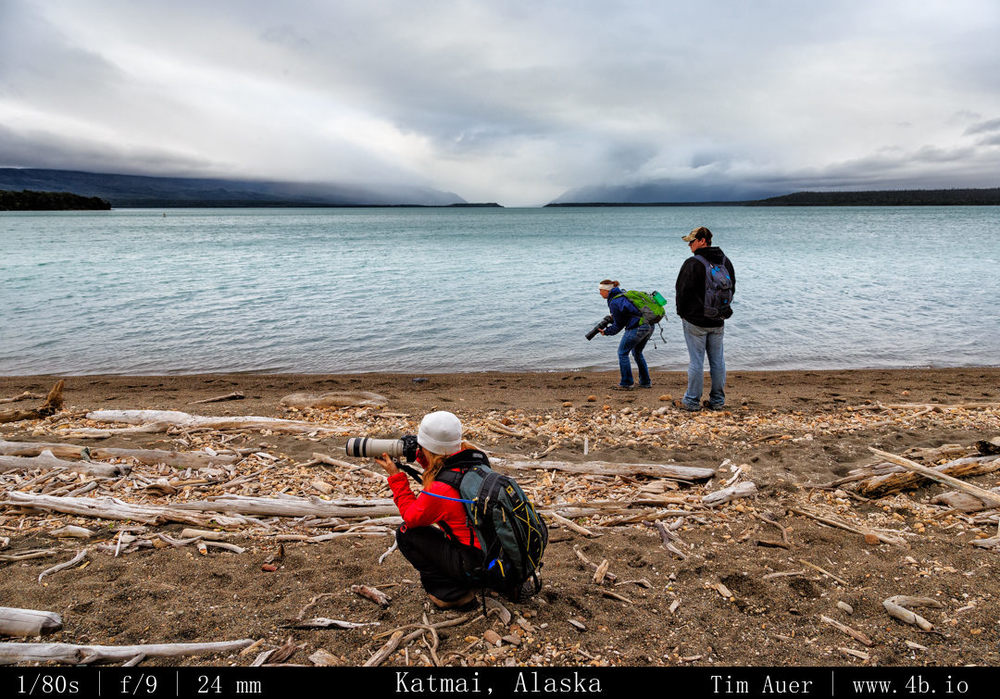
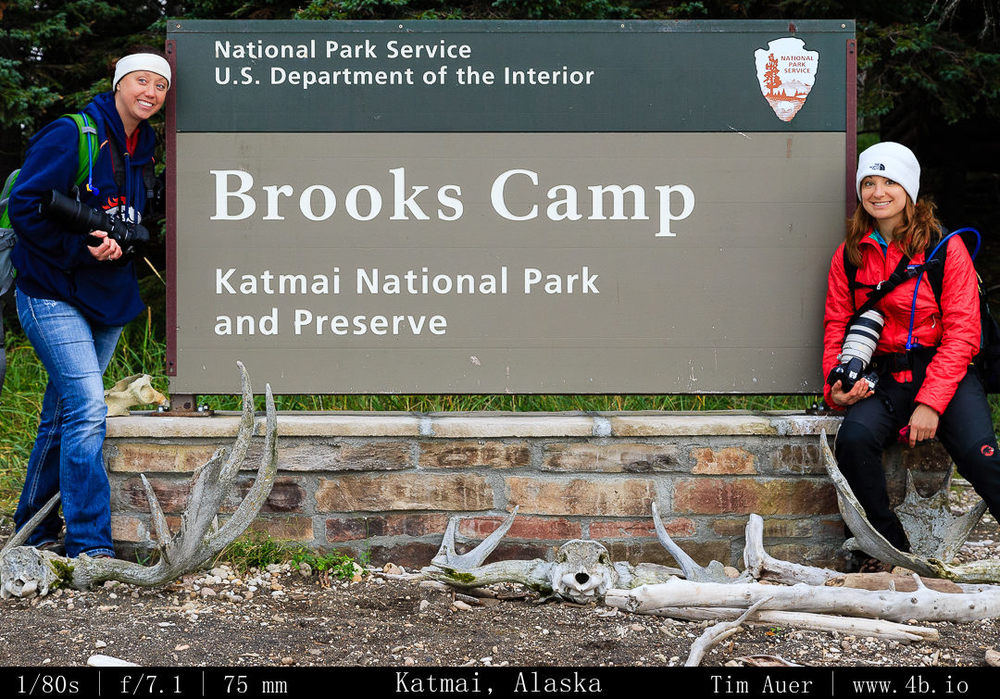
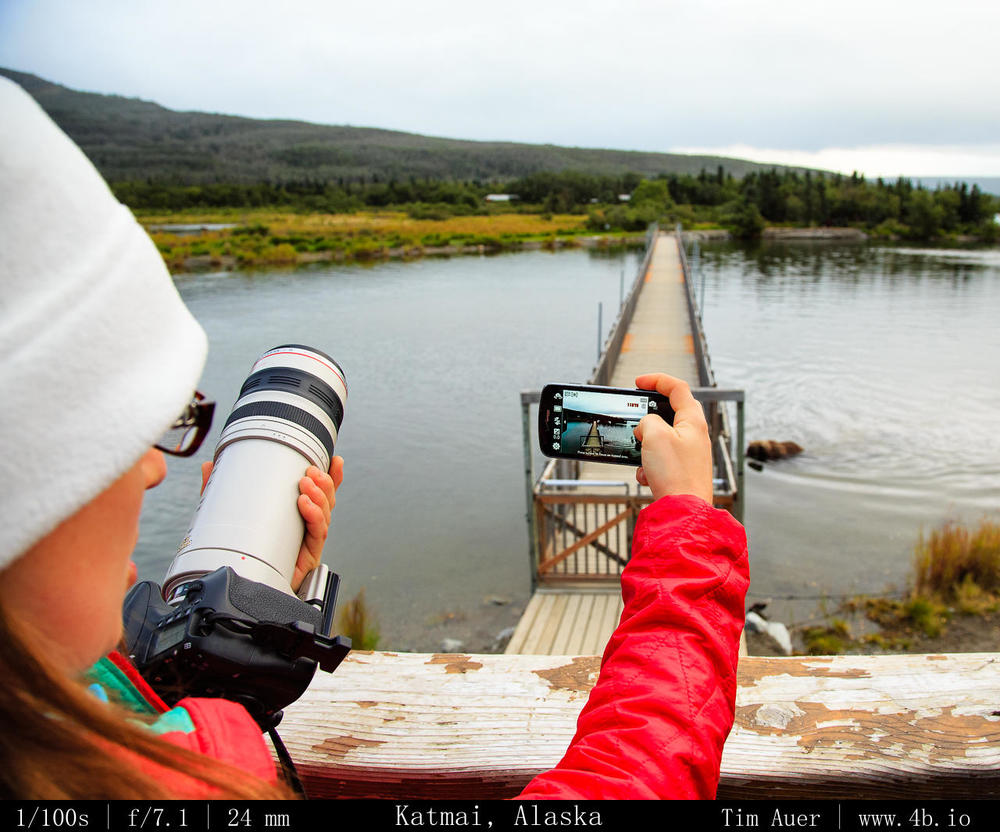
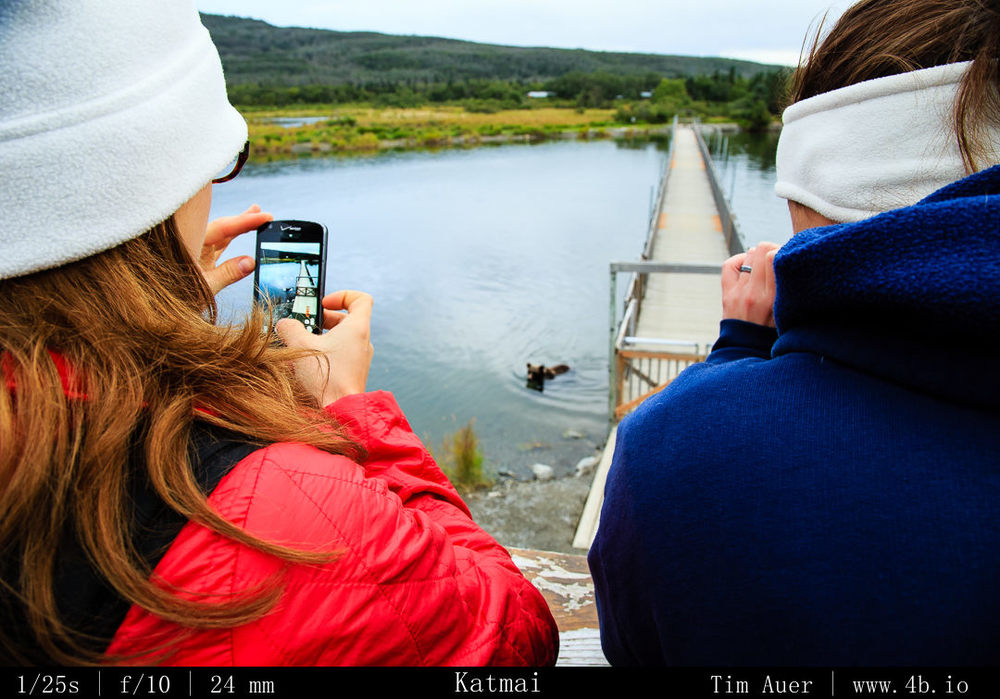
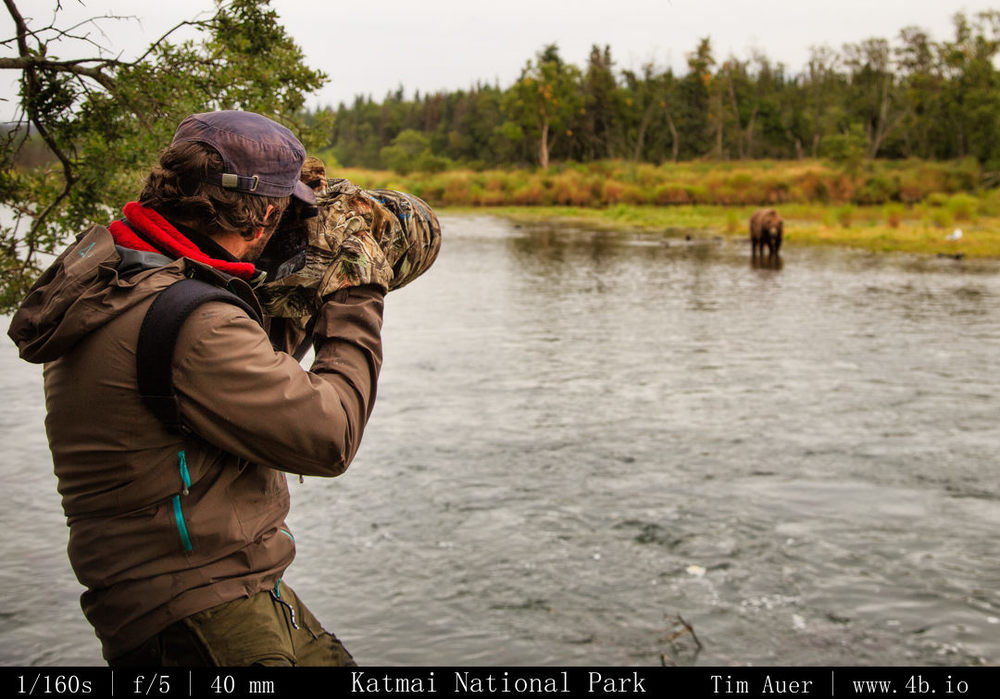

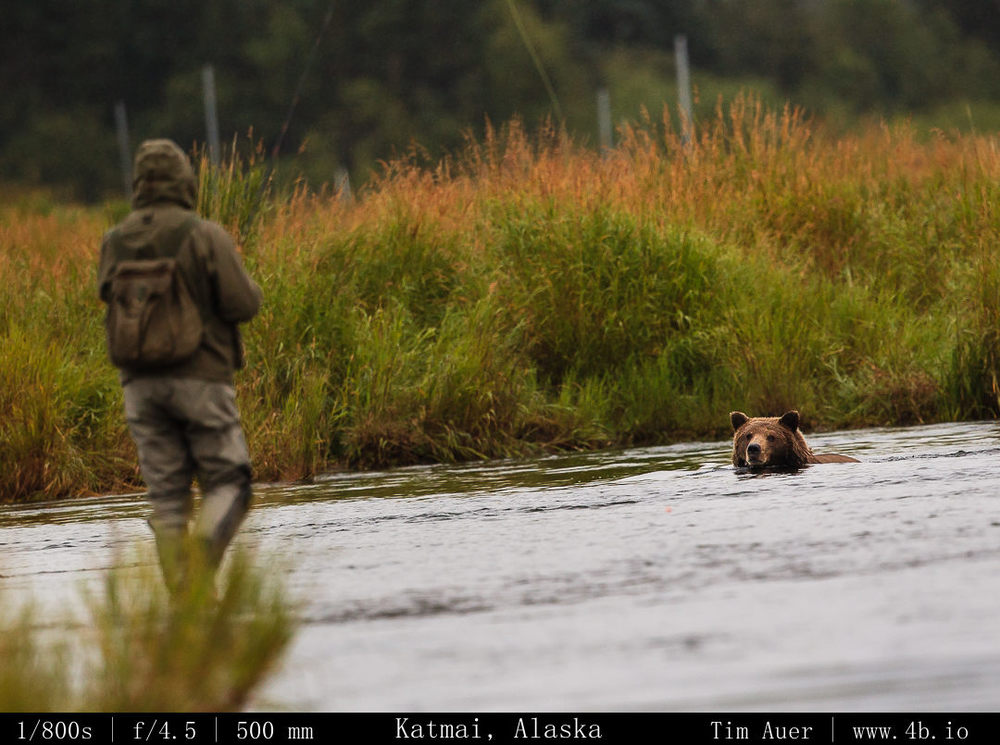
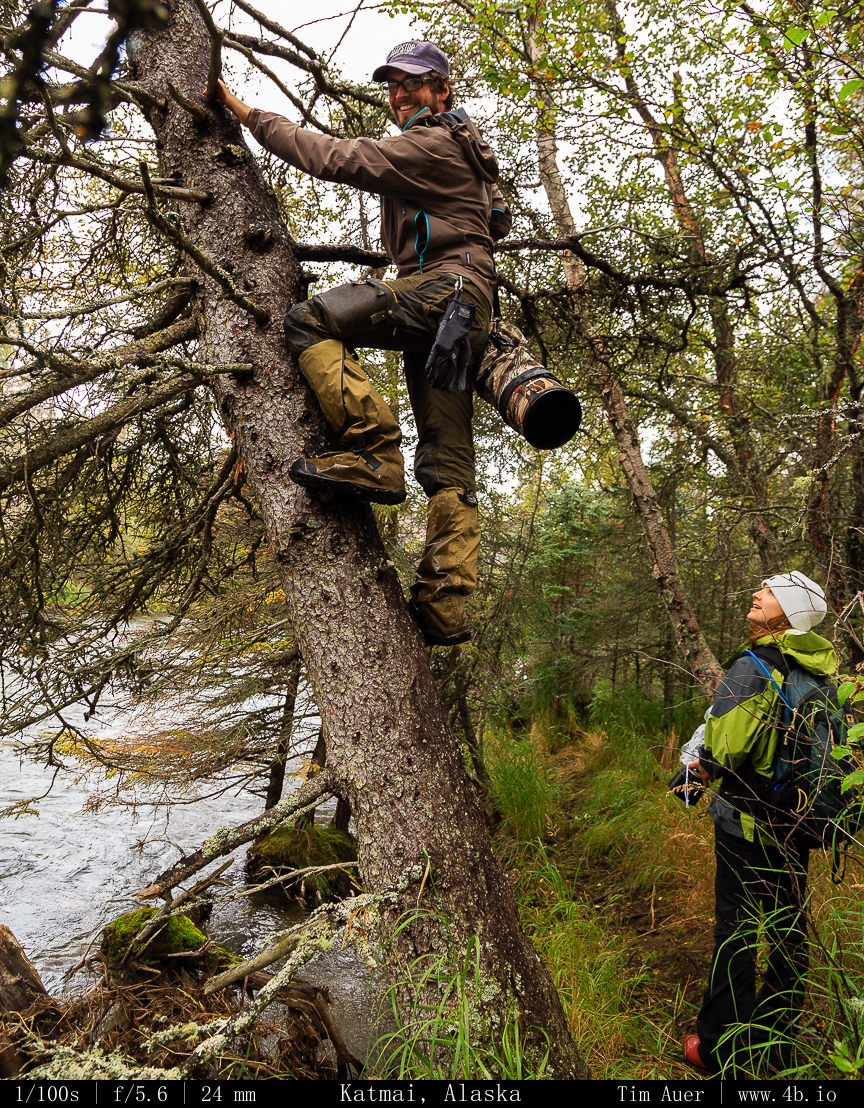
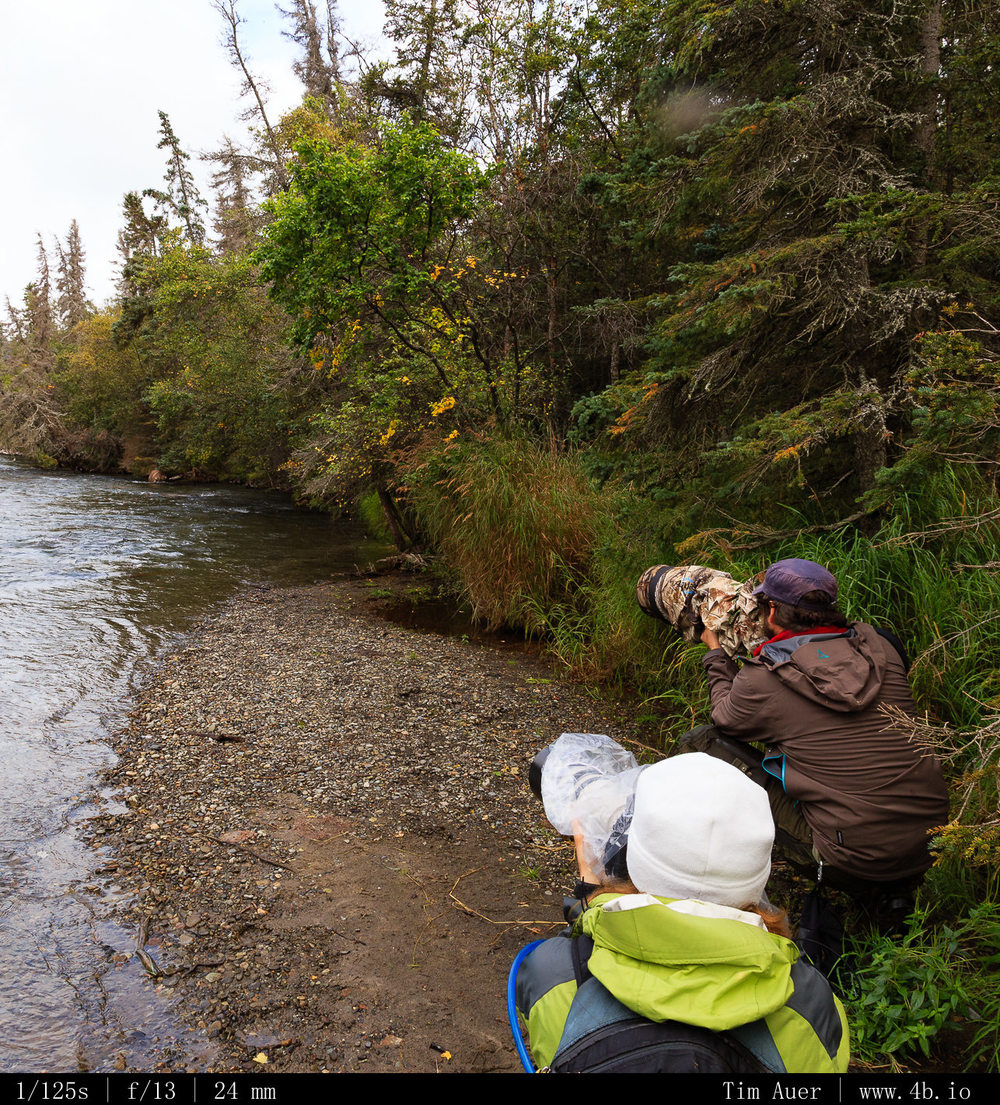
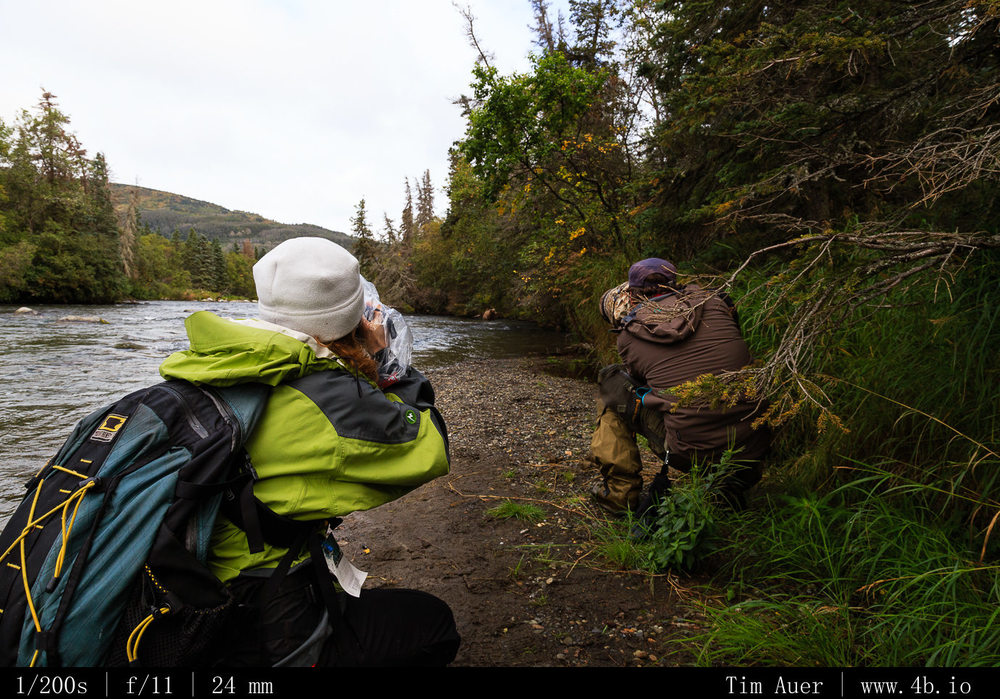


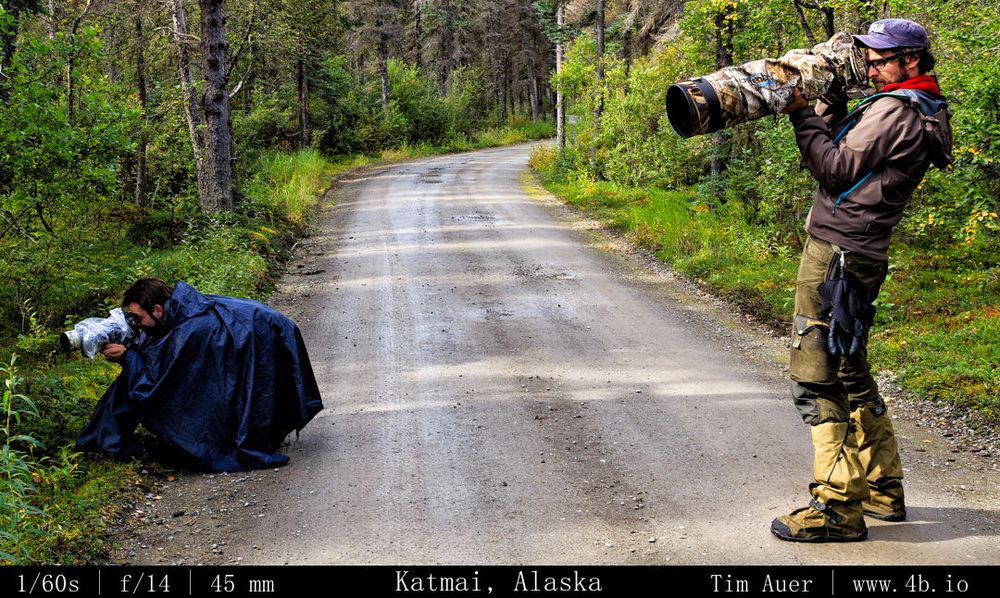
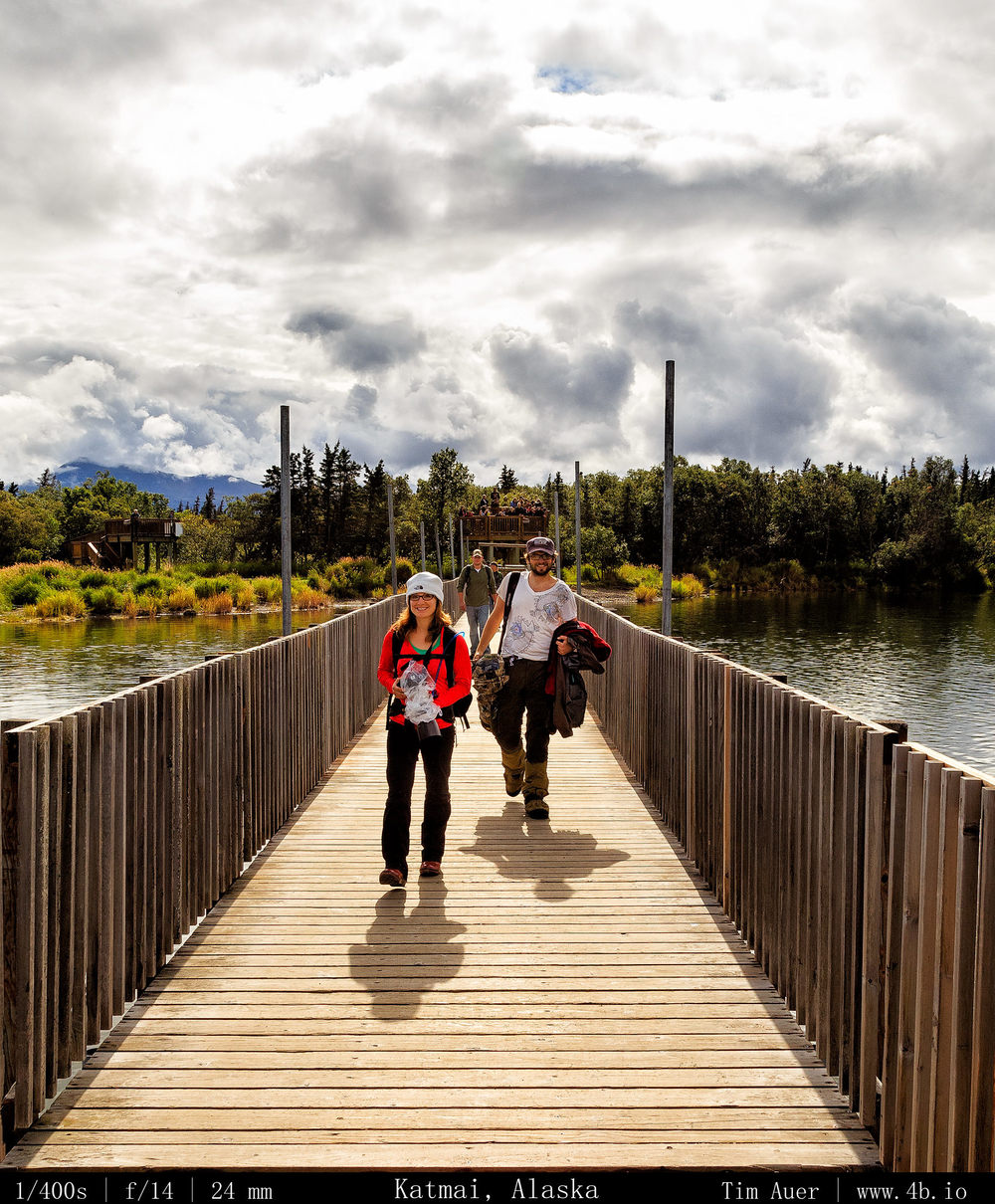
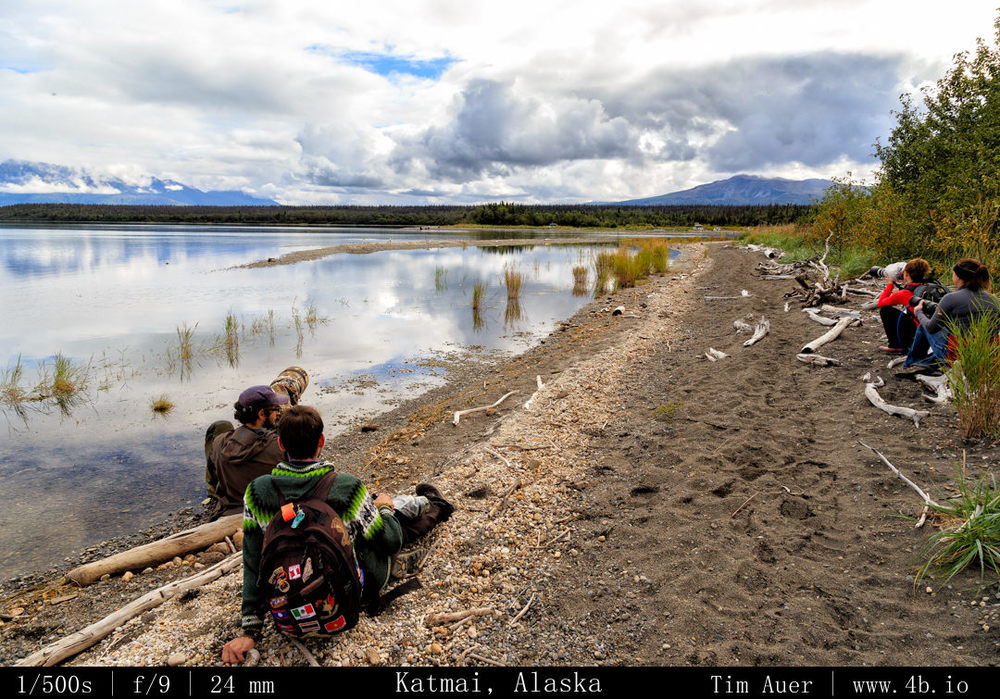

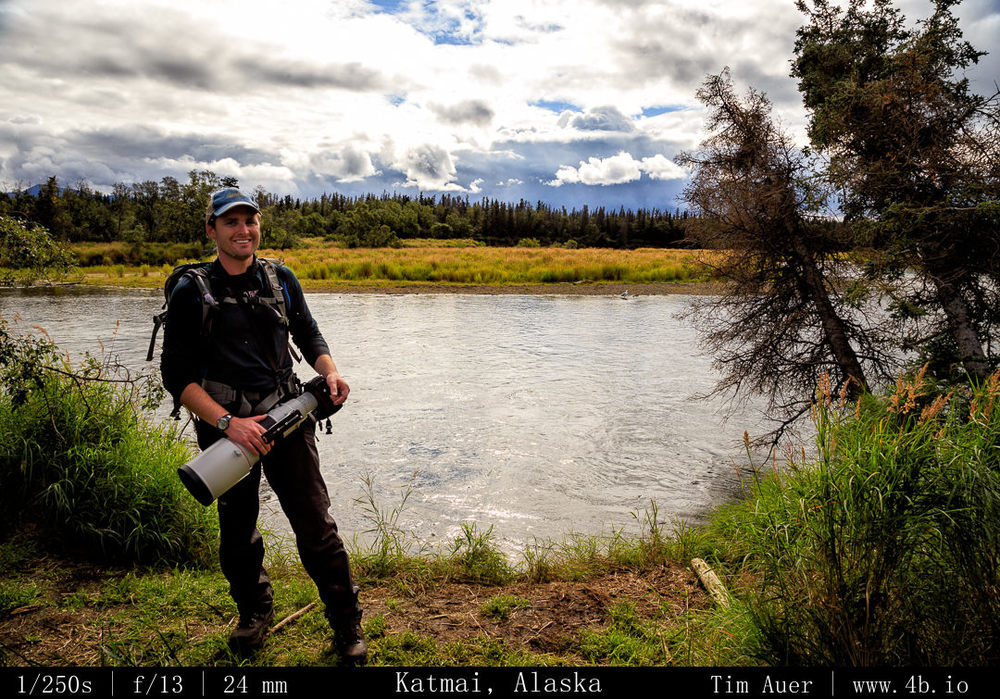
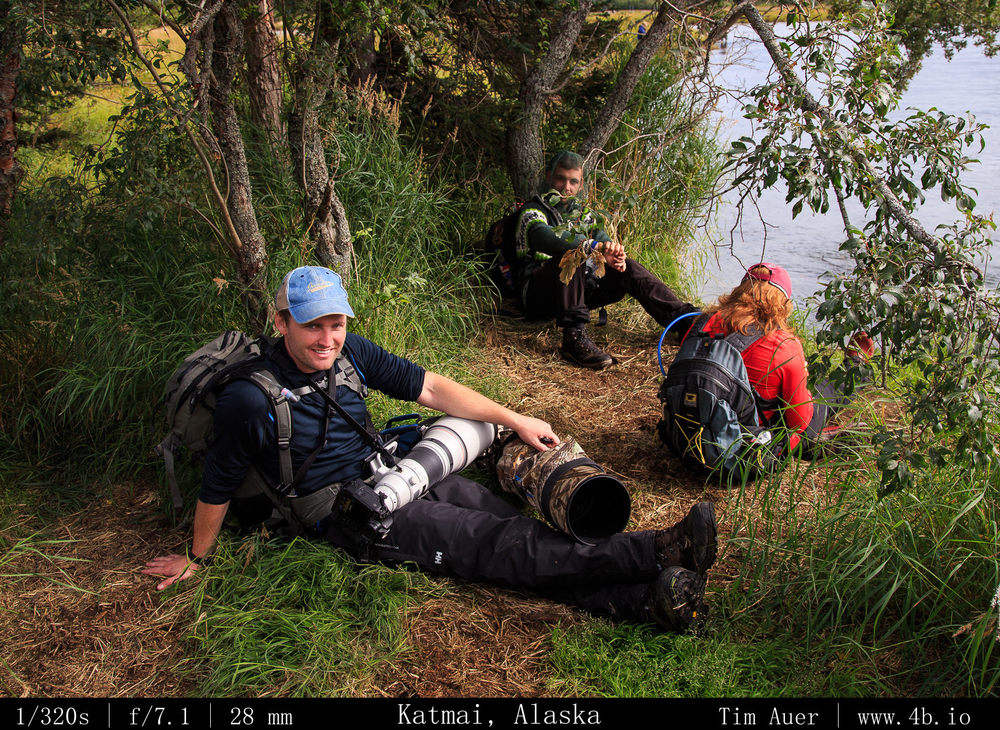
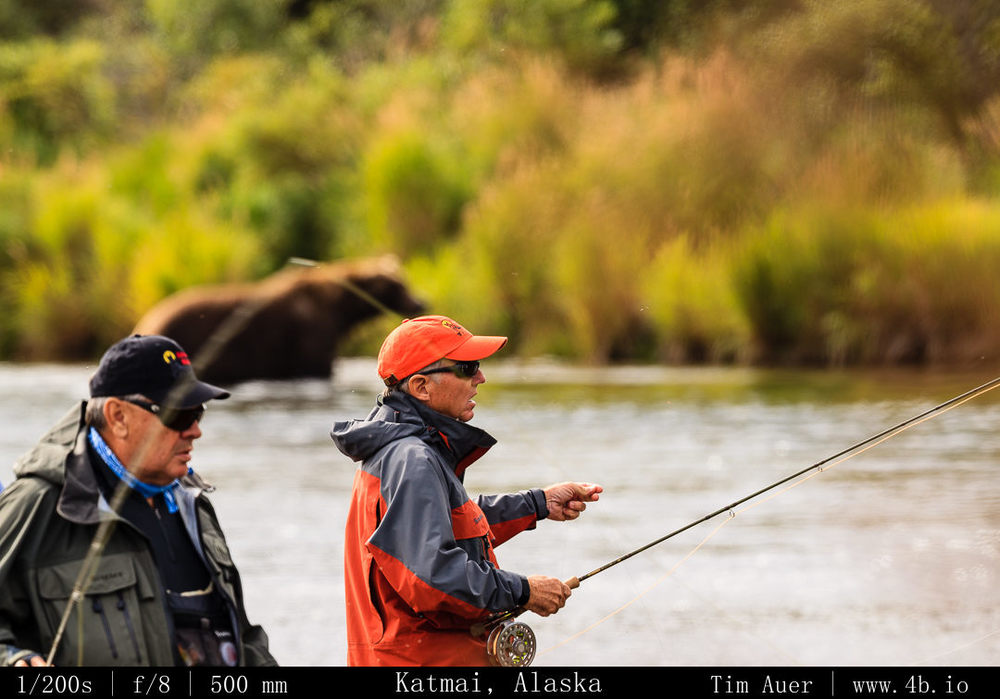
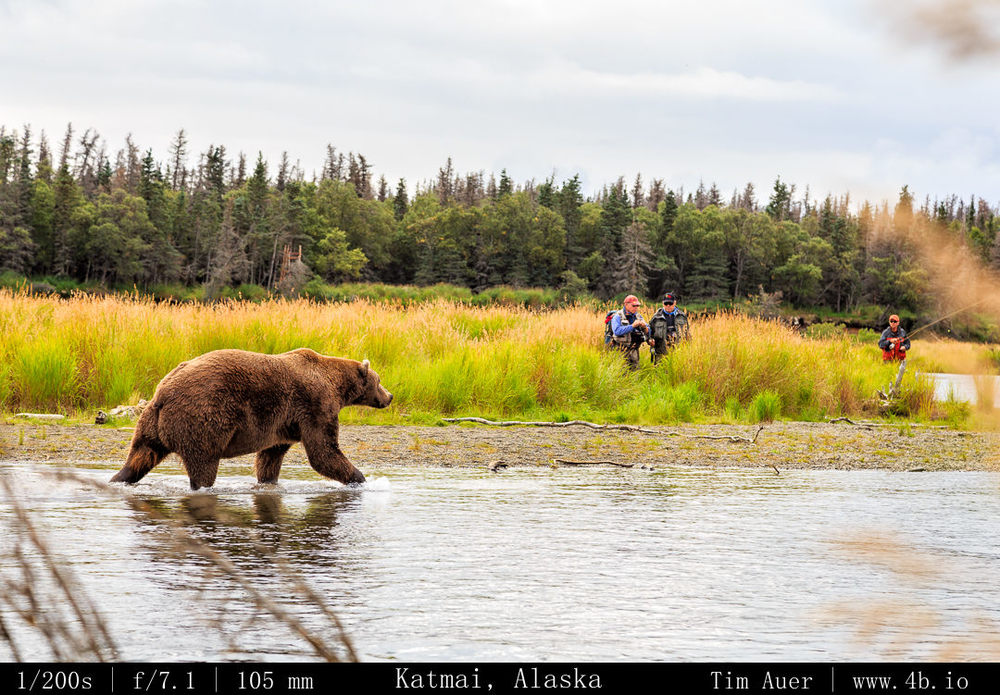
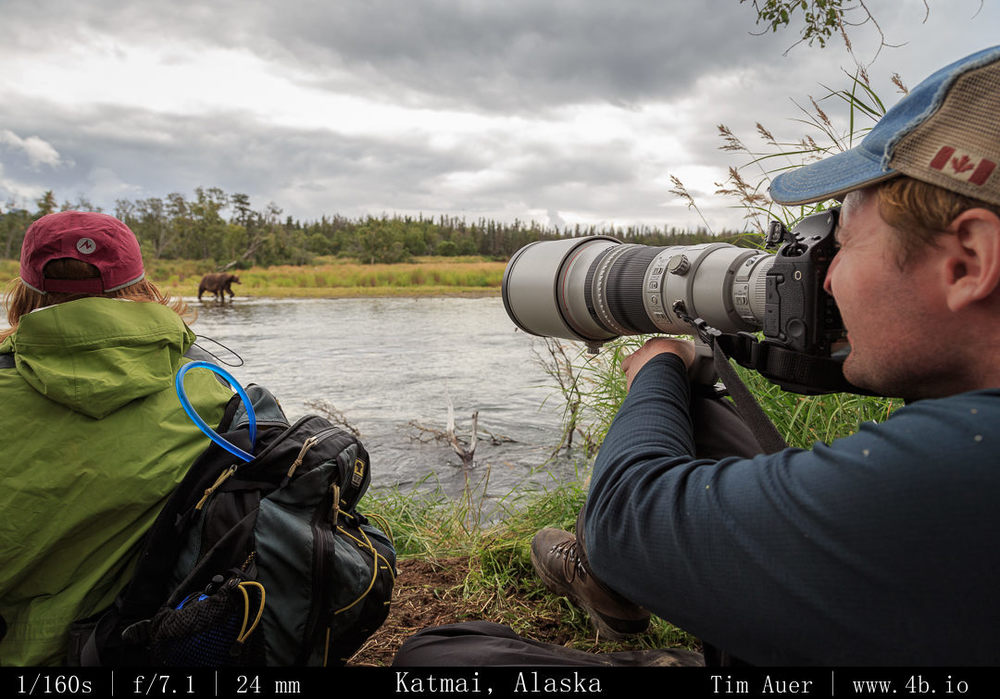

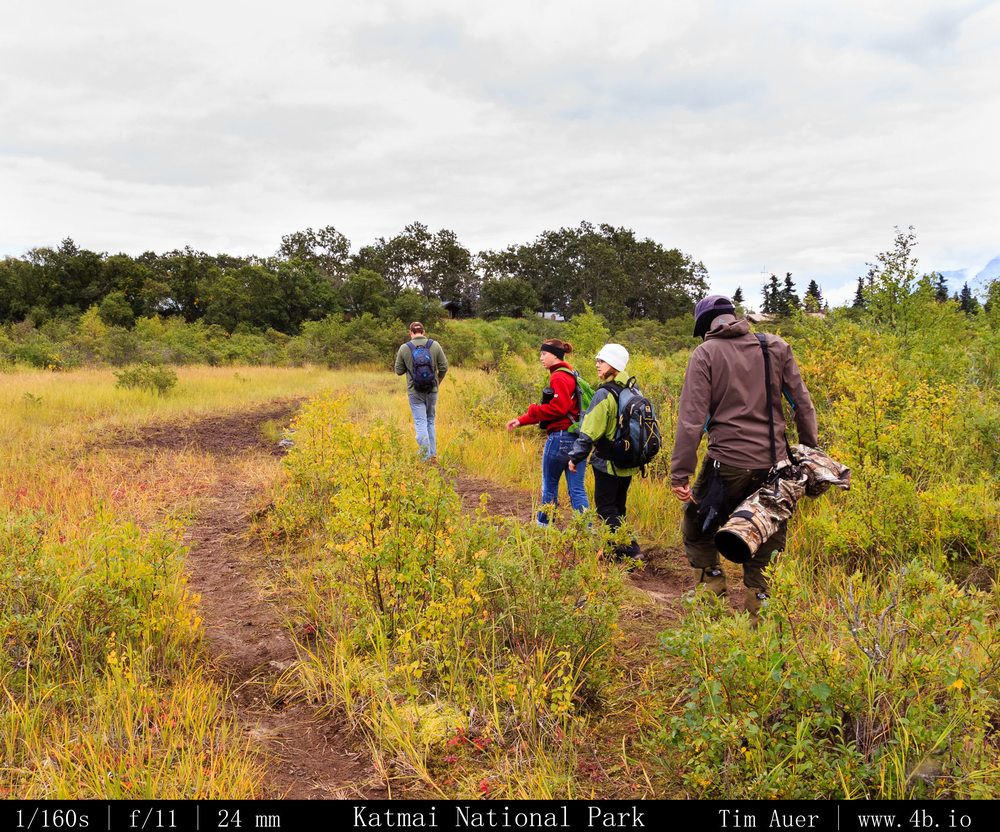
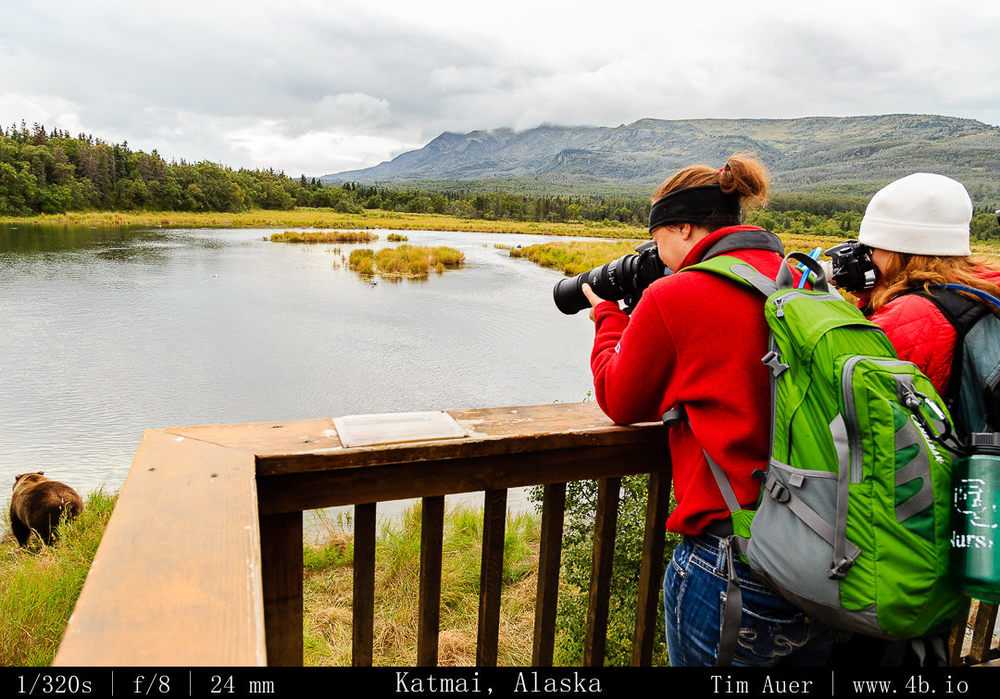
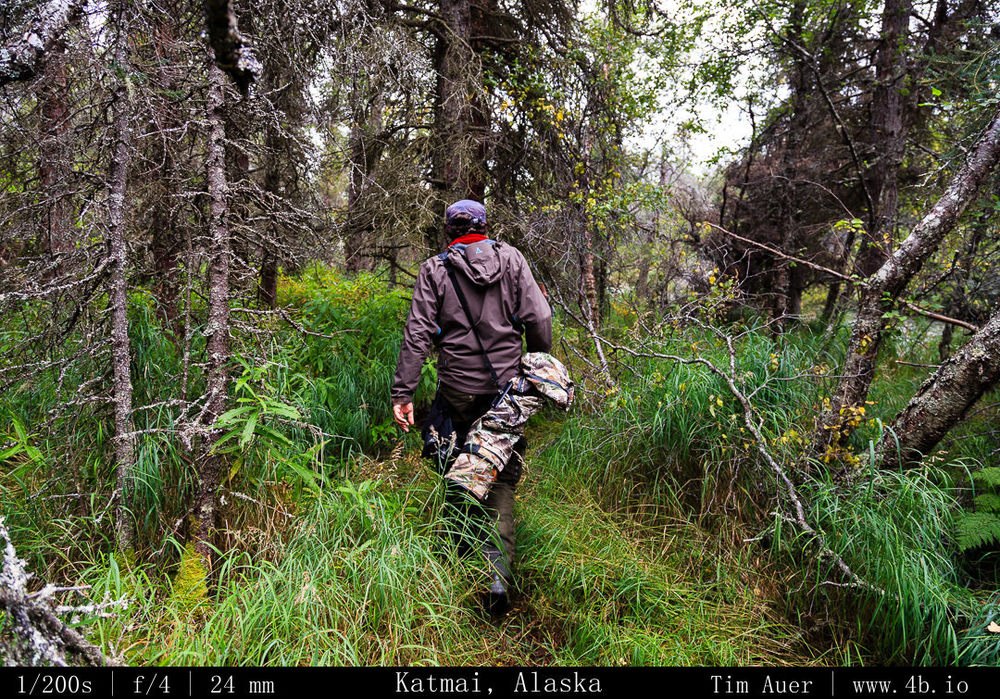
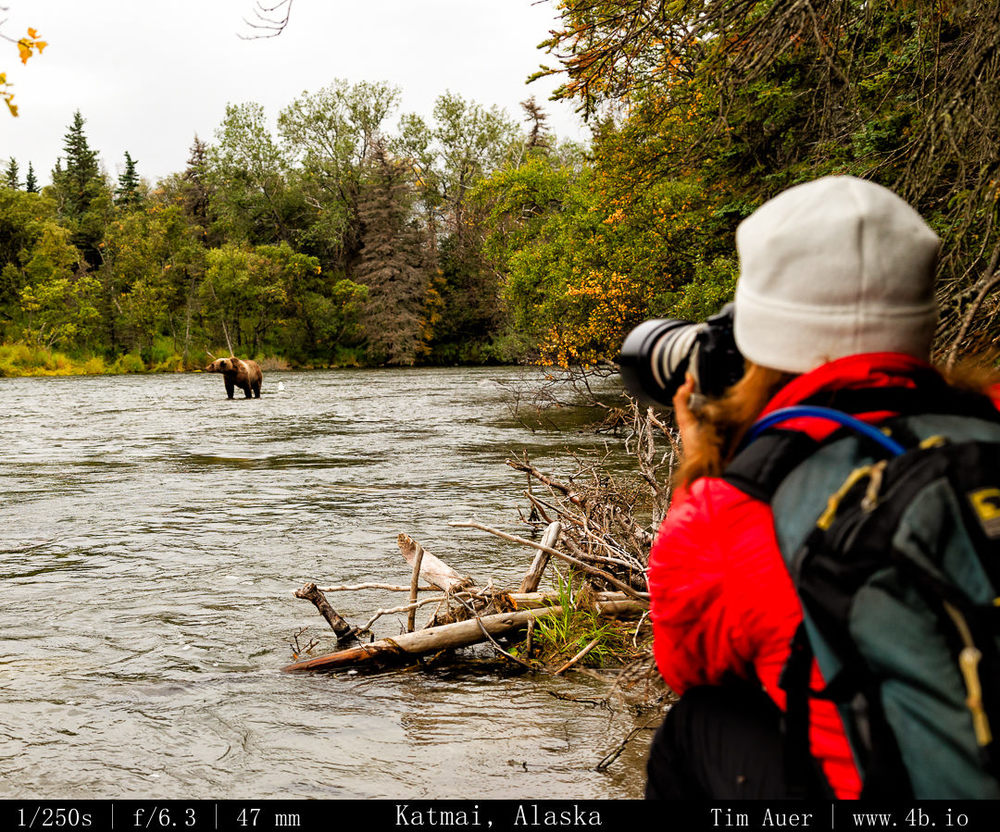
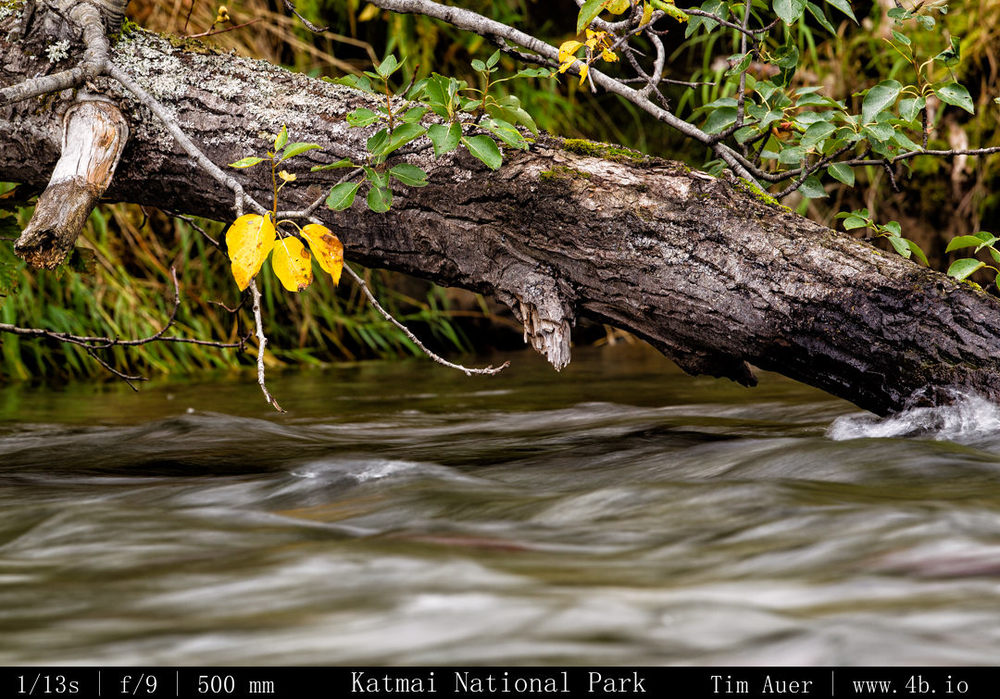
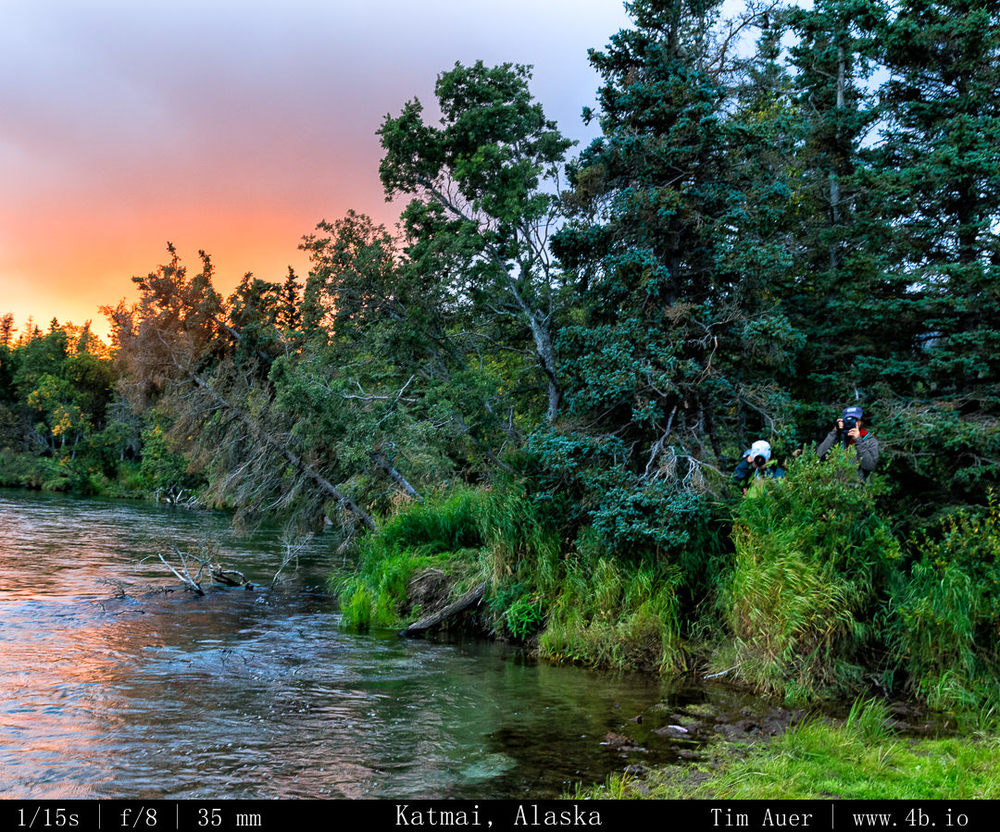
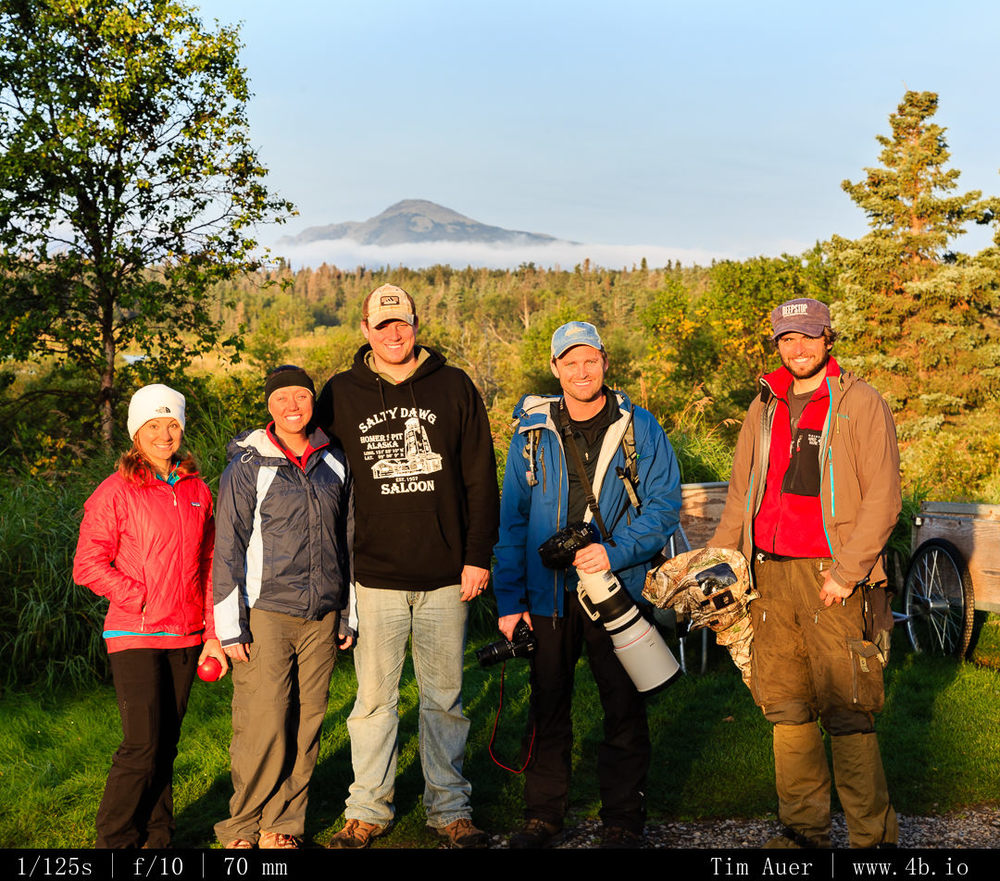
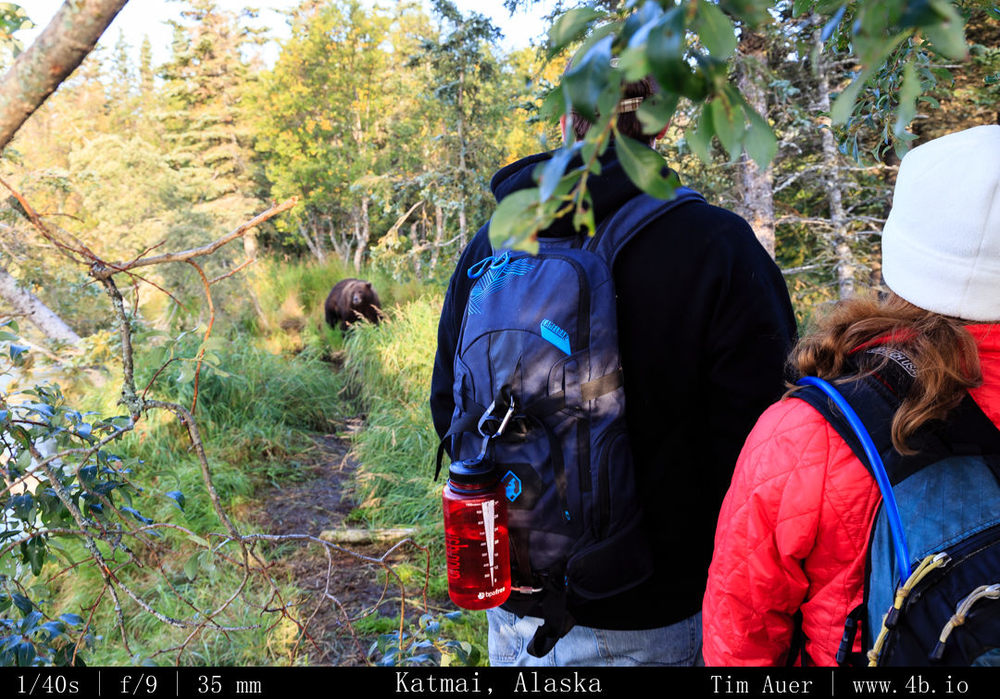
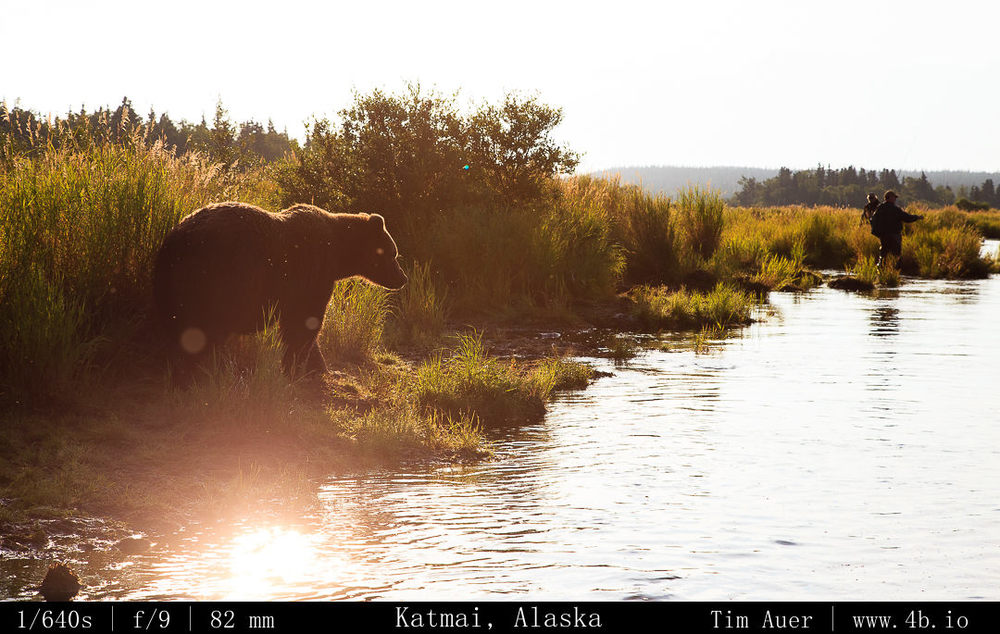
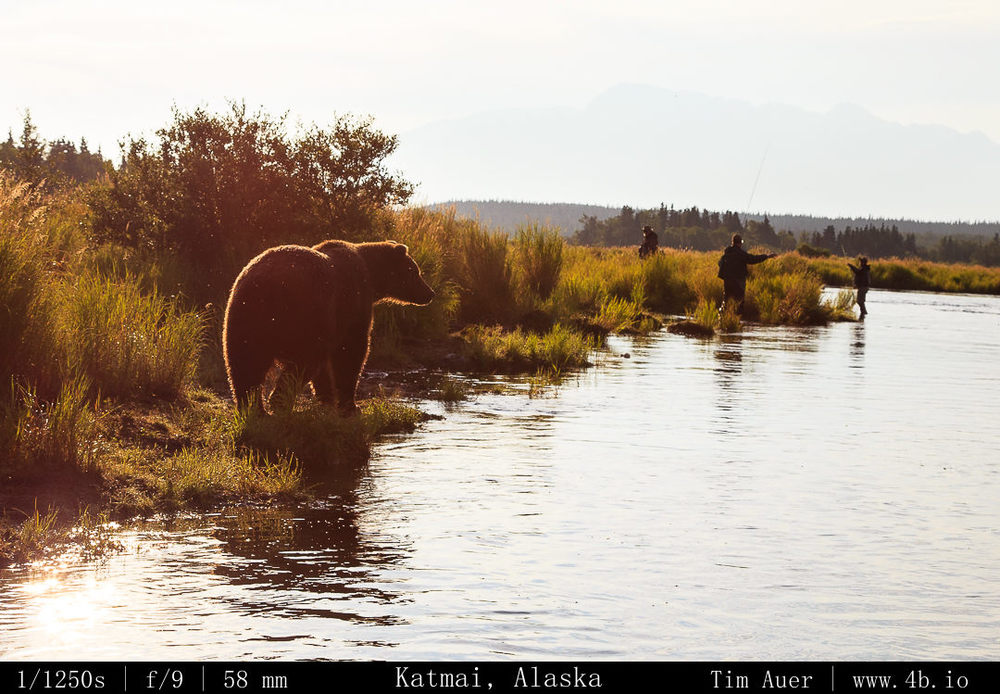
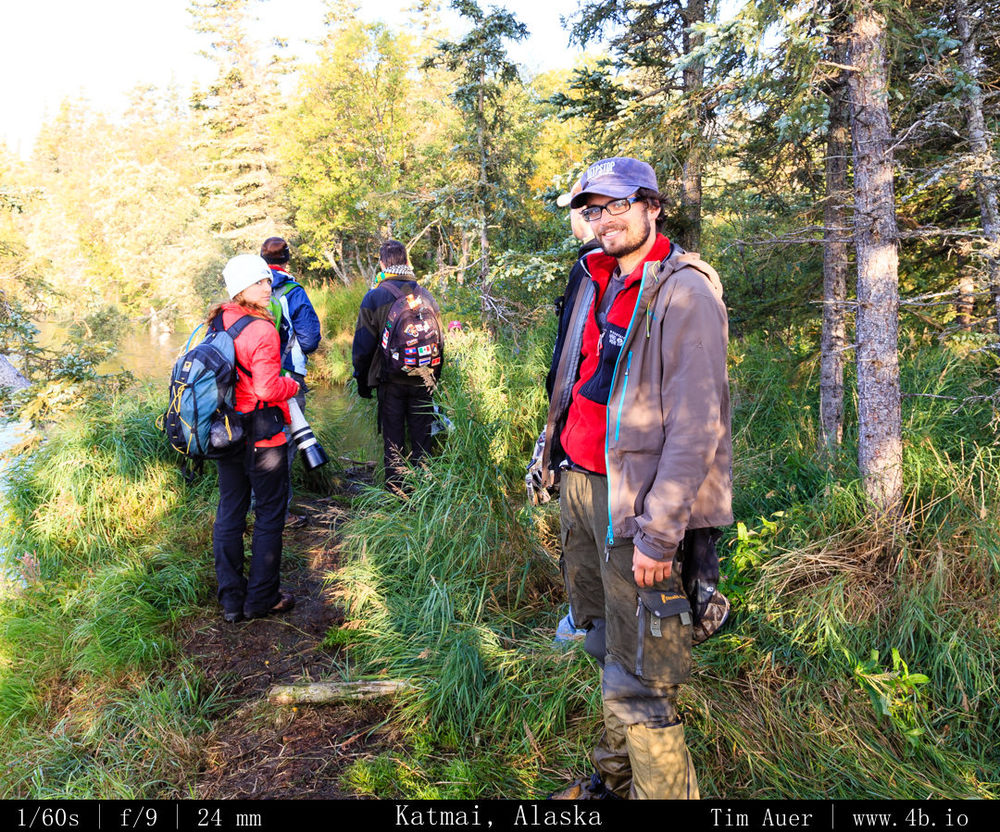
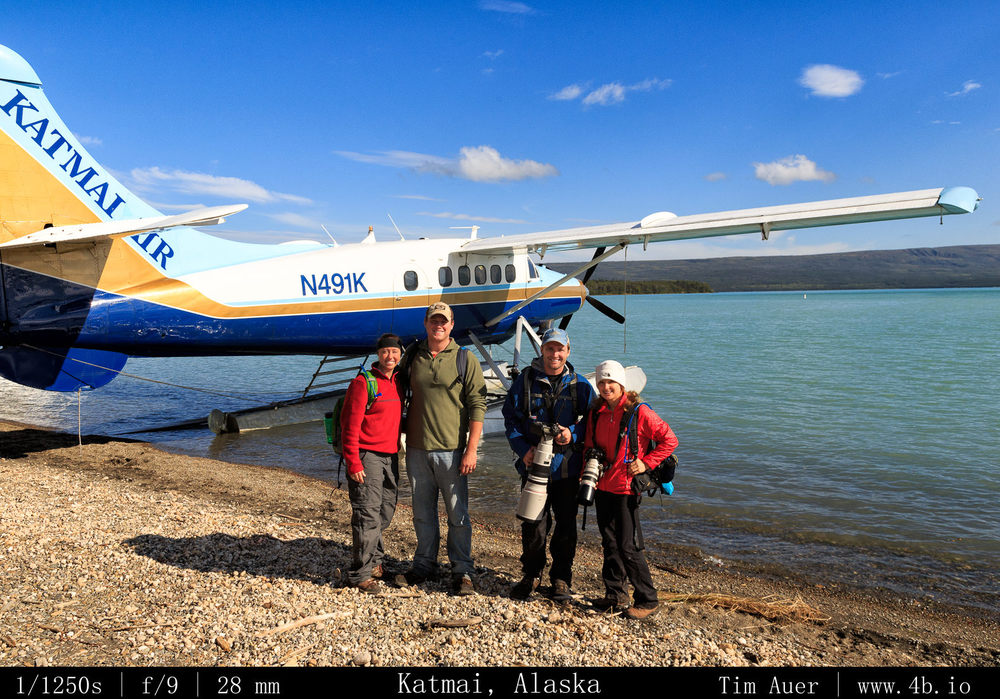

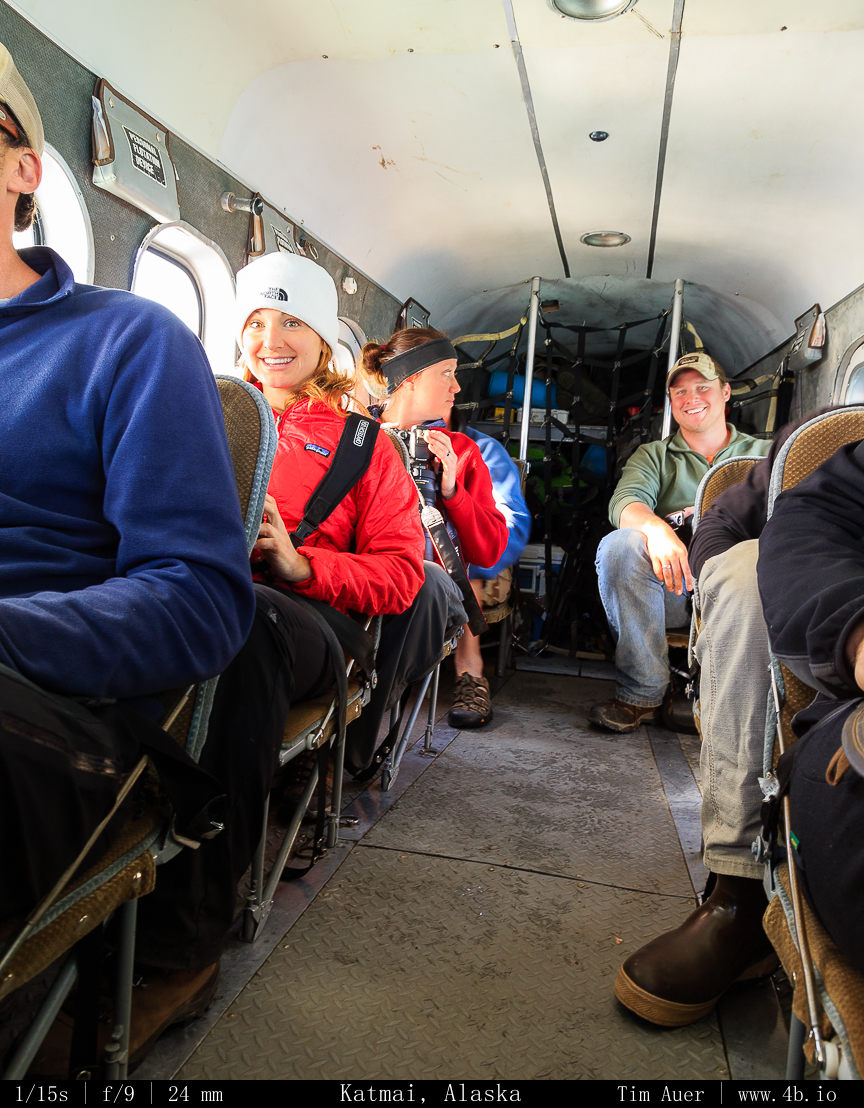
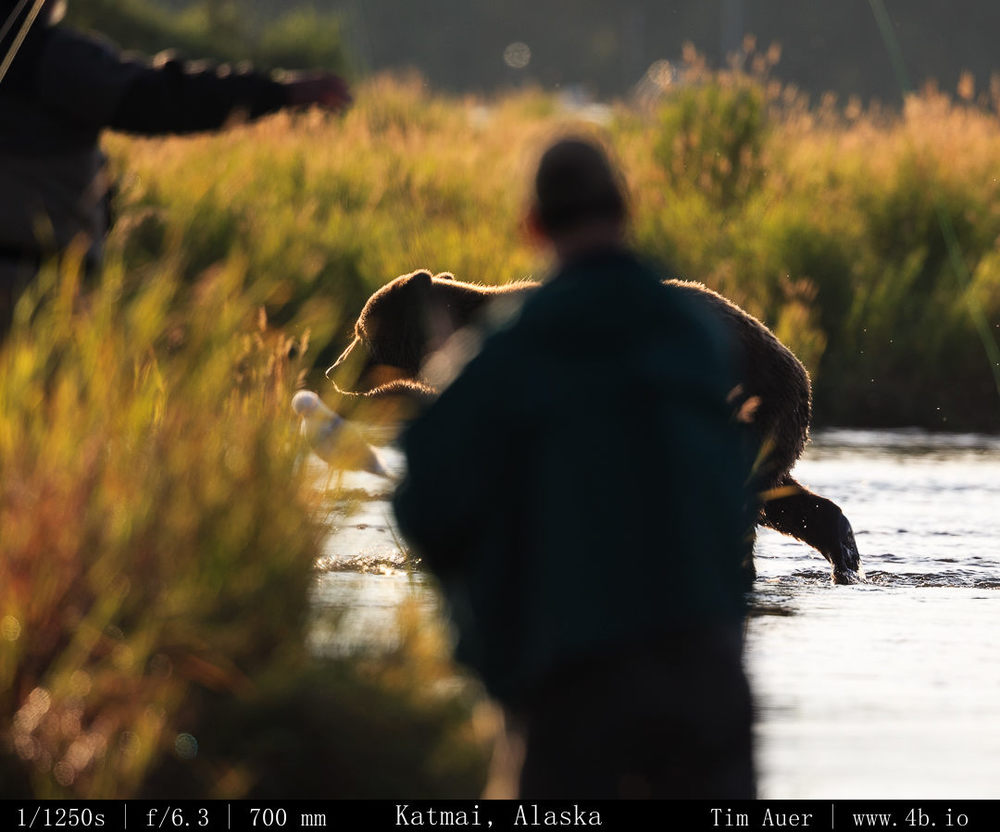
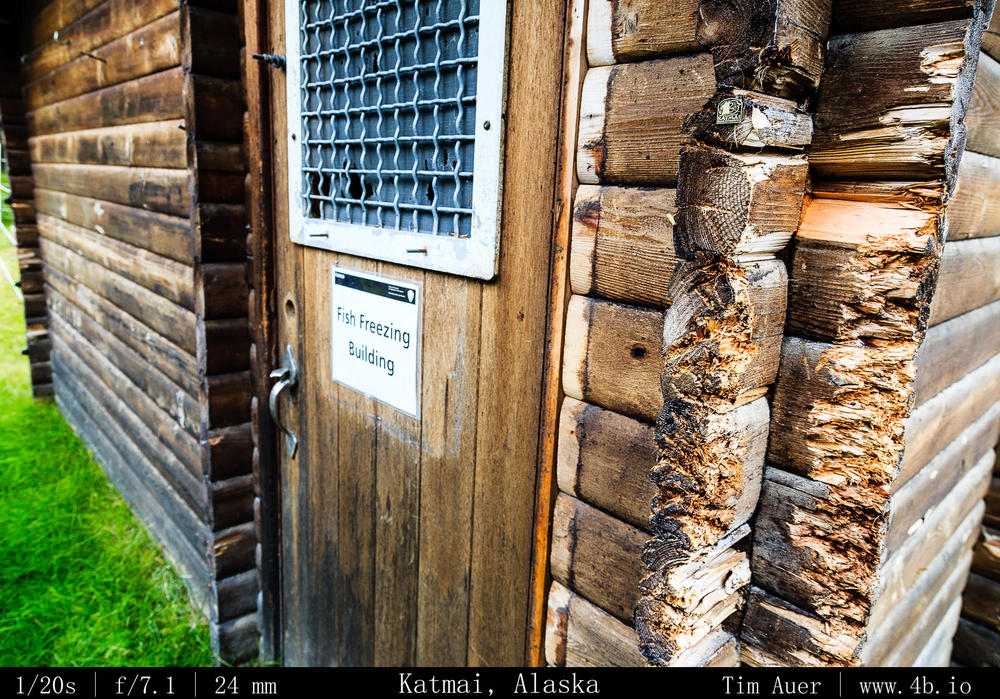

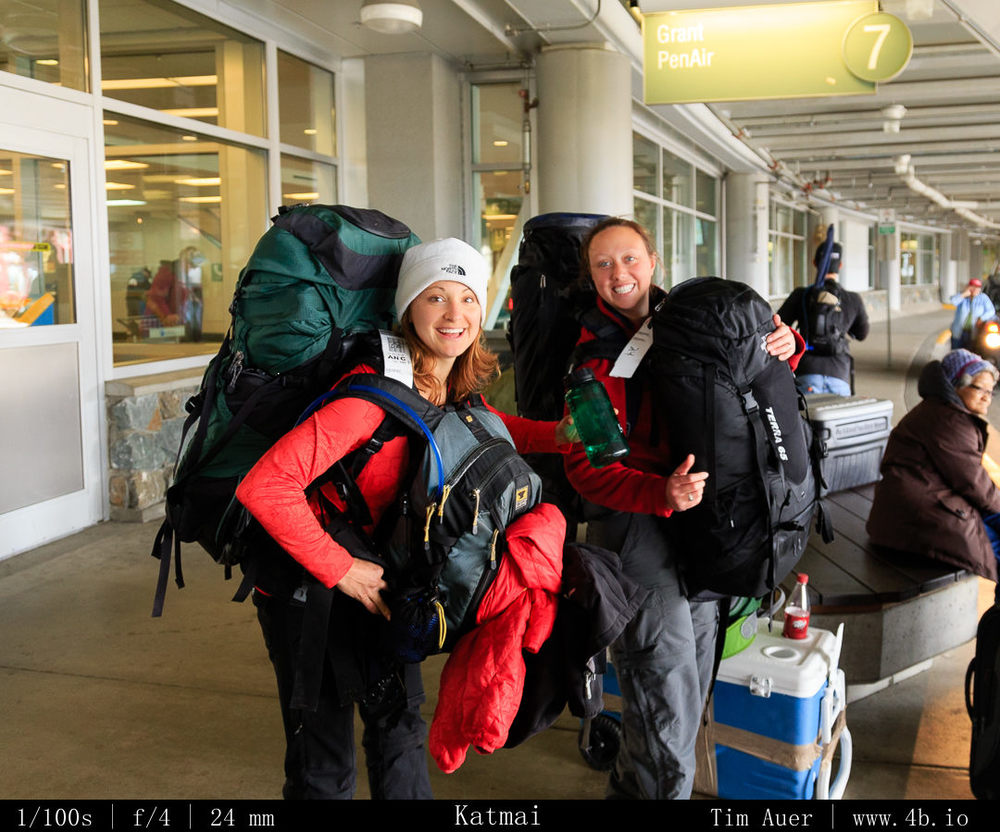
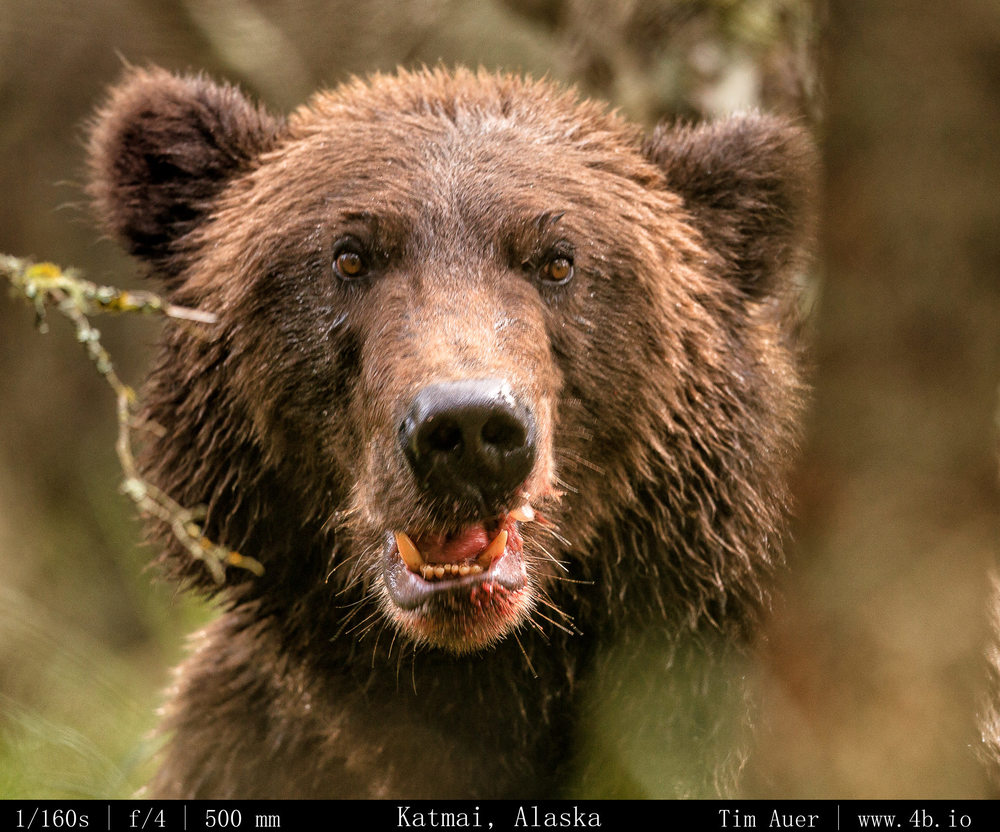
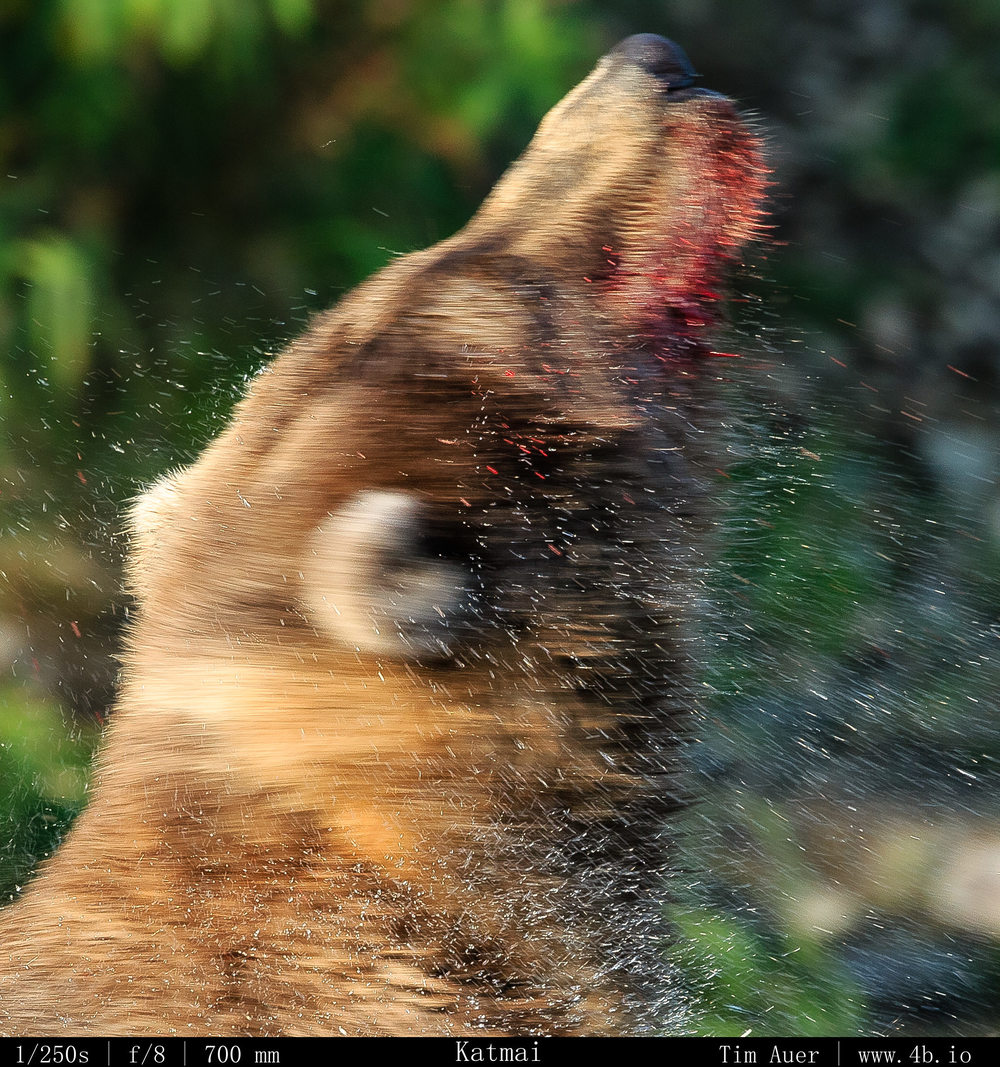
Photo
Bodies-
1D Mark IV
6D
60D
Glass-
500mm + plate (rent, receive at Anchorage Residence Inn)
300mm F/2.8
100-400mm
24-105mm
17-40mm
2X Tele-Convertor
Support–
Gitzo GT3530LS – Systematic
Gitzo GT2542T – Traveler
Mongoose 3.6 Gimbal
RRS BH-40
Accessories-
Five (5) LP-E4 Batteries (1D4)
Six (6) LP-E6 Batteries (6D, 60D)
LP-E4 Charger
LP-E6 Charger
Polarizing Filter
Hoya ND Filter
Sensor Swab+ fluid
Intervalometers (3)
Memory-
Three (3) 32-GB CF = 96 GB
Two (2) 16-GB CF = 32 GB
Two (2) 64-GB SD = 128 GB
Three (3) 32-GB SD = 96 GB
Two (2) 16-GB SD = 32 GB
Two (2) 8-GB SD = 16 GB
Total of 400 GB in flash
External HD 1.5 TB
“[The Alaska] peninsula endures a maritime climate described as “notoriously miserable”: long winters, cool summers, frequent storms . . . and sudden bursts of wind called williwaws — so fierce, bush pilots say, they can rip the numbers off a plane.”
With this description in mind, I planned for wet, damp, and rainy conditions. The thought process was, if I am prepared for this type of weather, there is no way the trip could be considered ruined. Fortunately, the weather was quite good, it rained a bit each day except the last, and the temperatures were manageable. One question I had beforehand was whether my 30 grad synthetic bag would be sufficient for the conditions, or if I should bring something warmer . Considering that I was already 80 lbs over (read previous post), I opted for the 30 degree bag and didn’t regret doing so. I slept in a fleece and, despite the damp conditions was quite warm at night.
[ ] Patagonia Fleece Jacket
[ ] Koppen Quarter Zip Fleece
[ ] Stio Down jacket
[ ] Pollen Wool hat
[ ] Fleece gloves
Next time, I will be sure to bring my two way radios, as they would be invaluable communication tool when your group is split up, and stuck on opposite sides of the river in a bear jam….
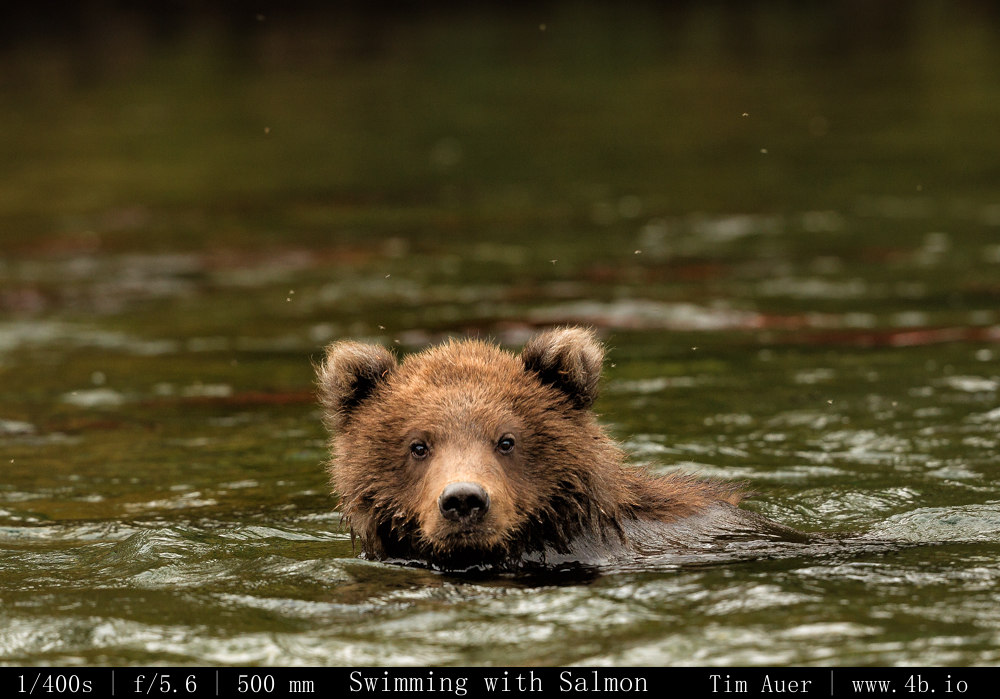
This post’s gallery contains an unusually large number of images. I did this intentionally to give an idea of what the bear cub experience is like at Brooks Camp. Other posts will not contain 100 photos.
Katmai: Bear Behavior
Katmai: Float Plane Lift
Katmai: Cubs
Katmai Packing List
Katmai: Otis Eats a Salmon
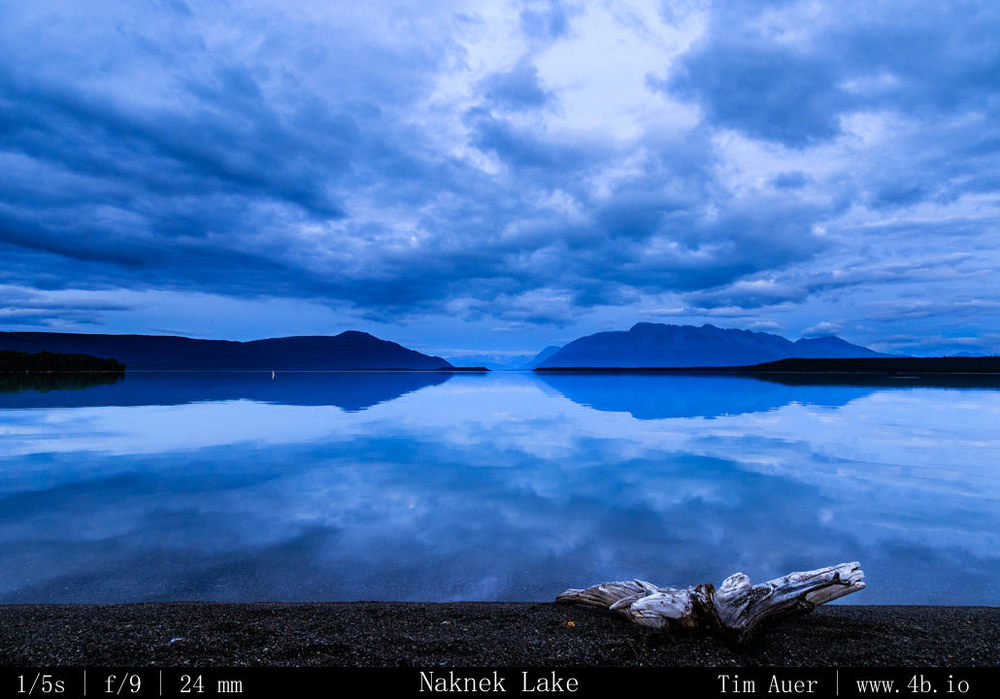
The first night was surprisingly calm and the surface of Naknek Lake was glass in the evening’s twilight. By midnight, as we sat around the fire, it became apparent a front was moving in. The air was still and quiet, but waves began to slap the shore of the lake, like the wake of a distant ship. It wasn’t until after 02:00 that the trees began to rustle in the campground. The front’s arrival indicated two things: cold and wet conditions for the start of the second day in Katmai National Park.
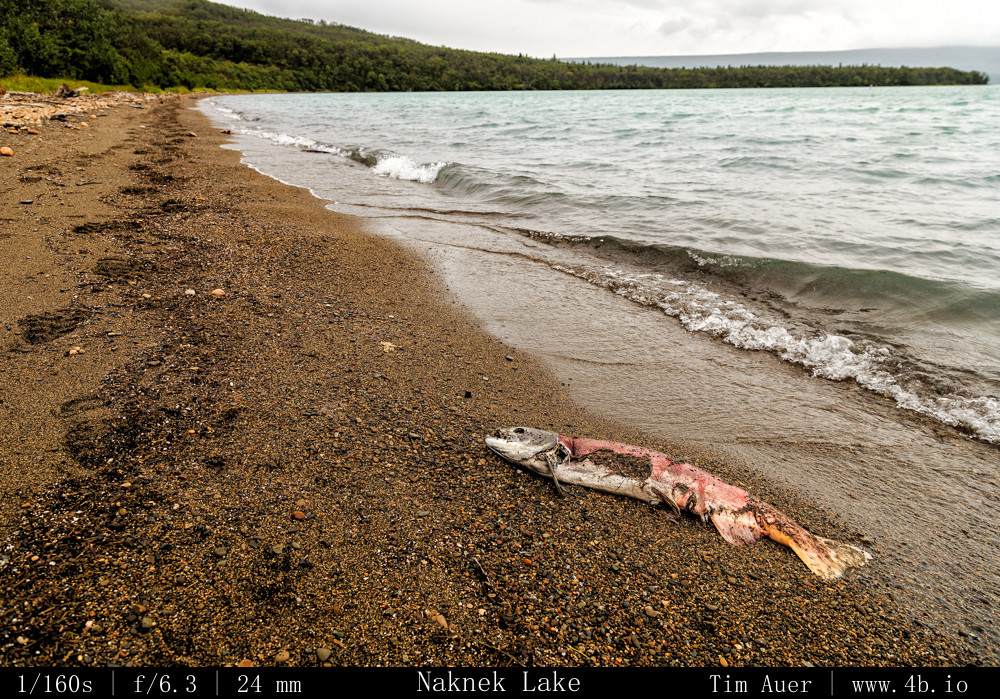
Fortunately the driving rain began to taper at sunrise, and when I emerged from my tent it was only a steady shower. Nothing that my Helly Hansen slicker couldn’t handle. More importantly, the weather improved drastically throughout the day. By 13:00, the rain had stopped and it was no longer cold. Most of this day was spent becoming acquainted with the bear families of the Brooks River. This was done at the lower river platform and at the head of the Brooks River, near Brooks Lake.
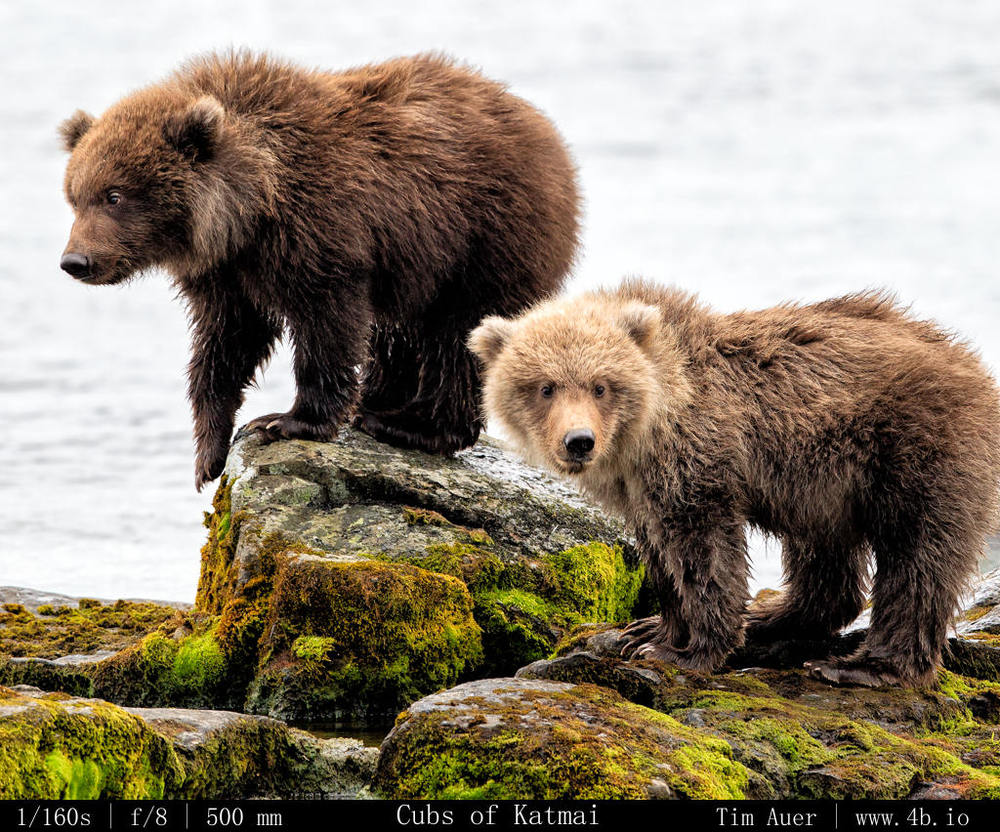
Bear Jam: A bear jam is when the bridge over the Brooks River is temporarily closed due to a bear being too close to the bridge structure. It can be on land (as shown) or in the water (as shown). Bear jams are quite common, especially if a family is fishing near the mouth of the river. Bears have been known to take naps near the bridge and keep it closed for over an hour. This isn’t usually a problem unless you have somewhere urgent to be, which is rarely the case at Brooks Camp (the only thing to do here is look at bears). Although in some cases, a bear jam occurs when you need to get back to camp to catch your plane to King Salmon. This is not a valid excuse to veto the ranger’s bear jam ruling, and you will either miss your flight, or potentially delay it…significantly (this is when it becomes inconvenient).
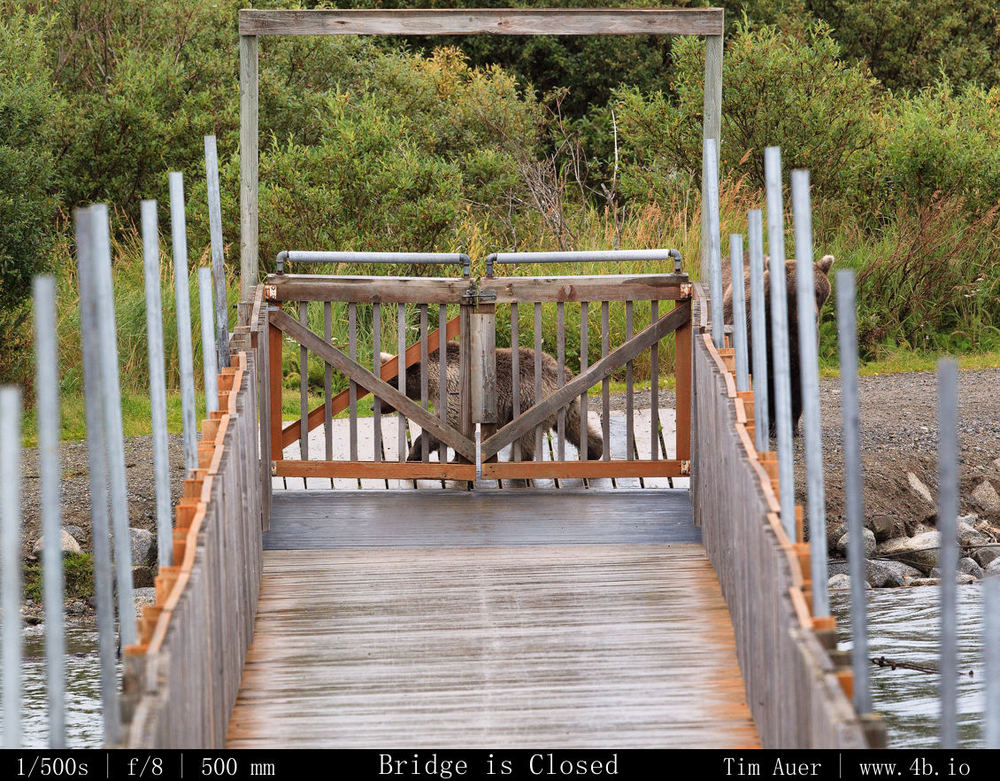
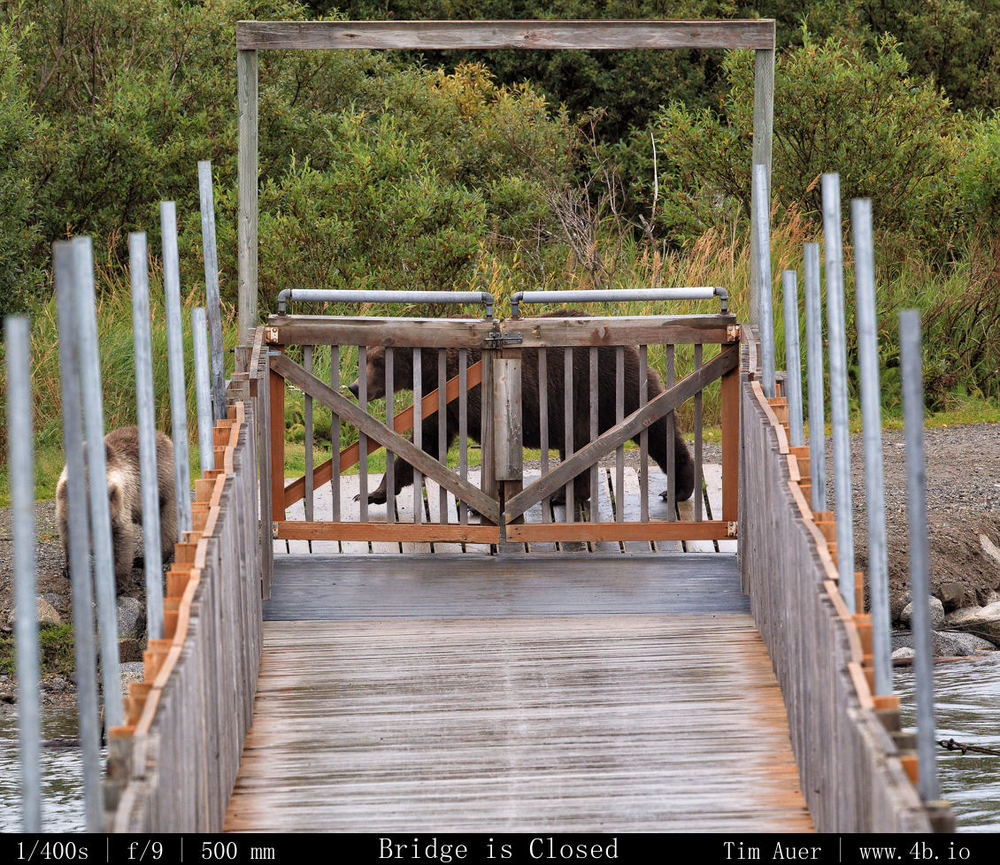
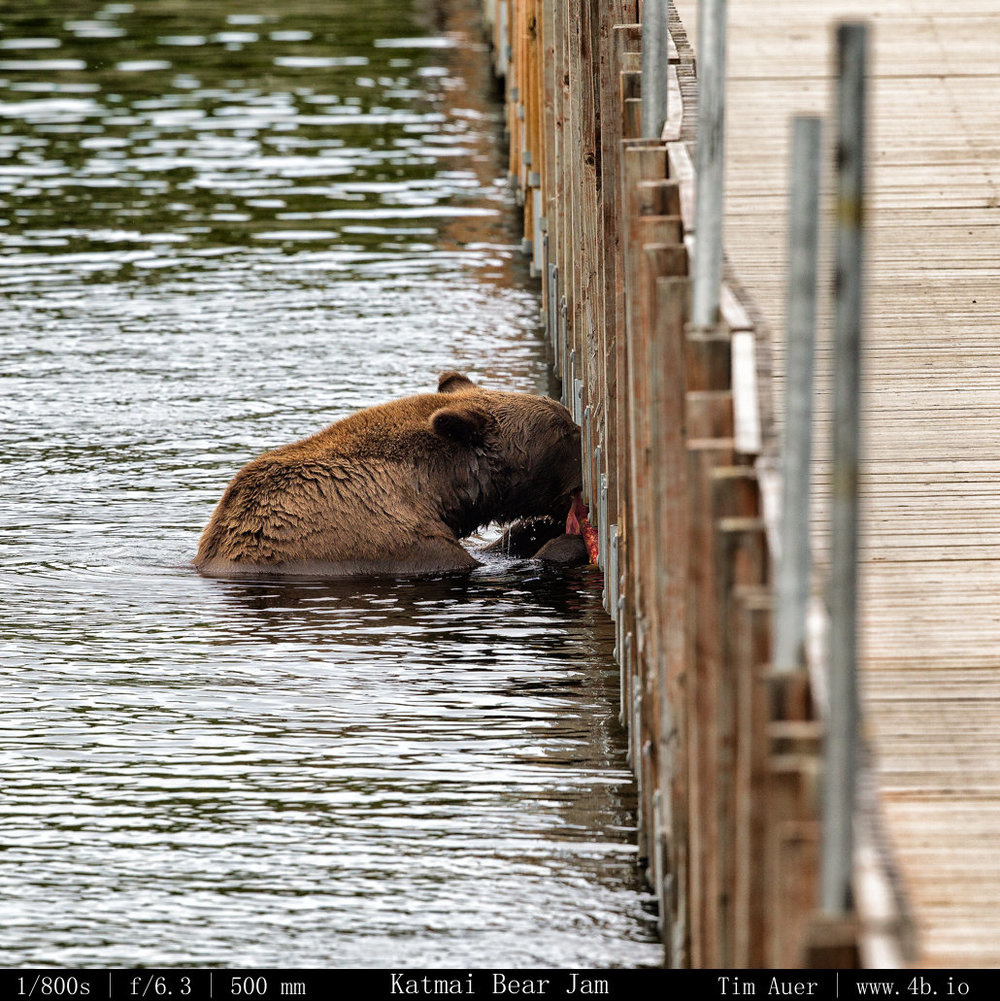
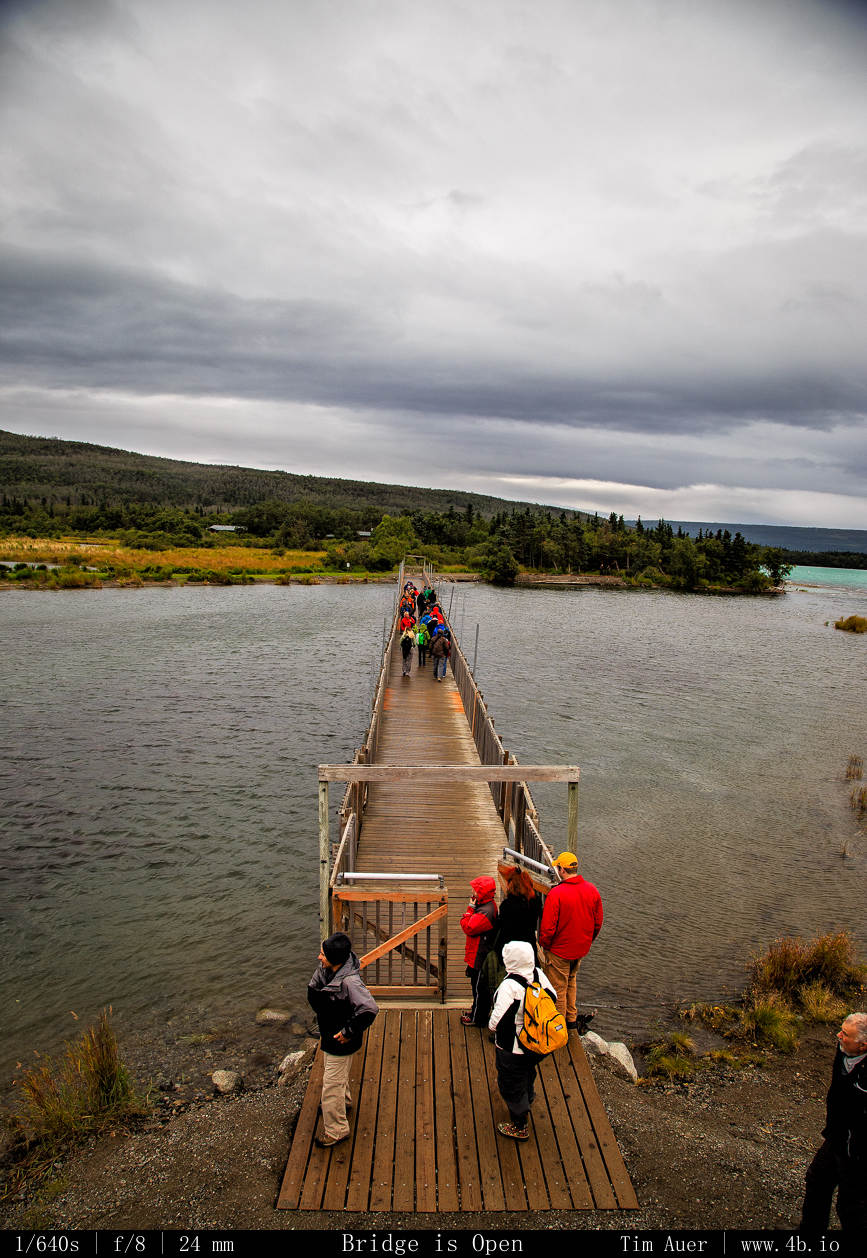
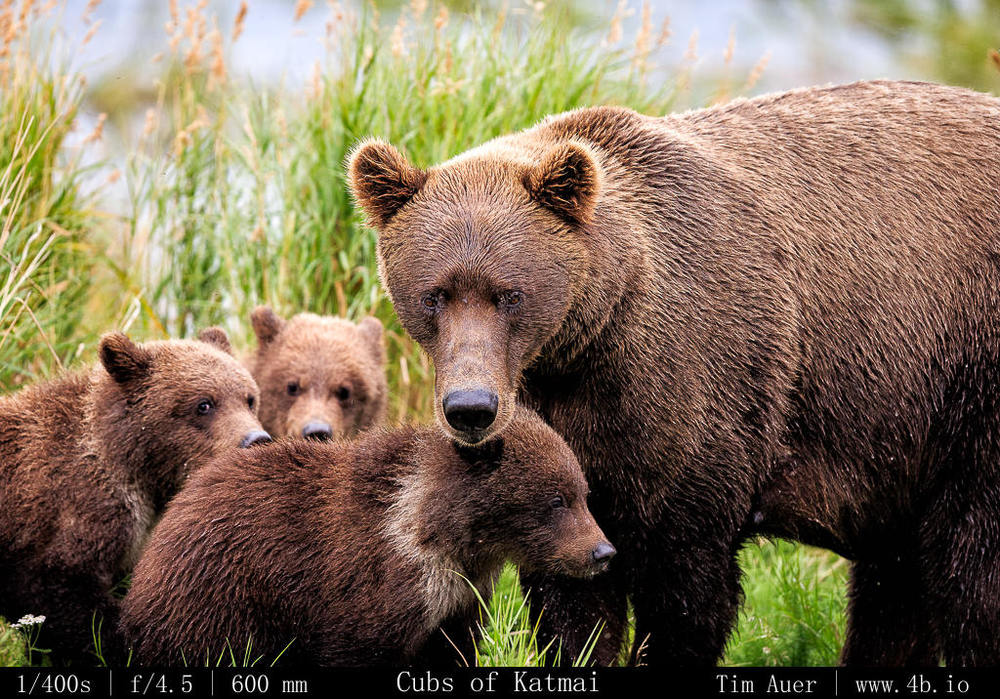
During the course of the trip, we were able to meet four different bear families. Two with three cubs, one with two cubs, and one with a single cub. It was interesting to watch how the different sows handled mothering their cubs. One took a hands on approach with her little ones, never straying very far. While another would leave her cubs playing on a beach, while she would fish 400m away up river. The spring cubs clung together and never strayed far, but the yearlings displayed their ambition by venturing further, eventually crying for mom when they got too far.
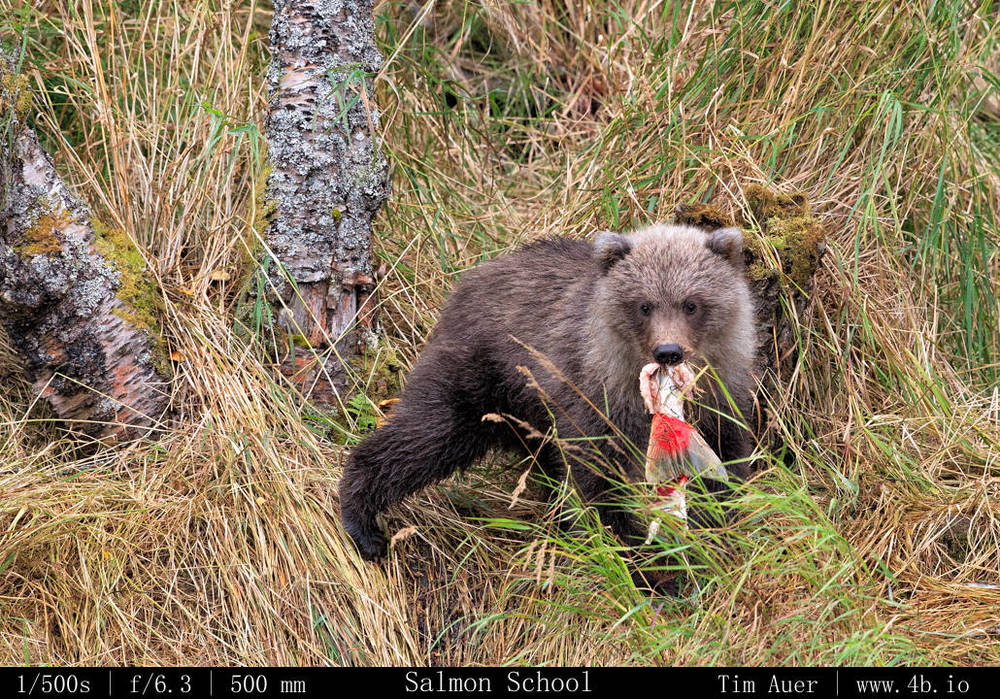
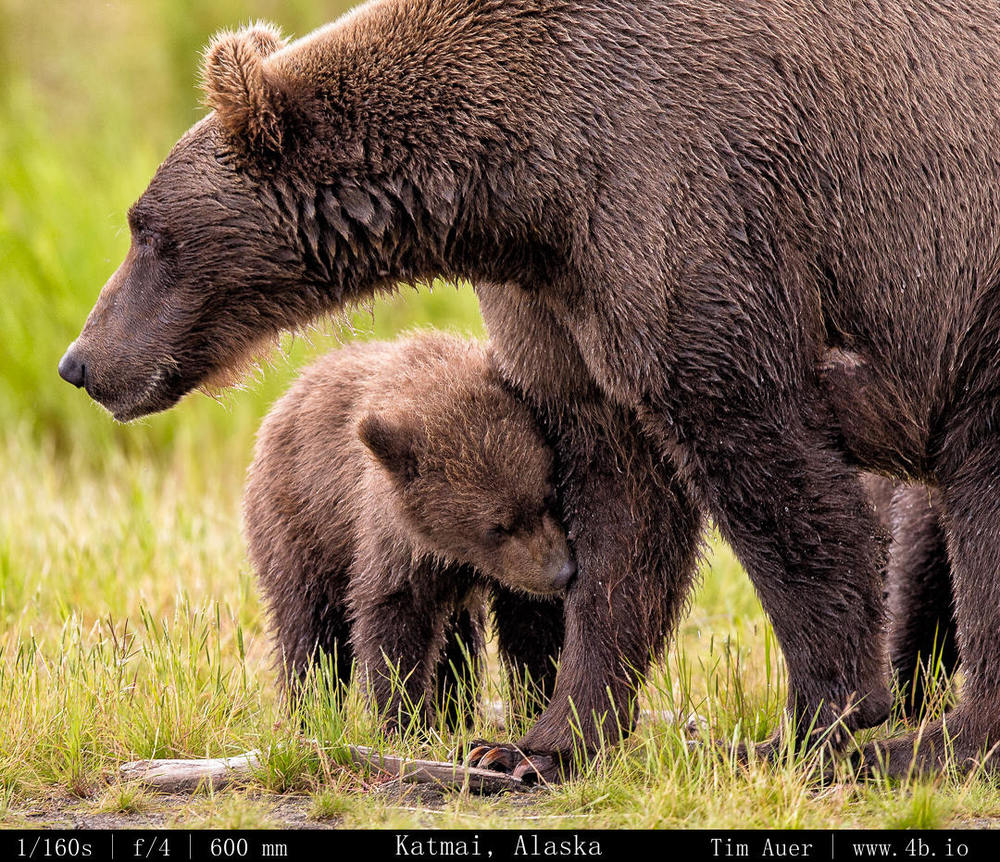
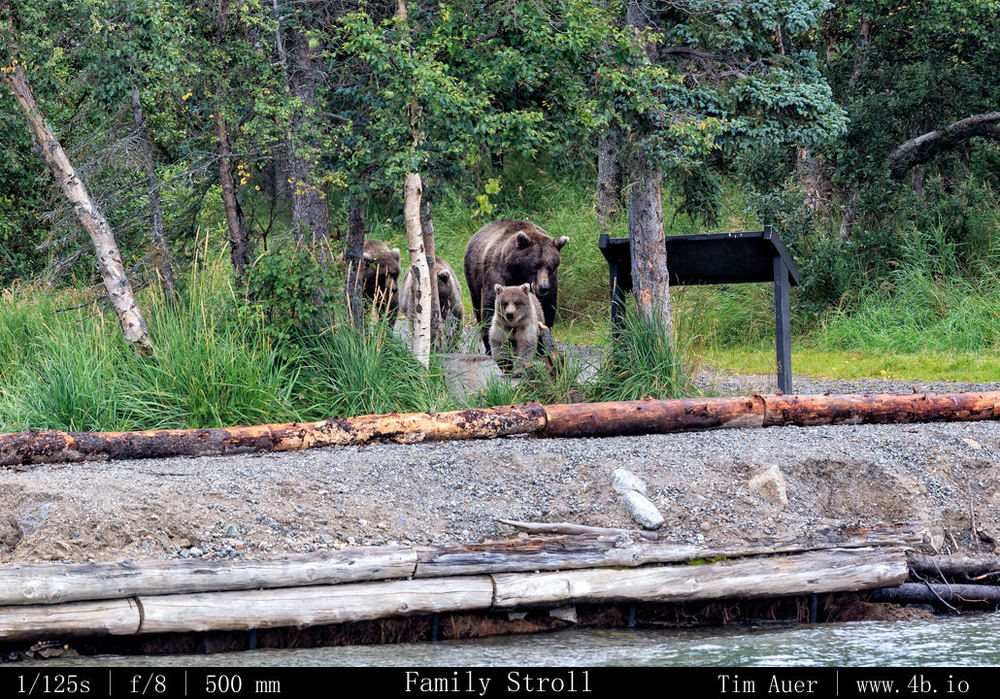
However despite these different styles of parenting, in the early morning of September 6, the two families I encountered appeared to be behaving in a similar manner; with caution. It is probably safe to assume that the rain and the gusting wind was the reason for the caution. Such weather conditions would desensitize a bear’s most evolved and honed skill, their olfactory perception, or sense of smell. When comparing the senses of a bear to a human, a bear’s eyesight is thought to be similar, while their hearing is slightly more sensitive. The nose is a different story. Bears have the most sensitive nose in the class mammalia, seven times more sensitive than a bloodhound. Which, I might add, is a dog breed specifically developed by humans for their keen scent. This means a bear’s nose may be up-to 70 million times more sensitive than the flap of skin hanging off our face we call a nose (plus or minus a few zeroes). When the mother can utilize her nose to the fullest, she is able to multitask more effectively and can keep her family safe, while allowing her cubs to scatter in a wider perimeter. During adverse weather conditions, these sows, with their sense of smell dulled, are essentially nose-blind to their surroundings and forced to rely on their vision to avoid danger. This meant everyone was kept in a tight groups and straying was forbidden. This made for interesting photography because the family, now a cohesive unit, would move in erratic patterns determined by wandering cubs and a herding mother. Ordinarily, the mother would allow the little ones to stray a bit, only calling them back if they went too far. But this cohesive unit was now going places they ordinarily wouldn’t go, such as on the sidewalks near the bridge. Resulting in a bear jam that lasted over 60 minutes.
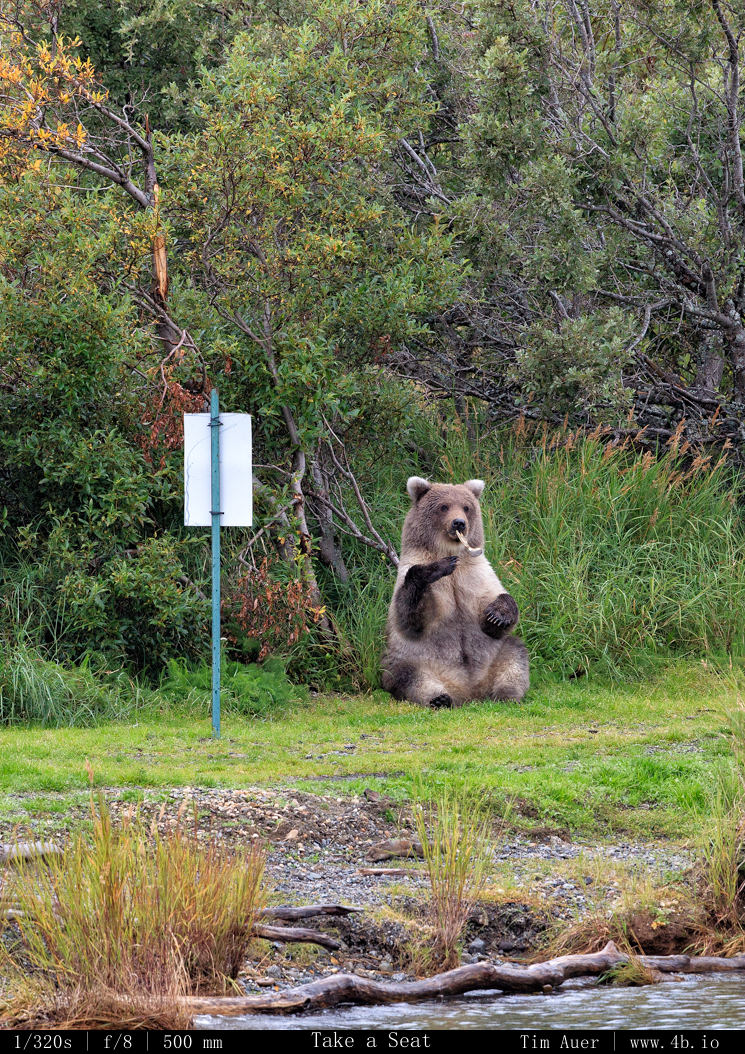
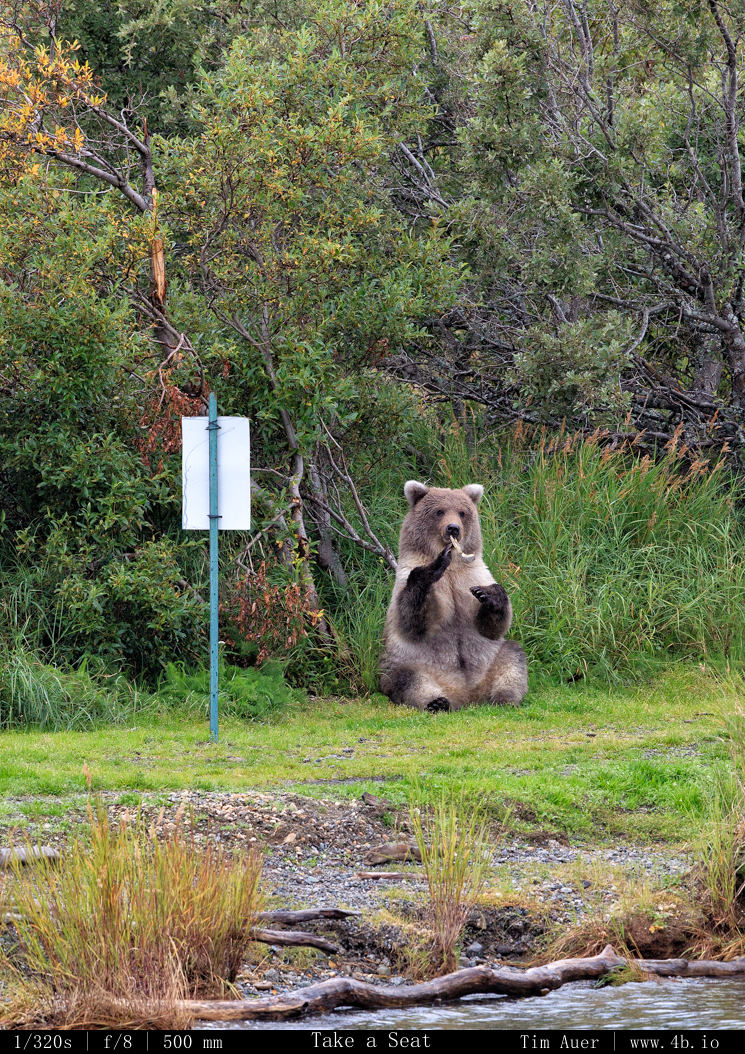
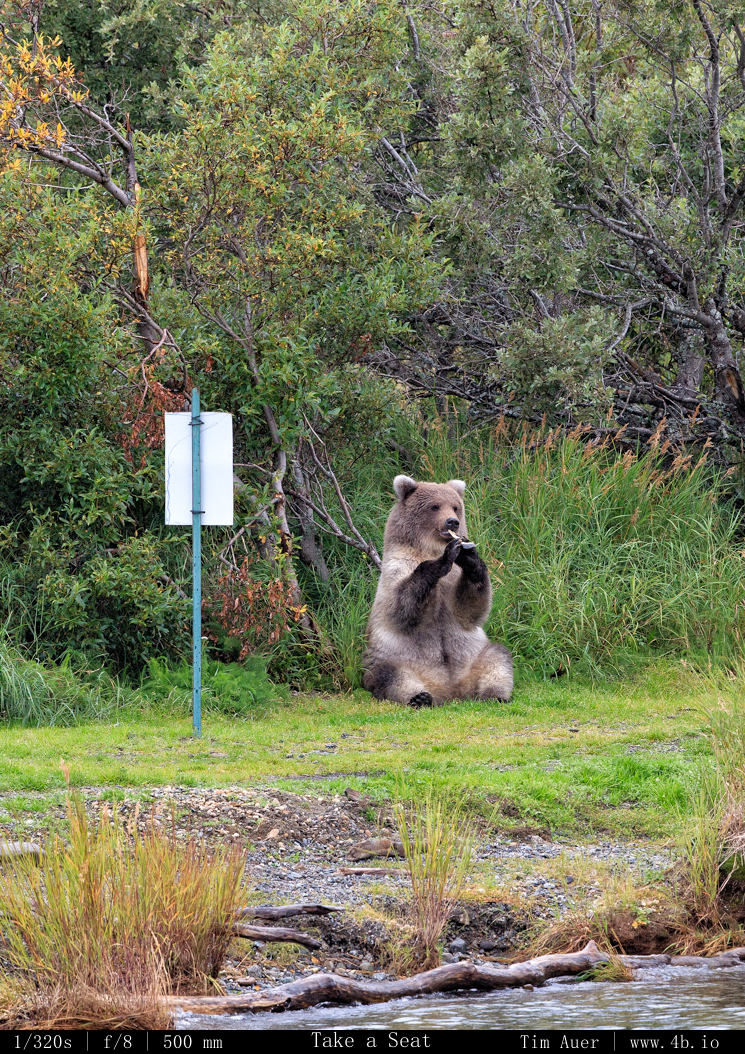
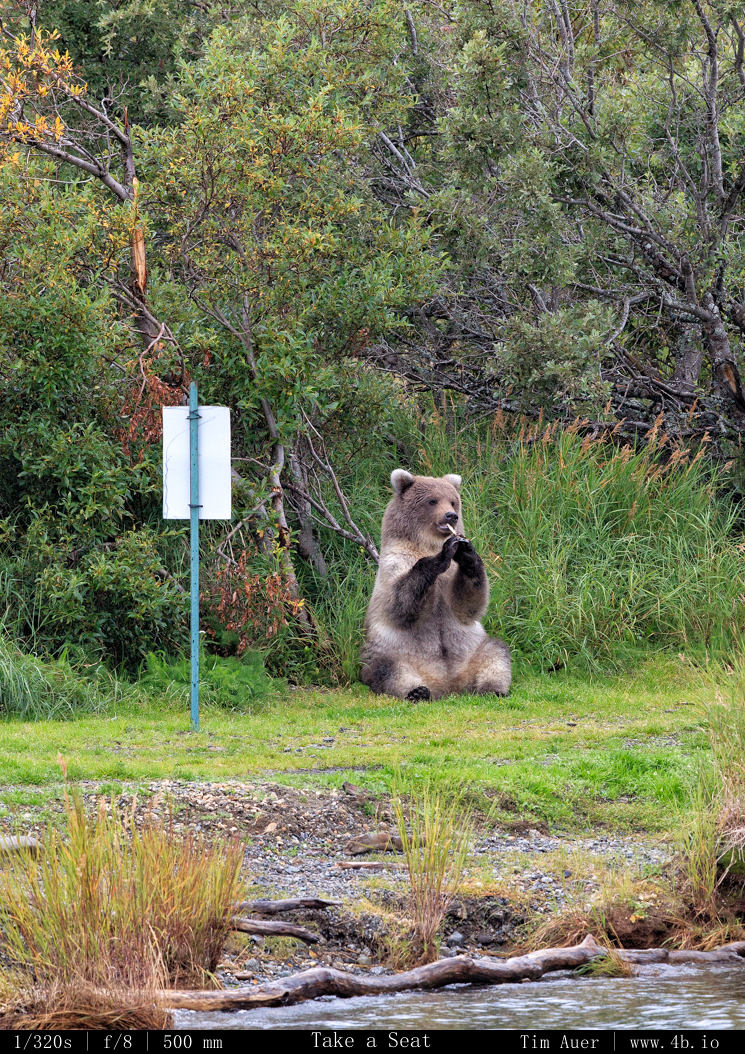
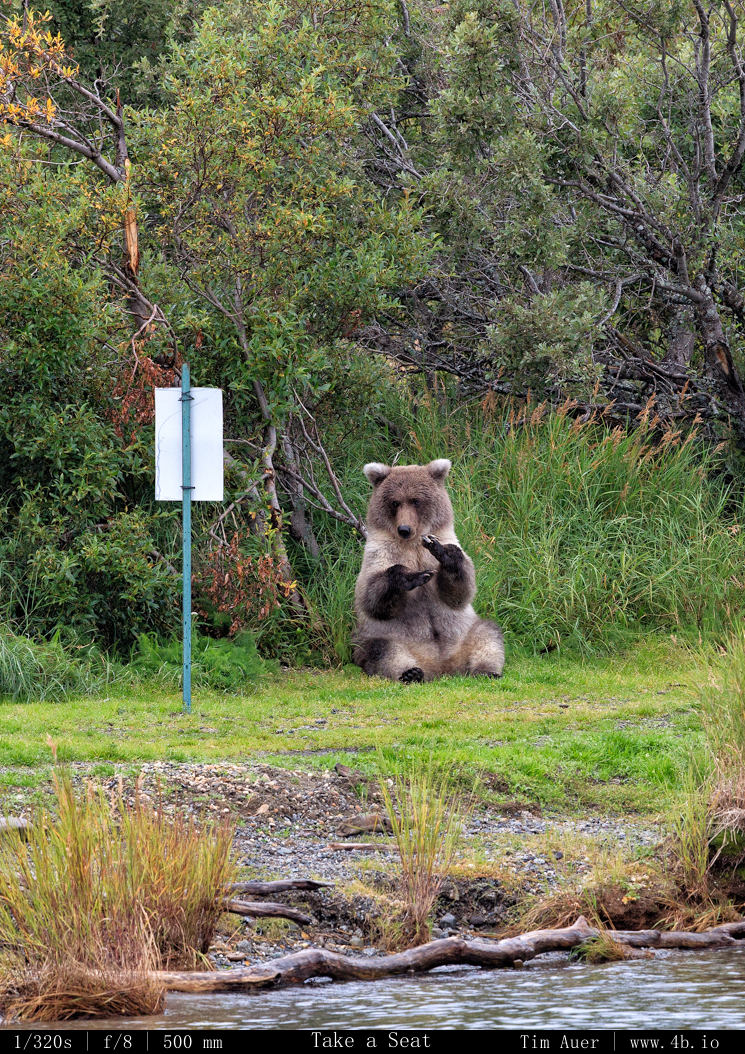
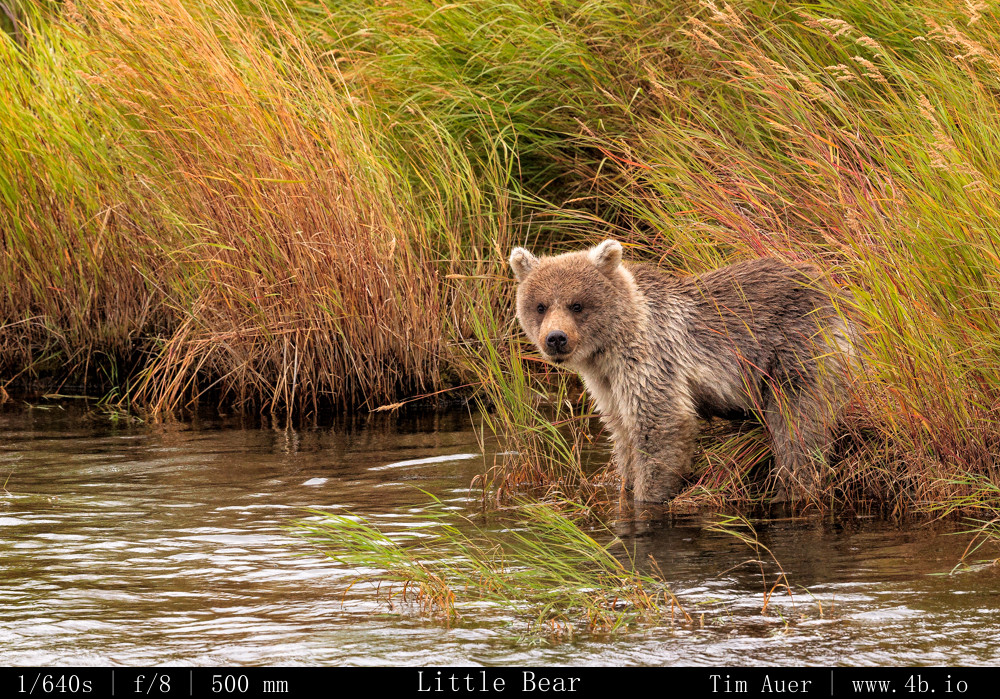
By afternoon, with the conditions improving, the sows began to relinquish their control and allow the cubs to stray further. At one point, the sow with two cubs even allowed the bridge to be between her and her cubs. This was interesting because I learned from talking with the ranger that this very sow had lost her cubs for an hour the previous week doing the exact same thing. The mother had left her cubs on a beach at the mouth of the river and went fishing upstream, eventually swimming under the bridge. After some time, she realized she had lost the scent of her cubs and became extremely agitated. The ranger explained how she was sprinting and splashing back and forth along the river side, huffing, jaw-popping and foaming at the mouth in distress and charging any bears that come close. This went on for about 45 minutes. Meanwhile on the opposite side of the bridge, throughout the entire ordeal, her cubs were happily playing together on the beach. Blissfully unaware of the emotional stress of their mother. Finally, the sow picked up the scent of her cubs and crossed back to the beach where she reunited with her cubs. Feeling relieved I would imagine. Some bear mothers never seem to learn!
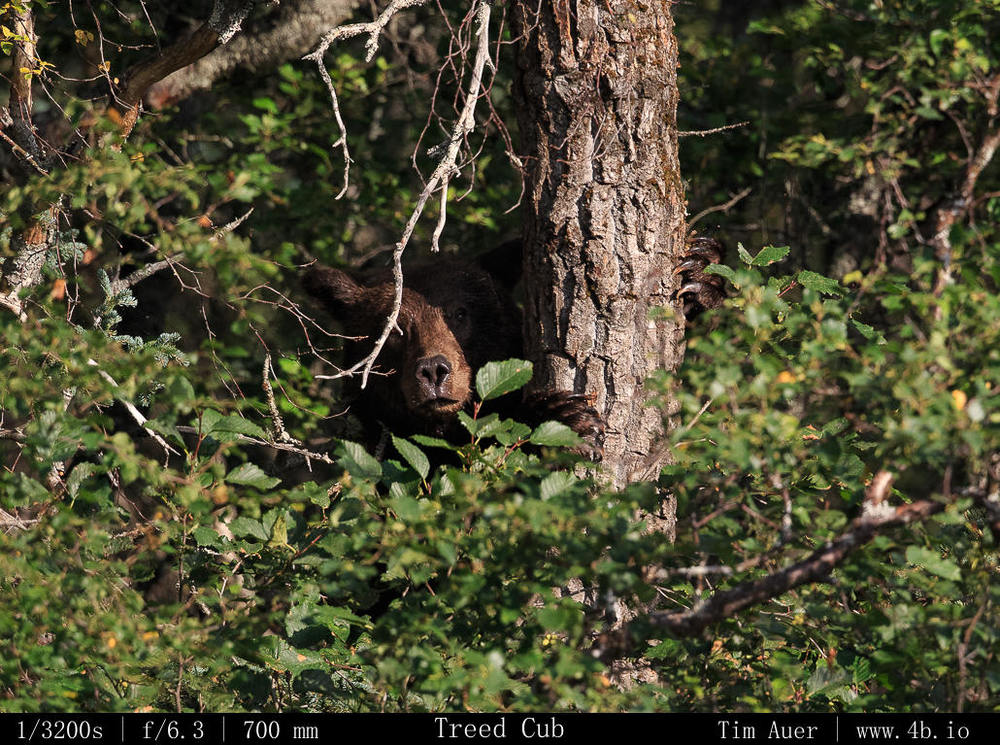
It was made even more interesting (this is very interesting) that the ranger explained this story to me, because on the following day we were able to witness a similar display of behavior by the same mother. This time it was up near the Brooks Lake. Upon arriving at the head of the Brooks River we saw many bears. A mother and her cubs across the river, and moving downstream. An adult male entering the river from our side and another adult male in the middle of the river directly in front of us. And finally a sub-adult male downstream and on the far side of river. The mother began to maneuver to the opposite side (our side) and further downstream to avoid these male bear obstacles. And eventually, one of her cubs became stranded on the far side of the river, while the mother+cub kept moving downstream and into the forest. The sub-adult male, standing in the river, was only 20 yards from the stray cub, who was on the river bank, barking for its mother. The cub even got spooked by the sub-adult and treed himself (following mama’s instructions I assume). This went on for about 30 minutes, until mother+cub returned to the river (about 20m downstream from where we were standing) to chase off the sub-adult and re-unite the family.
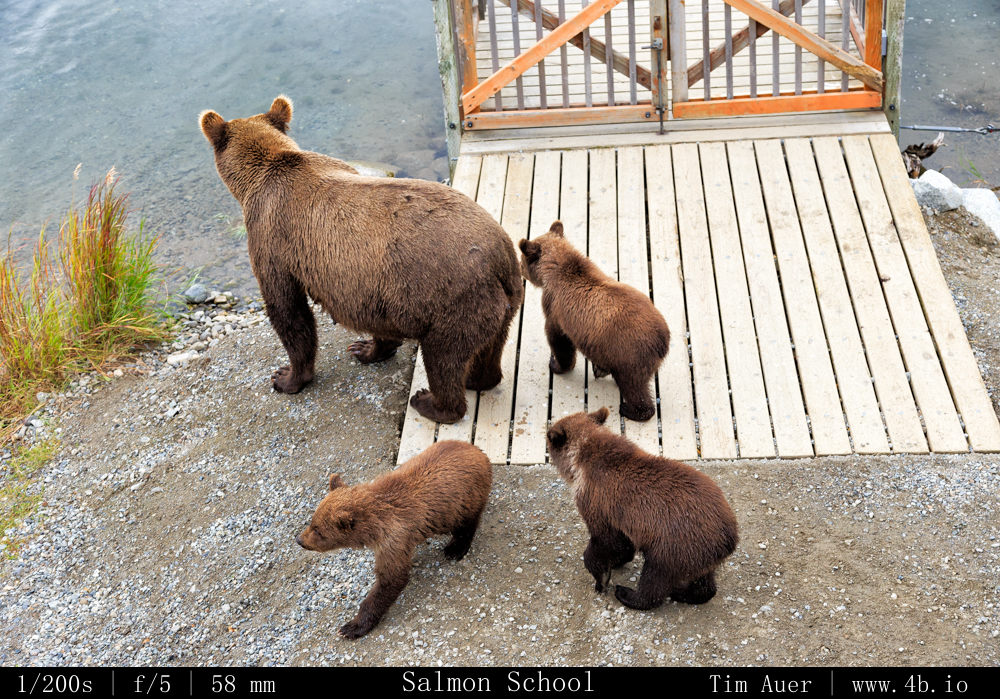
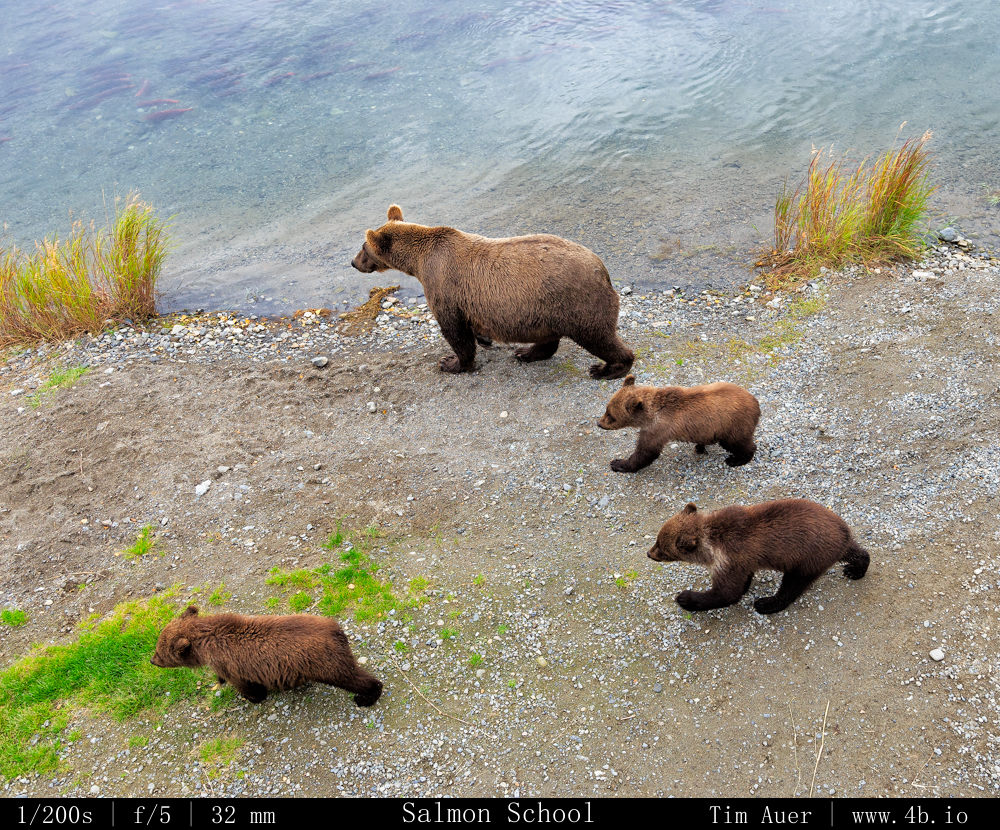
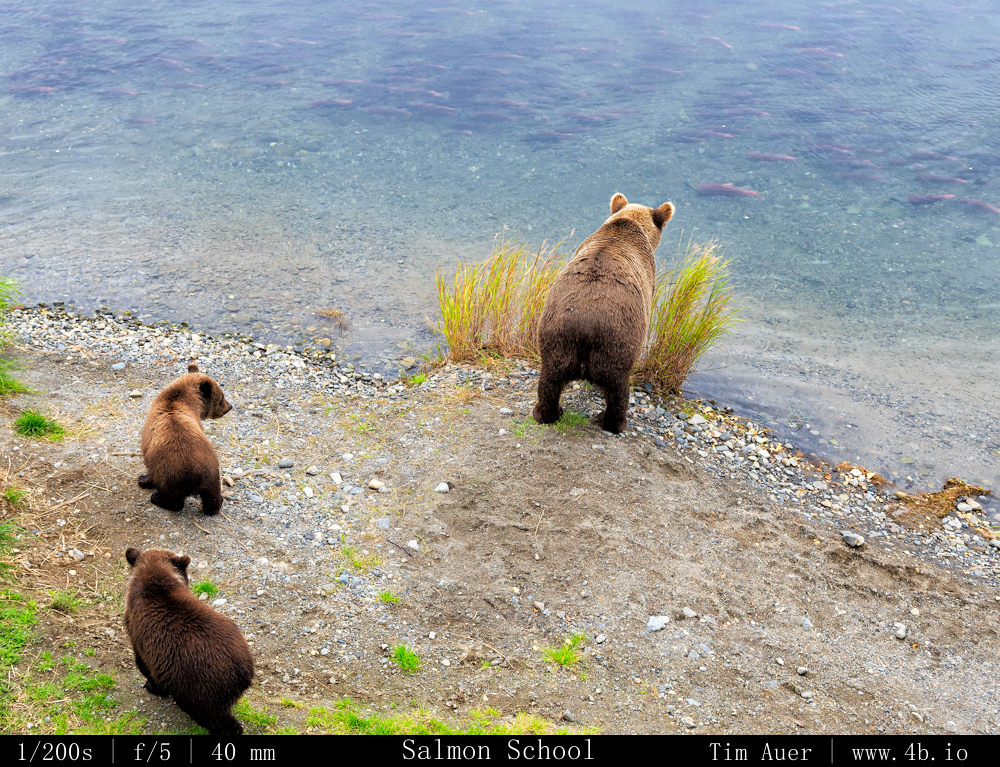
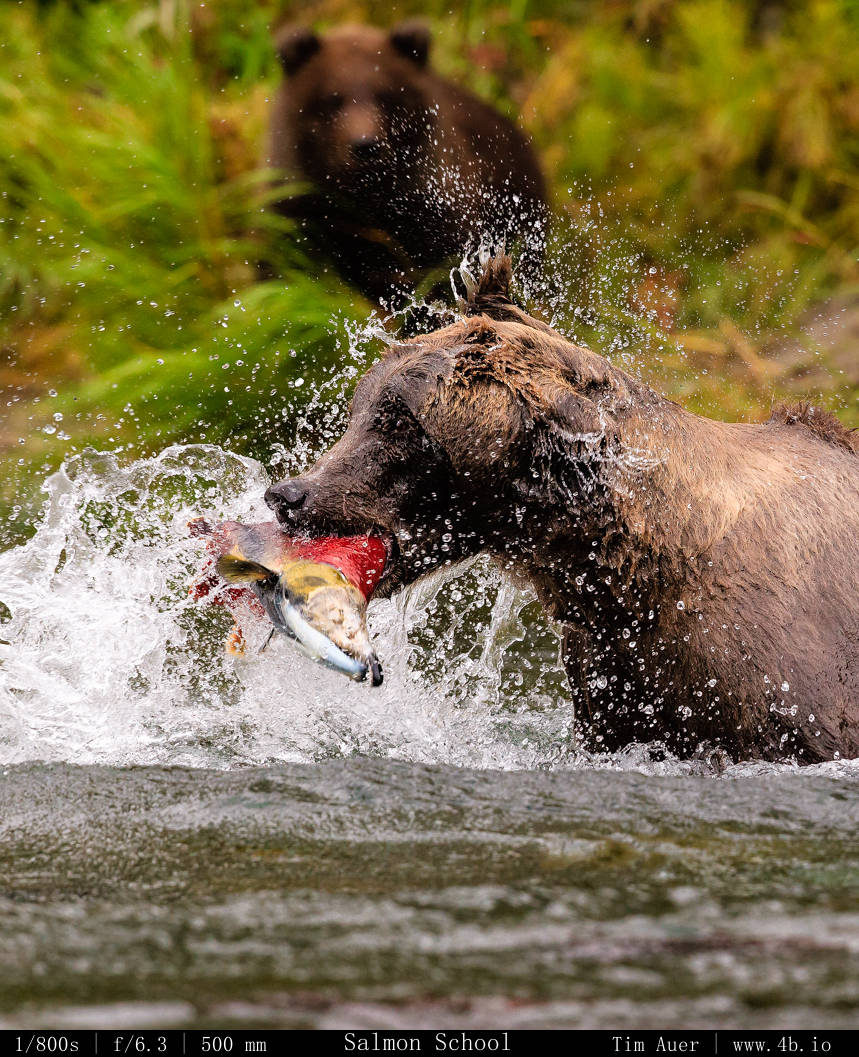
Brown Bears are typically a solitary species, roaming vast swaths of land without ever coming into contact with their kind. This is not the situation for the Bears of the Brooks River. The abundance of food (salmon) makes it possible for the bears to tolerate close quarters with one another. To maintain boundaries, the bears use a complex social hierarchy to determine status and position. This social hierarchy reflects itself in the personality of each bear and influences their behavior.
The two most important currencies in a bear’s world go hand-in-hand: (1) size and (2) strength. And the only way to become rich is to eat…a lot. The only way to eat a lot is to catch a lot of salmon. And the only way to catch a lot of salmon is to have a great teacher when you are a cub. That’s right, the biggest, strongest, and most ferocious bear in Alaska earned this title by listening to his mother…
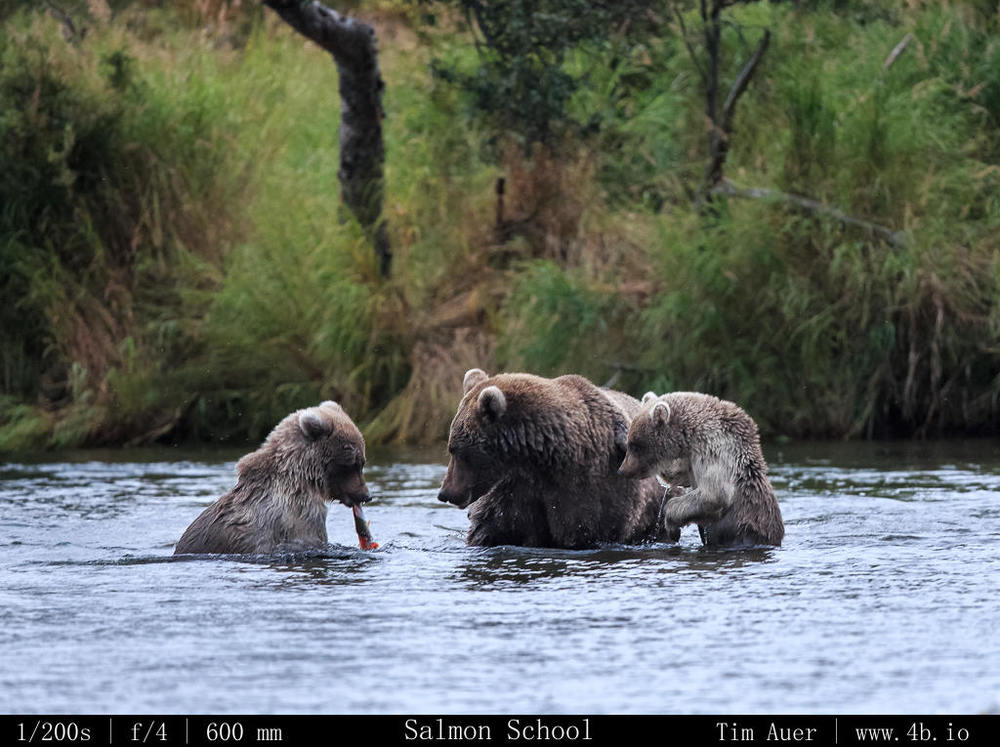
The previous post discussed some of the fishing techniques observed. The next logical step would be to understand how and why each bear honed a different technique. It all goes back to the social hierarchy of the Brooks River bears. In July, the most dominant bear commands the most premier fishing spot of the pre-spawn salmon run, usually considered to be the “Lip” of Brooks Falls. From this position and radiating outward (downstream), the bears become increasingly less dominant. The least dominant bears don’t even get a foothold in the river, and scavenge the scraps of their more powerful kin. However, a bear does not begin his fishing career on the Lip, a sub-adult has no chance to displace an adult male. So before gaining “Lip” status, the bear must learn to successfully fish the other areas of the falls and the river. This is where the mother comes in.
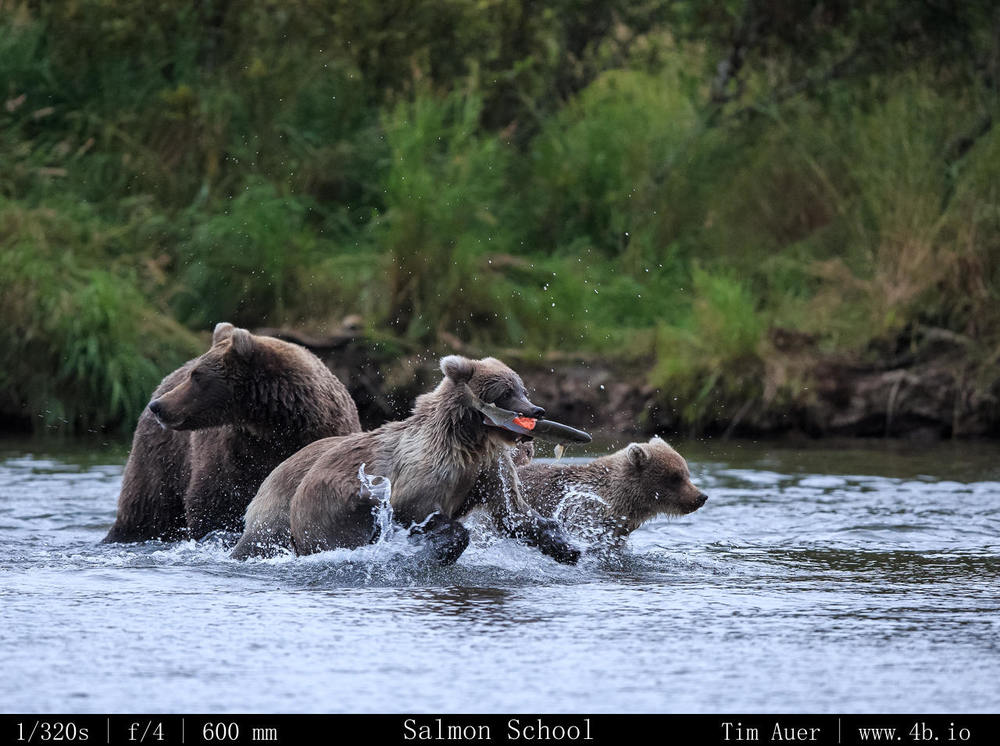
During the 2-3 years a cub stays with its mother, the mother provides it with food and protection. Sometimes the mother gives a small piece of easily chewed meat, other times its the fish’s skin, or the whole body. This cub must figure out on its own what is good to eat (skin, muscle, roe) and what’s not (gills, innards). Sometimes the mother feeds the cub on the dry beach (the cub prefers this), other times she feeds the cub on a rock in the middle of the river, and sometimes she feeds it in the middle of the river, forcing the cub to swim in water above its head (the cub does not like this). Of course this is not without its risks, cubs don’t have the strength yet to be considered a strong swimmer like their mother. In fact, drowning is the leading cause of death for bear cubs in Katmai NP. But the cubs must learn to swim and they must learn to fish. These exercises and demonstrations, given by the mother, have an important purpose. These tried and true techniques ensure sure her cubs learn the skills needed to survive on their own.
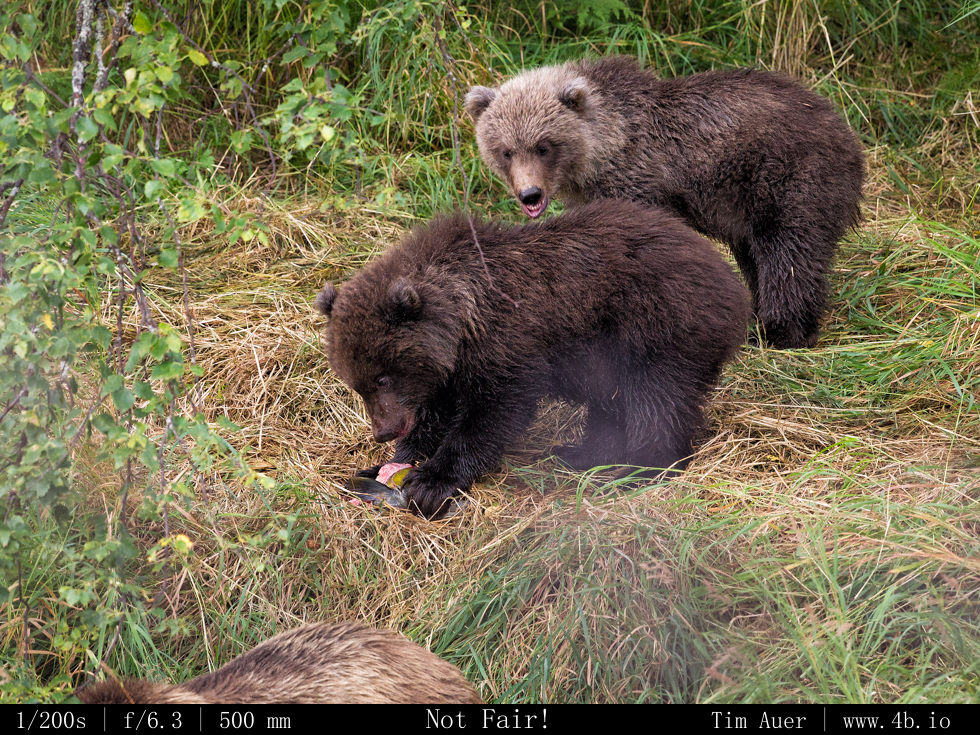
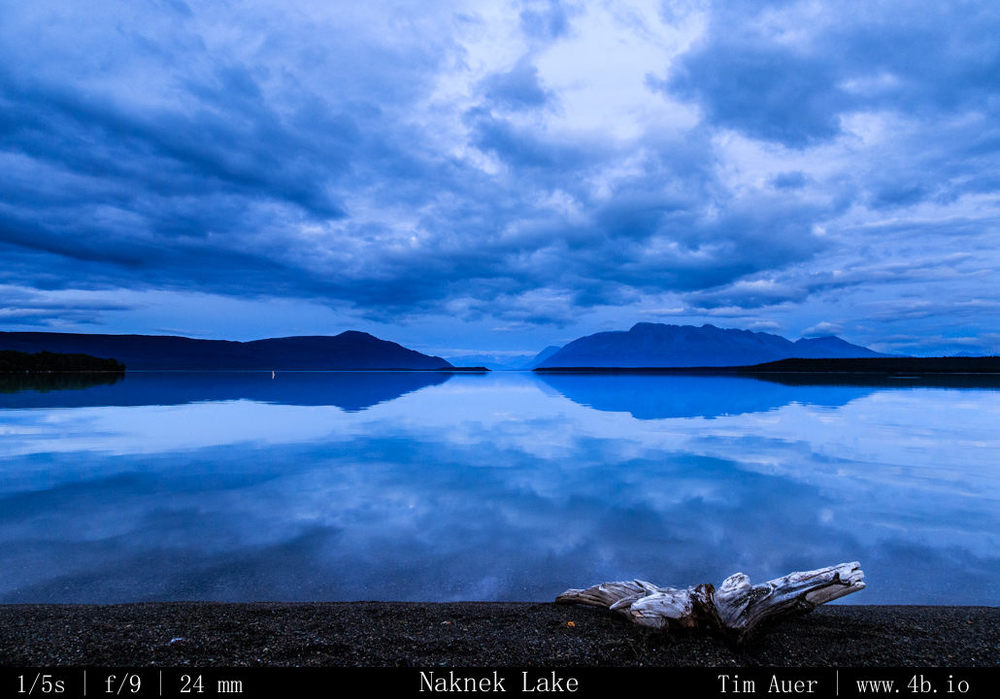
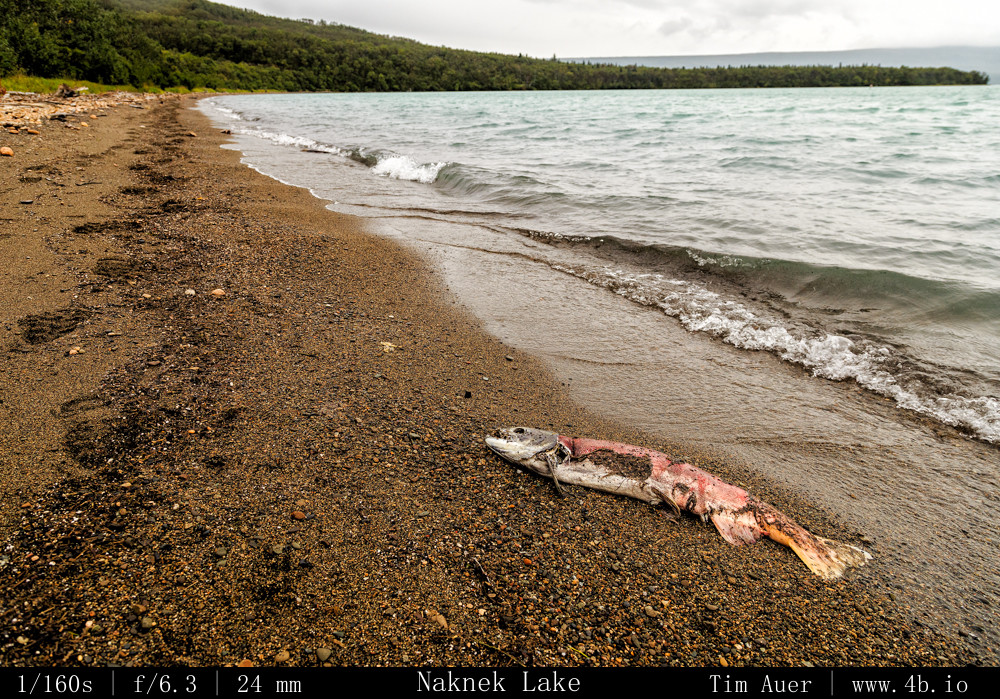
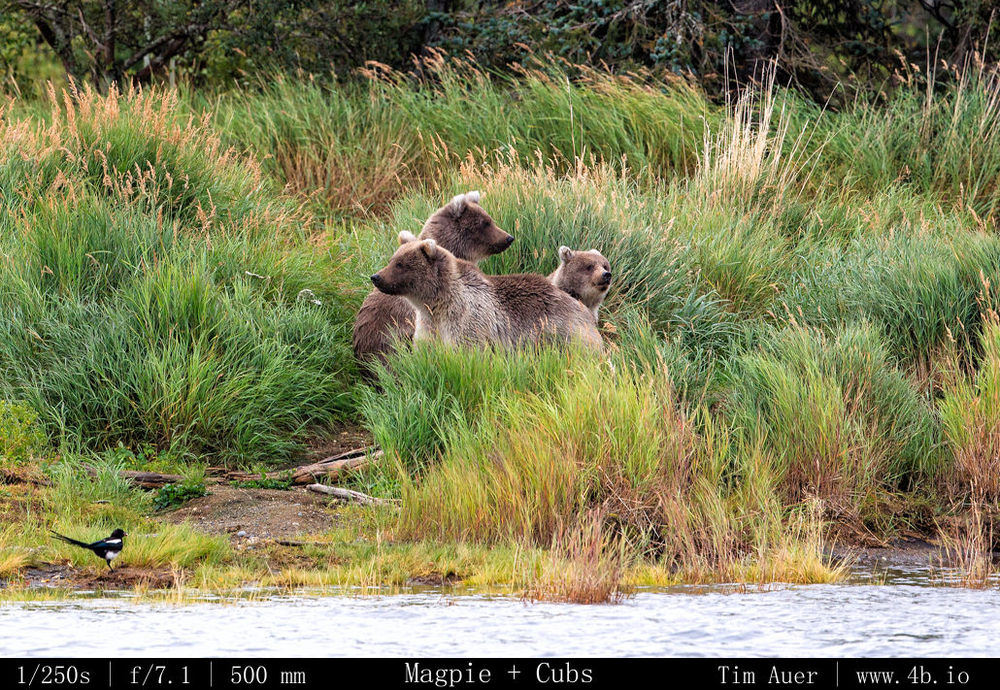
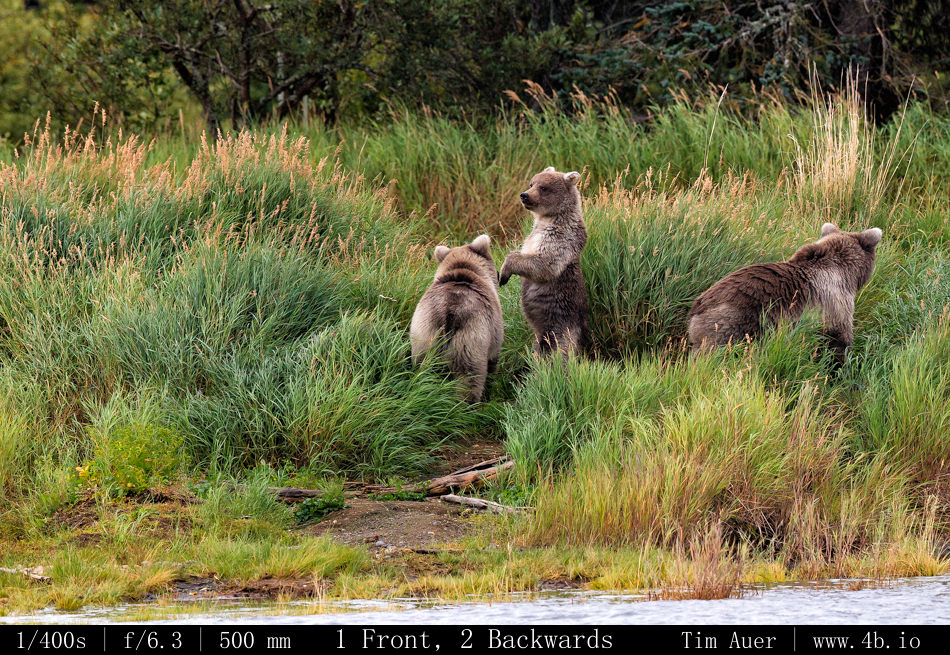
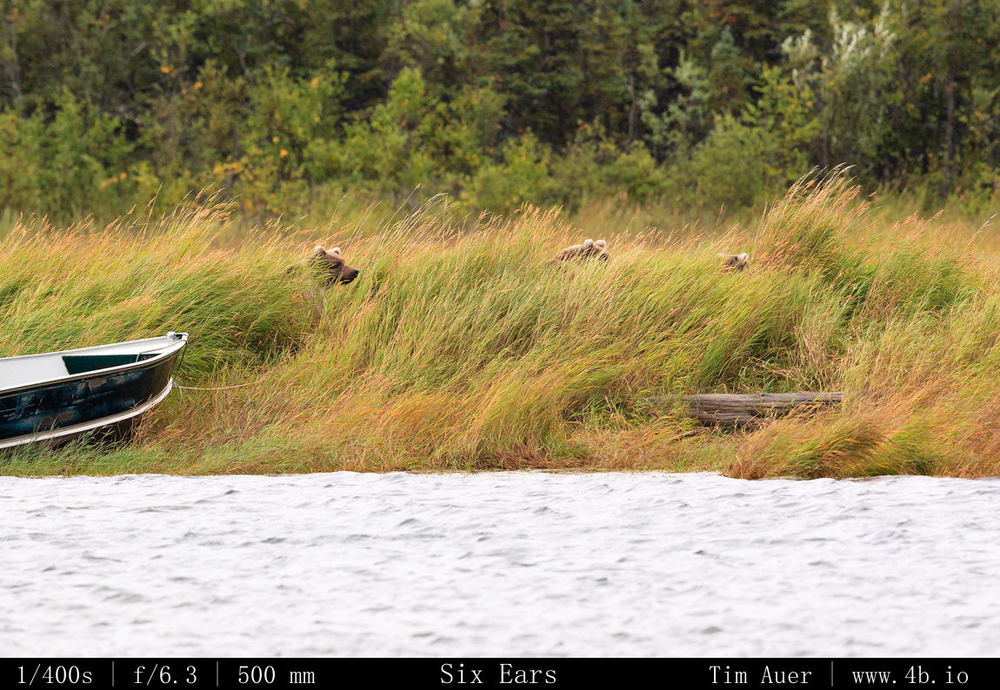
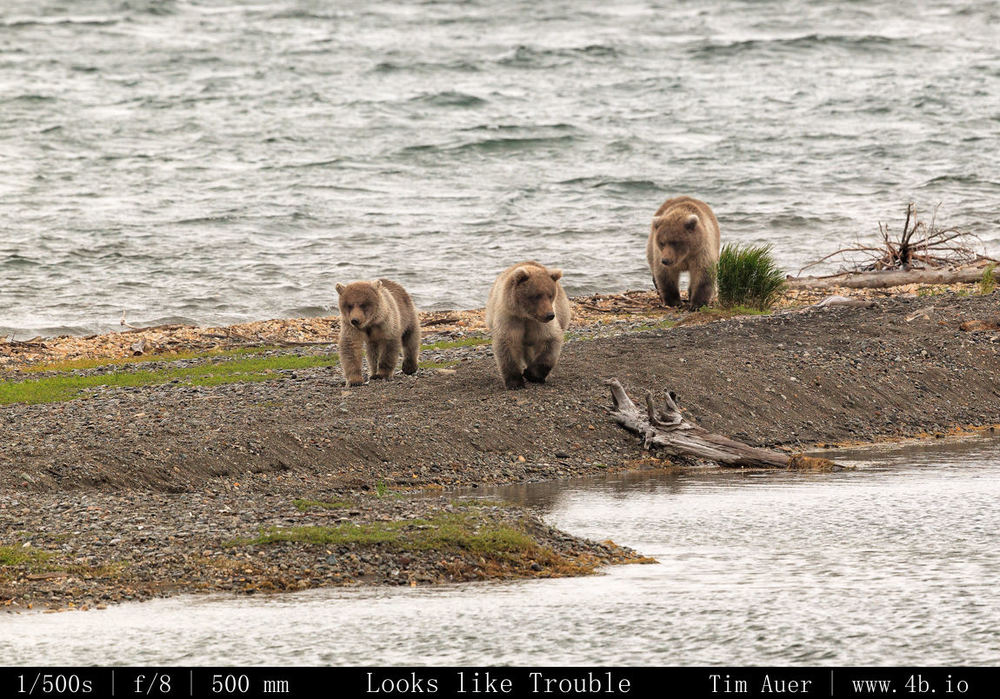
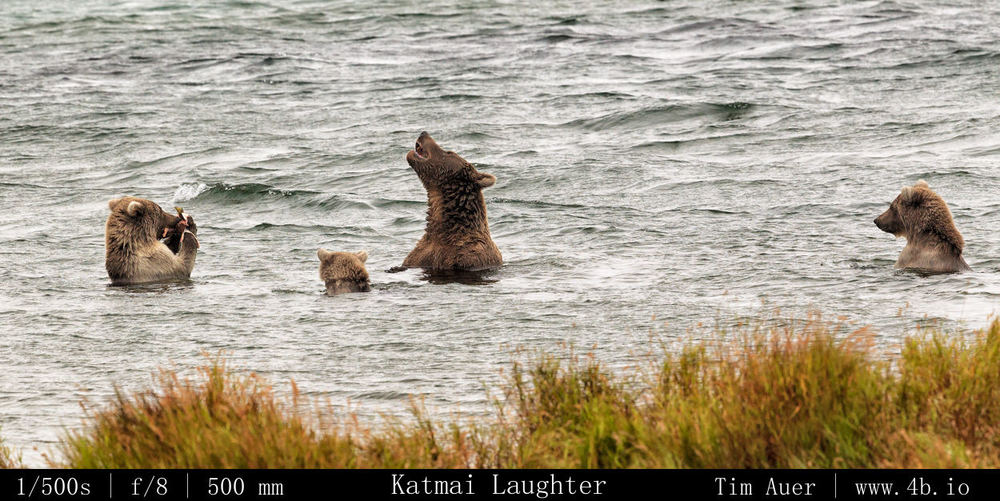
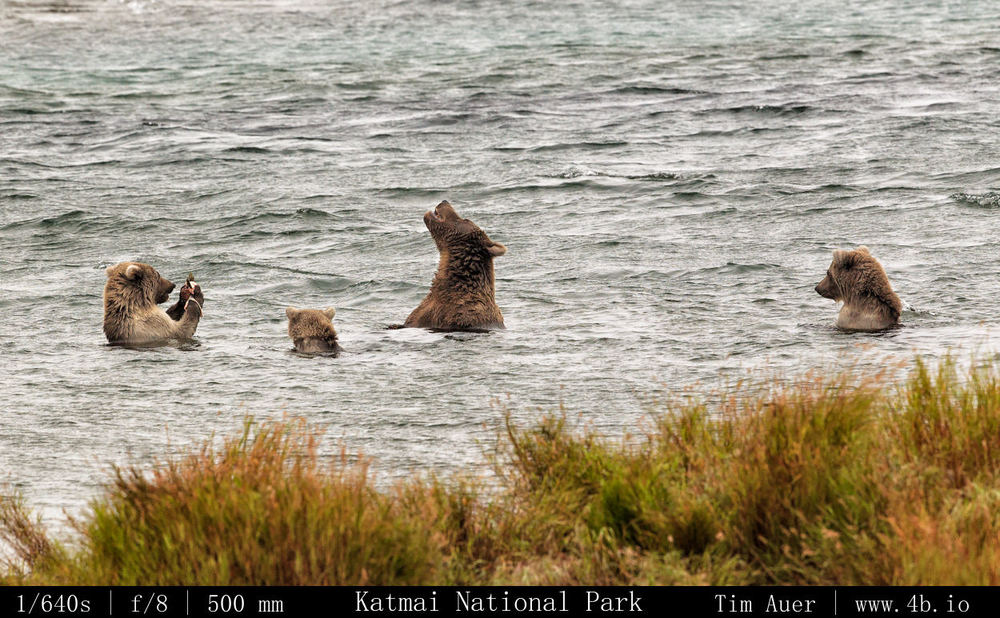
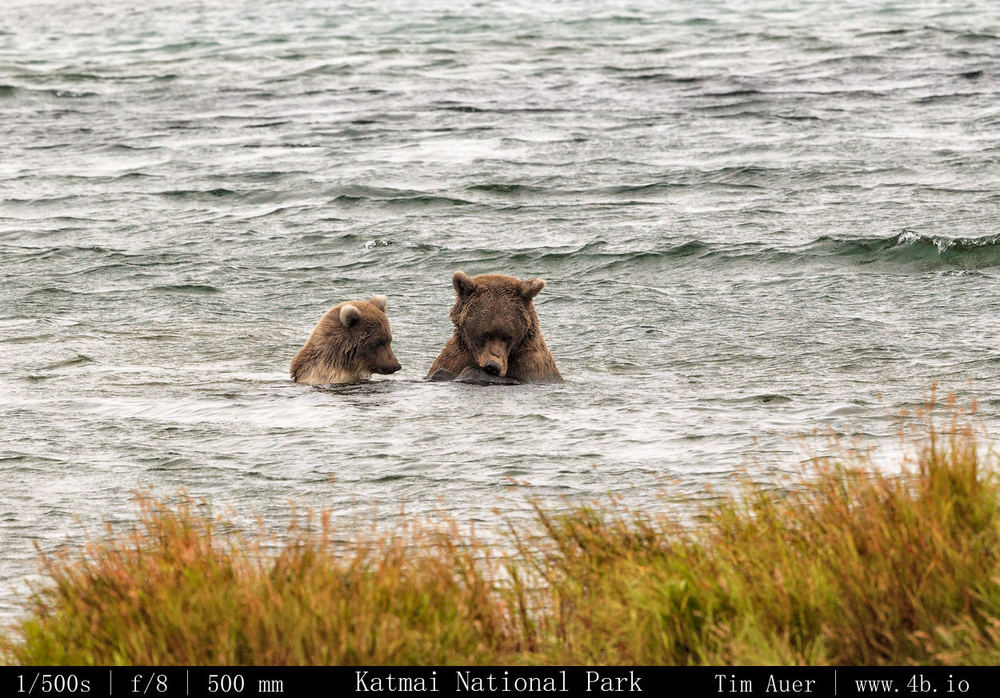
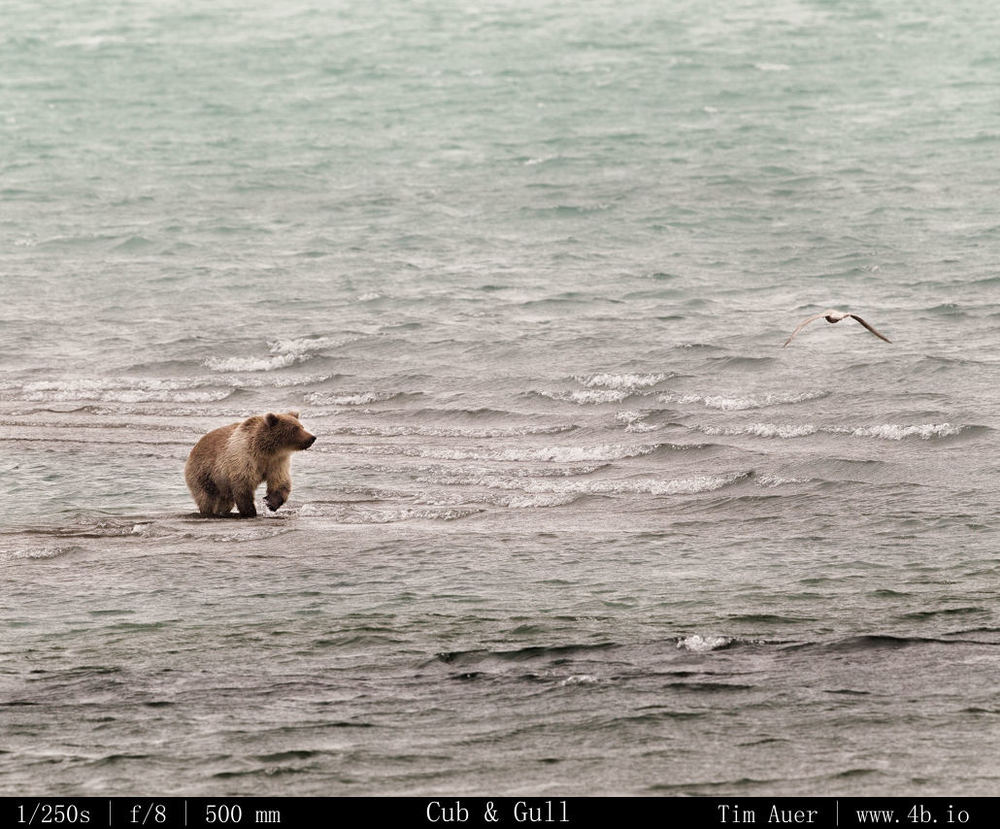
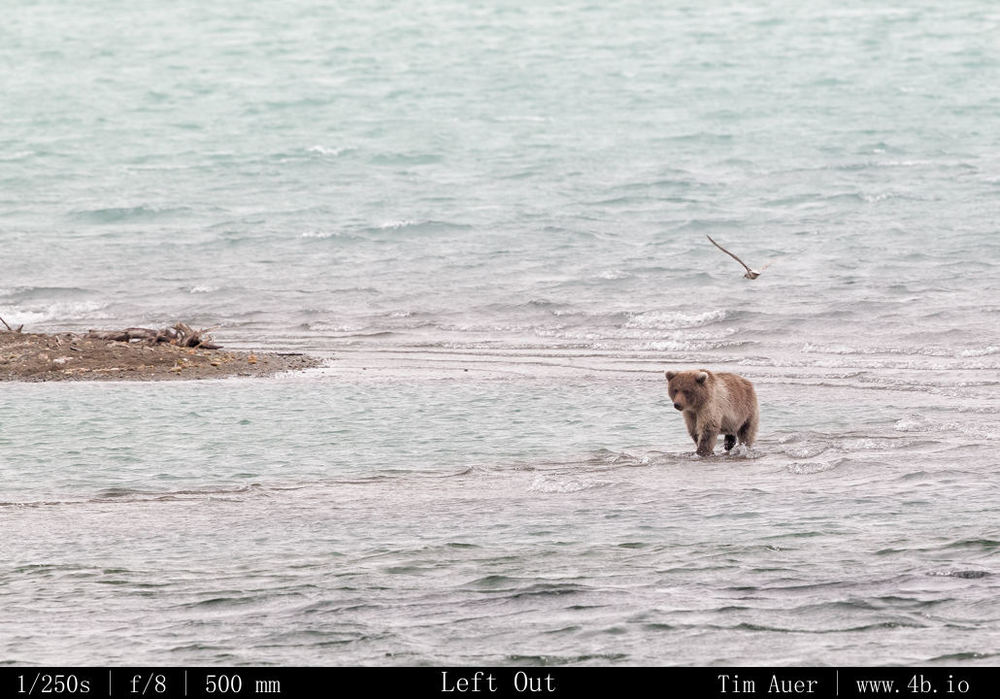
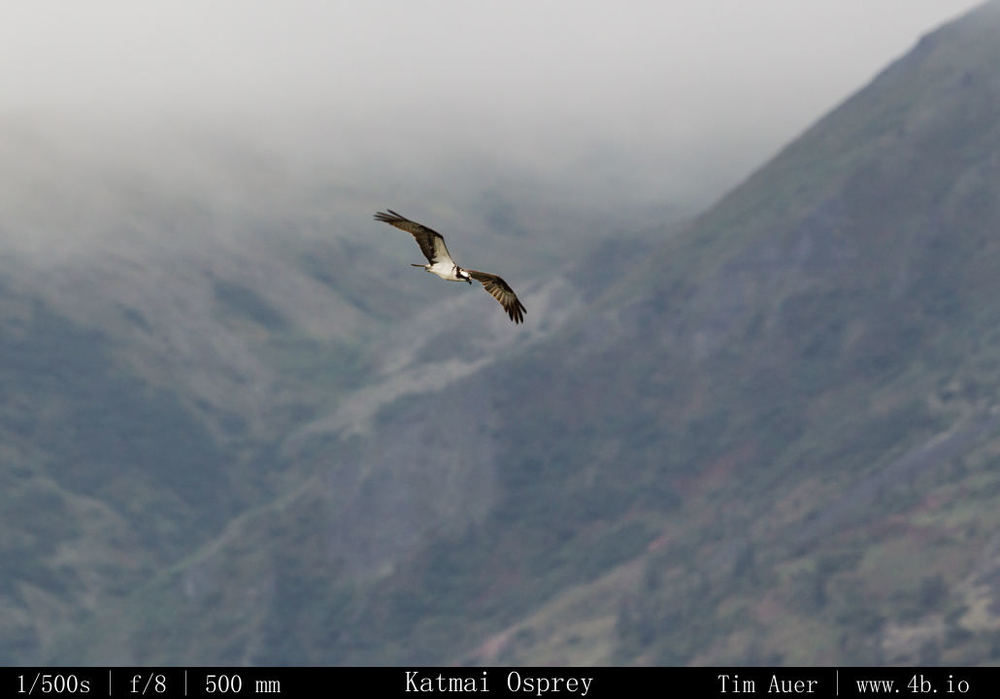
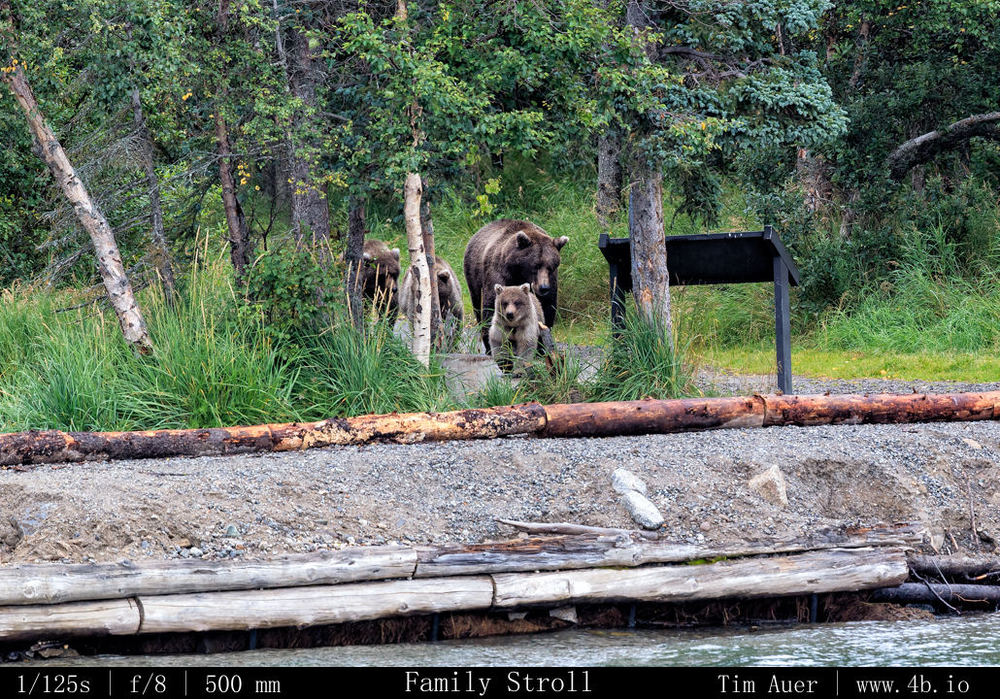
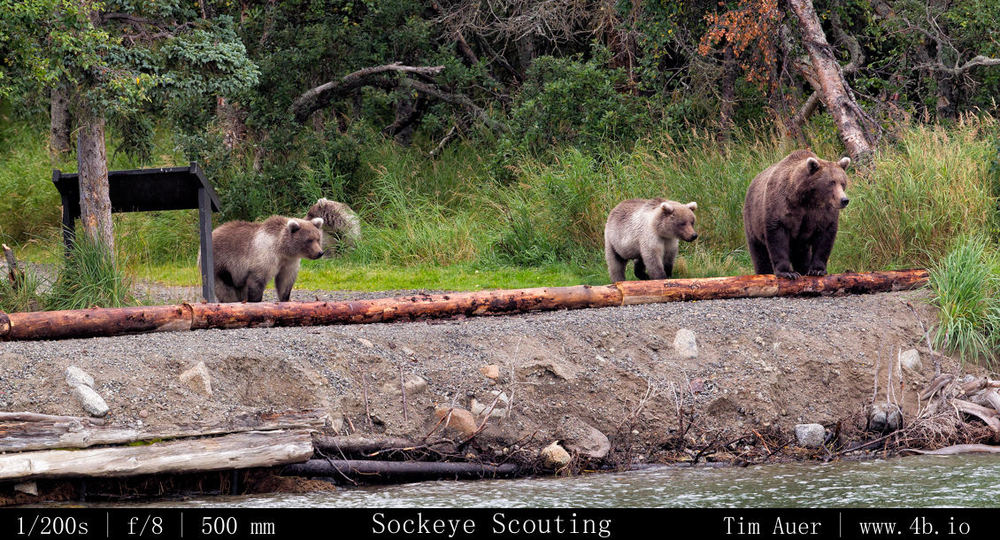
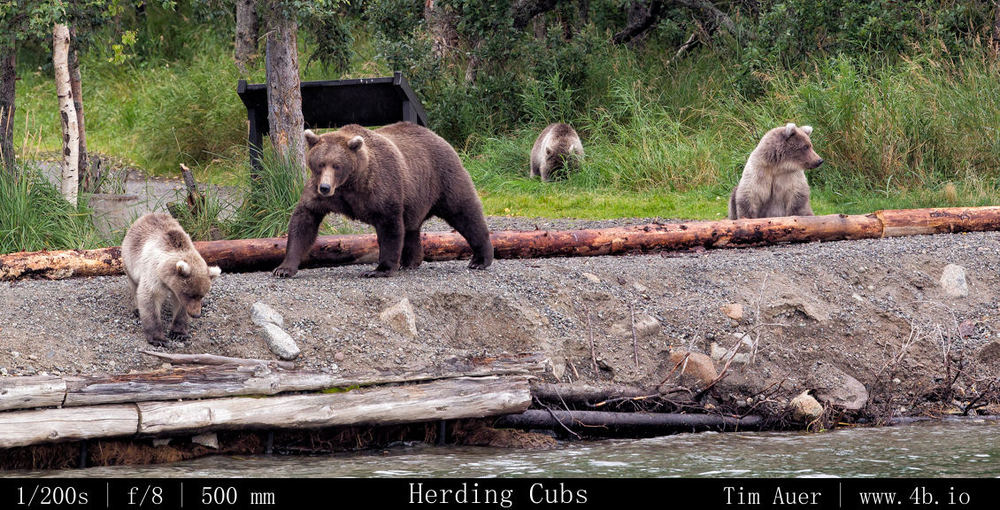
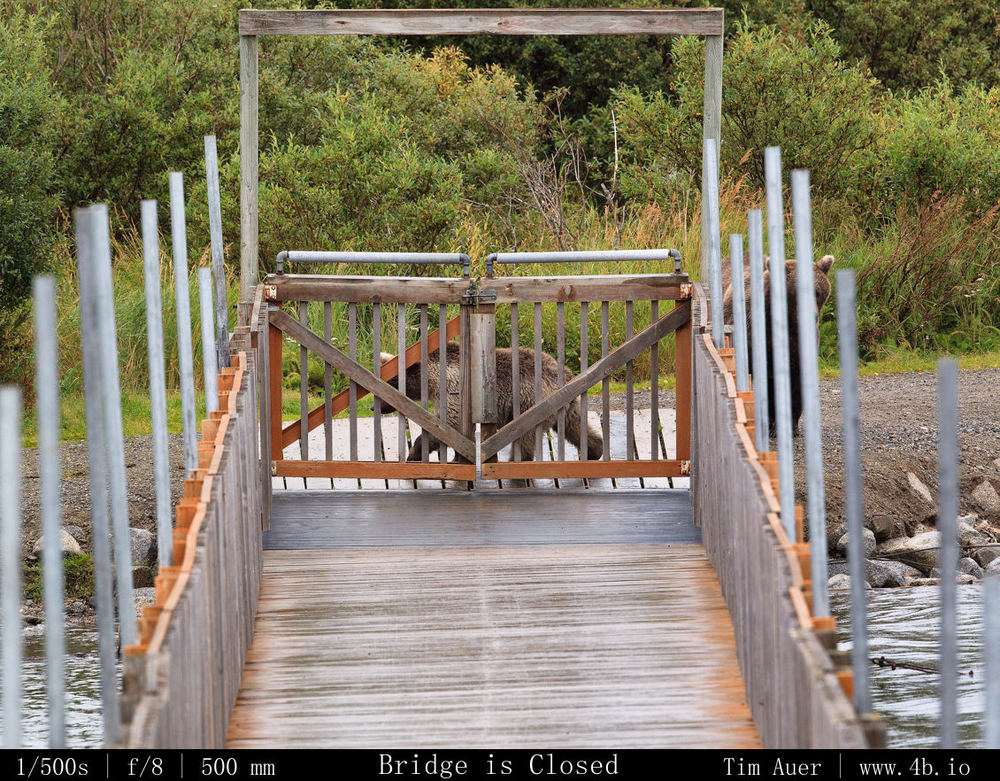
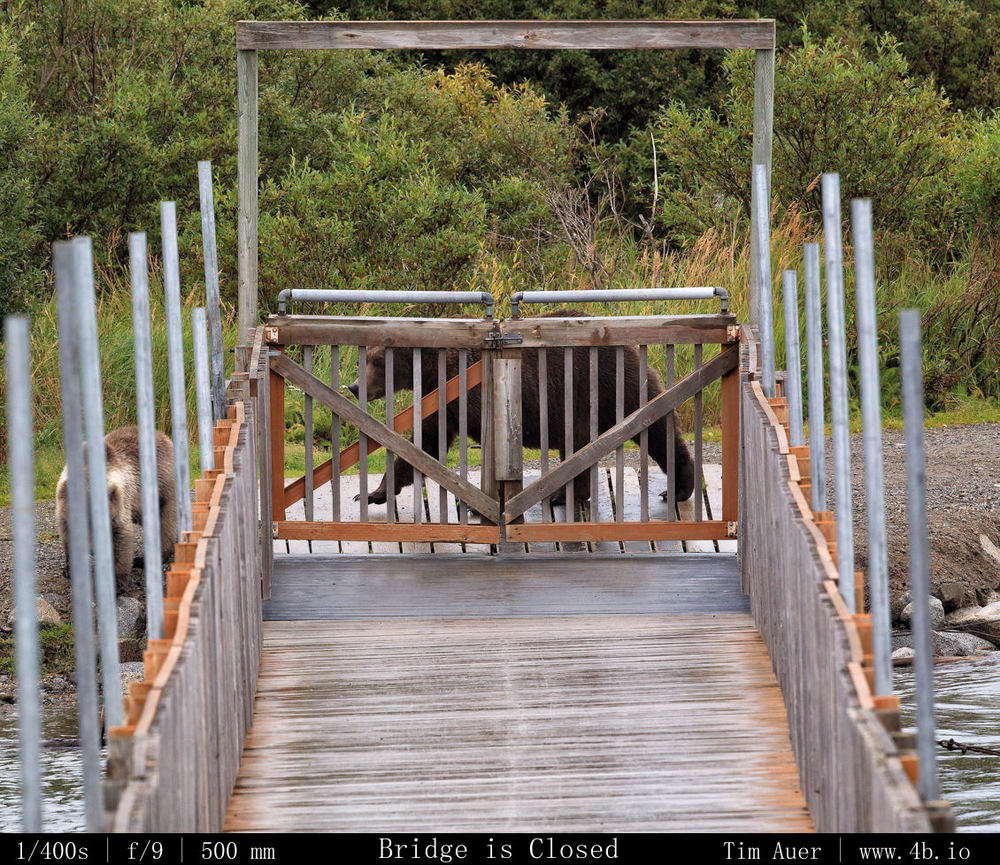
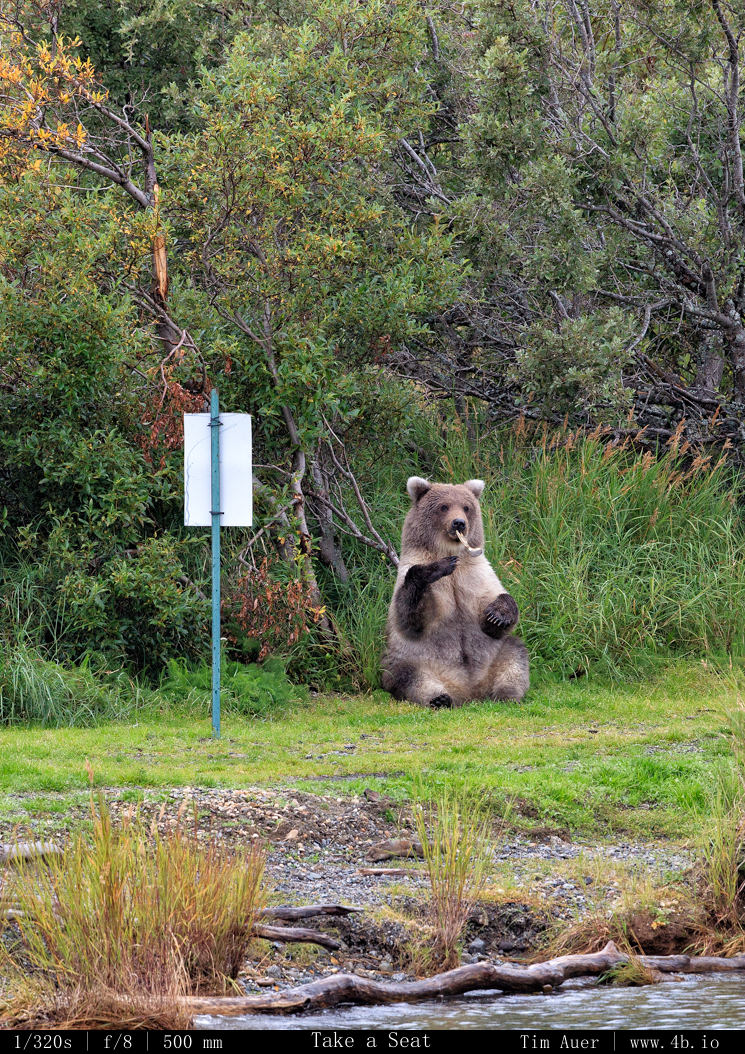
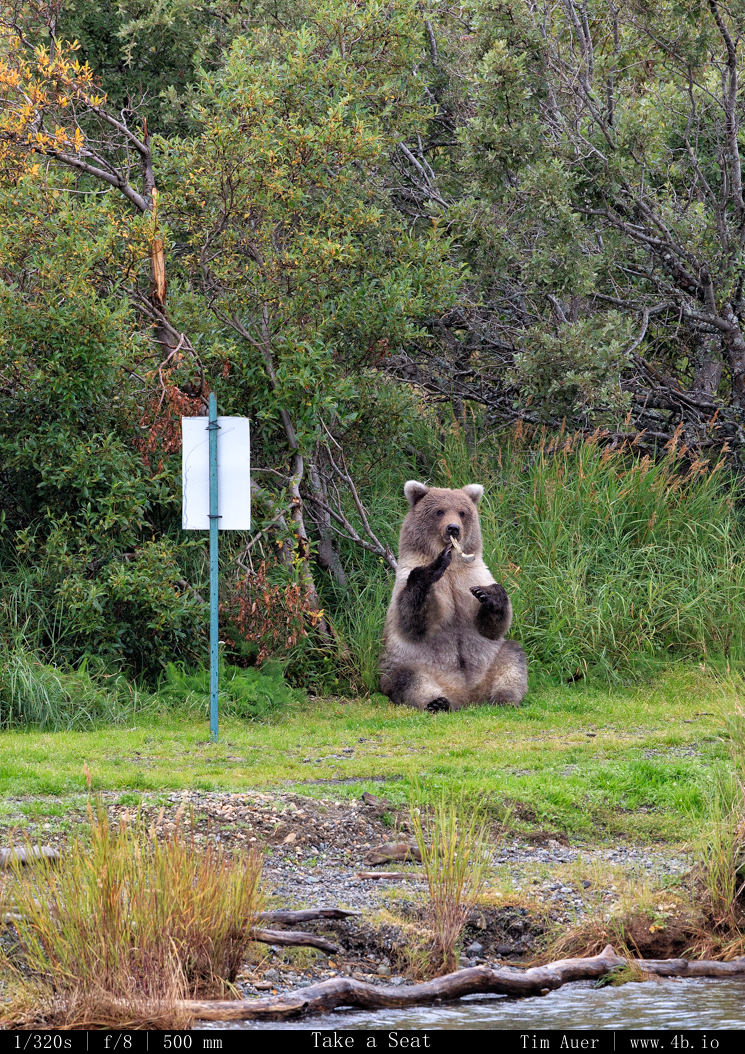
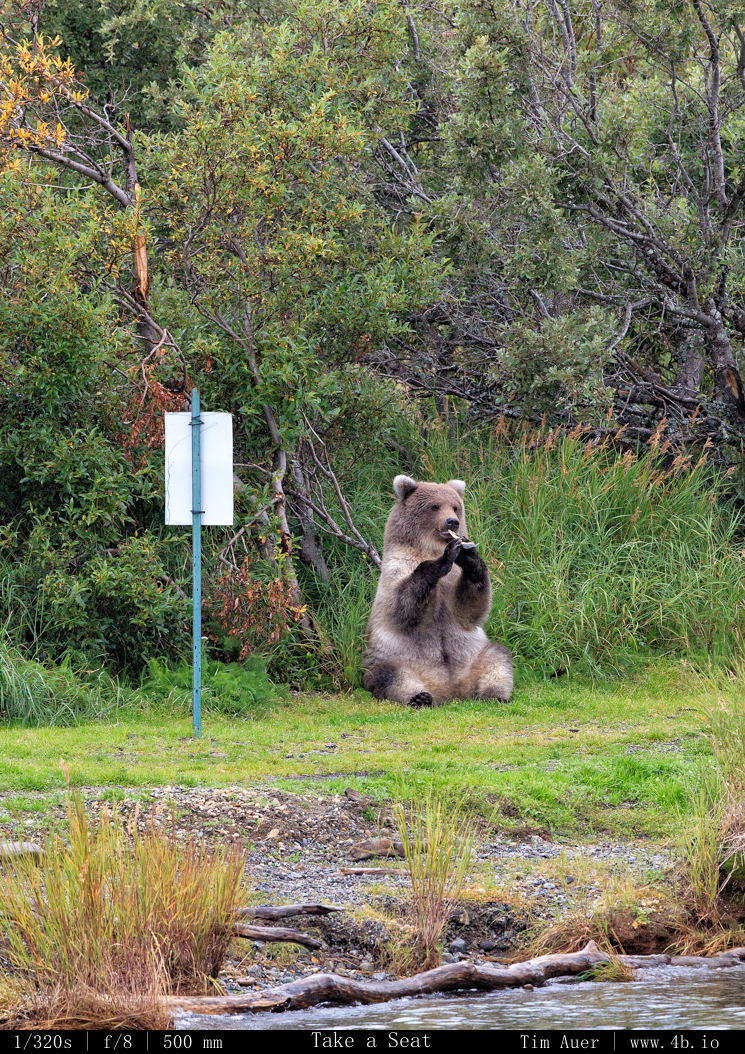
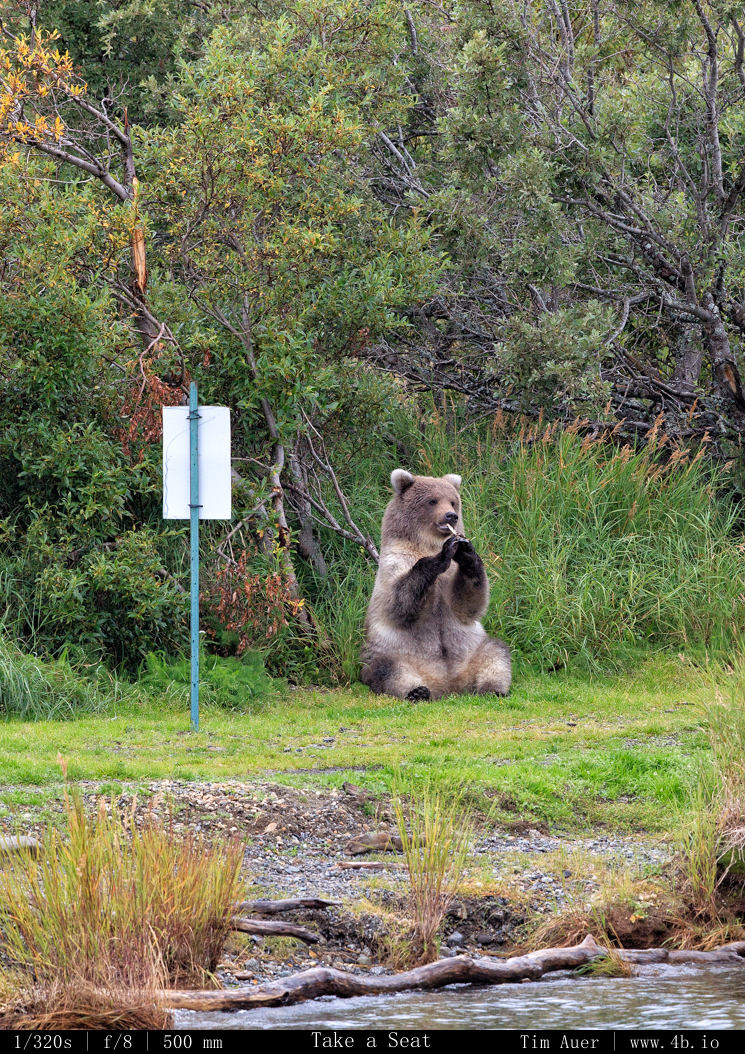
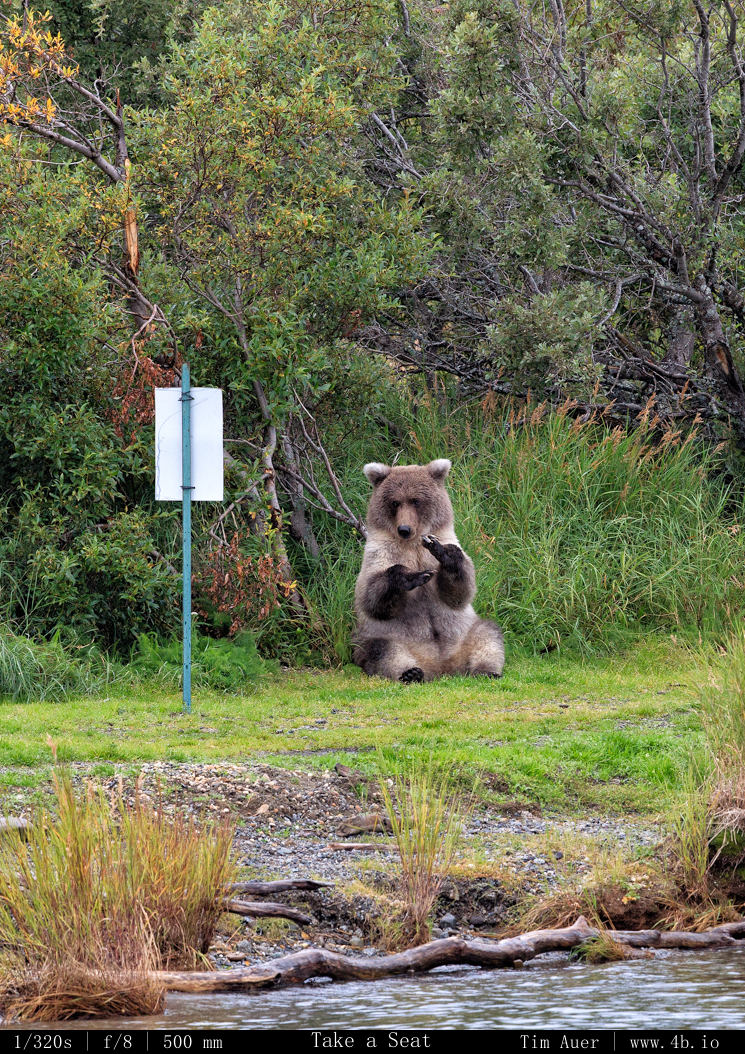
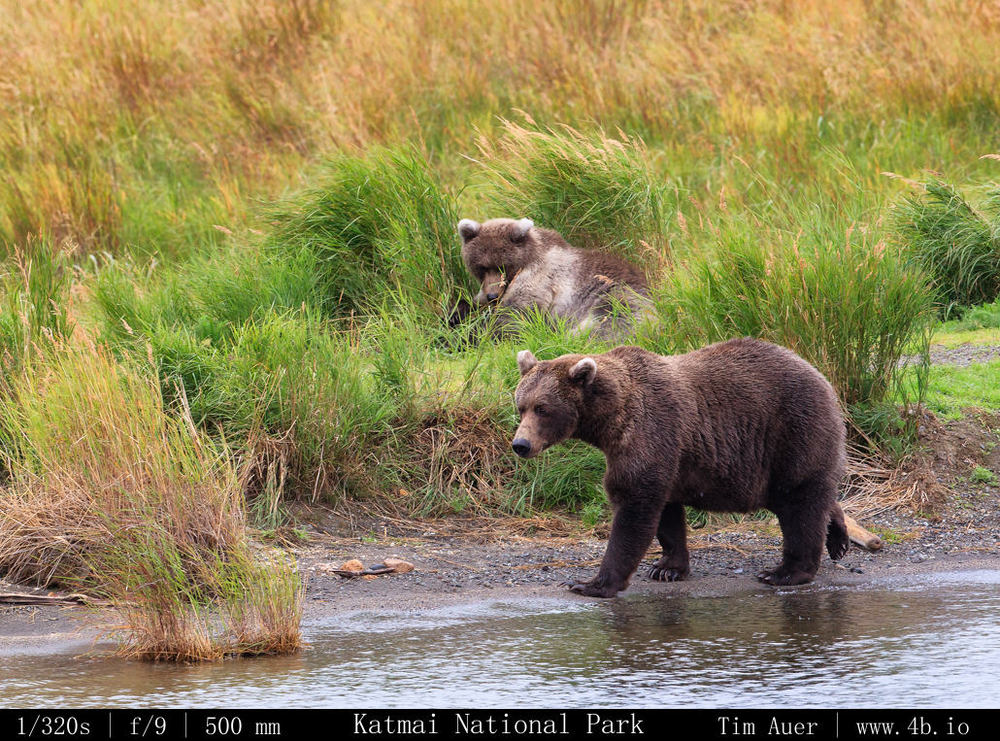
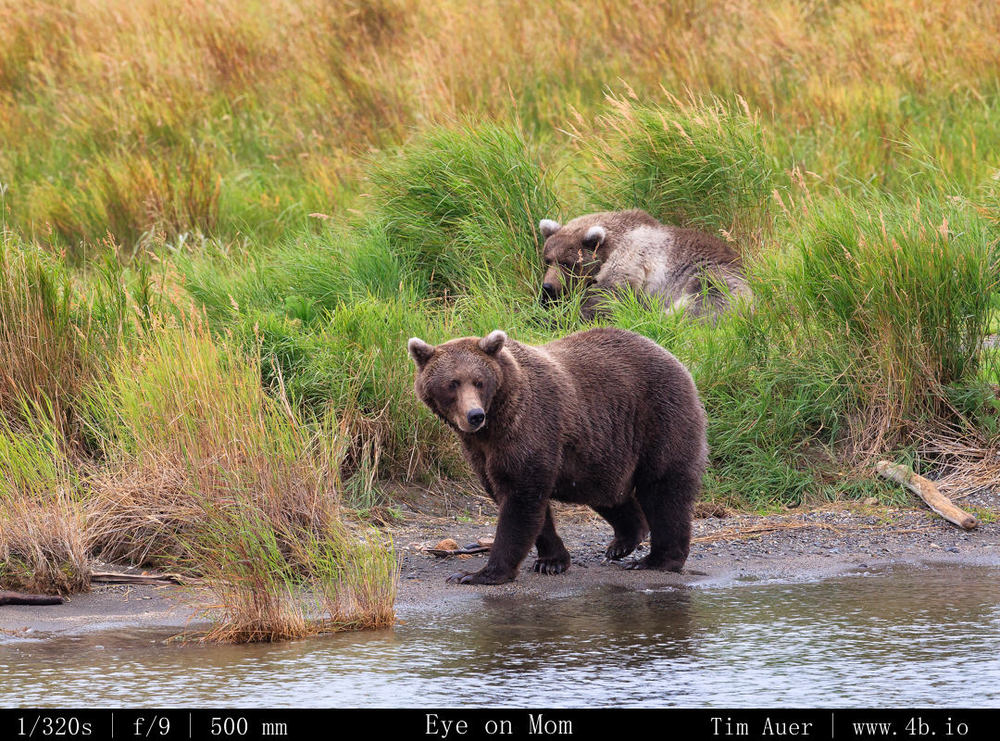
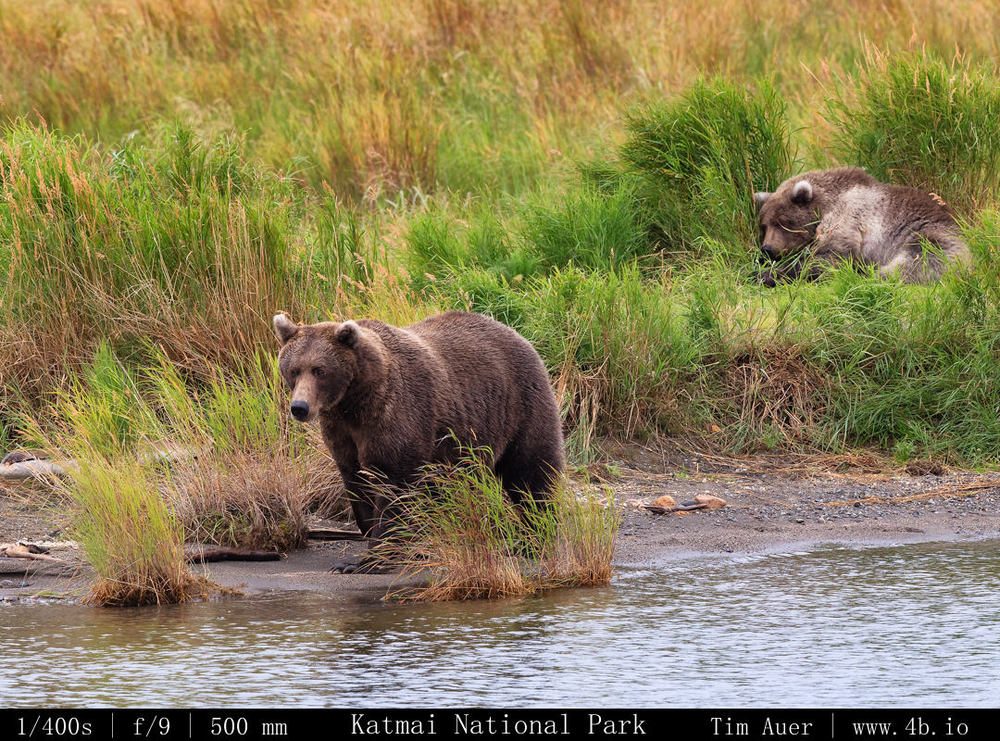
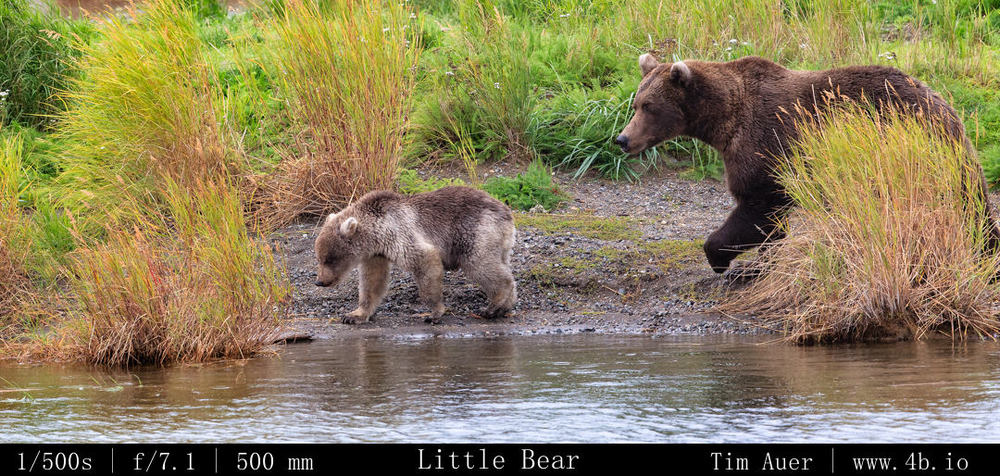
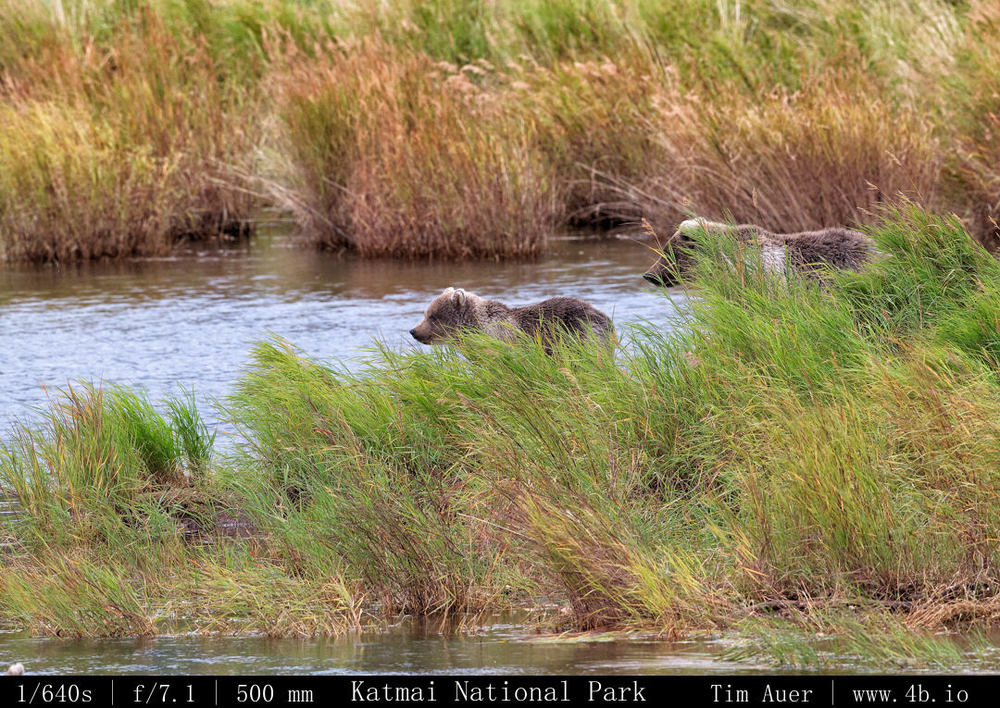
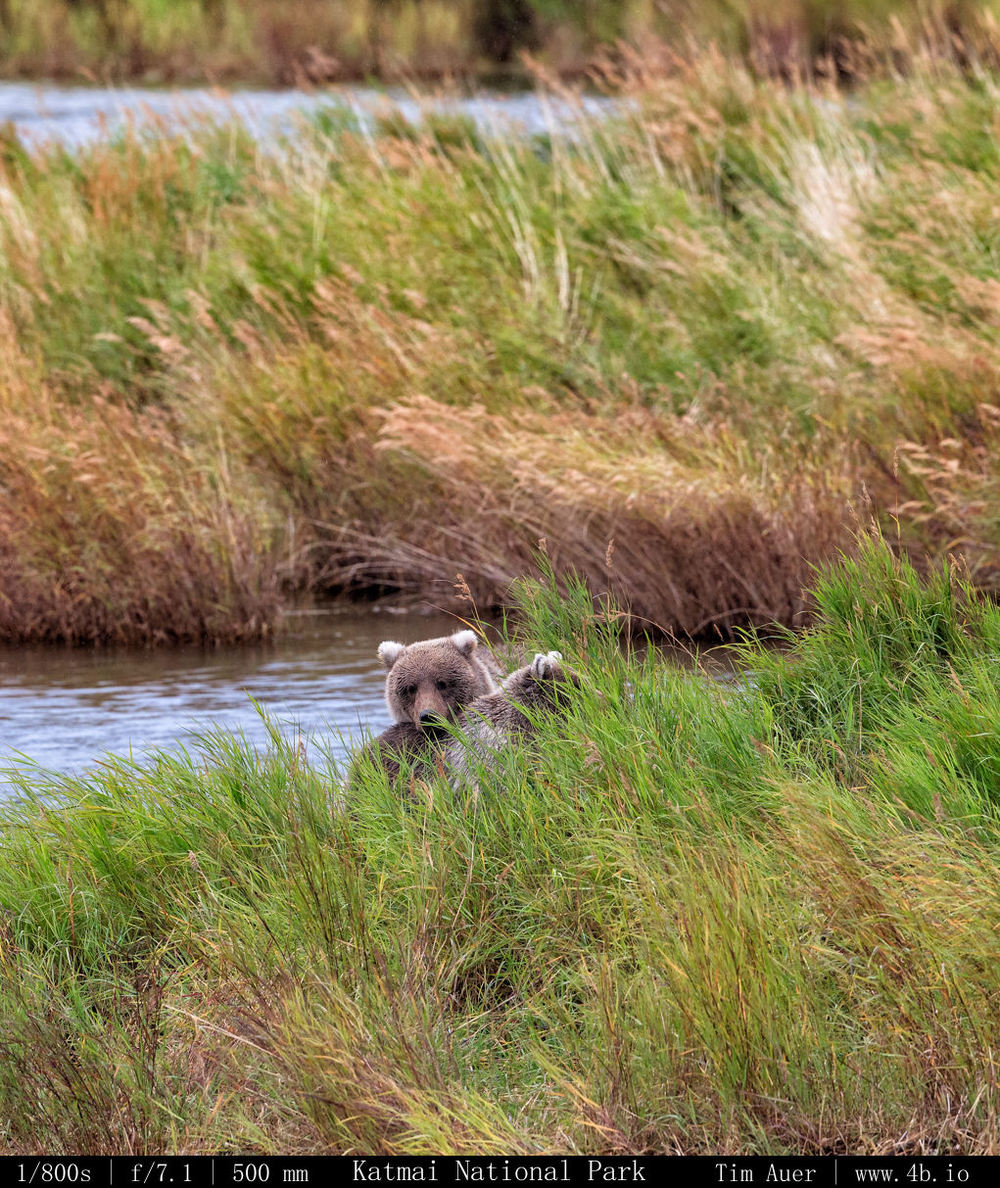
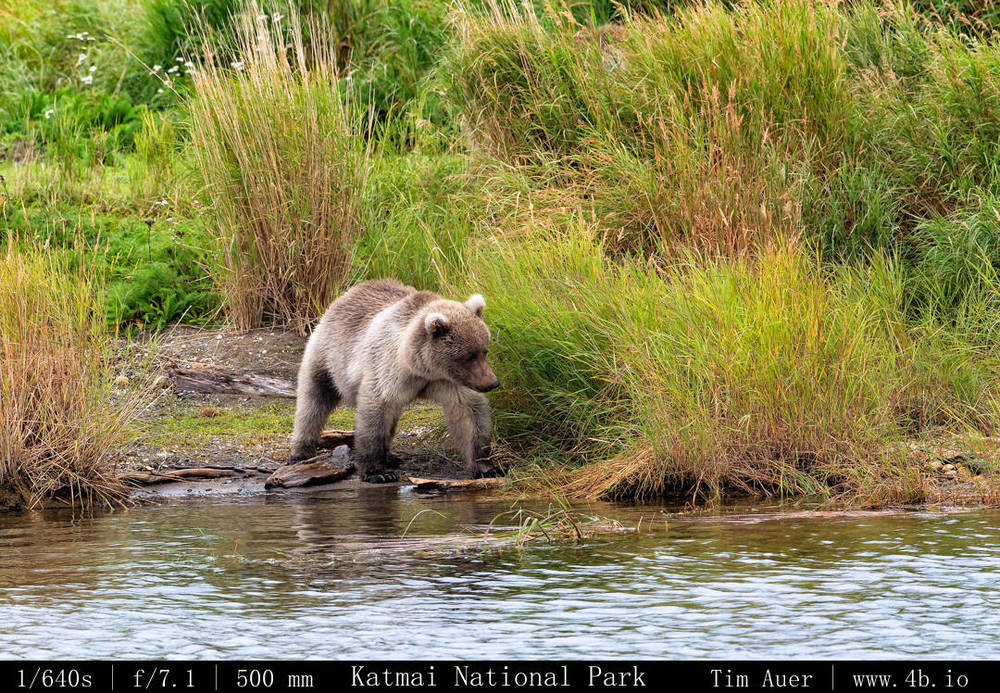
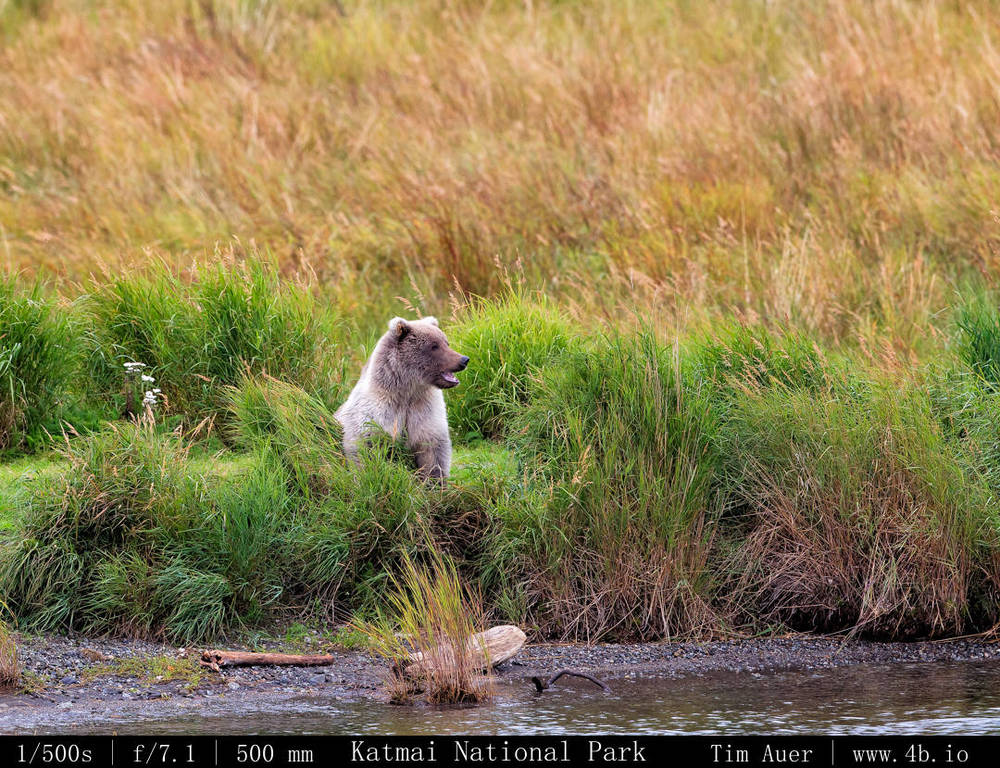
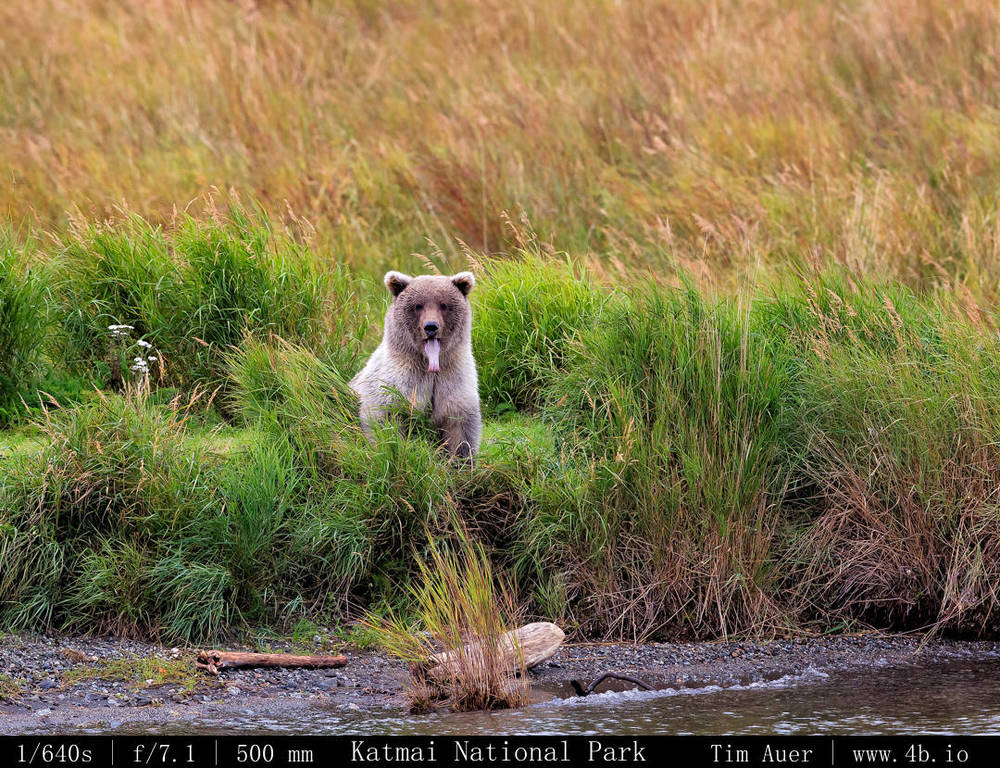
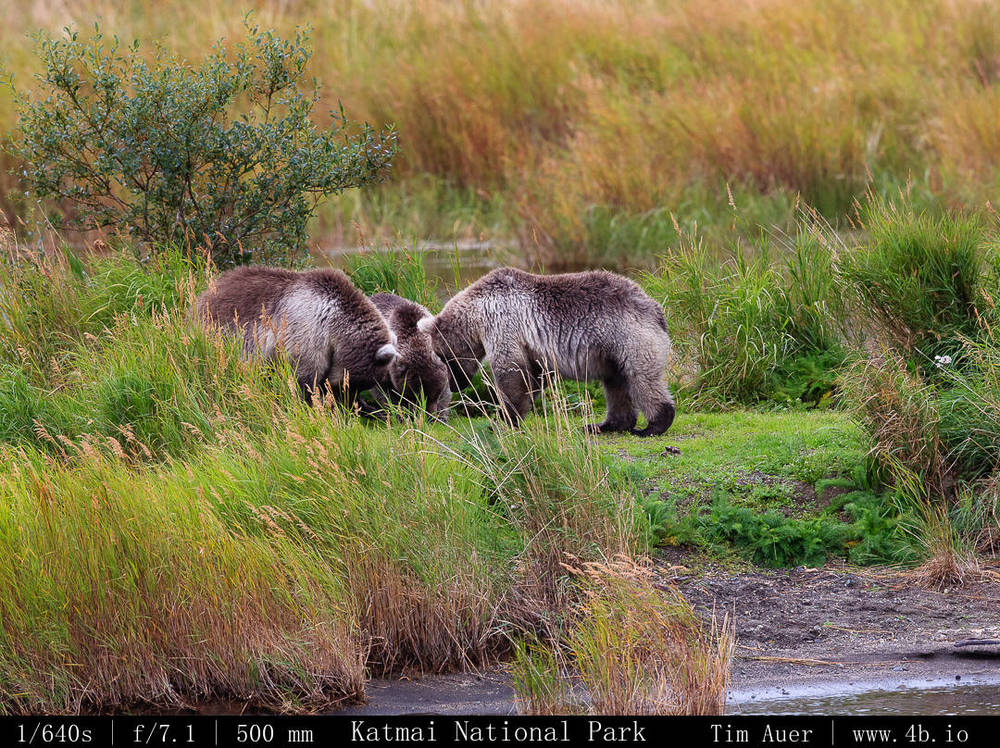
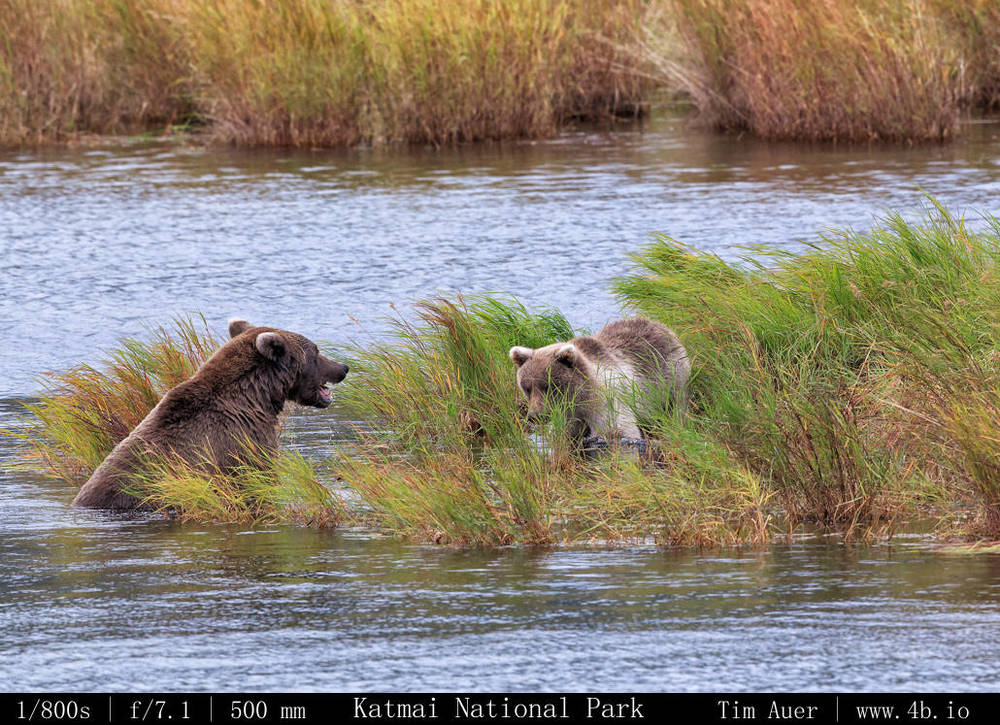
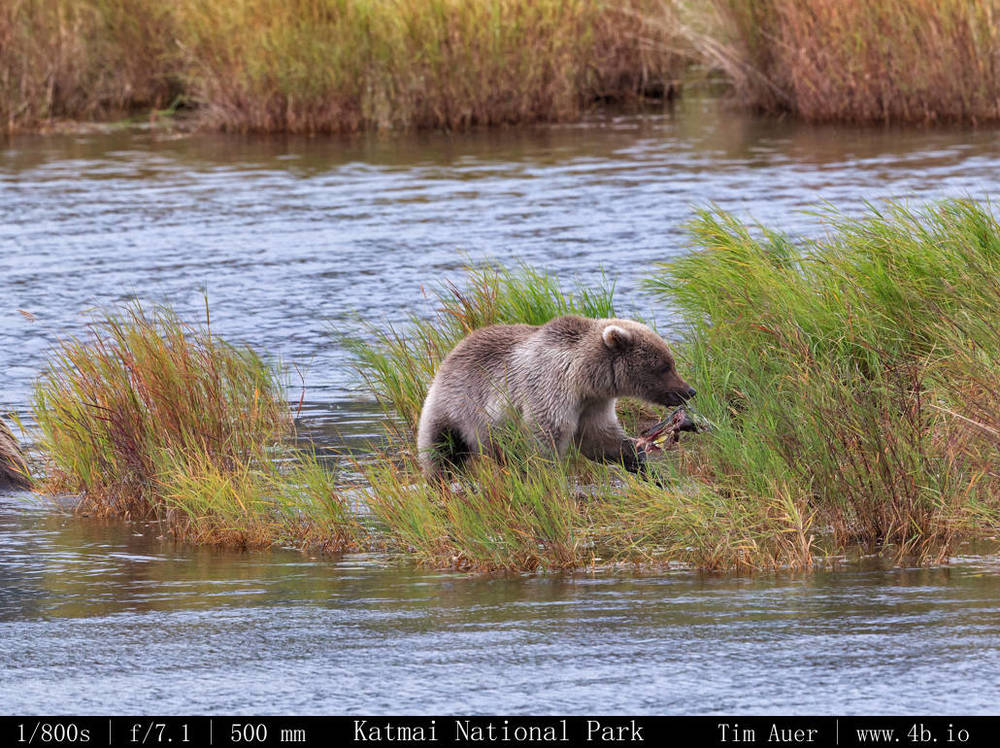
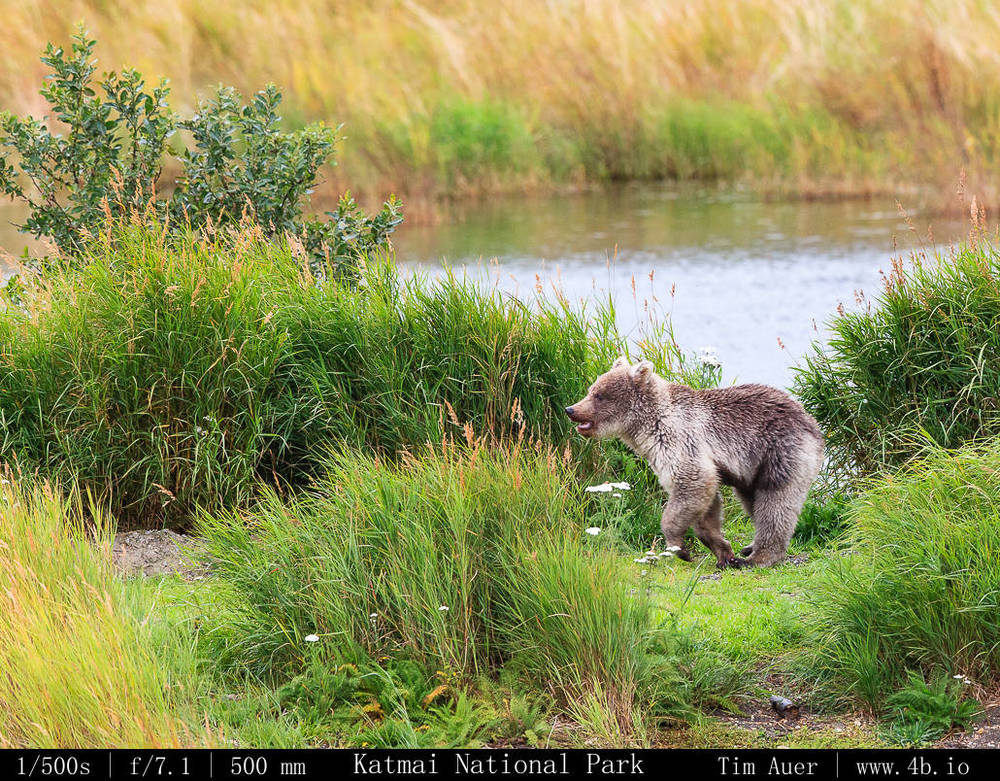
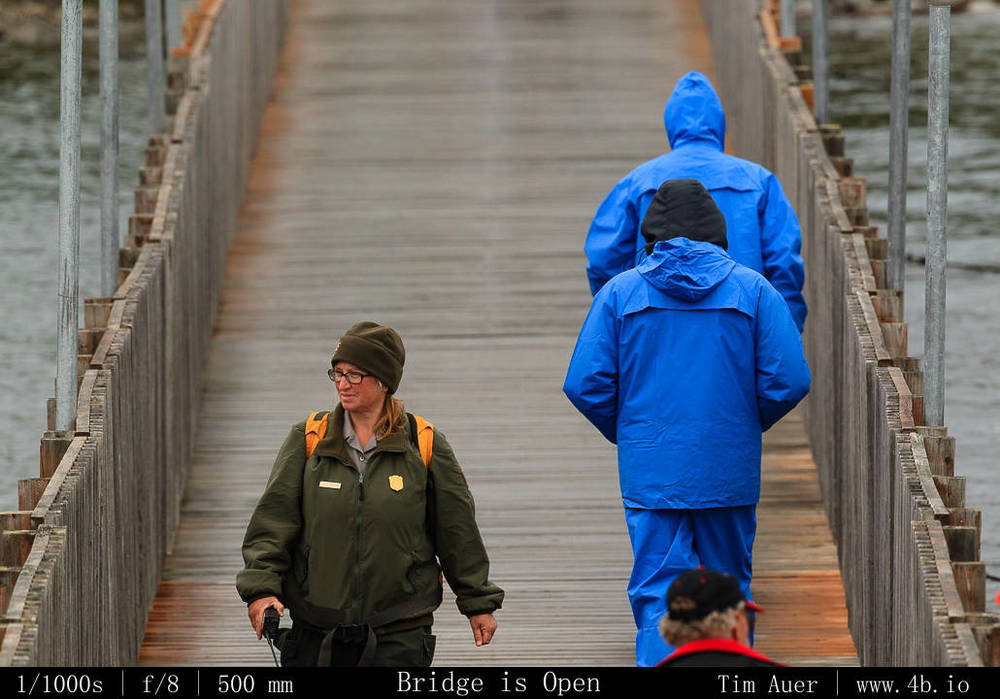
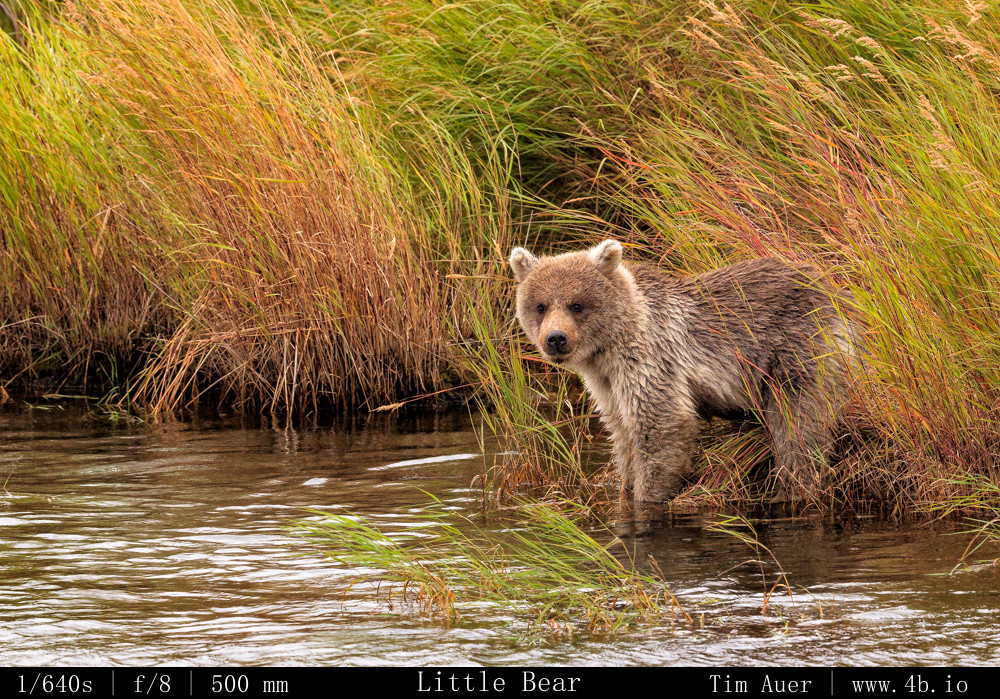
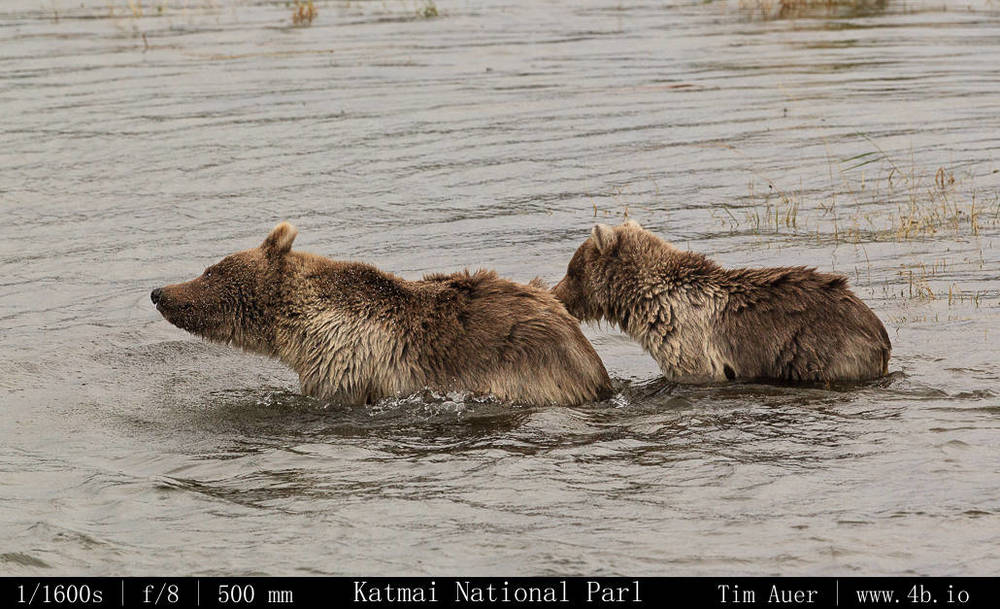
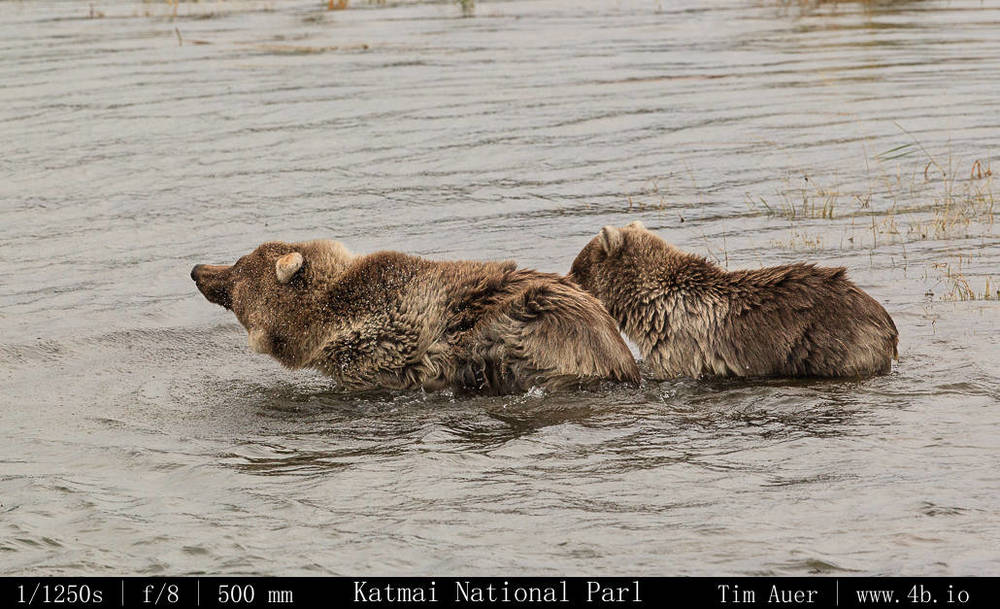
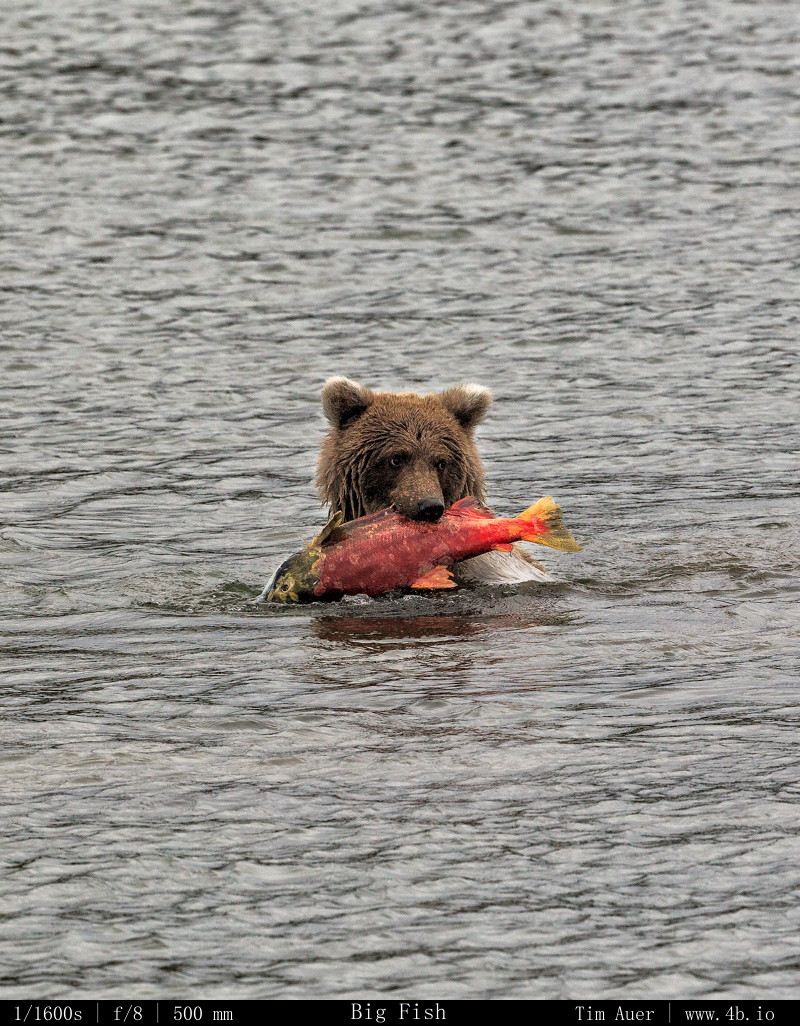
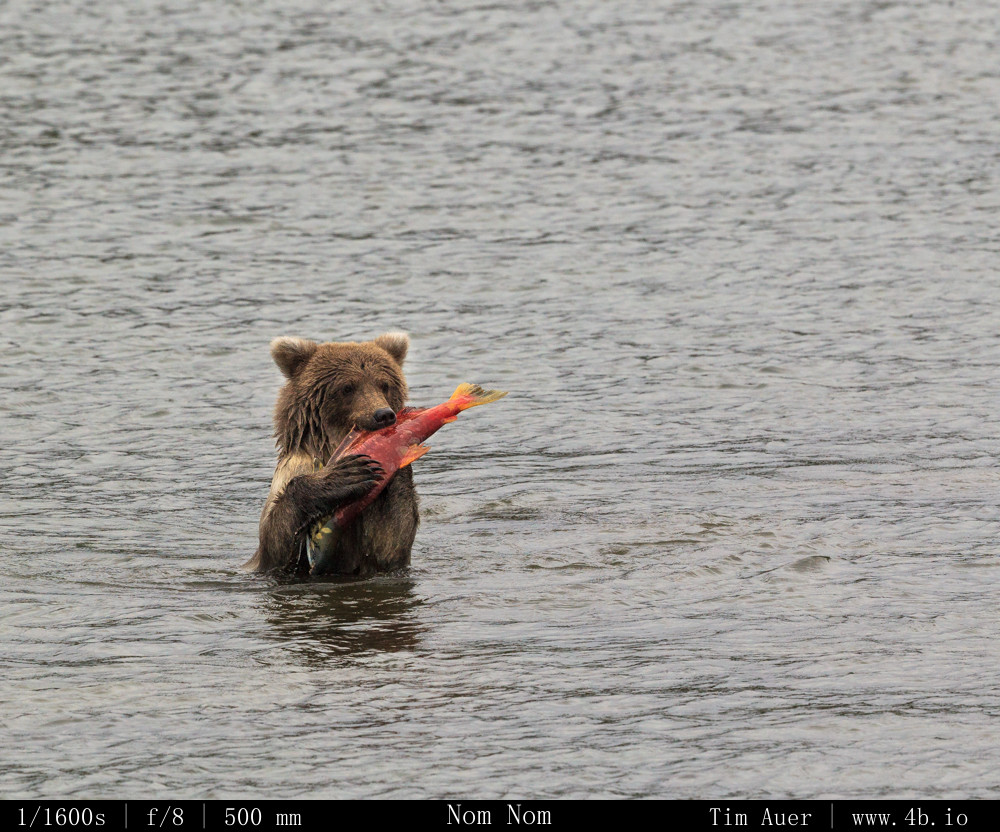
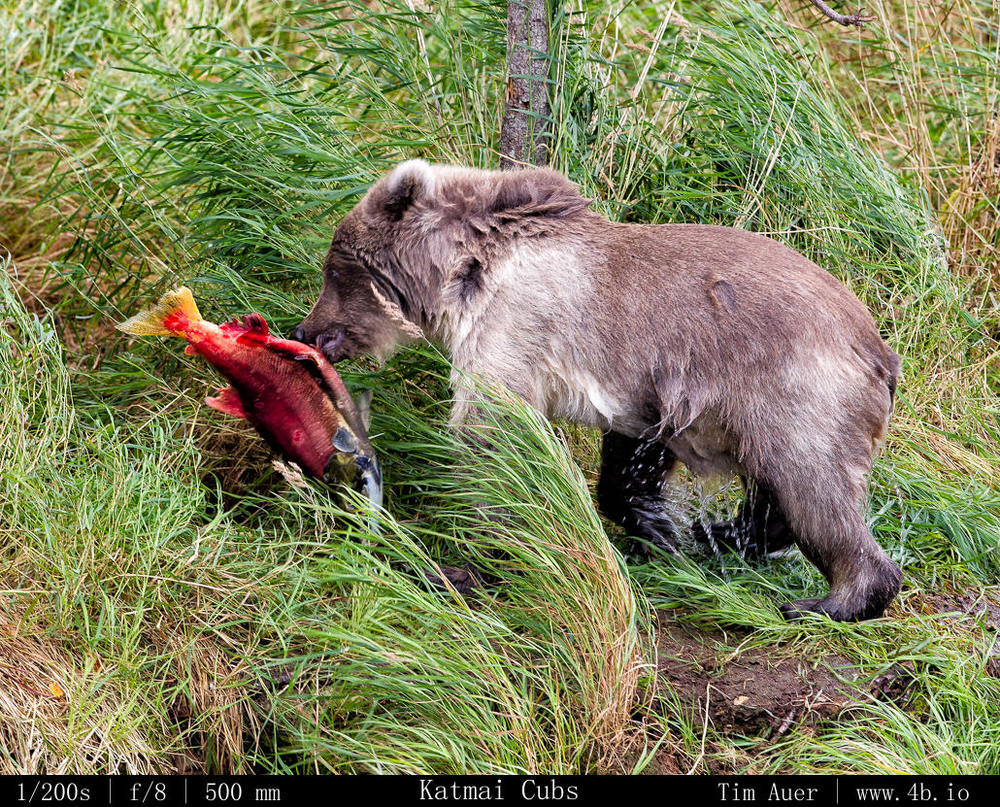
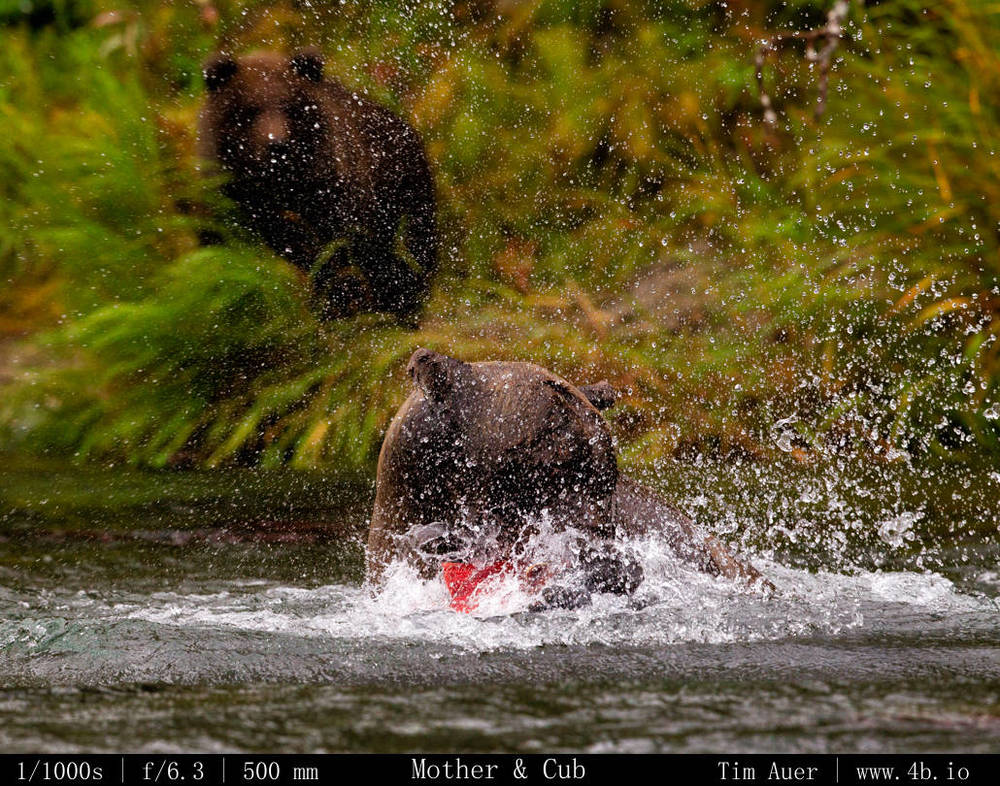
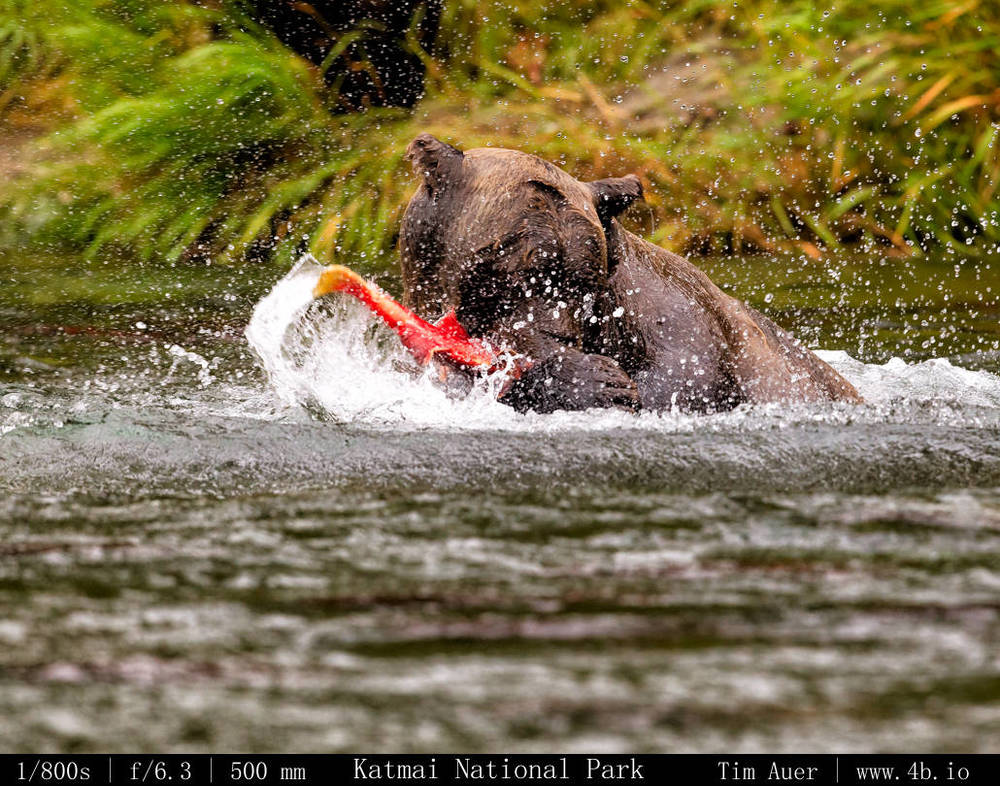
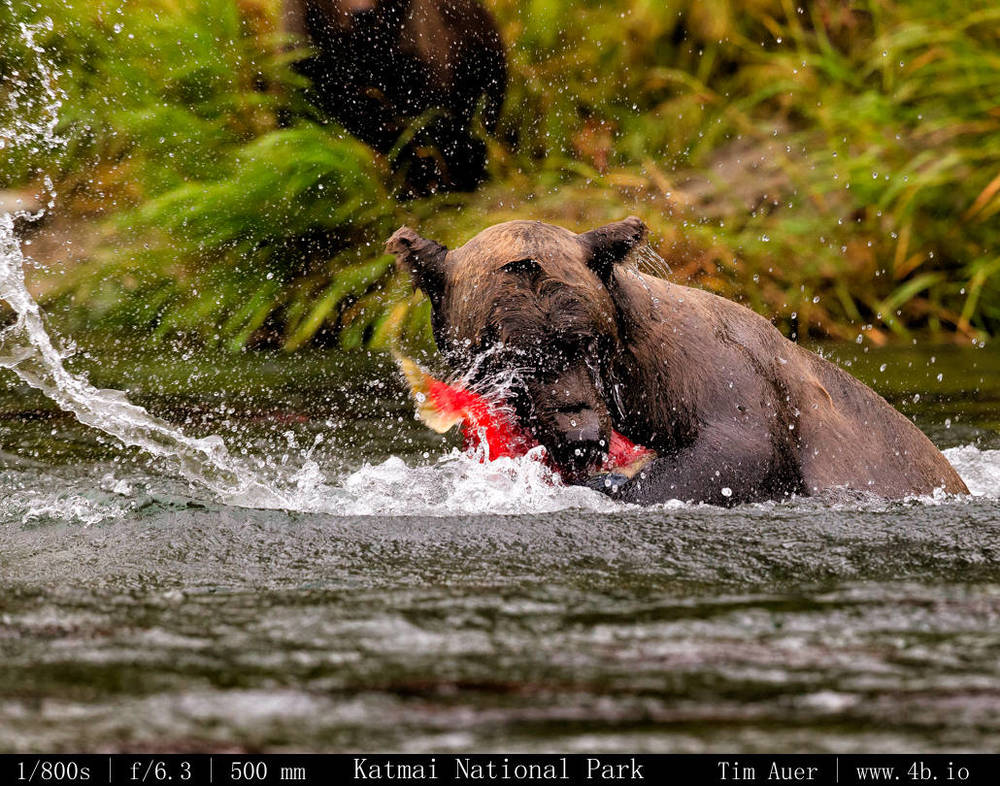
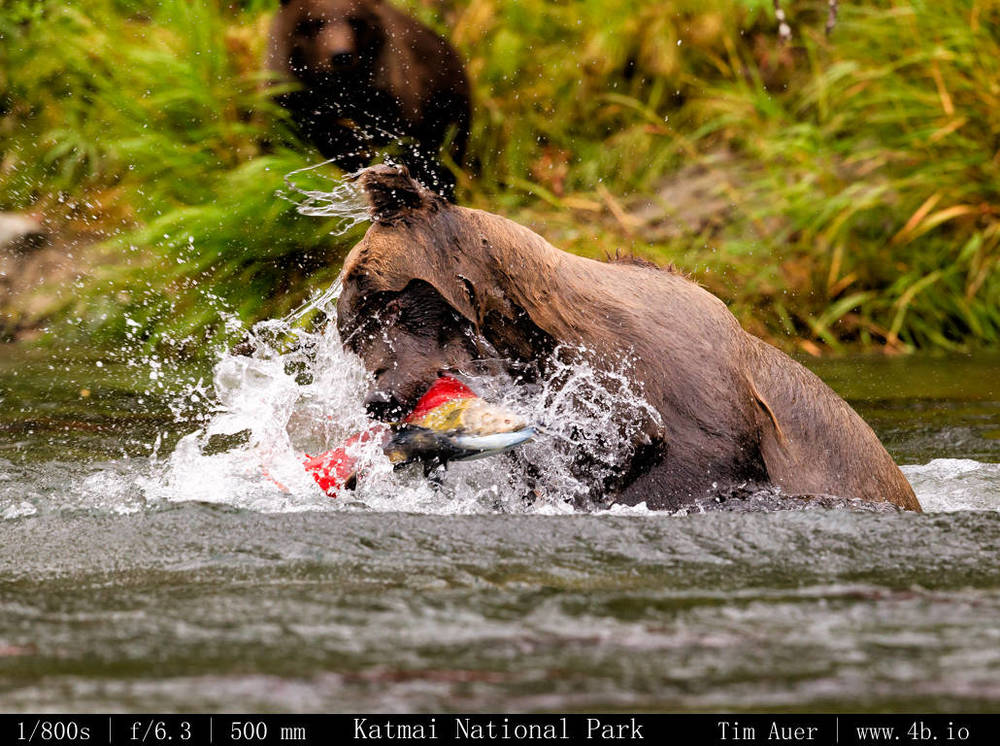
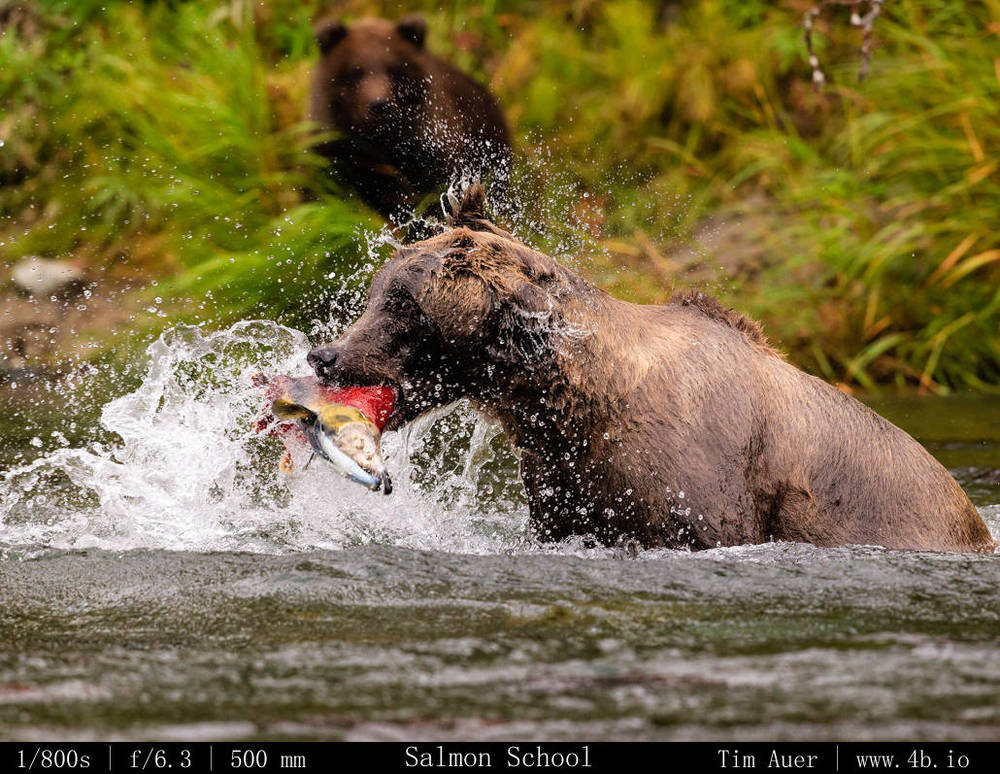
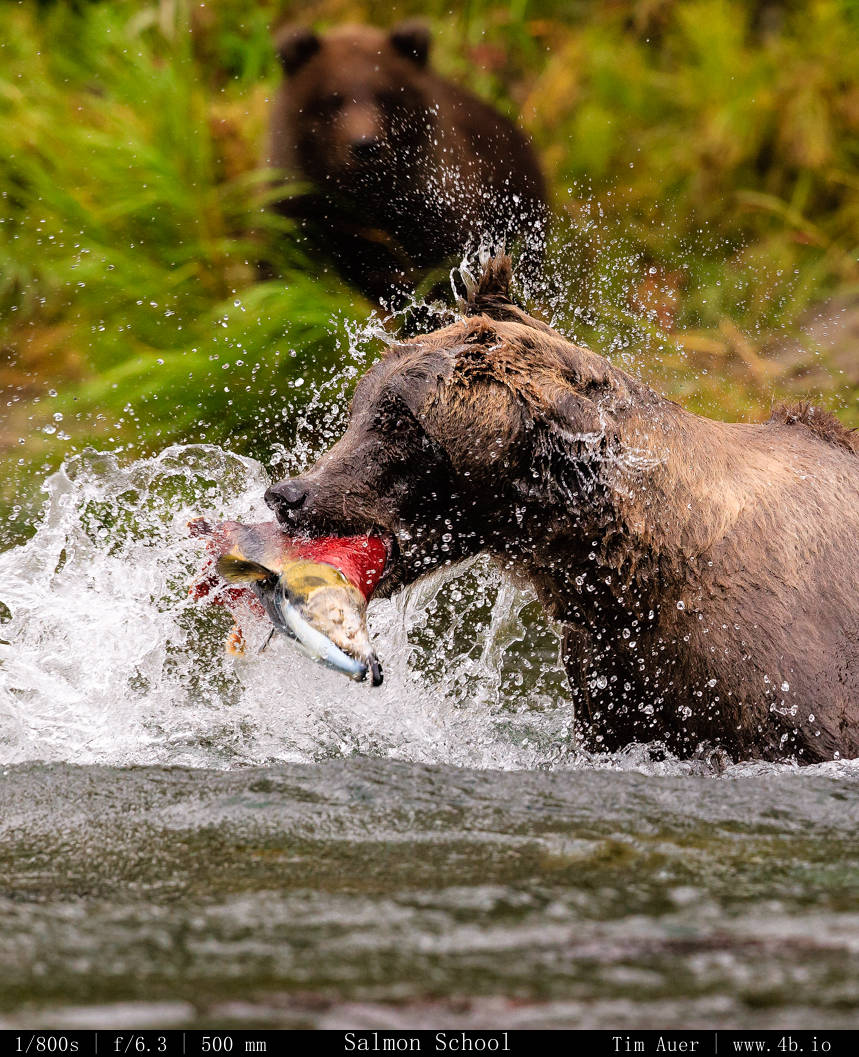
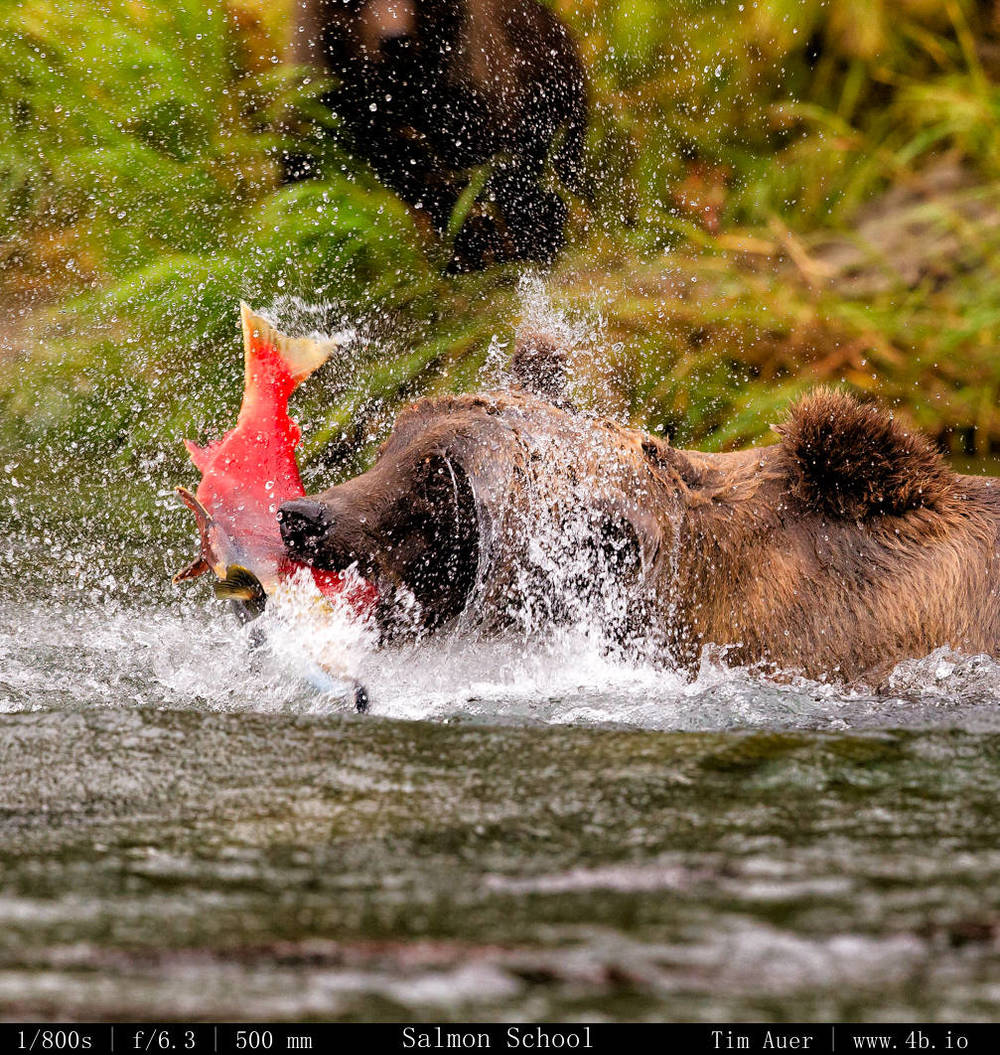
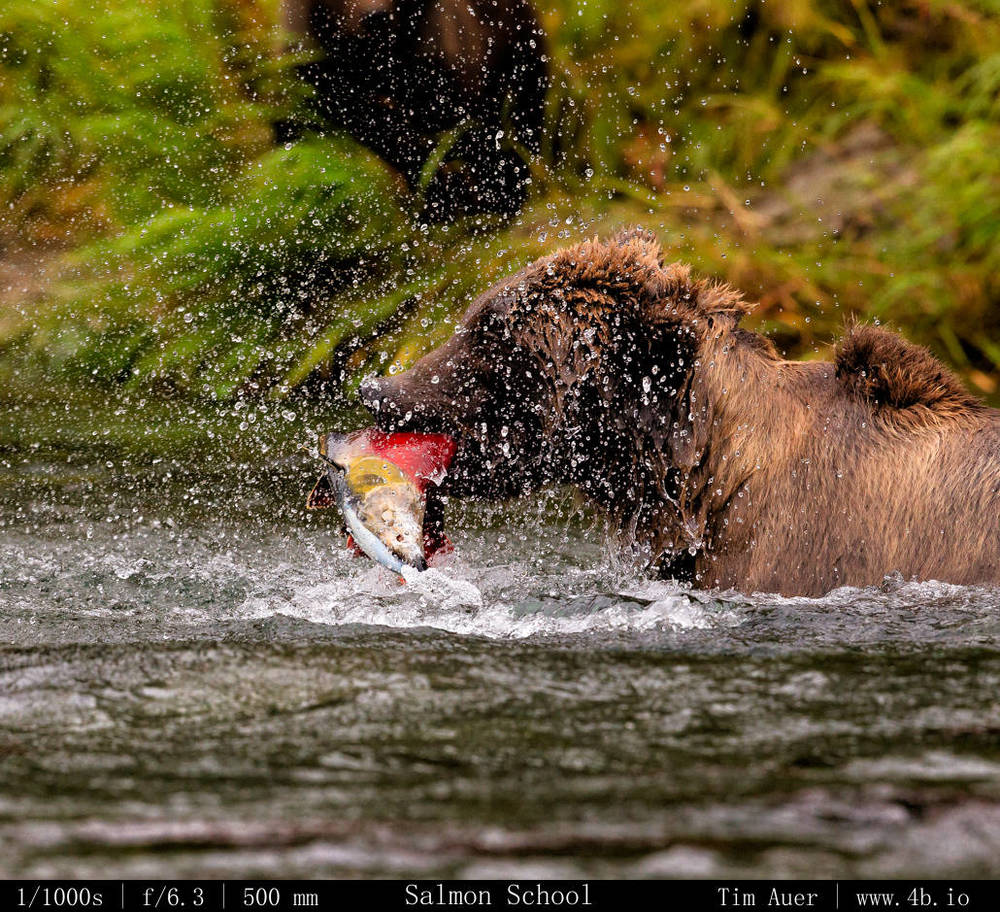
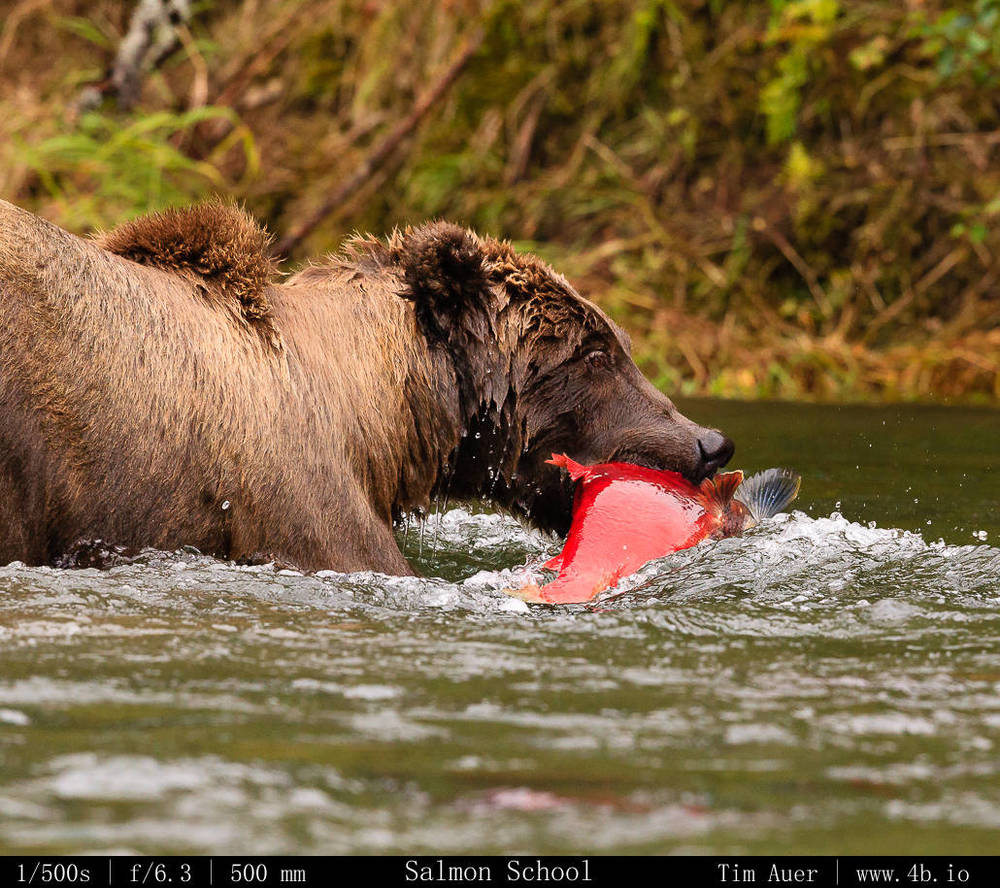
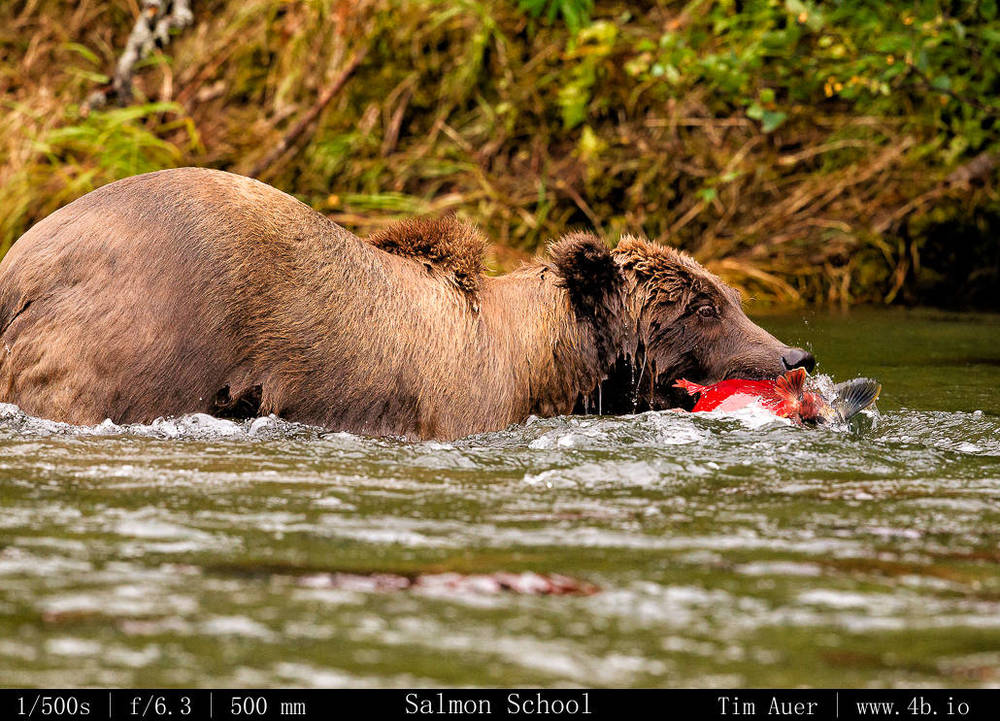
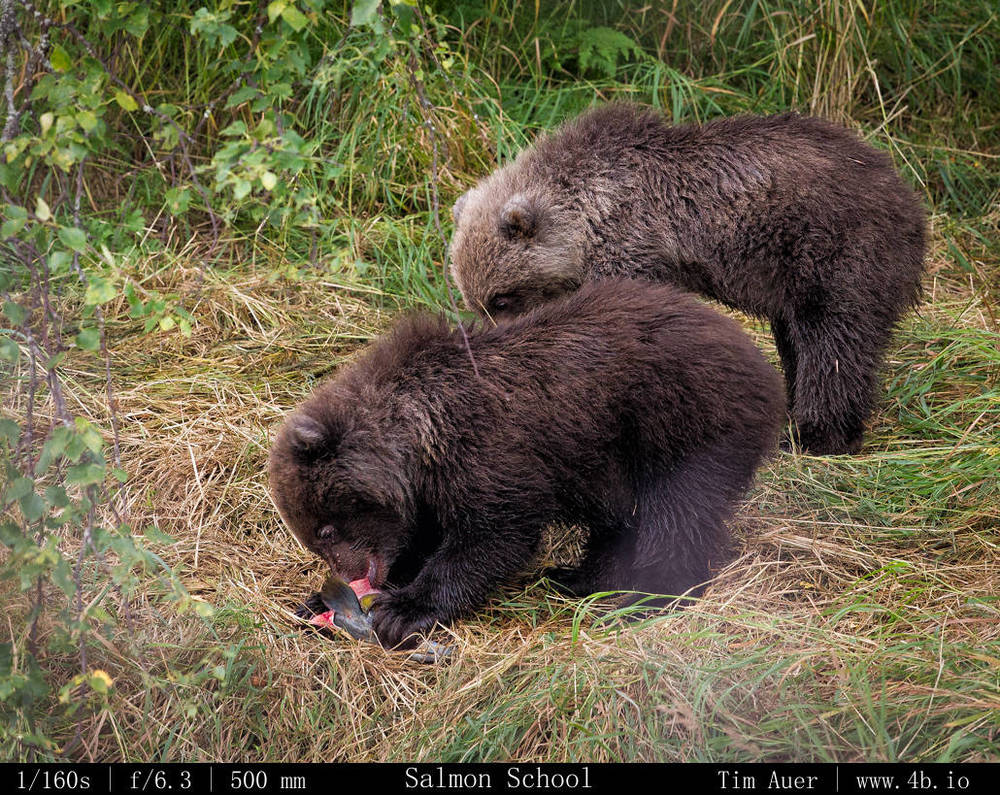
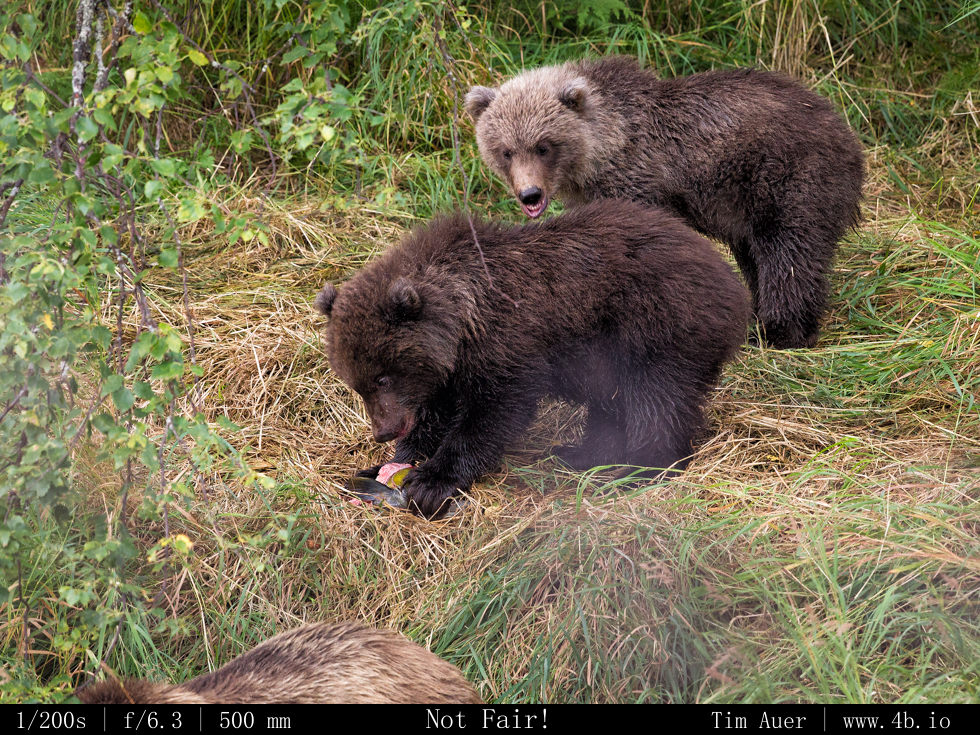
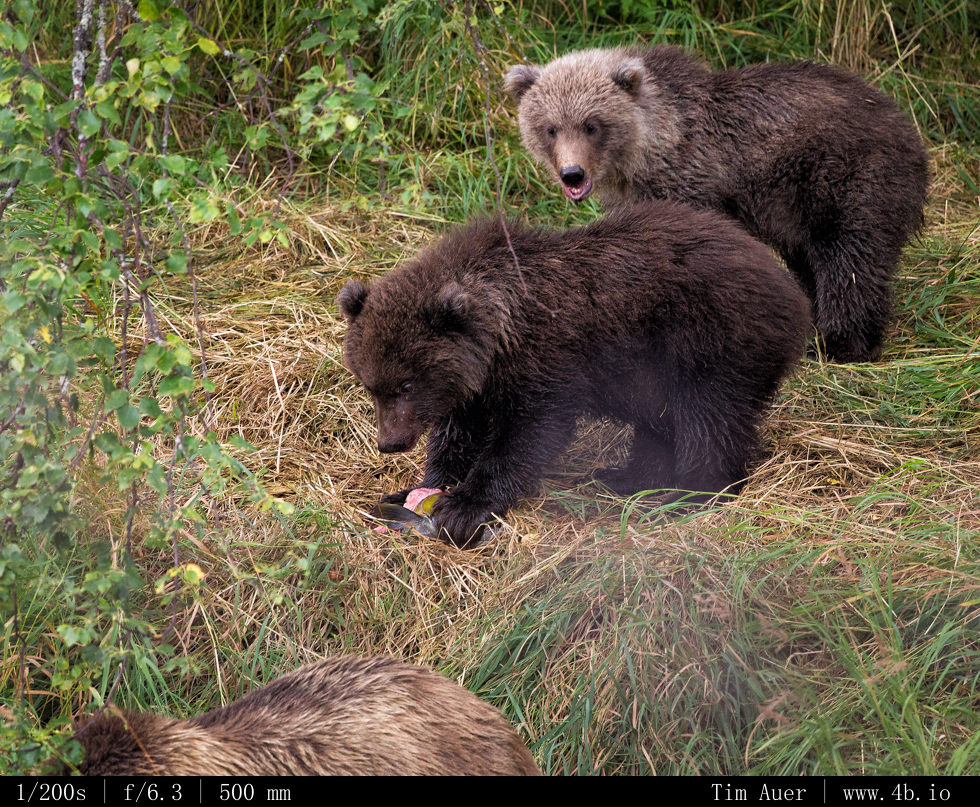
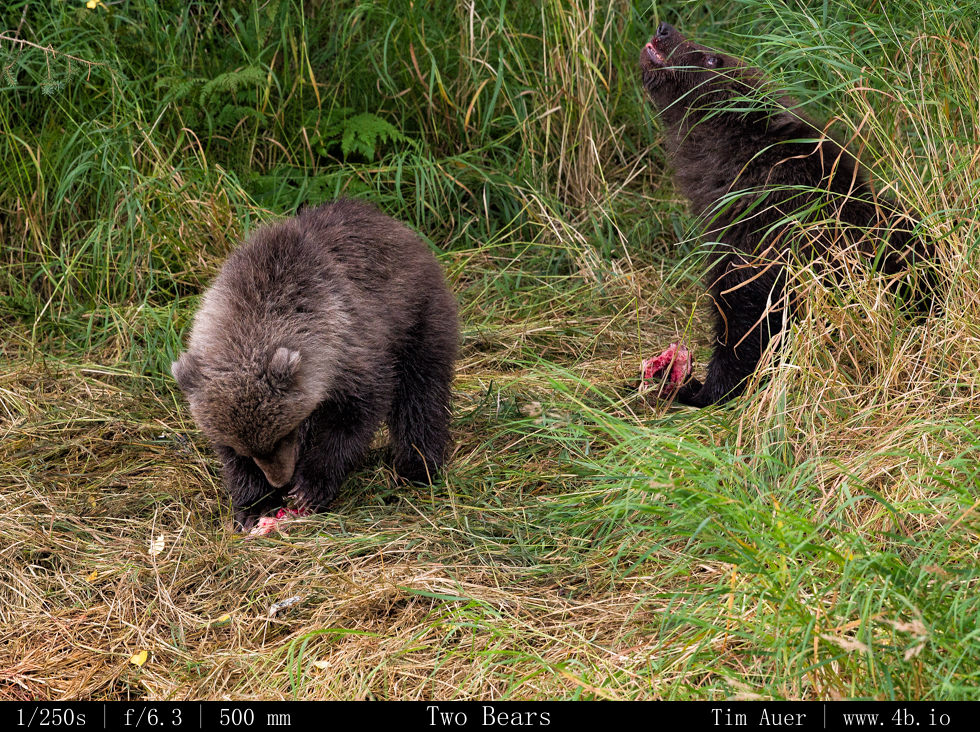
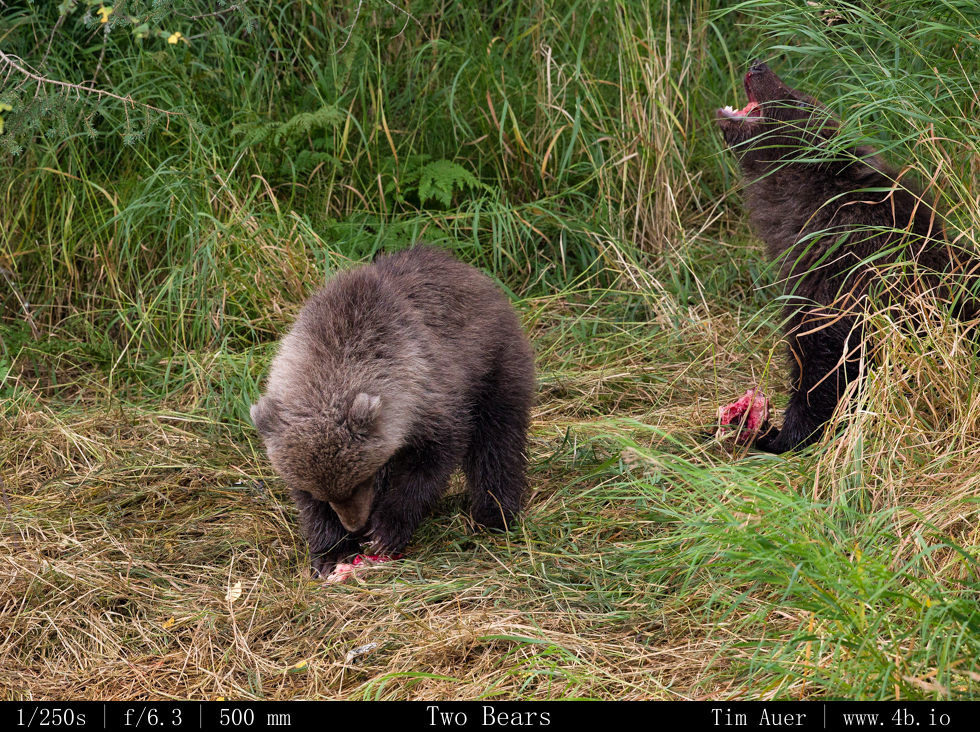
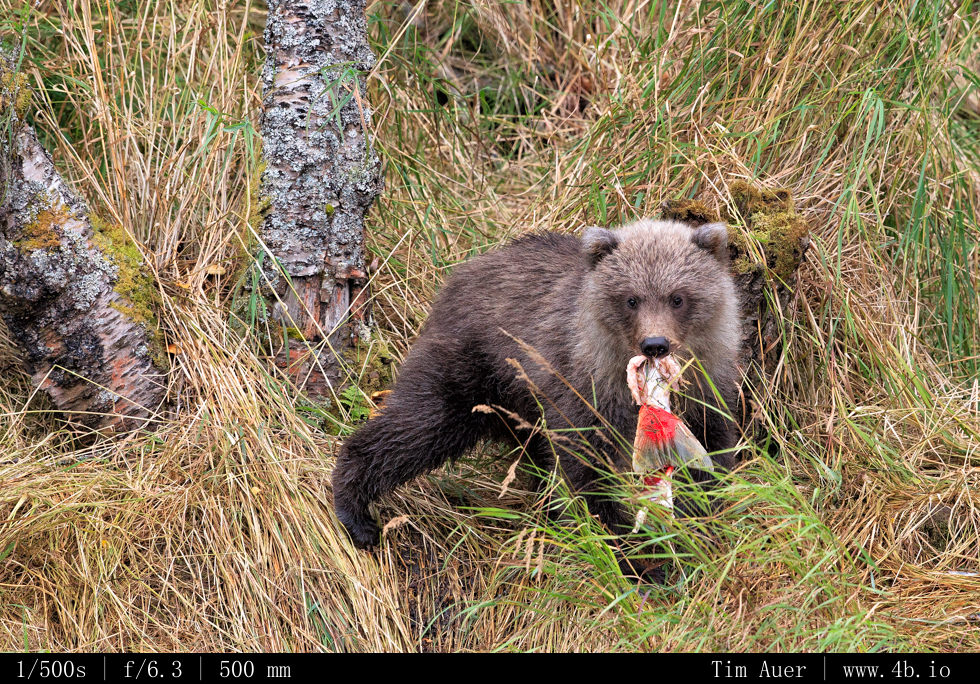
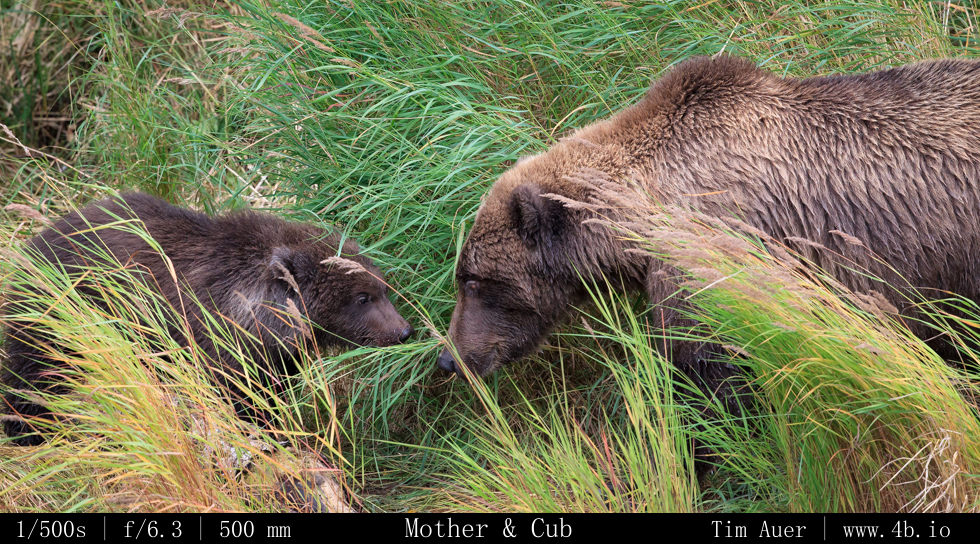
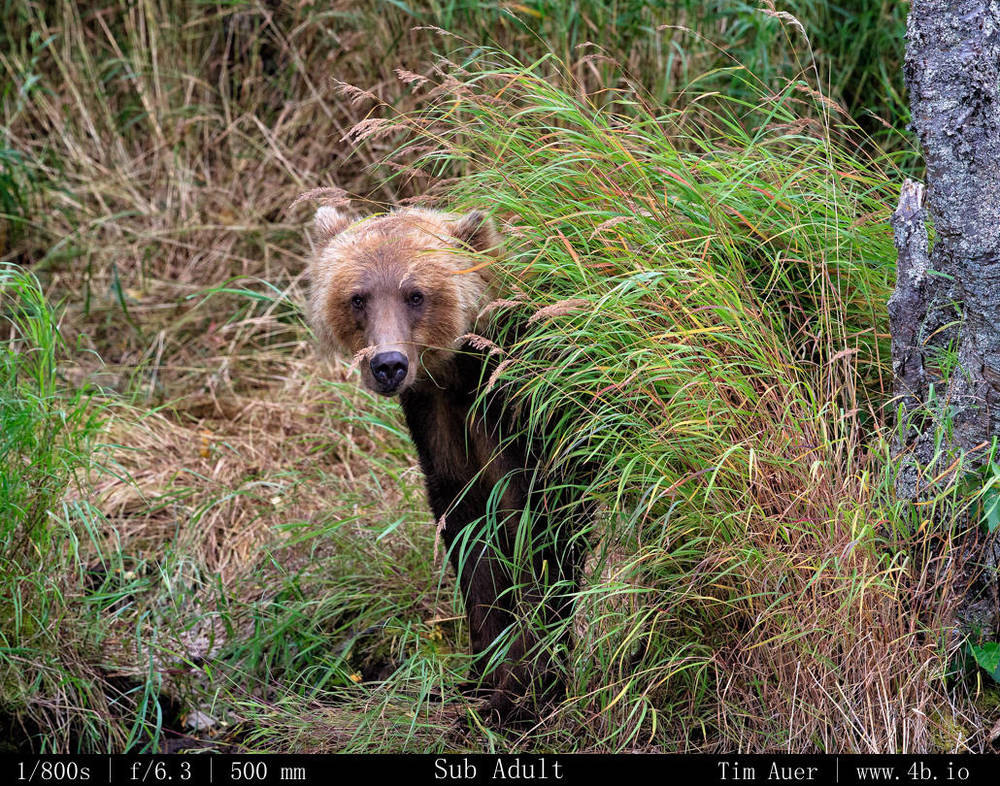
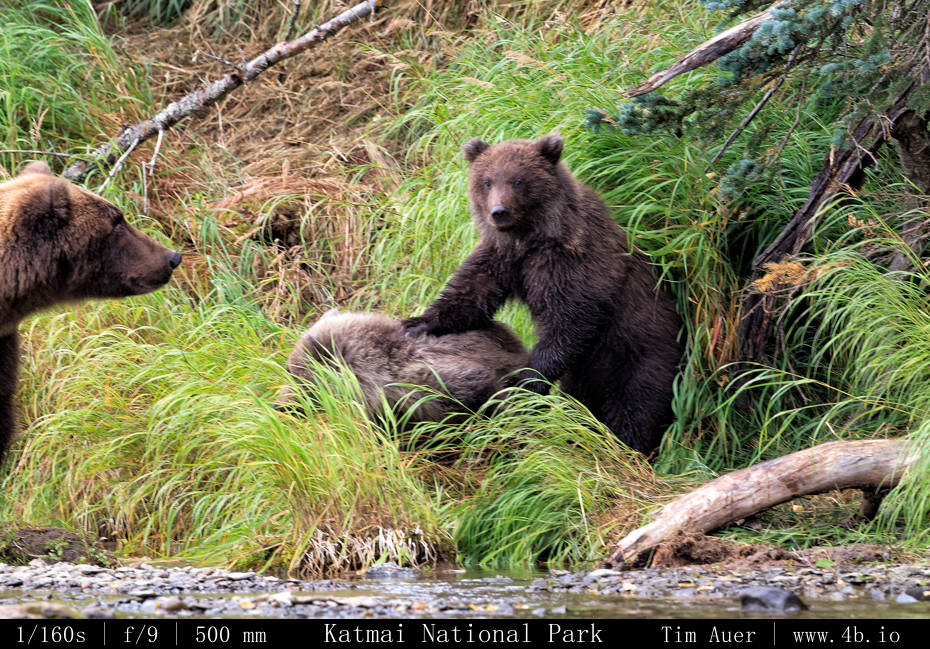
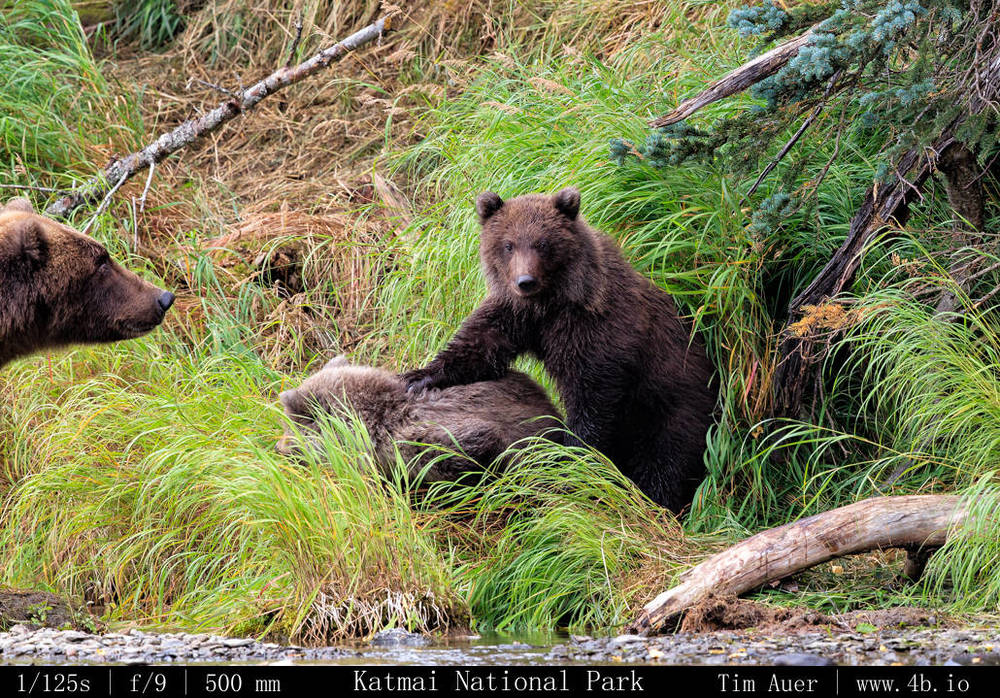
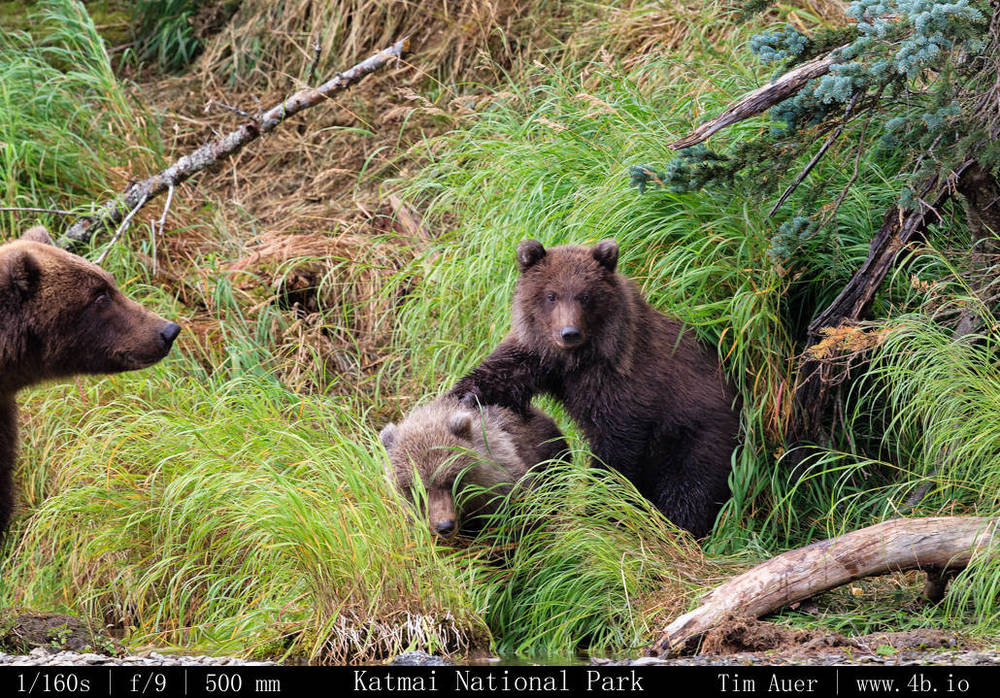
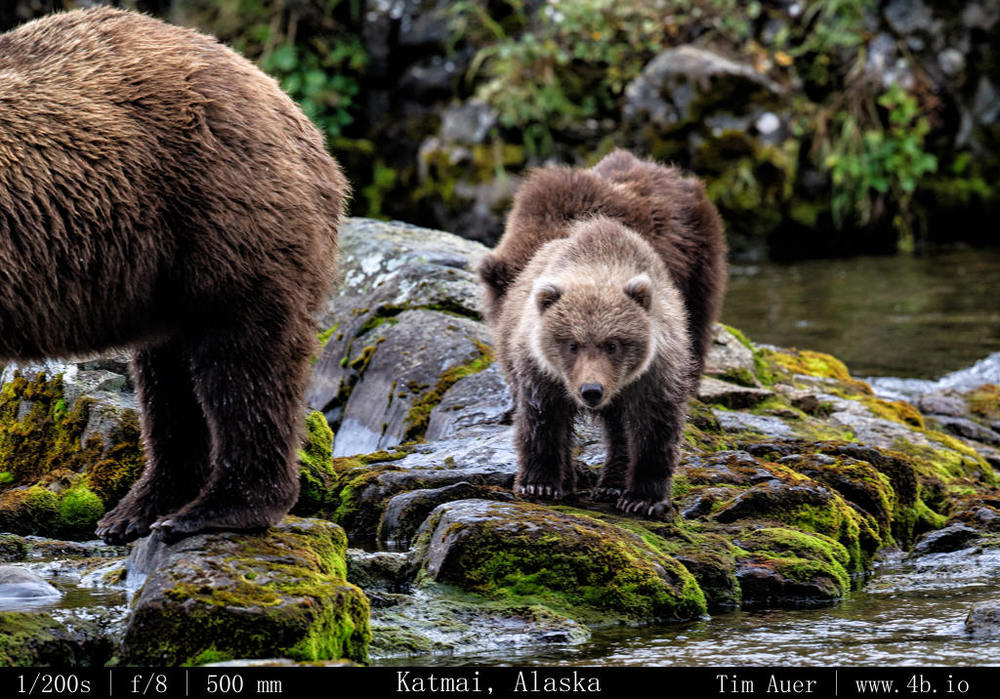
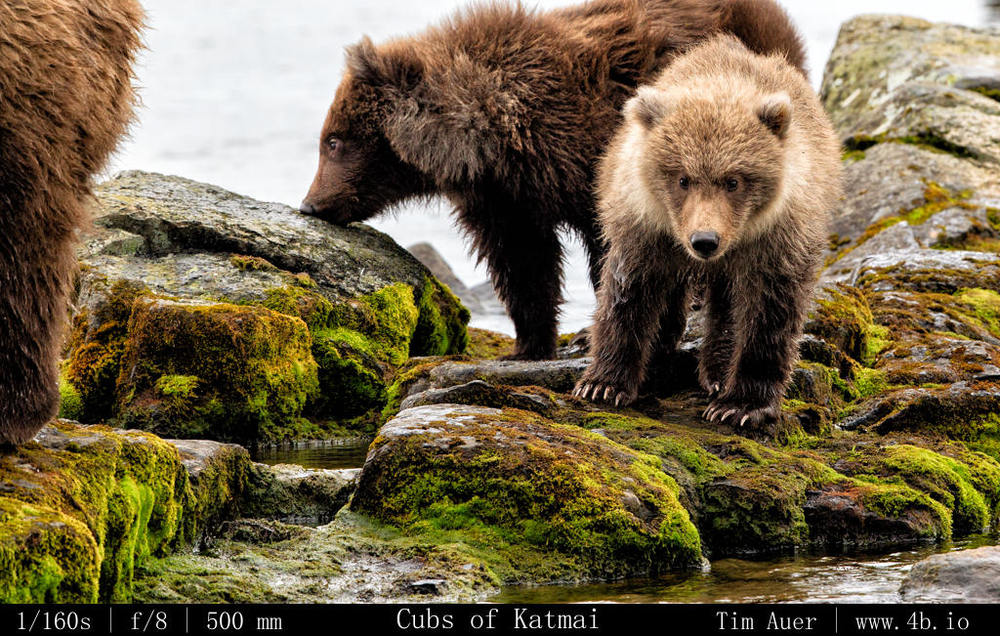
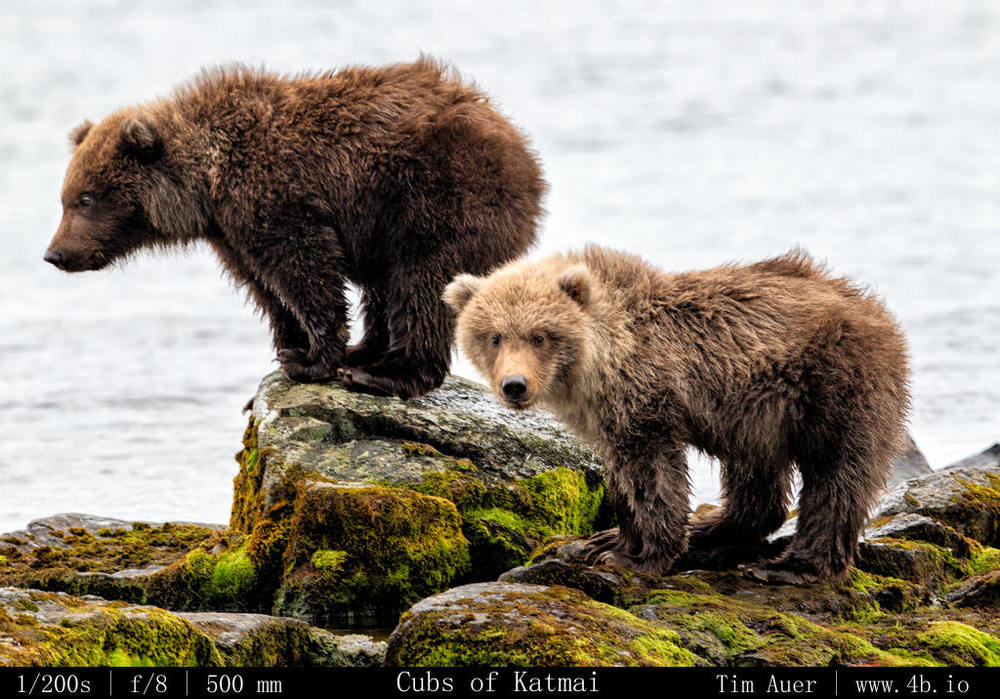
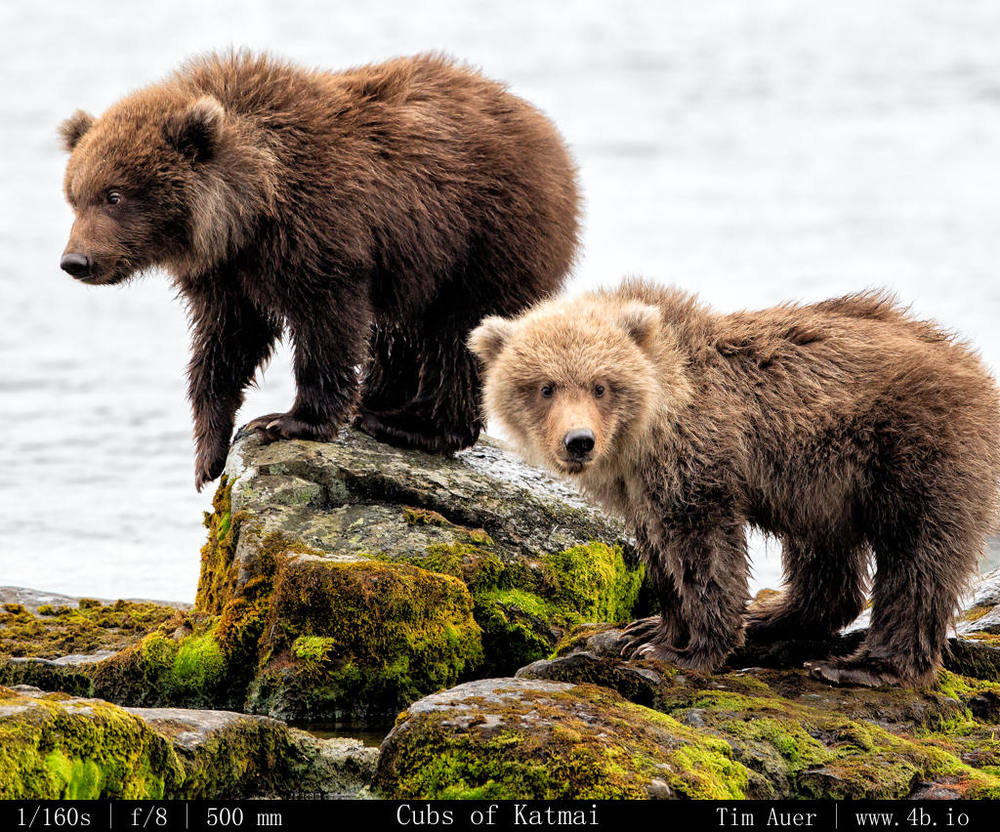
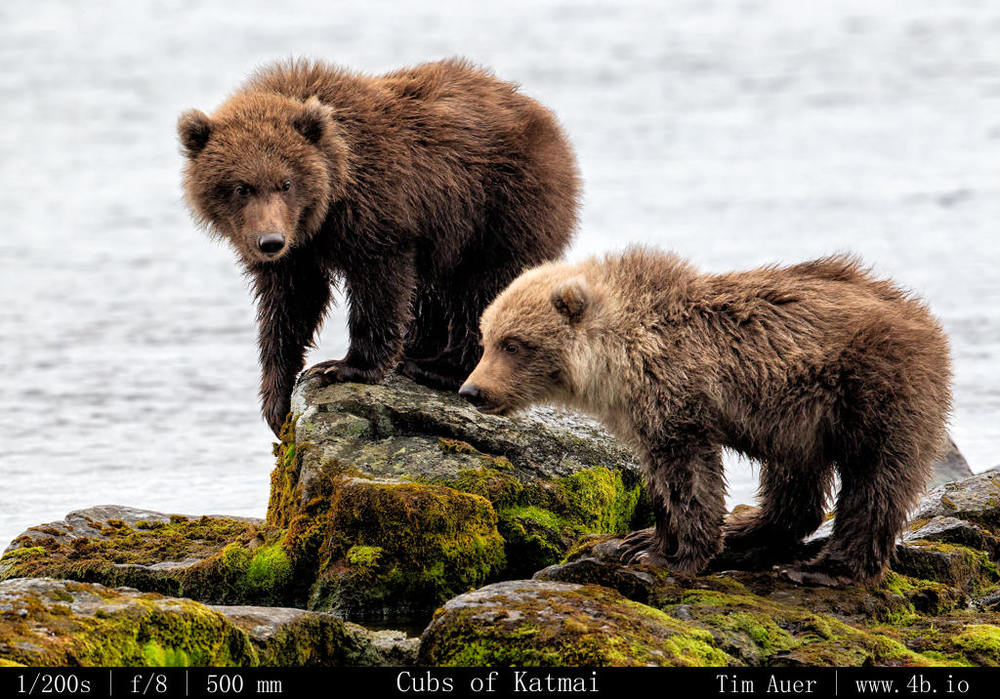
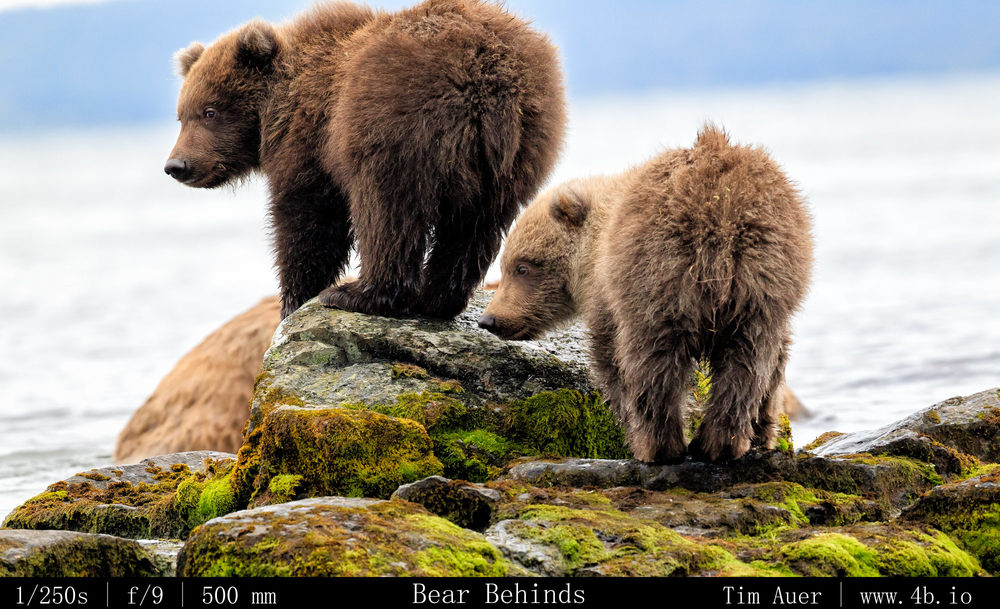
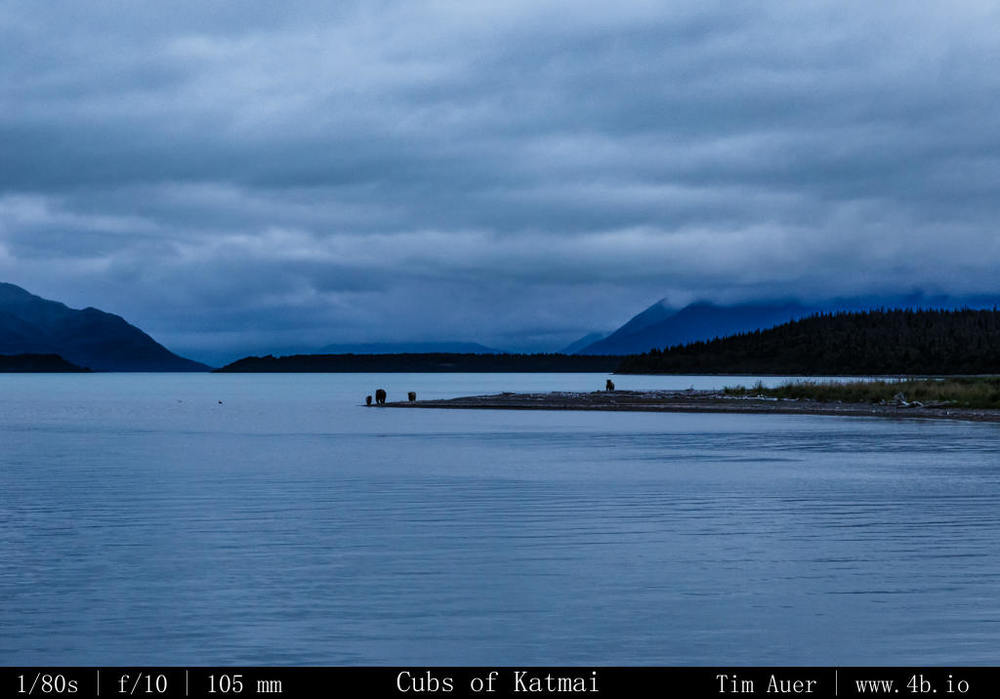
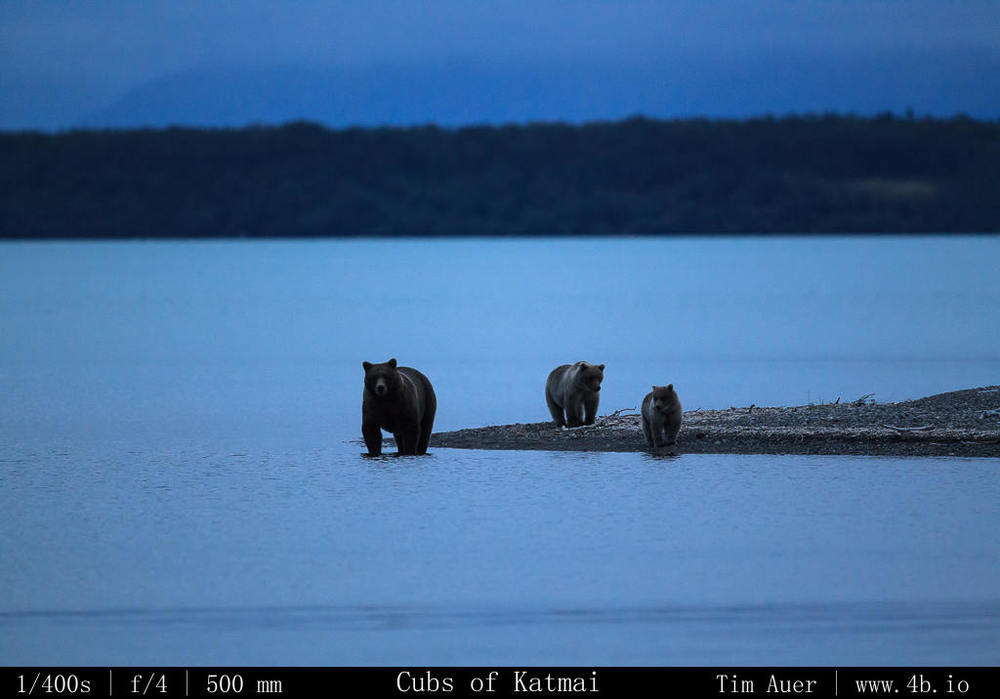
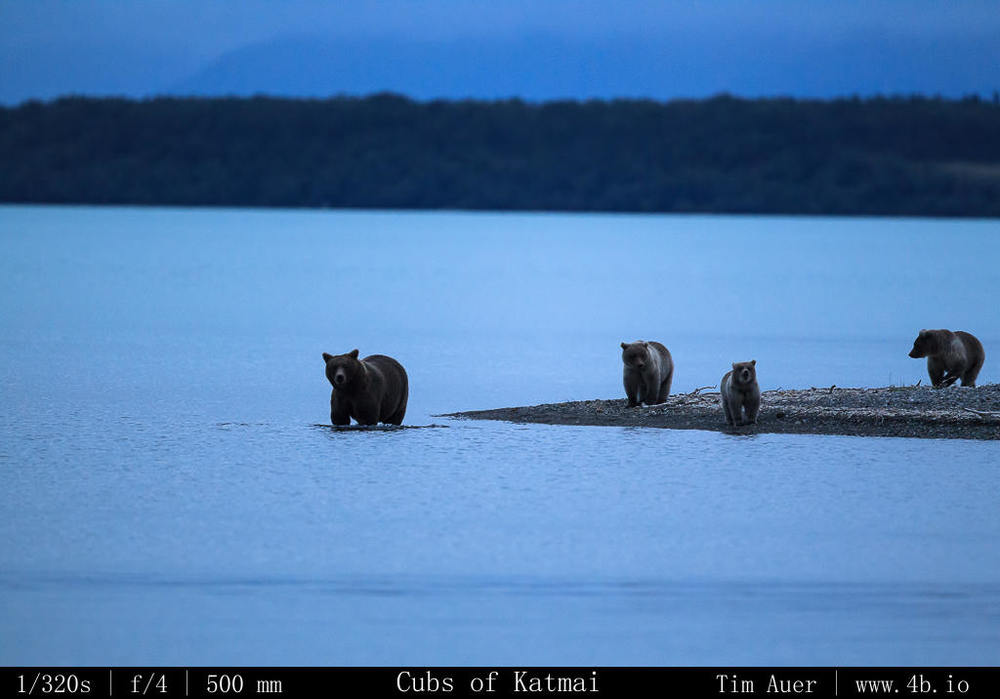
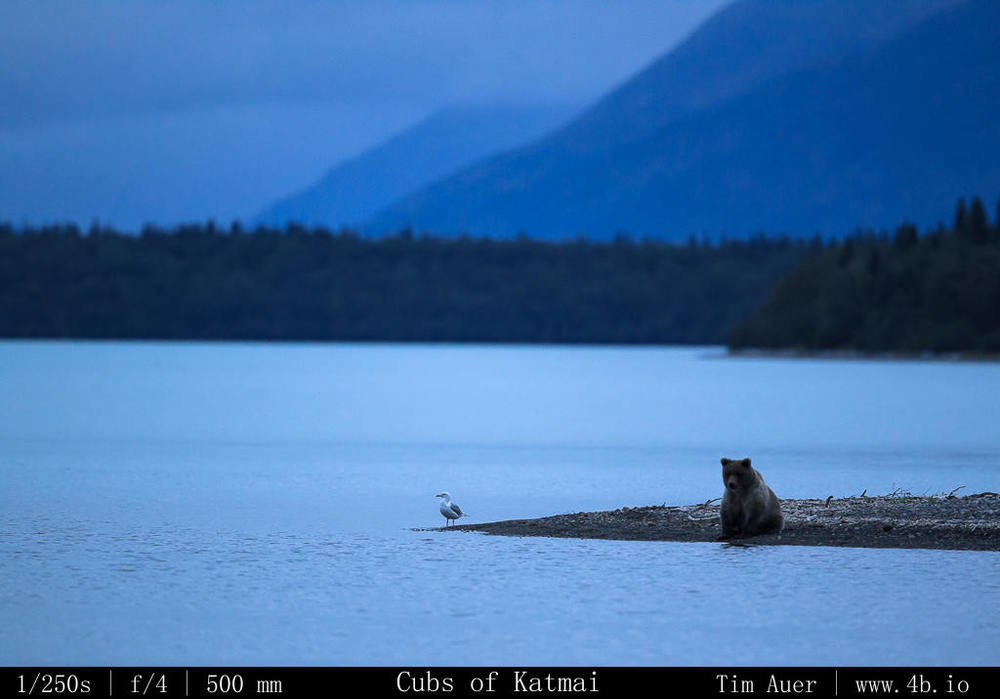
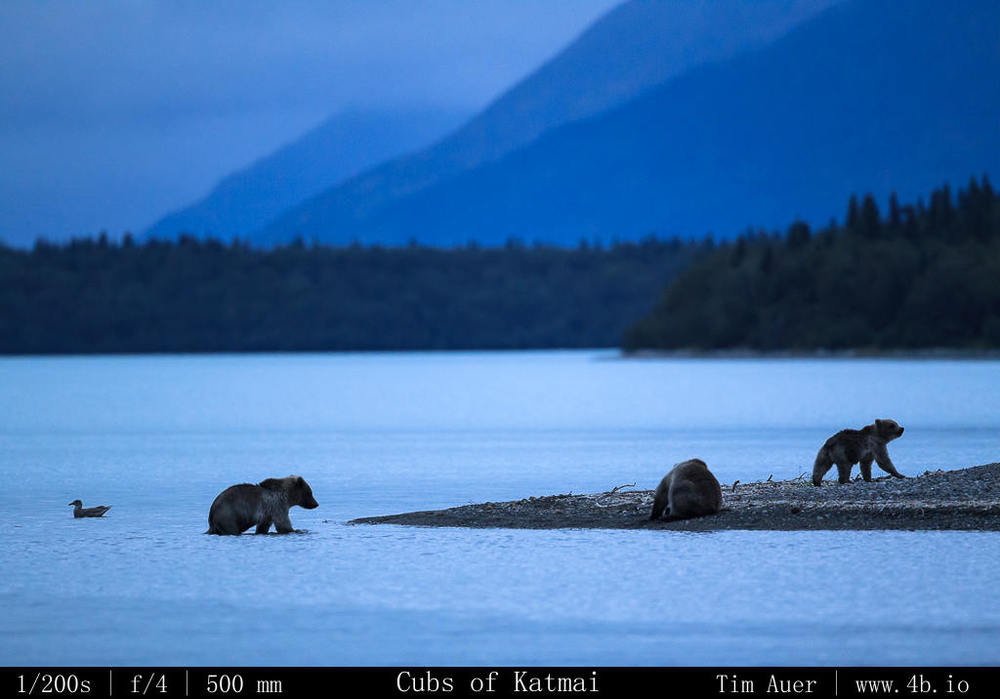
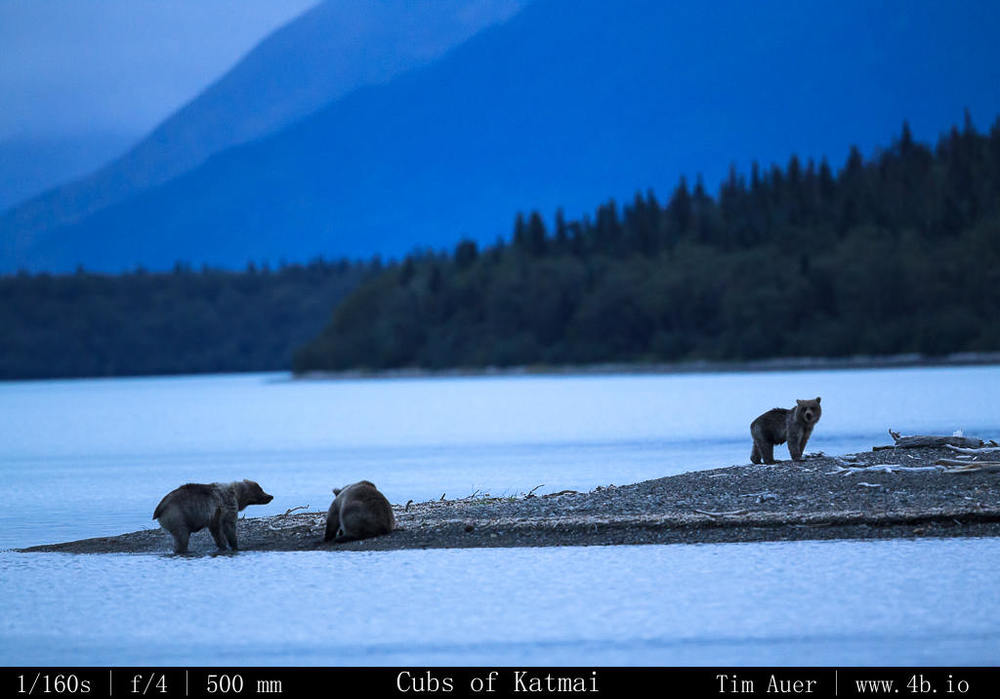
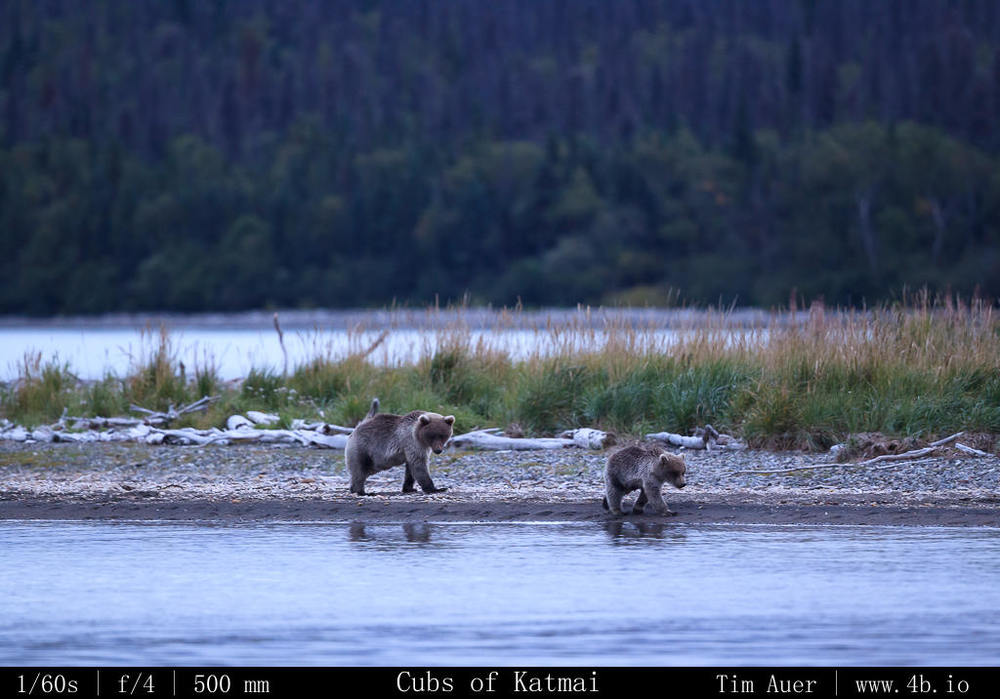
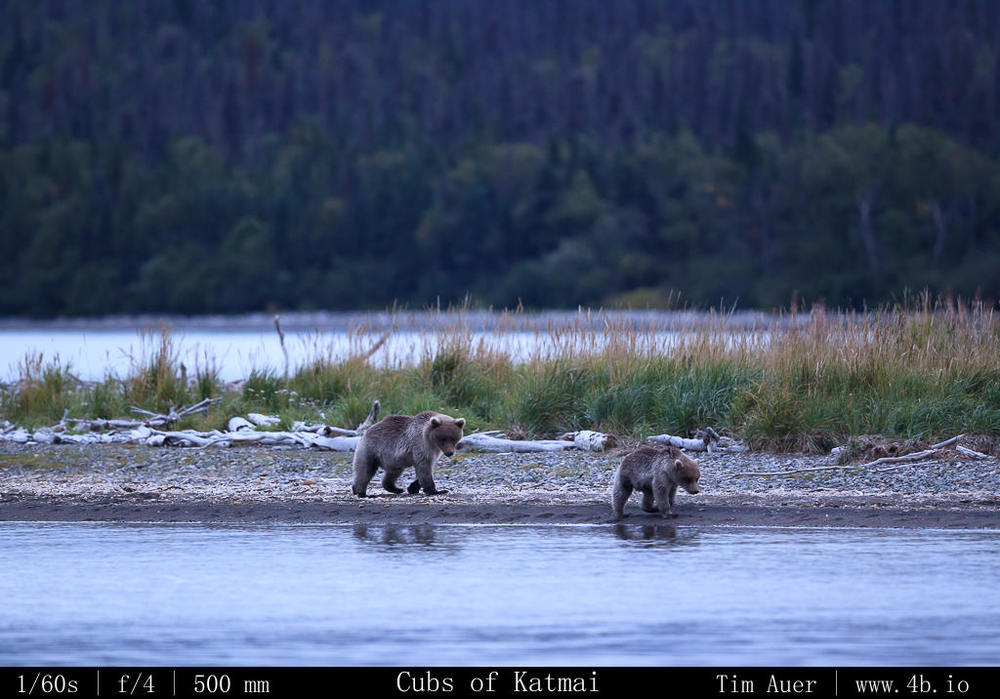
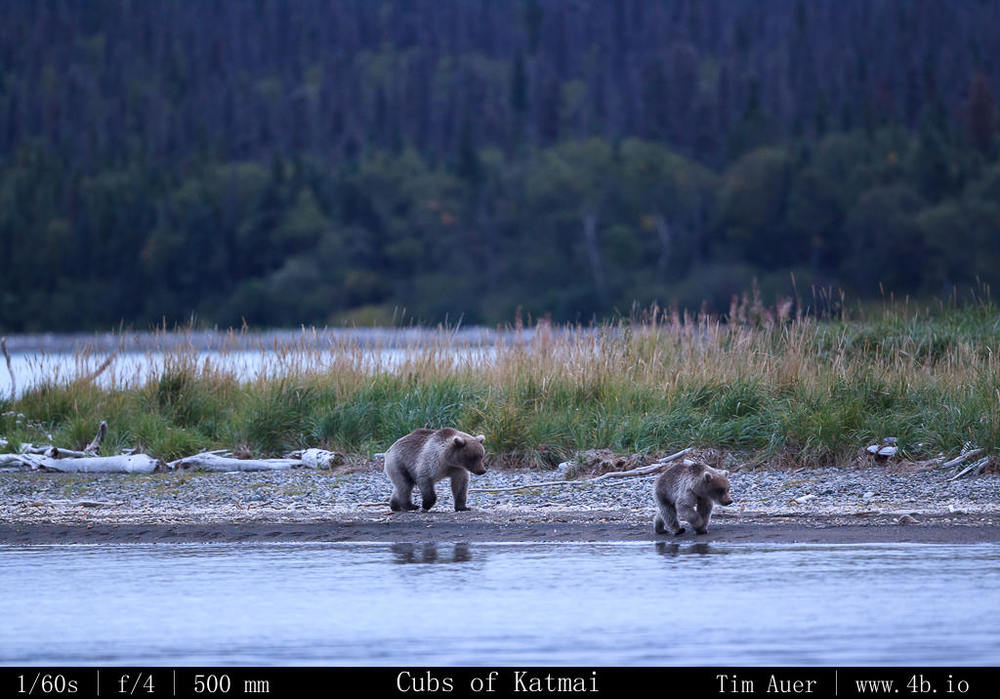
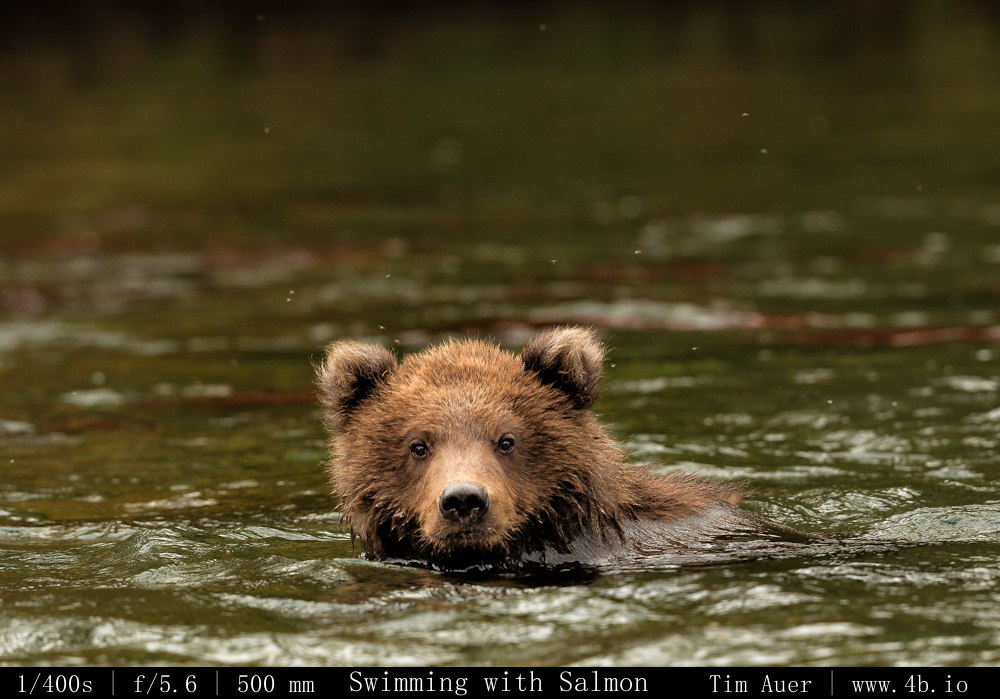
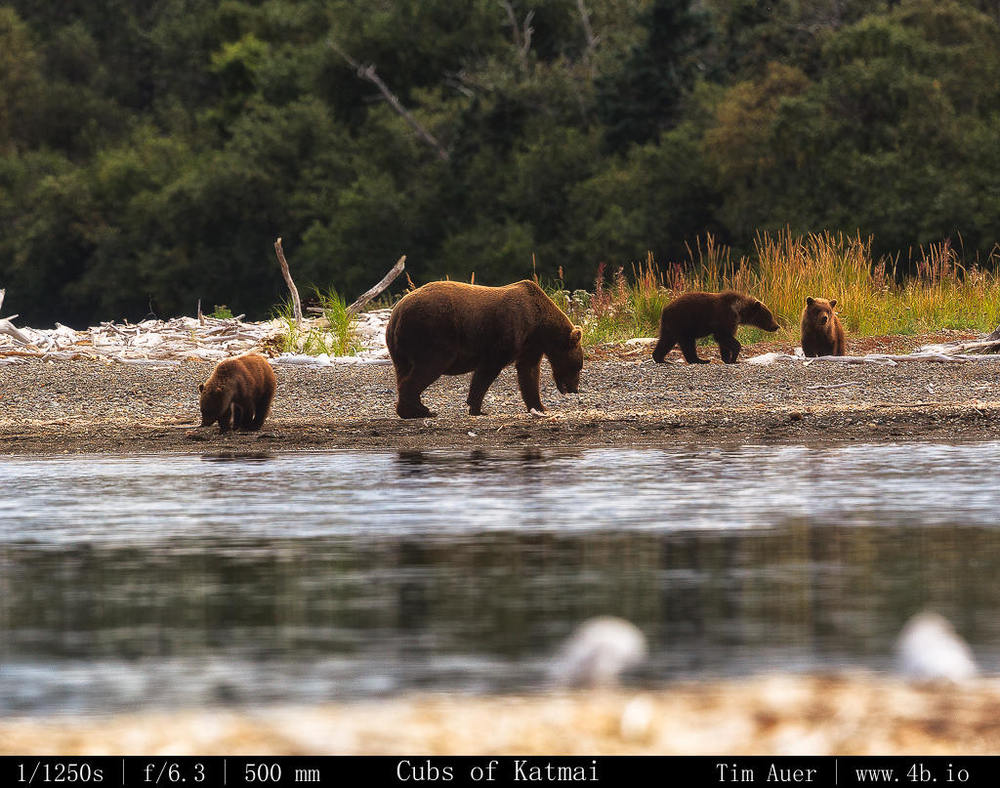
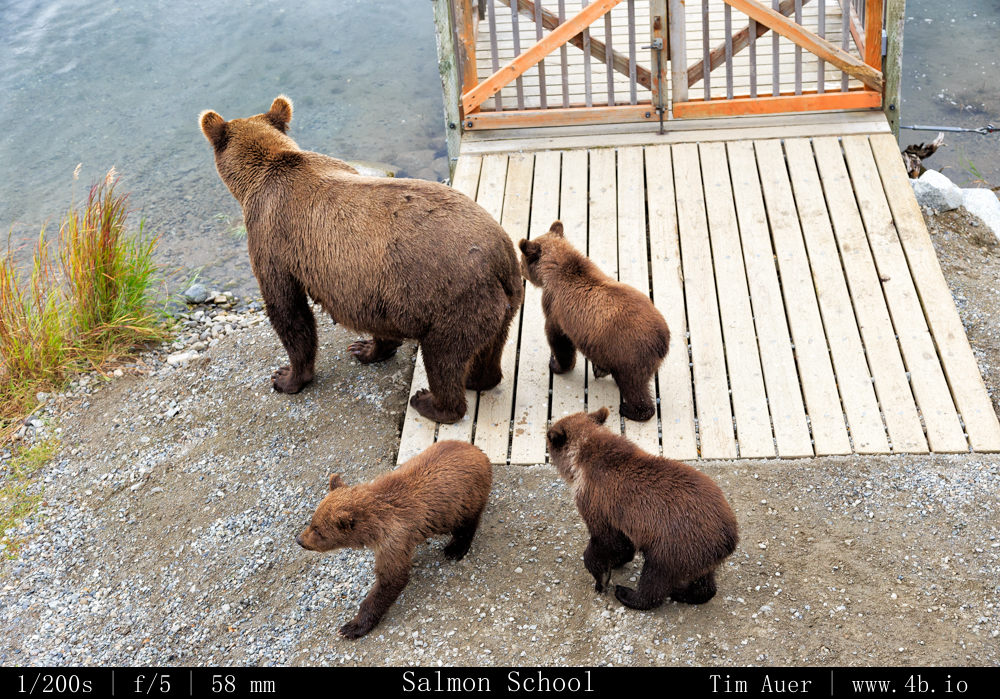
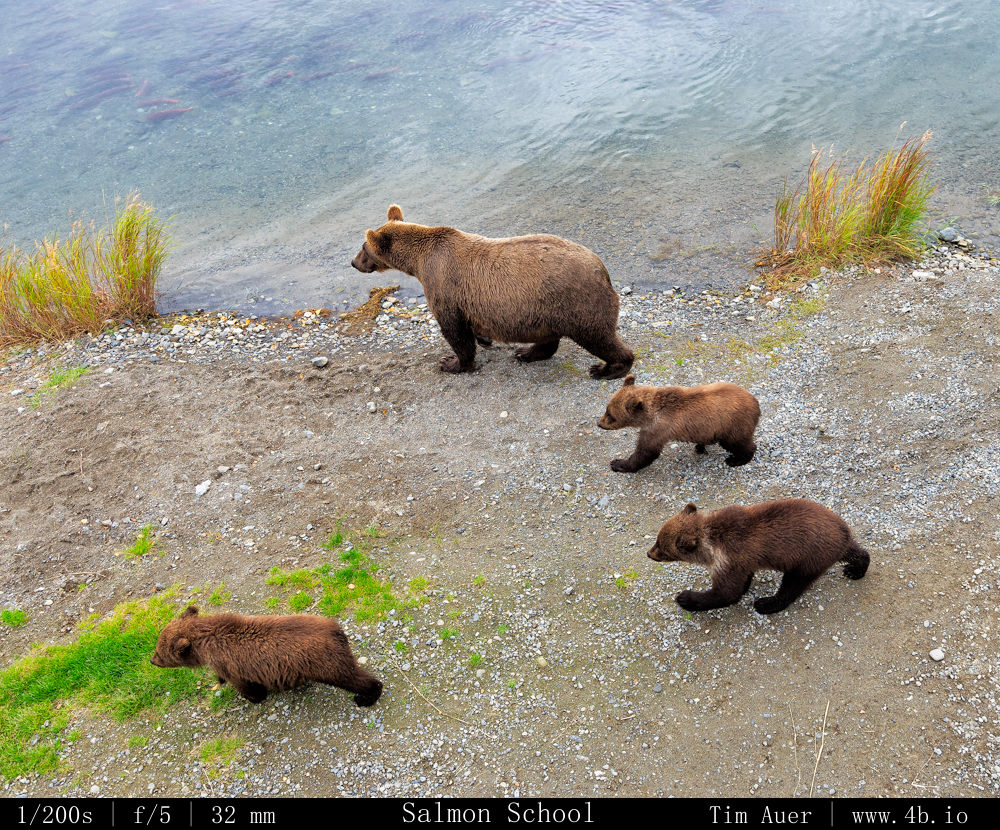
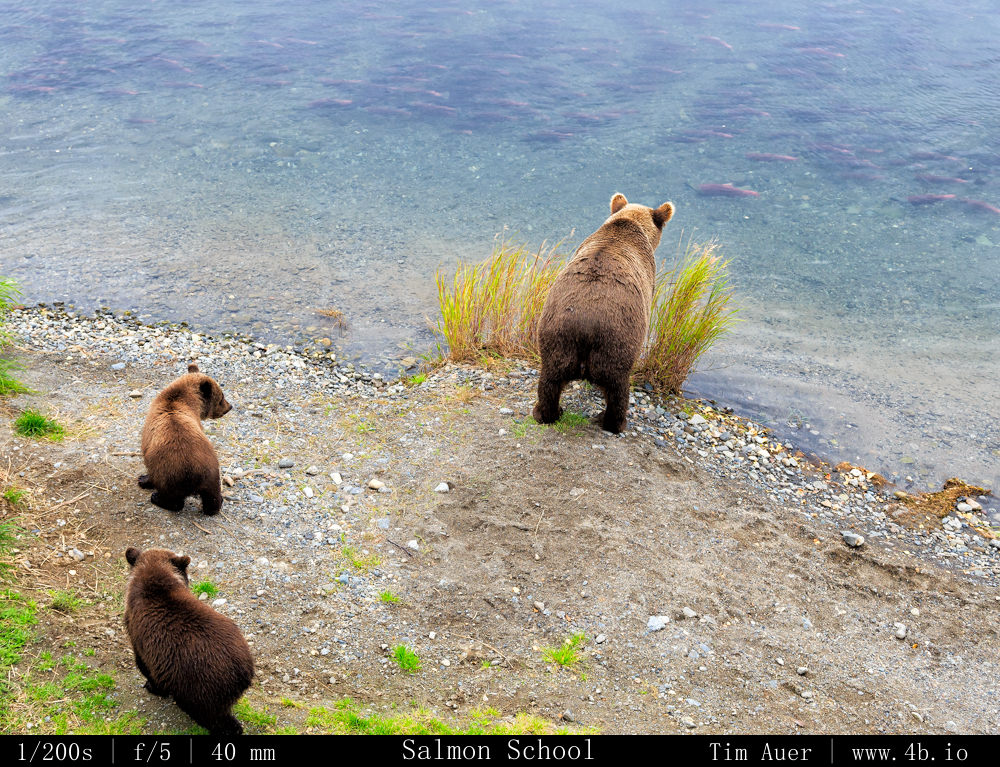
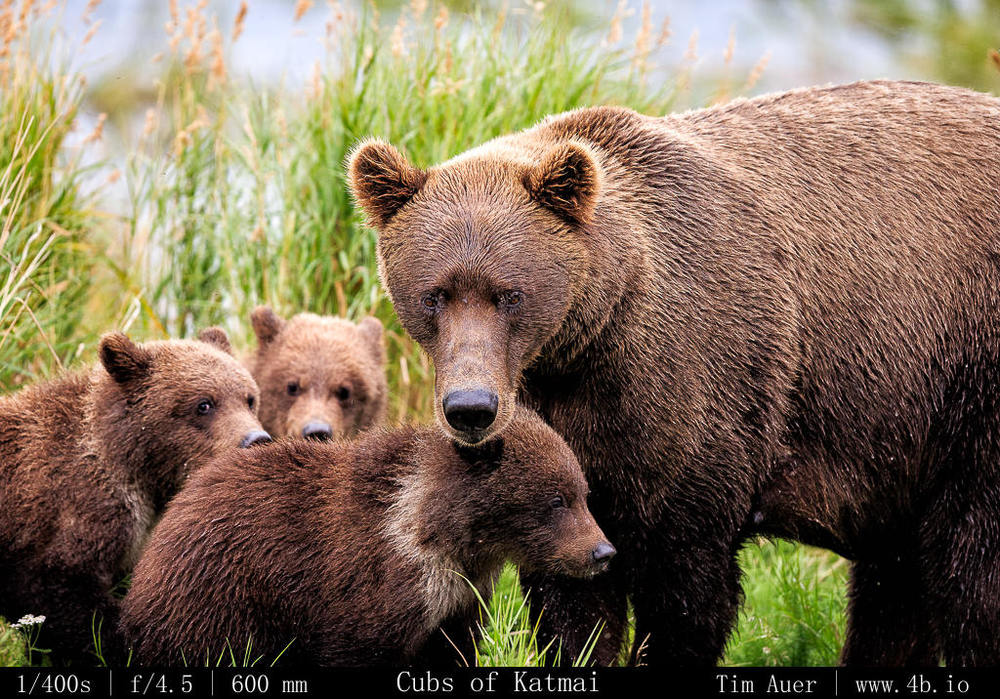
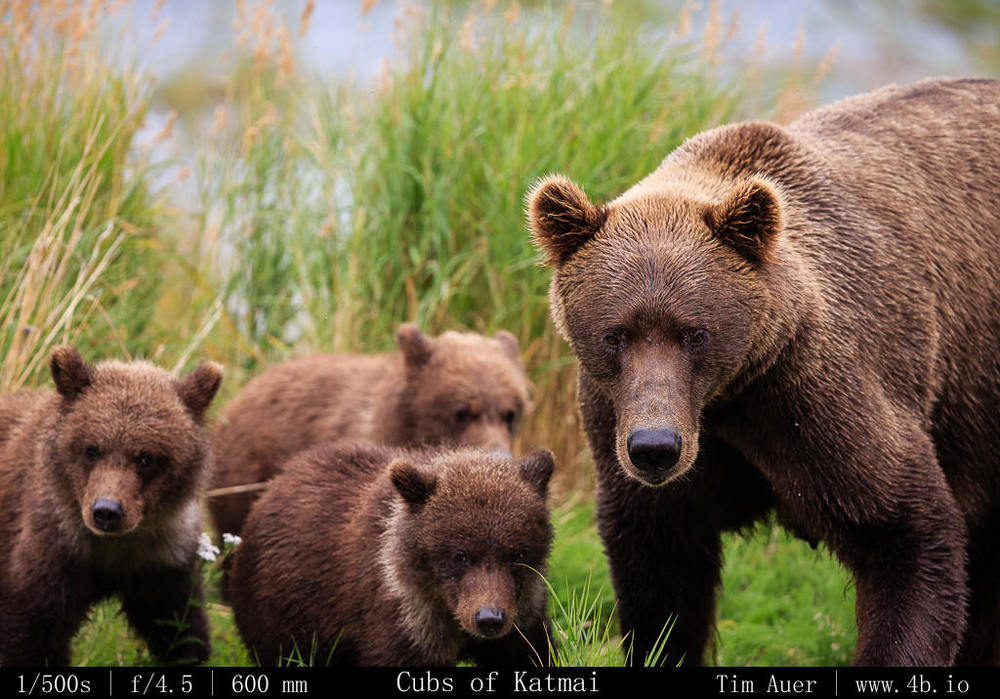
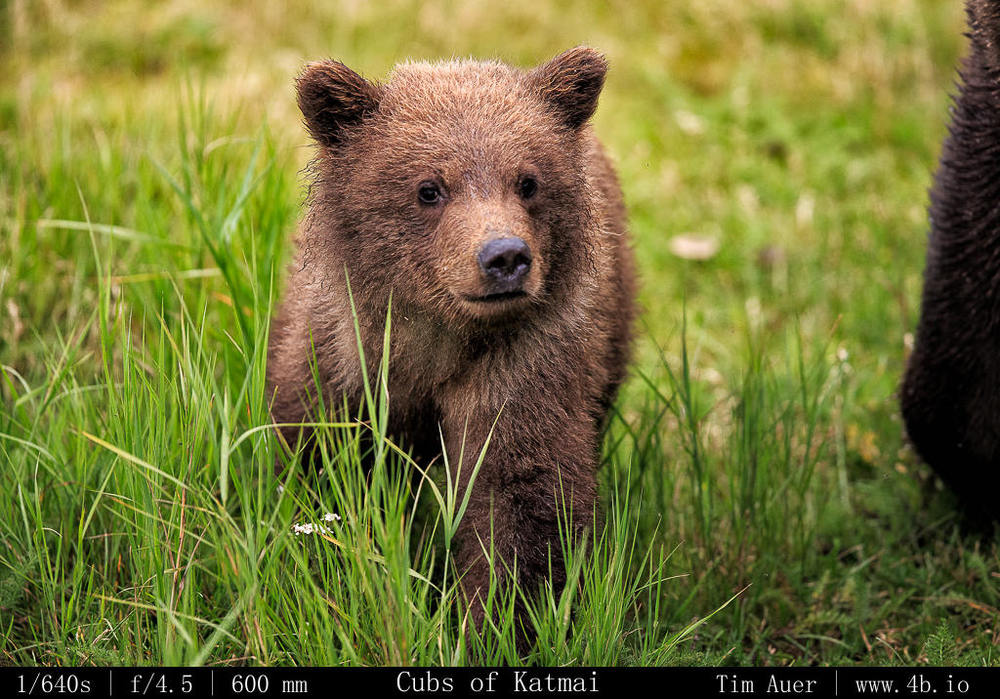
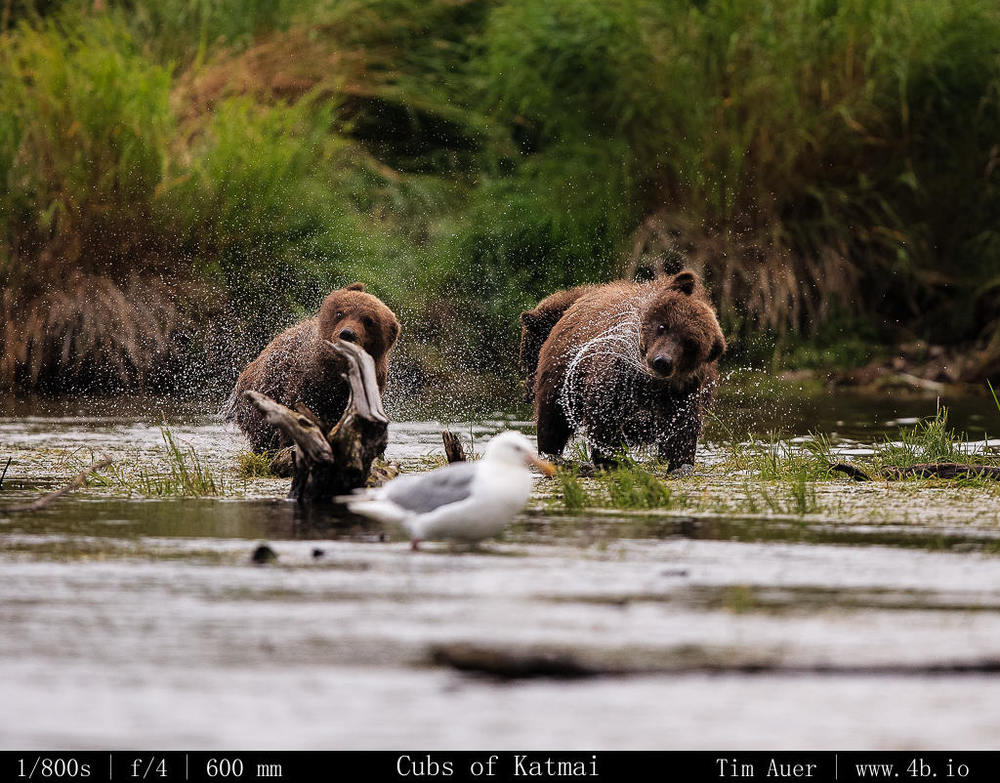
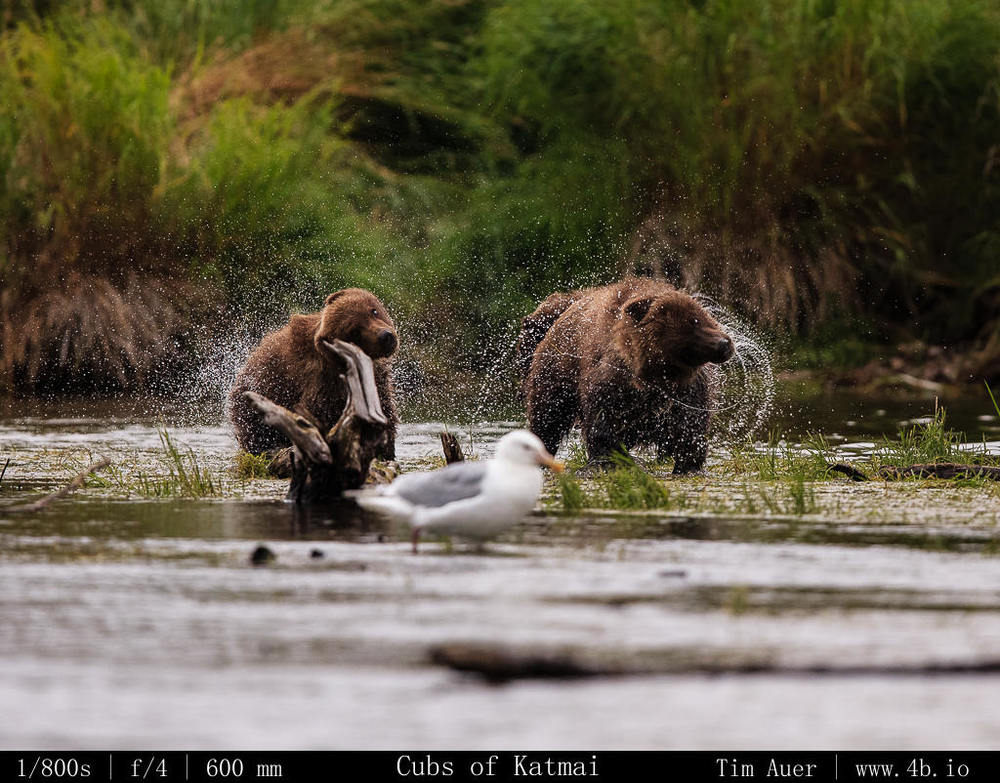
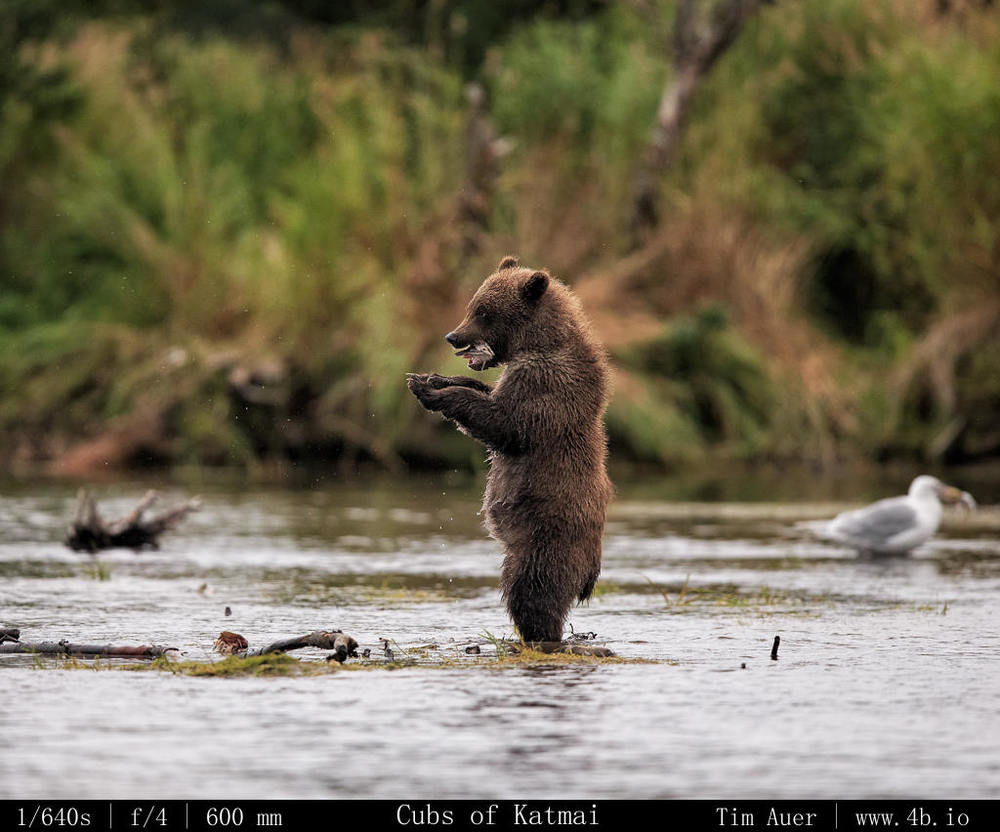
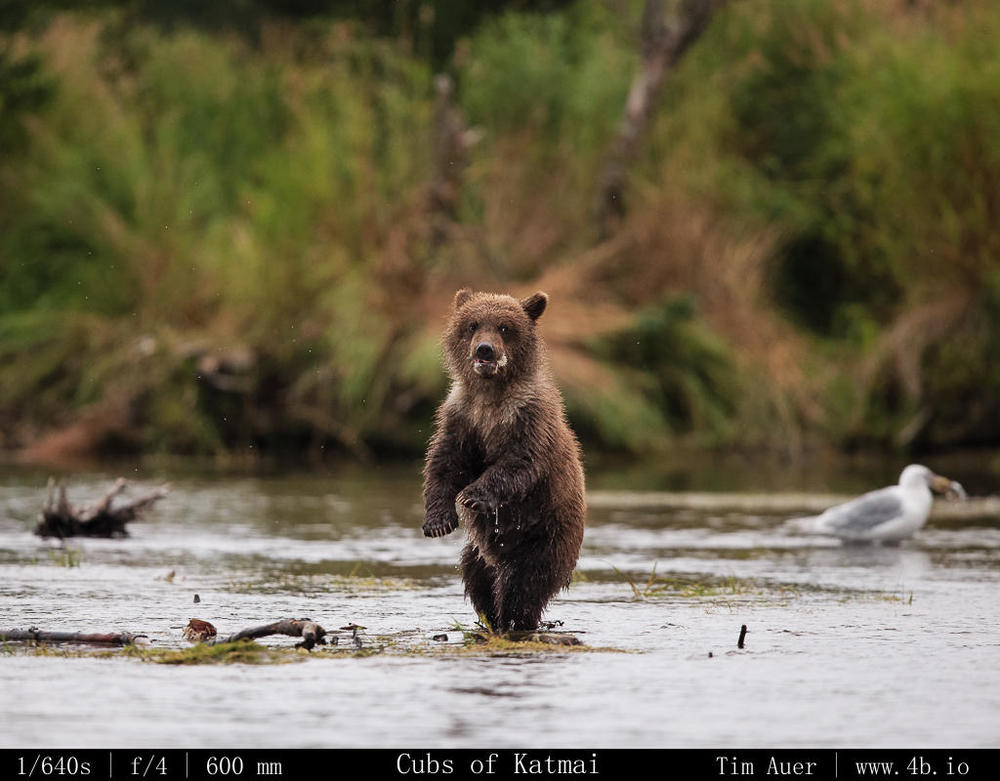
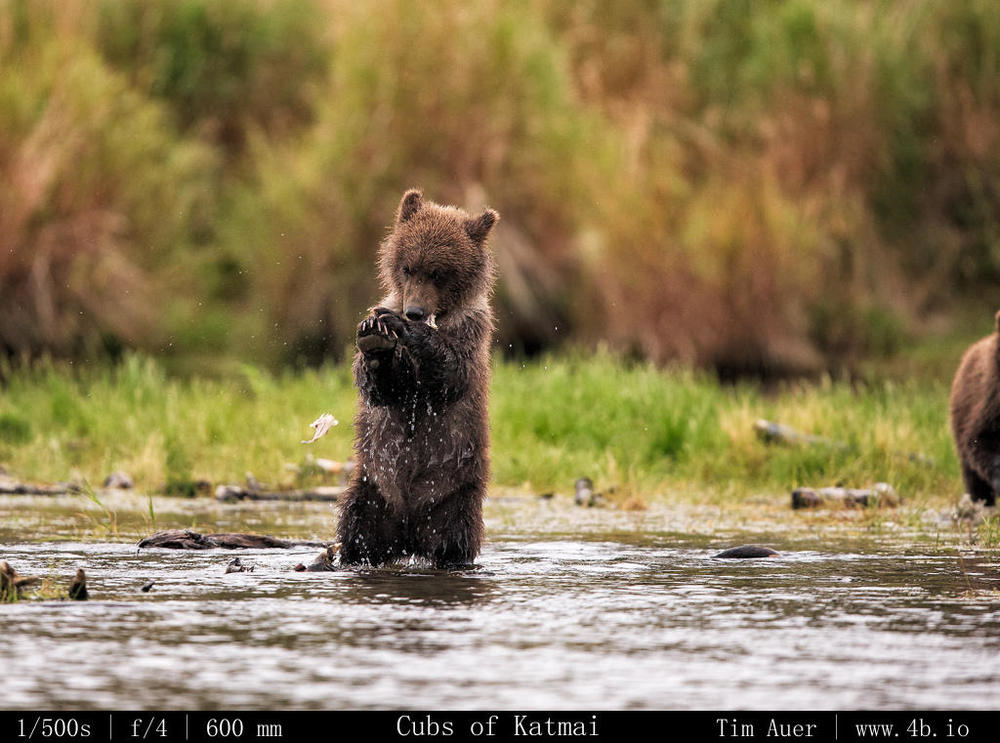
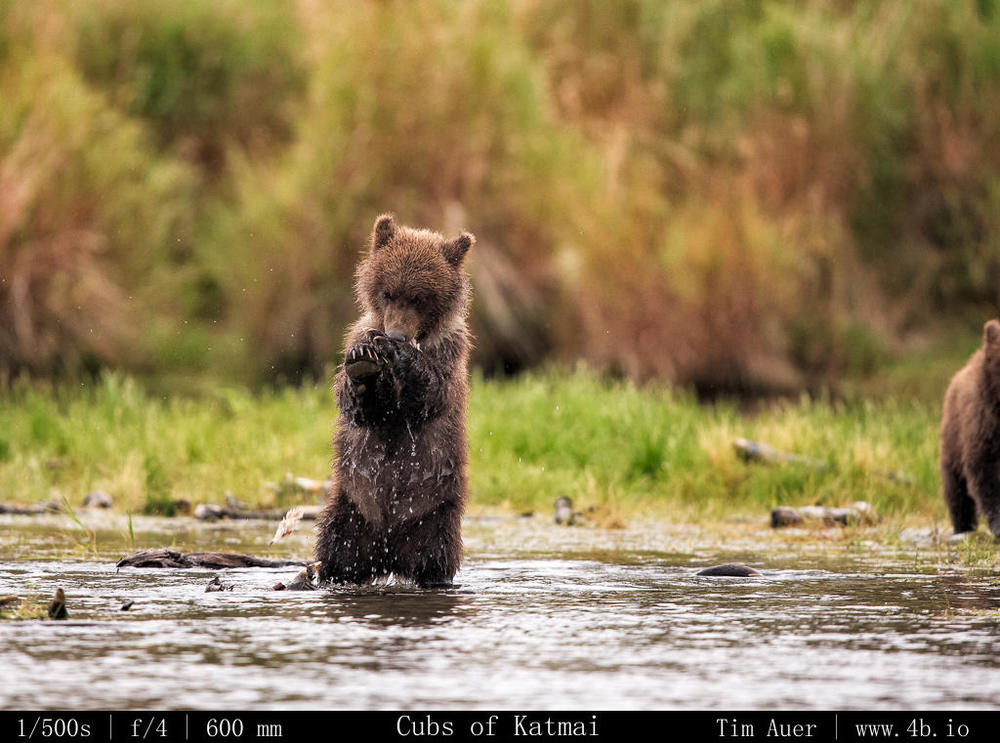
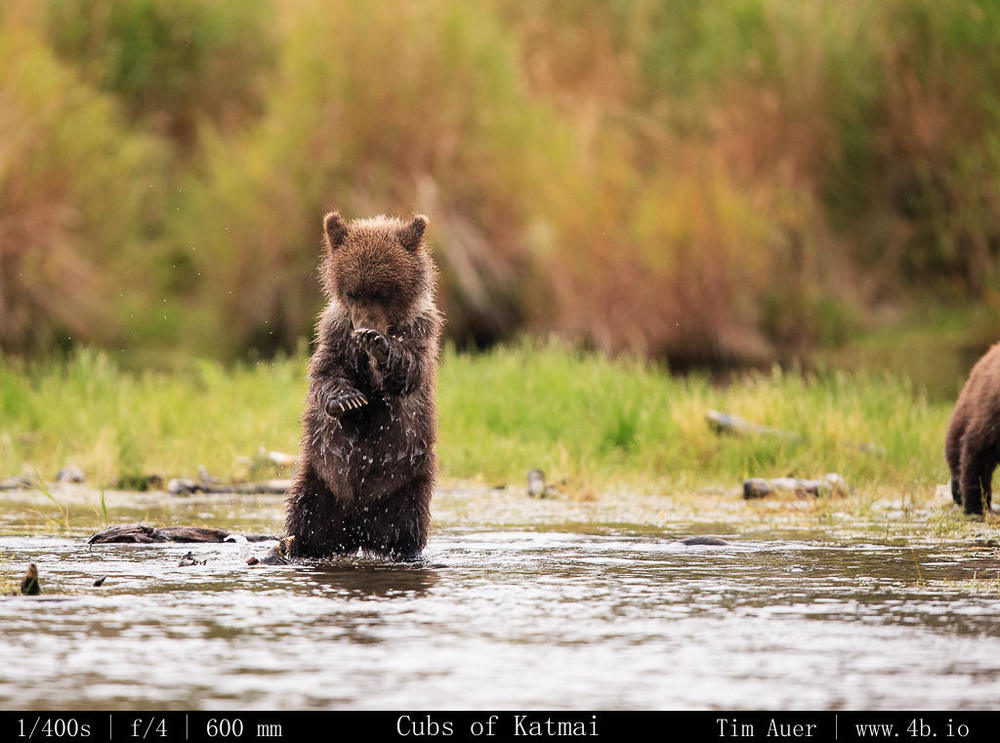
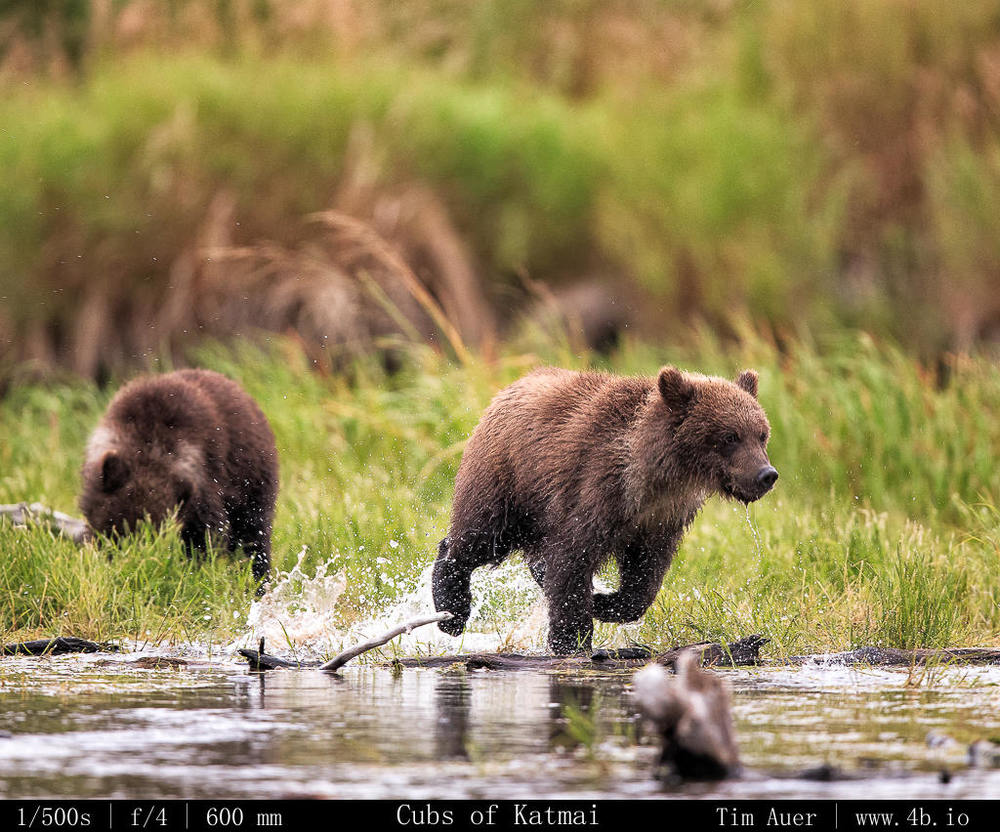
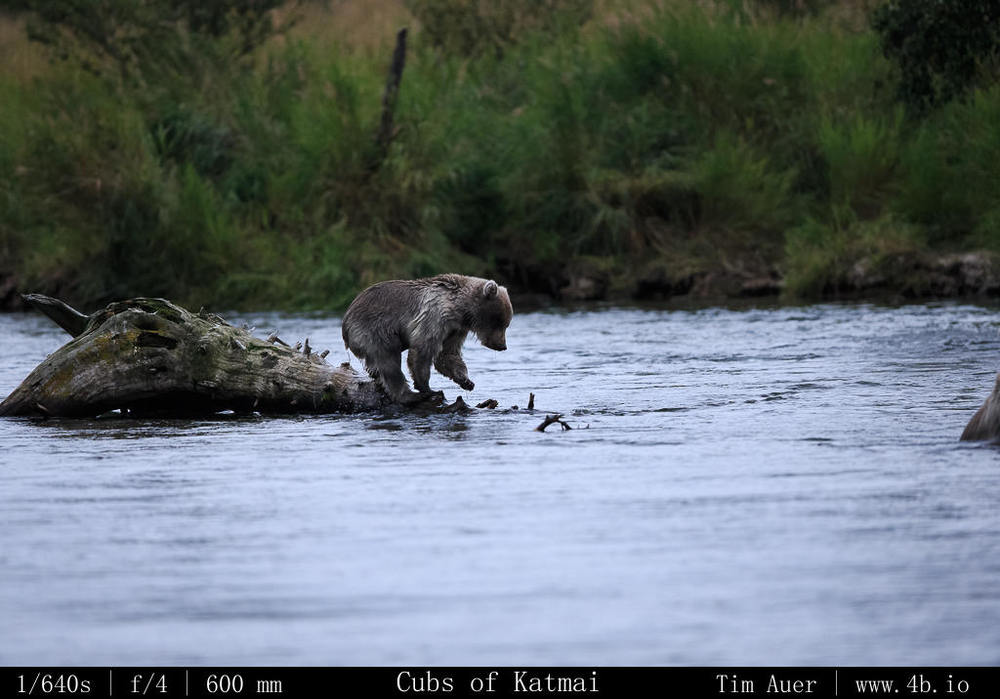
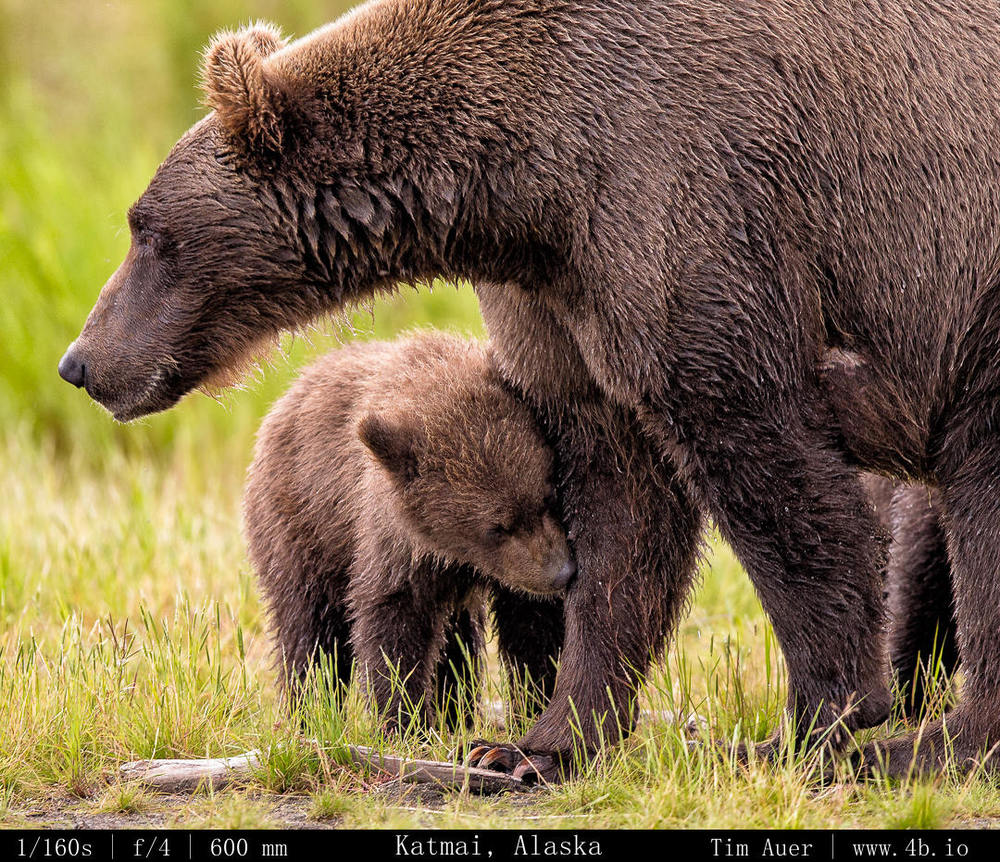
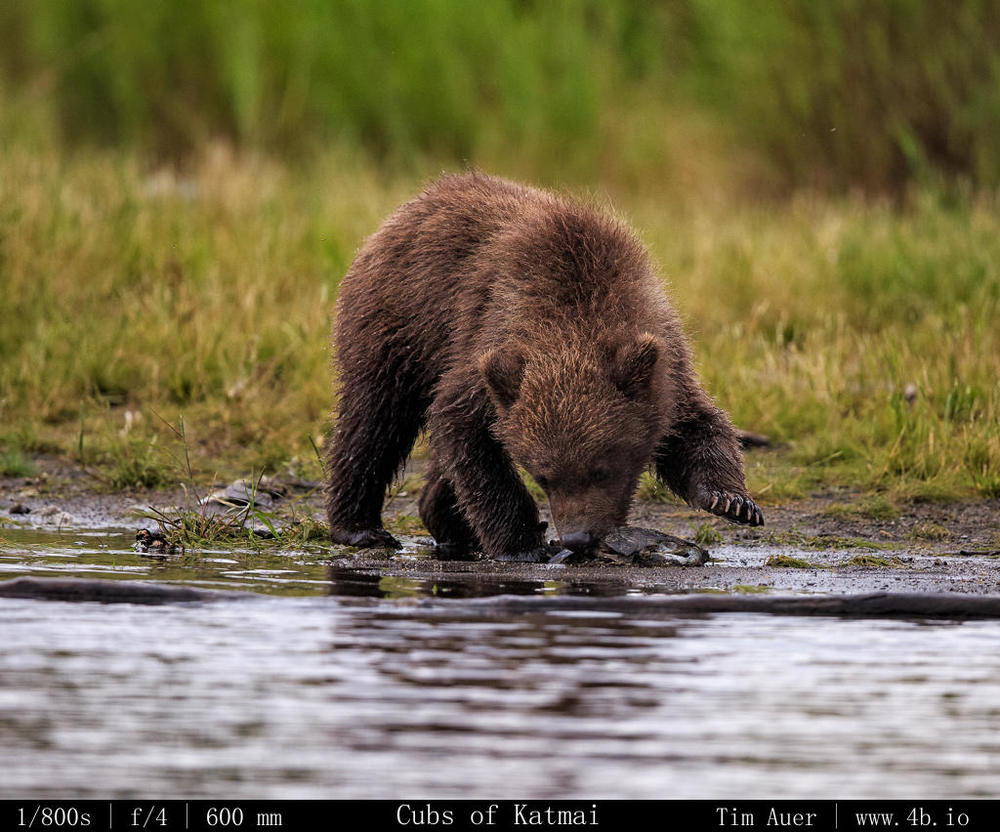
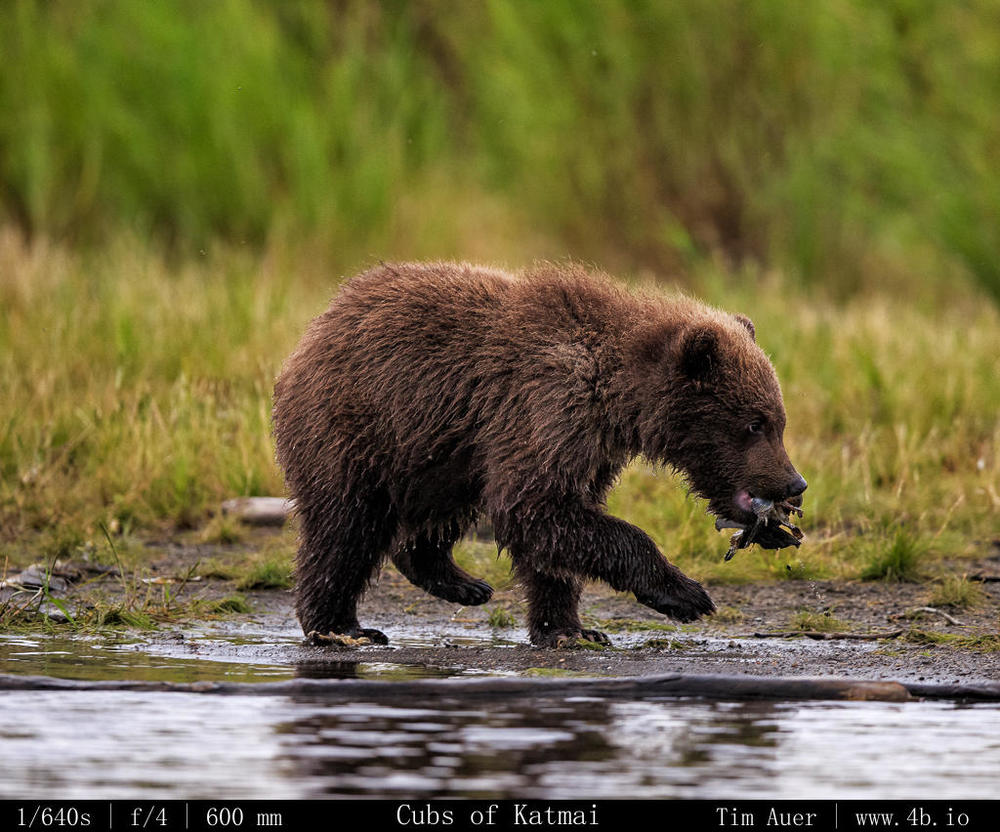
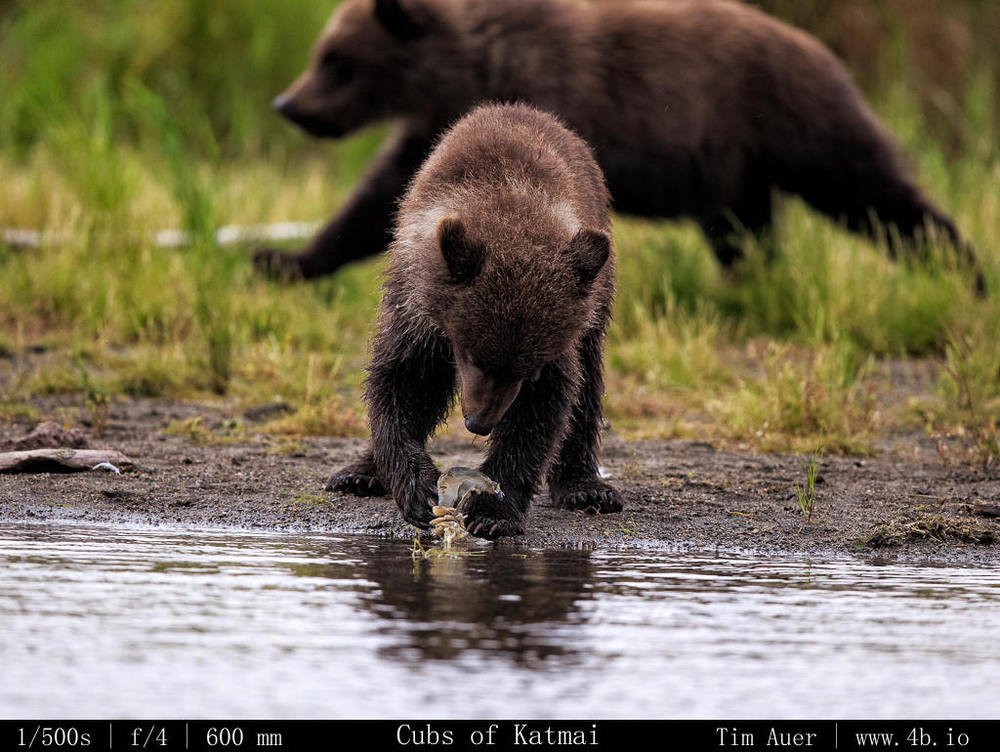
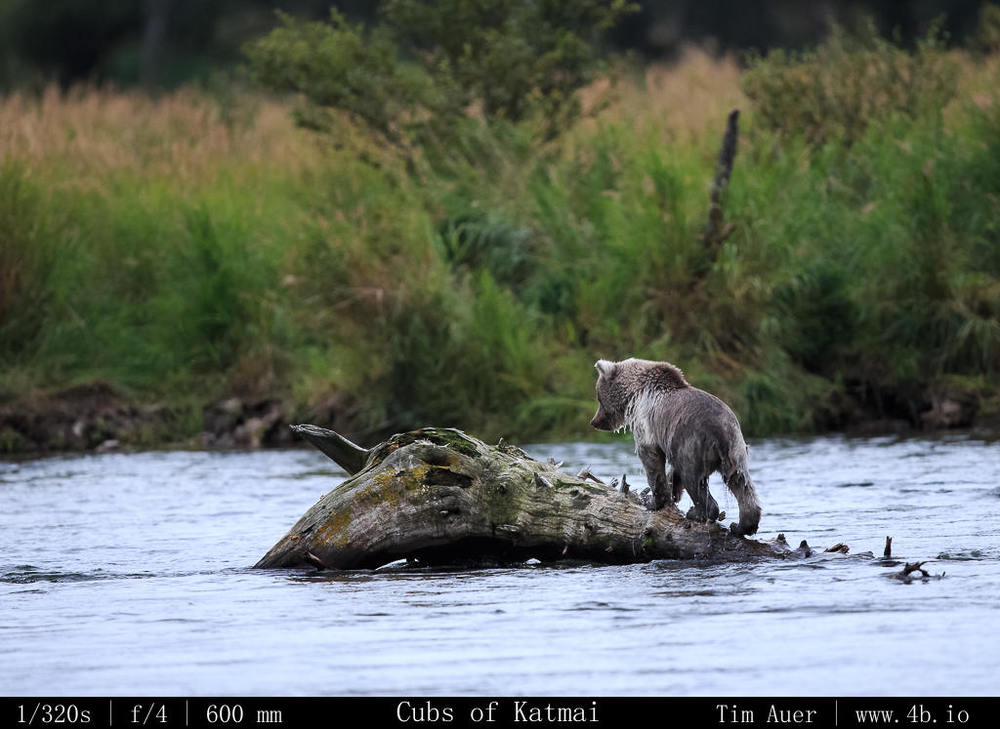
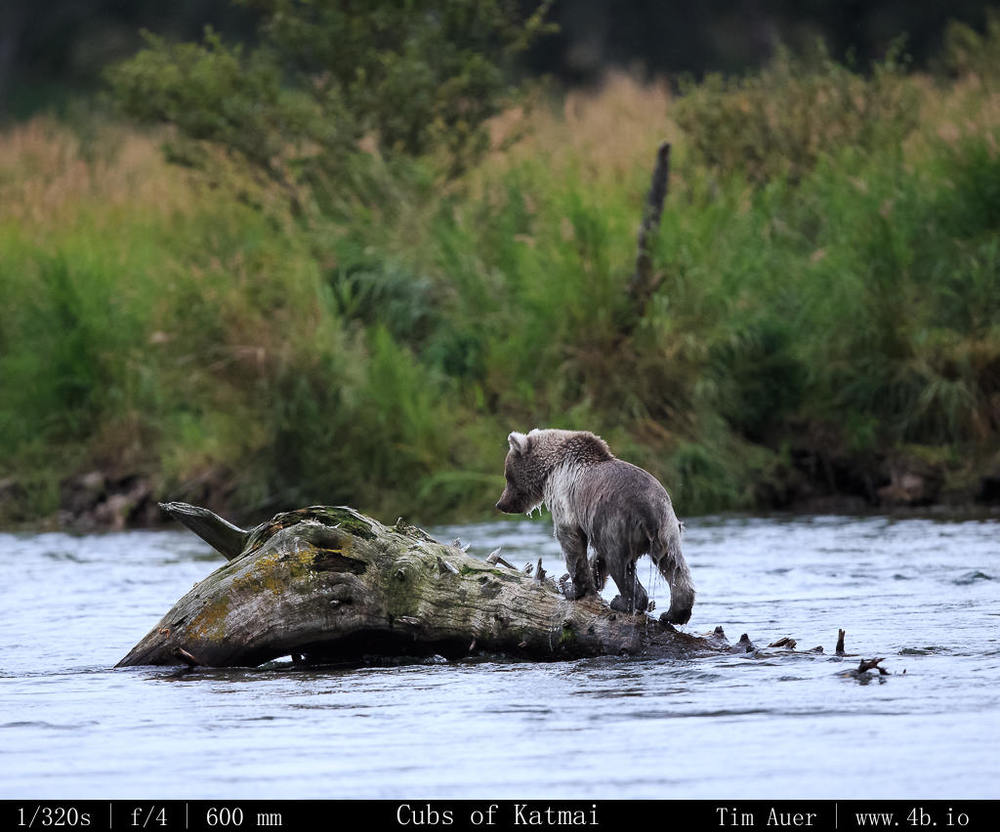
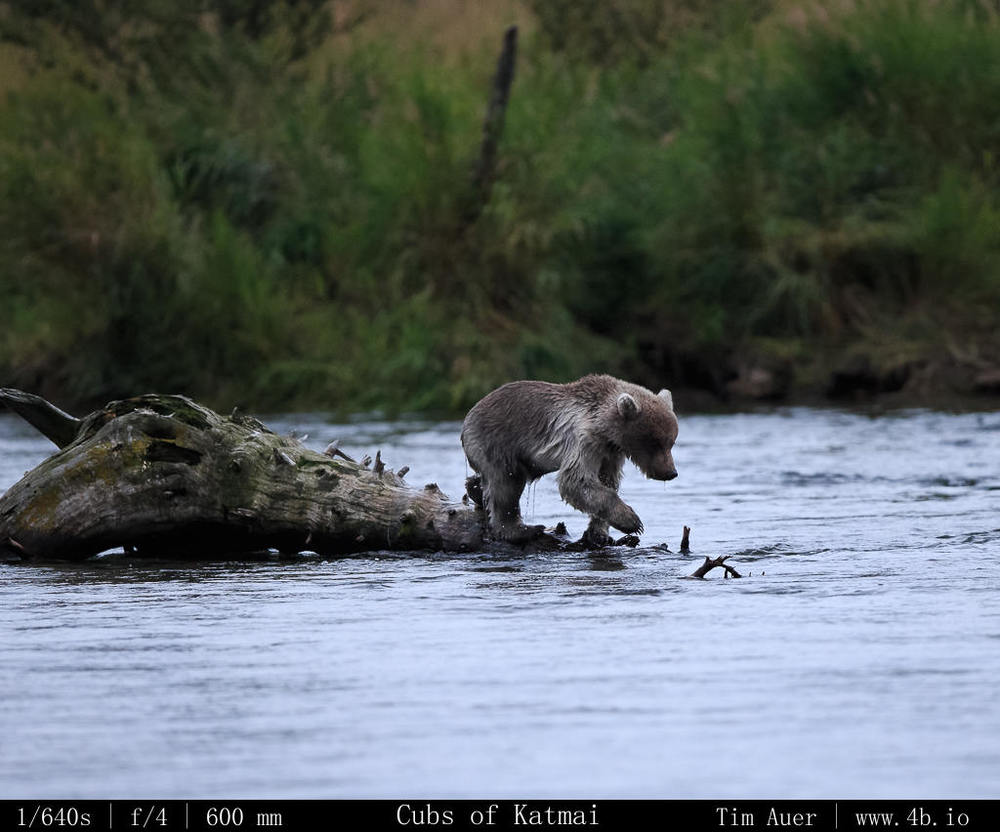
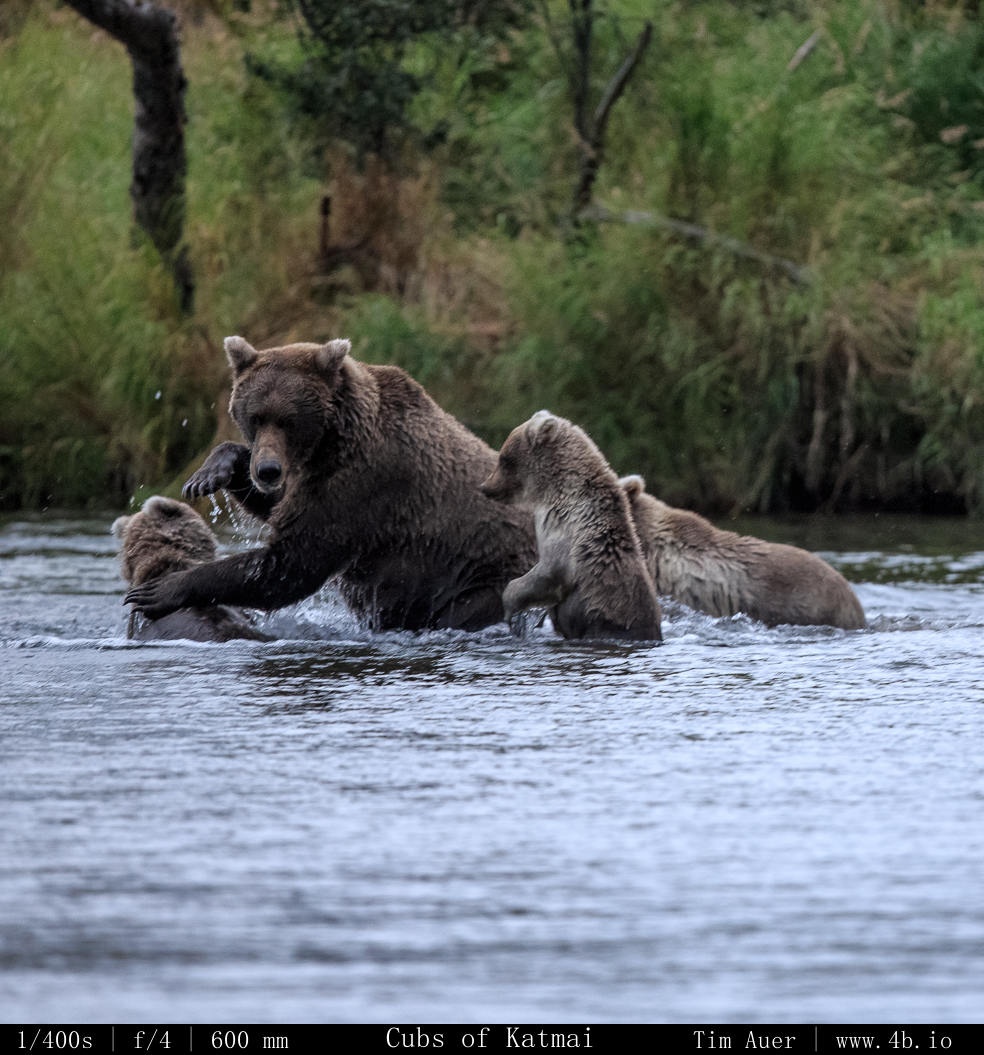
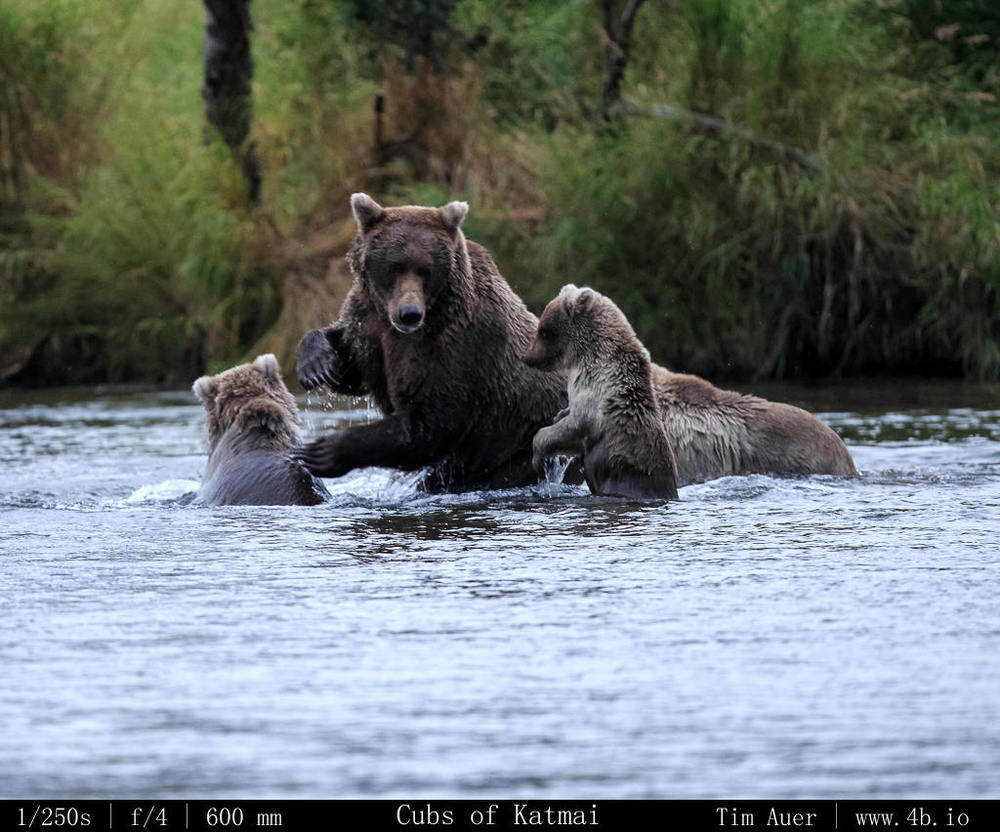
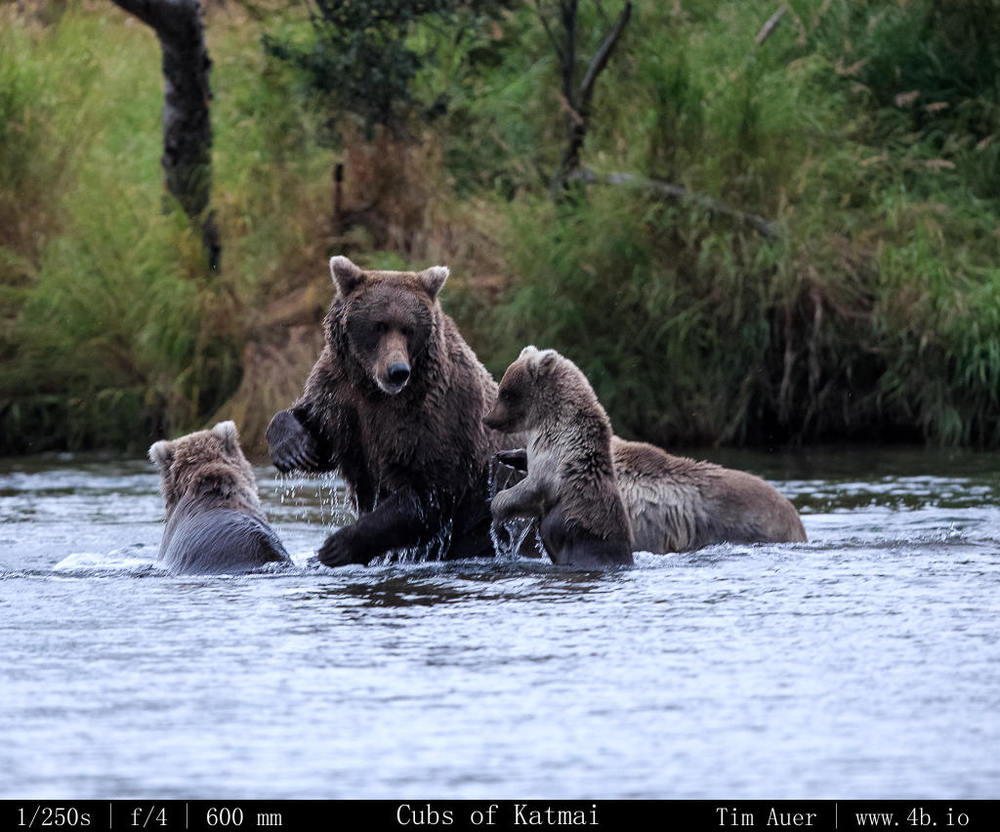
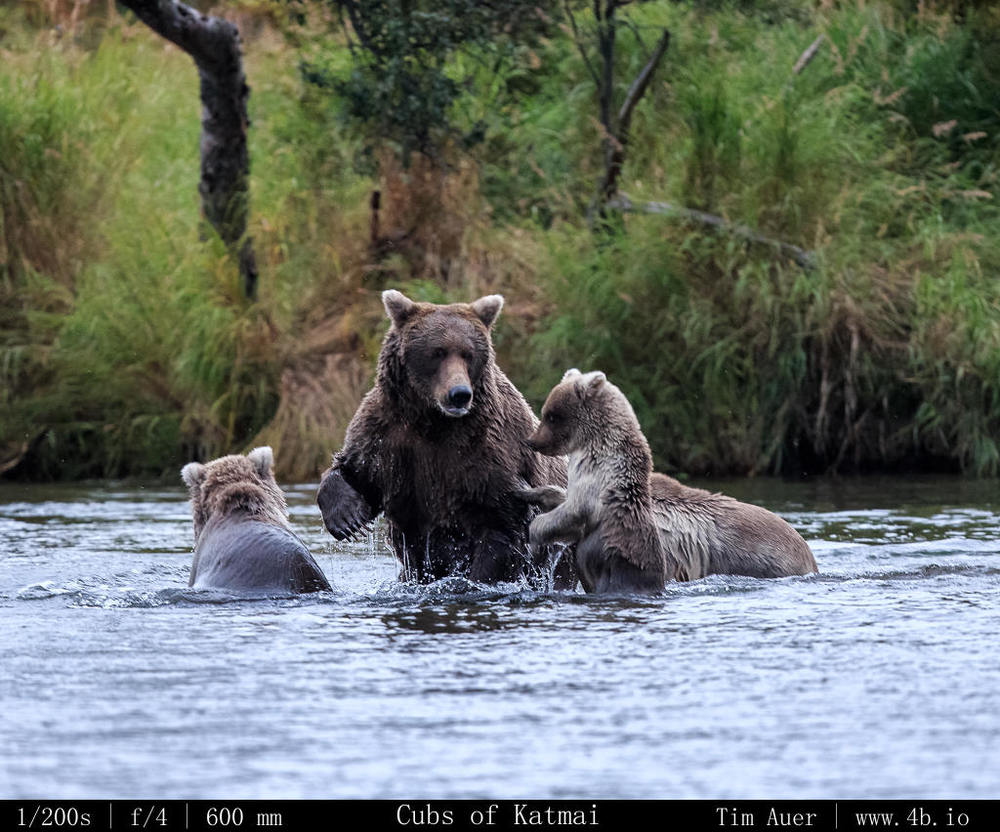
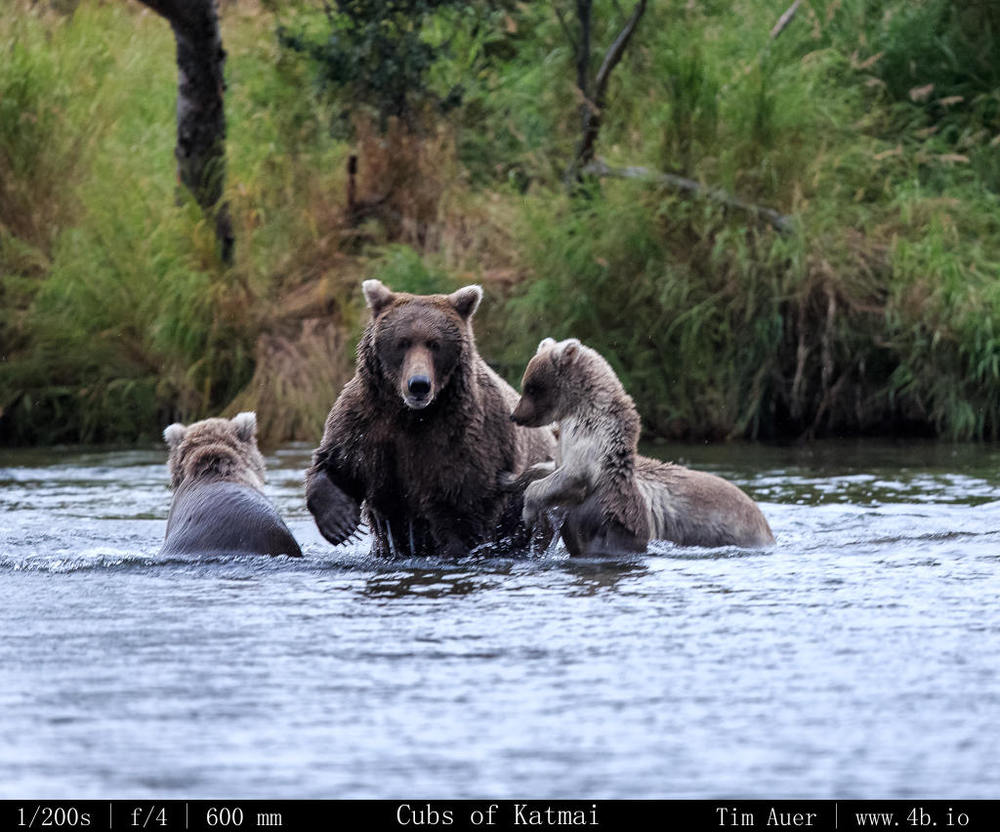
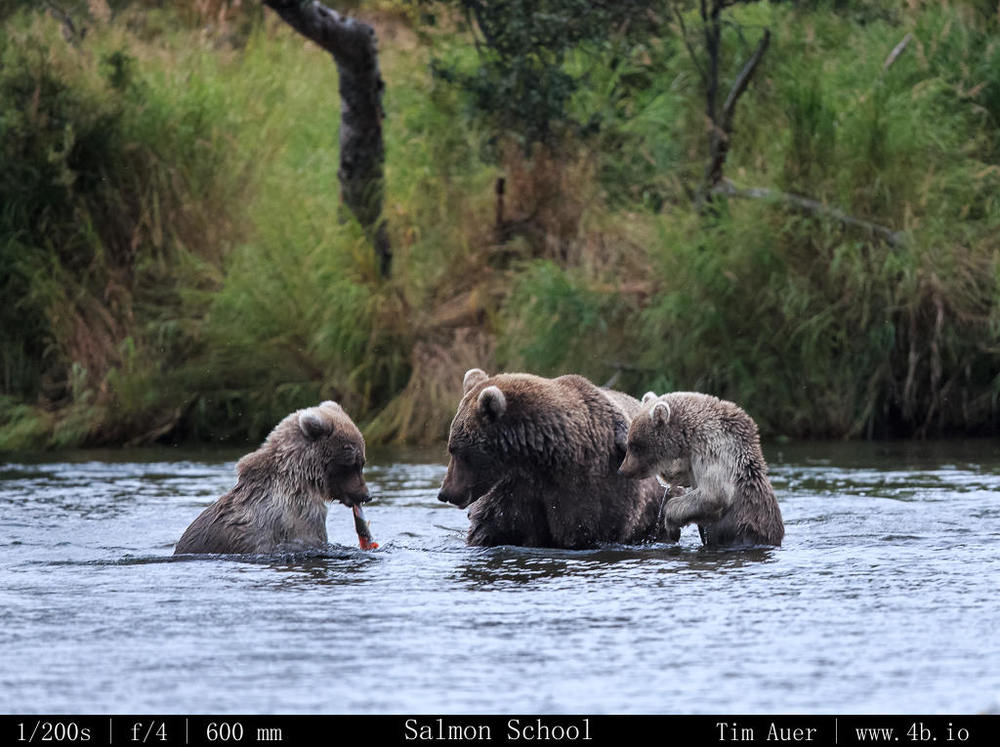
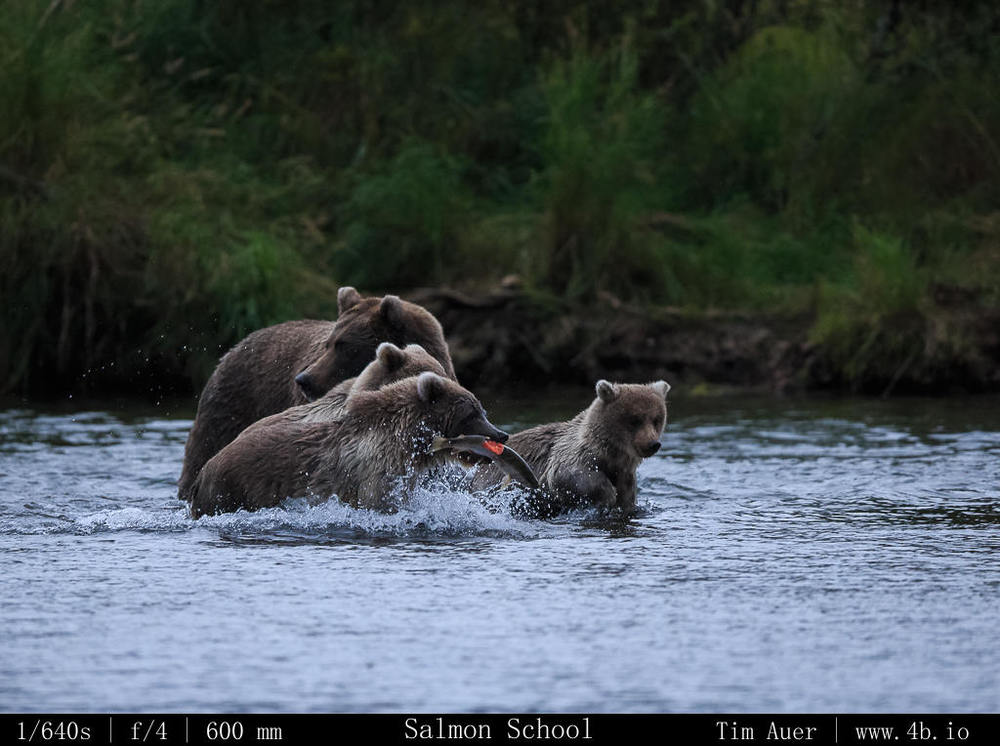
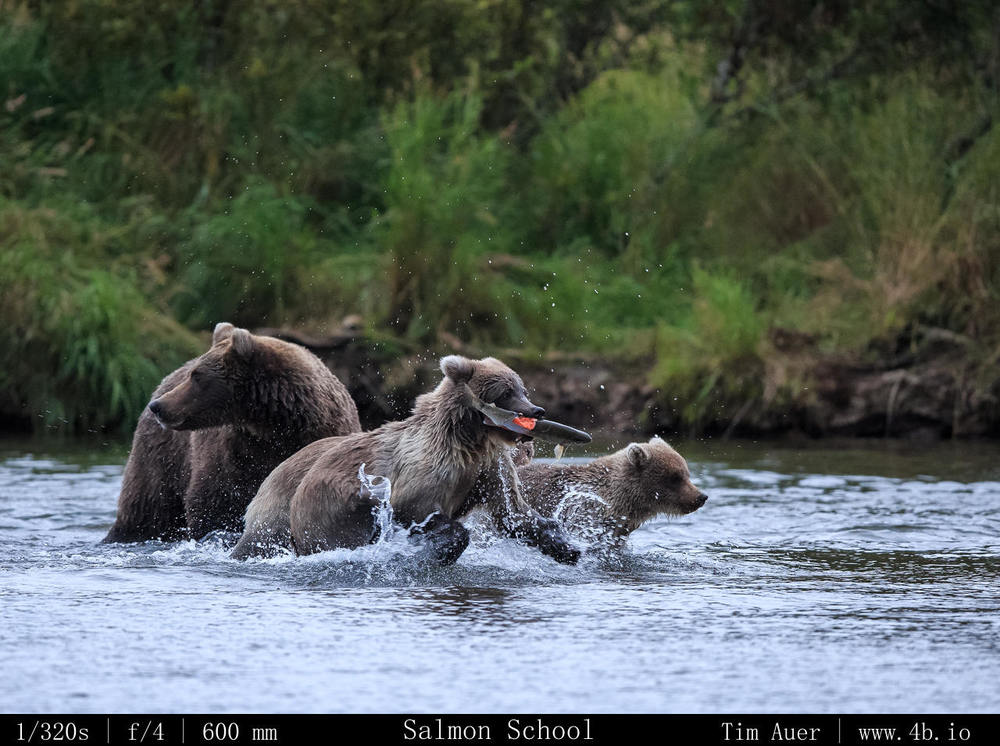
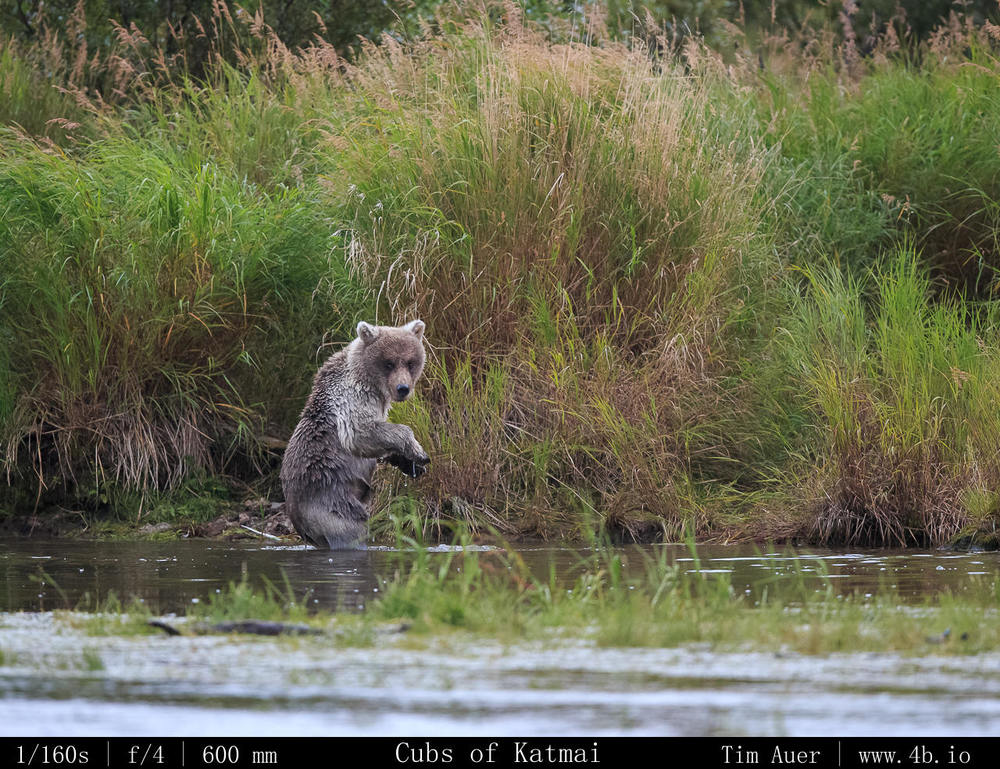
Near the base of the Alaska Peninsula, a national park stretches from the Bristol Bay lowlands across to the Shelikof Strait. Lightly visited and little known outside Alaska, Katmai is larger than Yellowstone and Yosemite — combined.
– John Grabowska, Katmai, 2013. Alaska Peninsula
Katmai is an extraordinary place and I cannot wait for my next trip there
The Brooks Camp area is teeming with the world’s largest land carnivores, the coastal Brown Bear. Who, despite being so large and powerful, are as laid back and relaxed as any bear I met before. Completely different from those nasty interior grizzlies. The bears here are cool. And while a bear of any size can be dangerous, the bears of Katmai tolerate the close proximity of humans and competing bears like nowhere else. Such an abundance of high calorie food does an effective job to transform this ornery beast into a creature with an amiable disposition….
Attack that human? We Katmai bears don’t care!
I am still trying to best figure out how to organize my posts on Katmai. As you can imagine, many photos were taken, and there is a lot to say about preparations, gear reviews, bear anecdotes, and things to do differently next time. Lets start with the experiences from the first day at Brooks Camp and some general observations made about the bears…and move forward from there…
And so to the Alaska Peninsula we come, seeking the limits of the known world at the ends of the Earth…A cloud-cloaked landscape, the Alaska Peninsula is accessible only by air or water.
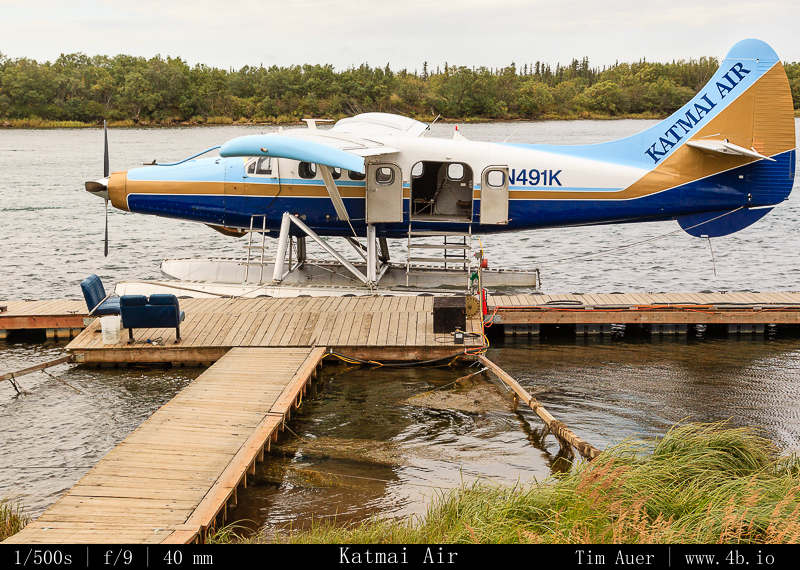
The flight from Anchorage to King Salmon took about 90 minutes on PenAir and once in King Salmon, we took a short bus ride to the Naknek River to office of Katmai Air and their dock+float plane. While at the office, we weighed our bags and learned how much over the 50 lbs limit it was. I was 80 lbs over the limit. Camera gear really starts to add up! Due the small size of the planes and their finite lift, the total load must be measured before taking off. If the load is greater than what the plane can carry, gear is jettisoned and ferried in on later planes. Fortunately I did not have this problem, I paid the $0.60/lb overage charge and was able to get all my gear on my flight. The leg to Brooks Camp is a short one, only taking about 20-25 minutes.
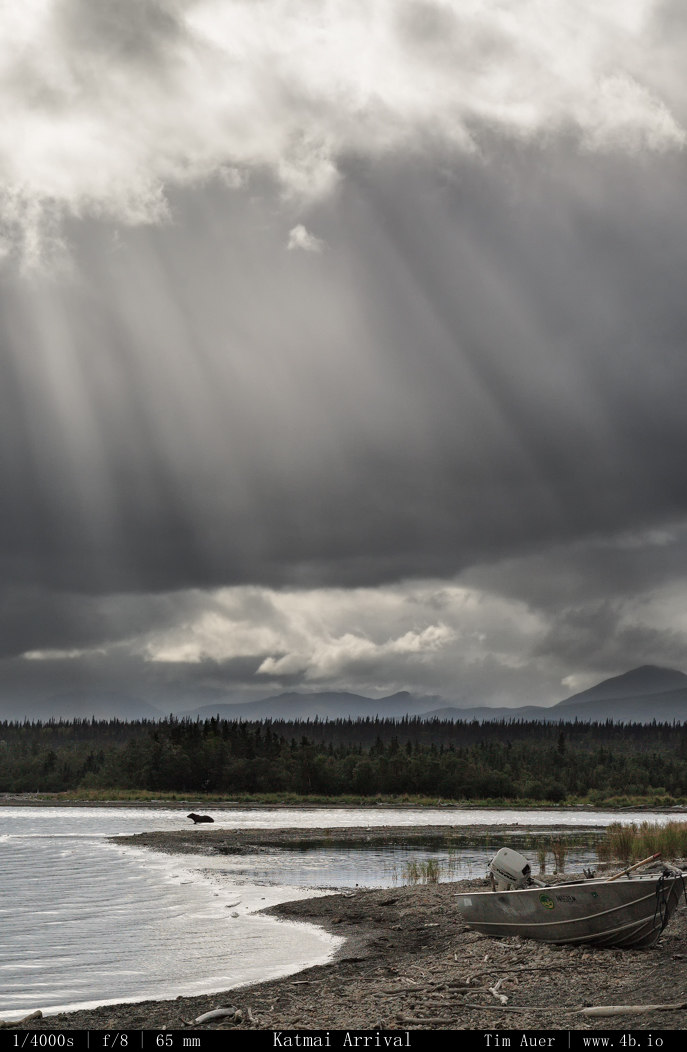
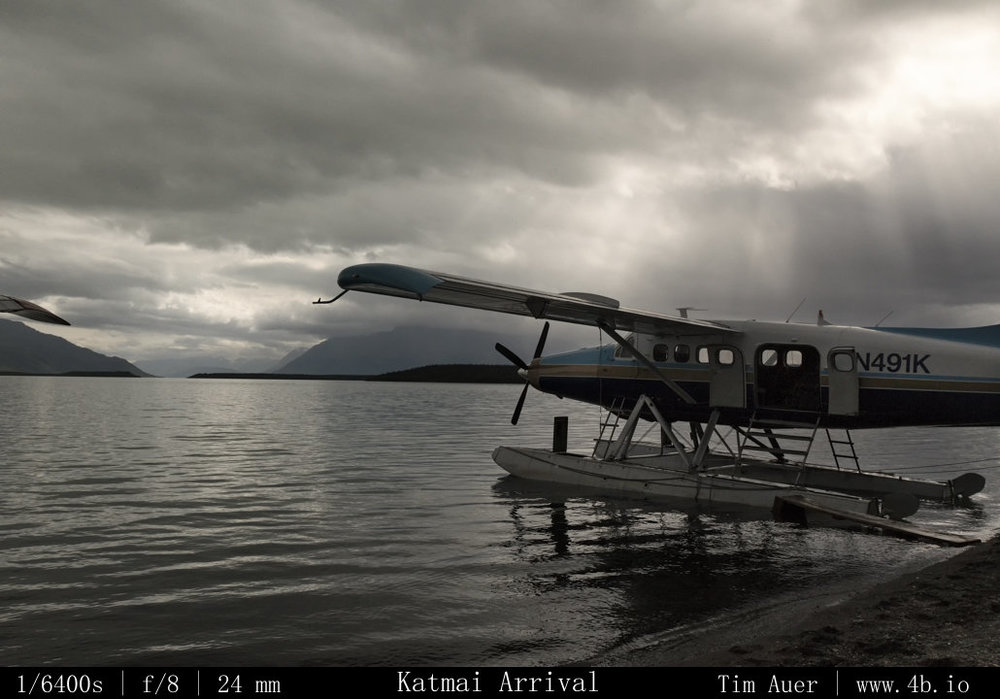
After flying over soggy lowlands, lakes, and along the sides of mountains, we softly touched down in Nahnek Lake a little before 13:00. We had arrived to Brooks Camp. God rays shone down on the mountains in the distance as we disembarked on a wooden plank that lead to us shore. Before reaching the shore, we could already see our first bear, swimming at the mouth of the river. My nightmarish fear of not seeing any bears quickly subsided, the trip was off to a good start. After finishing the 10 minute ranger led safety briefing, we lugged our gear to the campground.
This campground can described as an area of tall grass and trees enclosed by a bear resistant electric fence (not “bear proof”) about 20m from the shore of Naknek Lake. The campground is a bargain, especially when compared to the cost of the lodge. Having a National Parks pass gives a 50% discount too. Three nights of camping cost only $18. With camp set up, we set off towards the river in search of bears…..
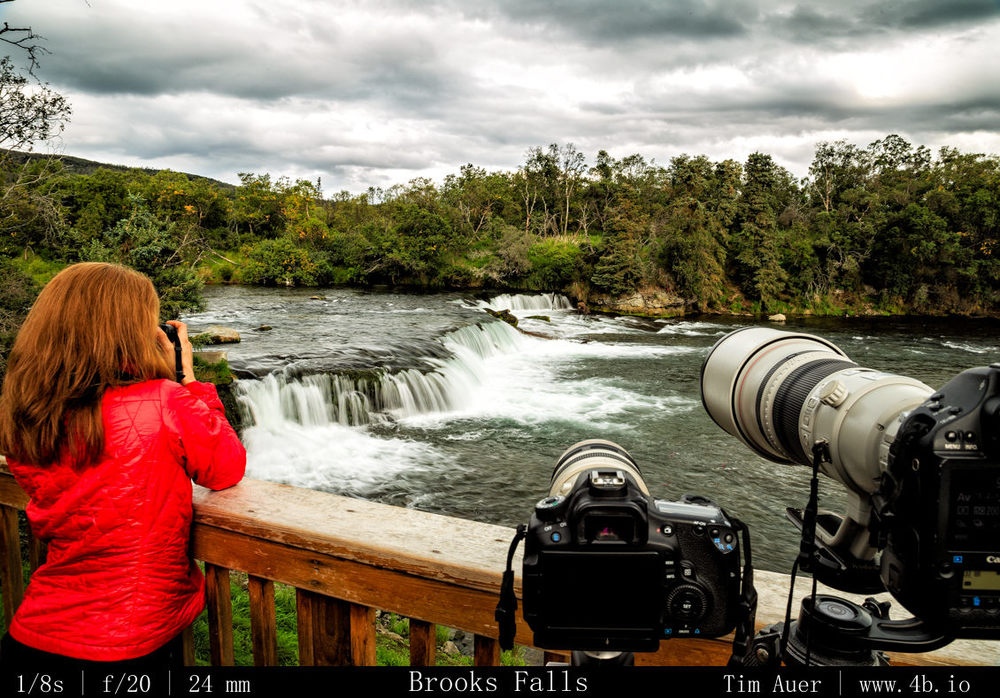
By September the brown bears of Katmai are big, fat, and round. They are only a few weeks away from hibernation and have already put away the bulk of the calories needed to survive the Alaska winter. The salmon here are Sockeye and this location is most famous for the iconic photos of the bears at Brooks Falls catching pre-spawned Salmon mid-leap. It is possible to get these photos at the peak of the salmon run, which is usually sometime in mid-July. It is during this peak that the highest concentration of bears falls is present at the falls. There have been times when over 70 bears (!!) were counted in the river. The peak is considered the best time to visit Brooks. It is also the most crowded and expensive time to visit. The next next best time to visit is early September, when most of the salmon have already spawned and are patiently waiting to die.
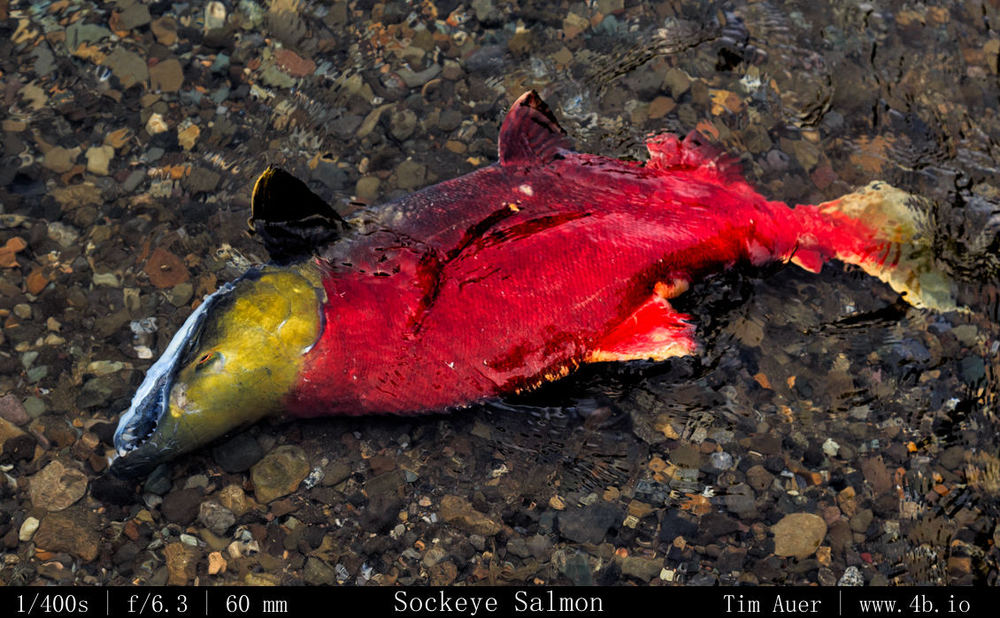
During September bears are more frequently found in at the mouth and at the source of the Brooks River. By this time, the salmon have exhausted almost all of their energy traveling from the ocean to their ancestral spawning grounds. In the process of this journey, the sockeye begin a transformation from a silver colored fish to having the appearance of blood red and distorted sea monster.
One of the interesting aspects of visiting Katmai NP for the first time (and staying multiple days) is that you can visually track your improvement as a wildlife photographer. Within a few hours, you are beginning to recognize the frequently observed bears. First by appearance, whether it is Ted with his hip scar, or Otis of the far pool, with his floppy ear and head scar. After some more time, you begin to differentiate and recognize bears by their fishing techniques and mannerisms. Some snorkel head down scanning the river. Some ambush an unsuspecting salmon by sprinting and pouncing. Some bears exclusively scavenge and others steal. A few bears prefer to sit perfectly still and let the fish come to them, snatching the fish with a quick paw. Otis is known for this, and he would sit perfectly still in the rushing water for minutes. I was even able to take a sharp photo of him in the far pool with a slow shutter speed of 1/20s.
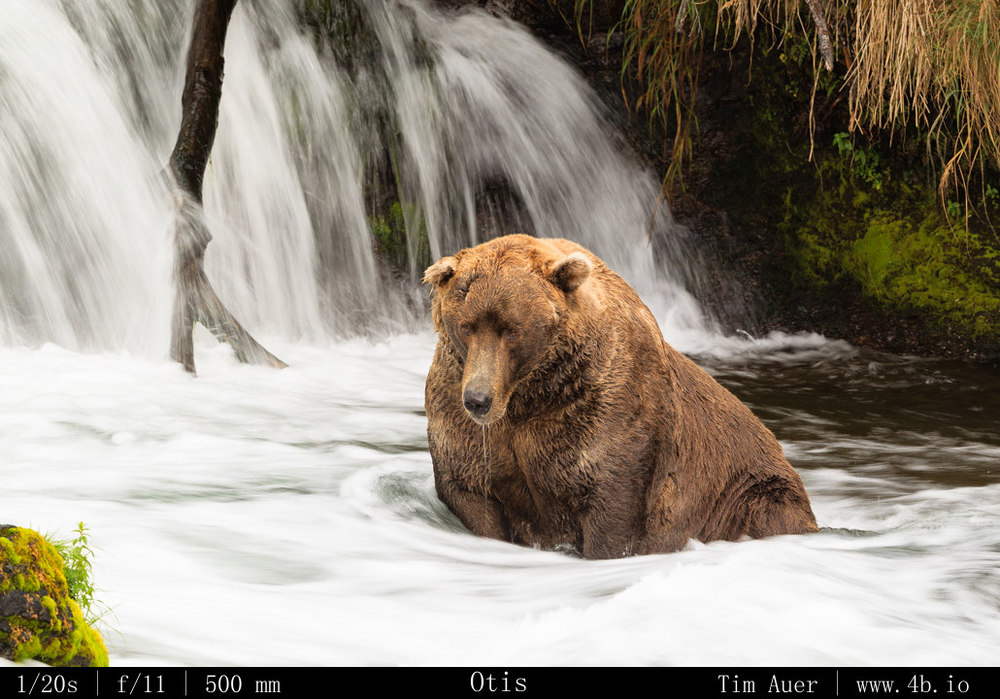
Here is an animation showing Otis devouring a salmon. Notice how he braces the fish on his shin. Click through the image below for the full version of this animation.
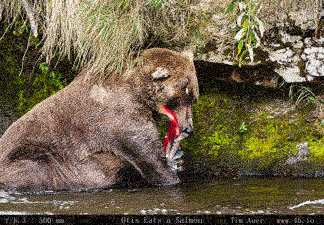
All of these observations are important and key to improving your photography. Once you are able to recognize a bear and associate specific behaviors to it, your ability to anticipate action before it happens is improved. You begin to sense when a bear locks its radar on a fish, and can be ready to click the shutter at just the right moment. Let off the shutter after the initial catch to so buffer can be writen to memory, then burst again when the bear shakes water from its head. It was even possible to recognize the differences in behavior between a failed and successful fishing attempt, before the bear brings the fish up.
I still have much to learn before I can call myself a bear behaviorist expert, but it is amazing how careful observation increases your ability to recognize behaviors, and can drastically improve your photography.
Before leaving for Alaska, I studied as much information as I could to prepare myself. I read the bear documentation and eBooks provided by the NPS, studied maps of the Brooks Camp area and viewed the web cameras. All of these resources proved to be helpful. By reading the NPS Katmai Bear eBook, it was easier to recognize which female bears were more skittish about her cubs and how it is possible to age a bear based on the size of their head in proportion to rest of body or how playful they are. Young, or sub-adult, bears may look large, but their bulk may be excess fur. The size of the head is a good way to gauge their age. The head appears bigger in proportion to the rest of their body on subadults. So if you see a bear whose head accounts for approximately 1/3 of the total length, this is a good indicator the bear is young and still growing into its head. The guide also made it easier to react safely to approaching bears and avoid a dangerous situation. Viewing the web camera gave me an early look into bear behavior and introduced me to the weather patterns and lighting conditions that would likely be encountered.
This preliminary knowledge served a couple useful purposes. One benefit was that it helped to psych myself up for the trip. Another benefit was it gave me some ideas for image compositions. I began to formulate the type of images I would work to capture once on-site. By thinking these images out in advance, I was more in control of my gear and ready to switch from say a stop-action configuration to a panning motion.
